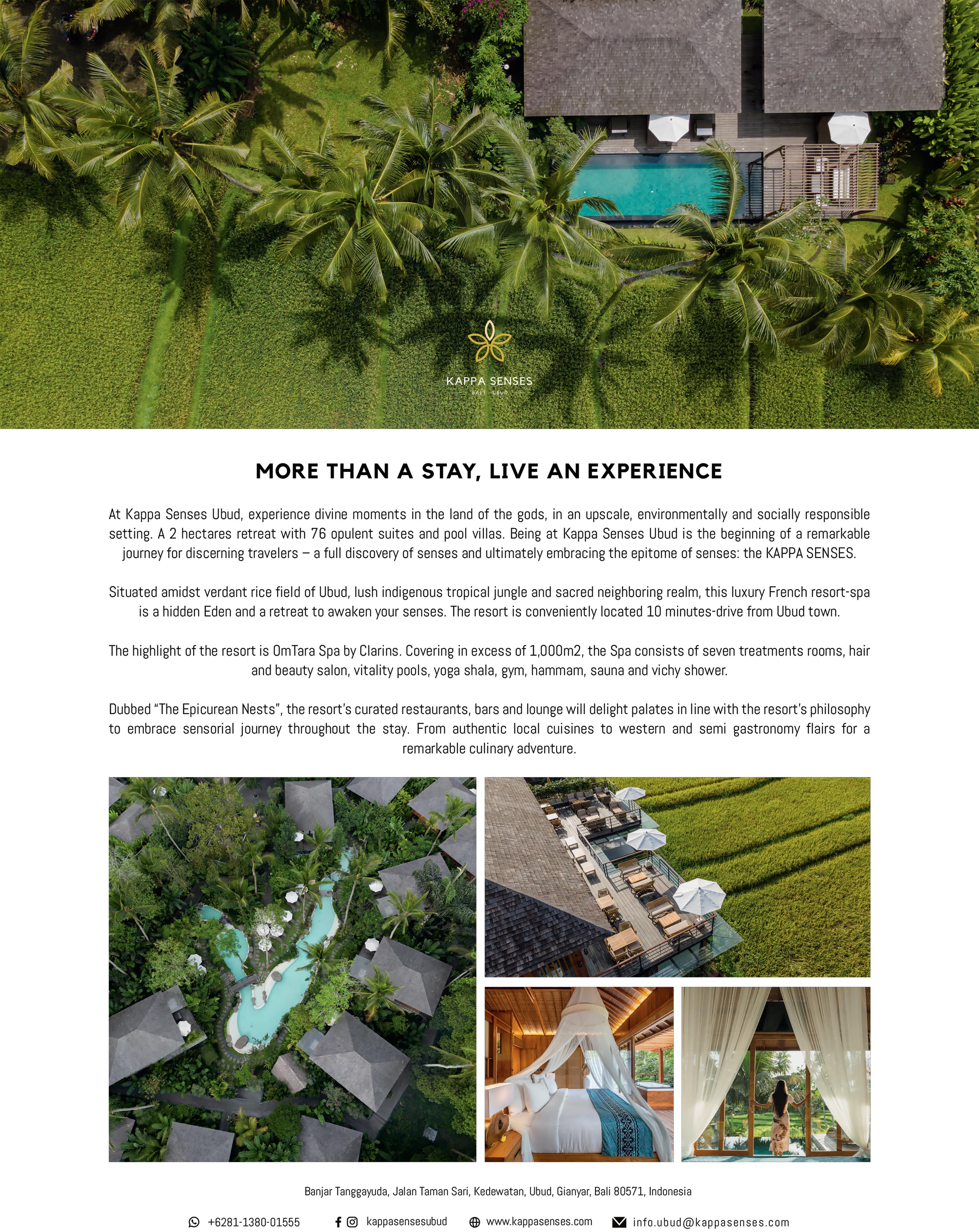
















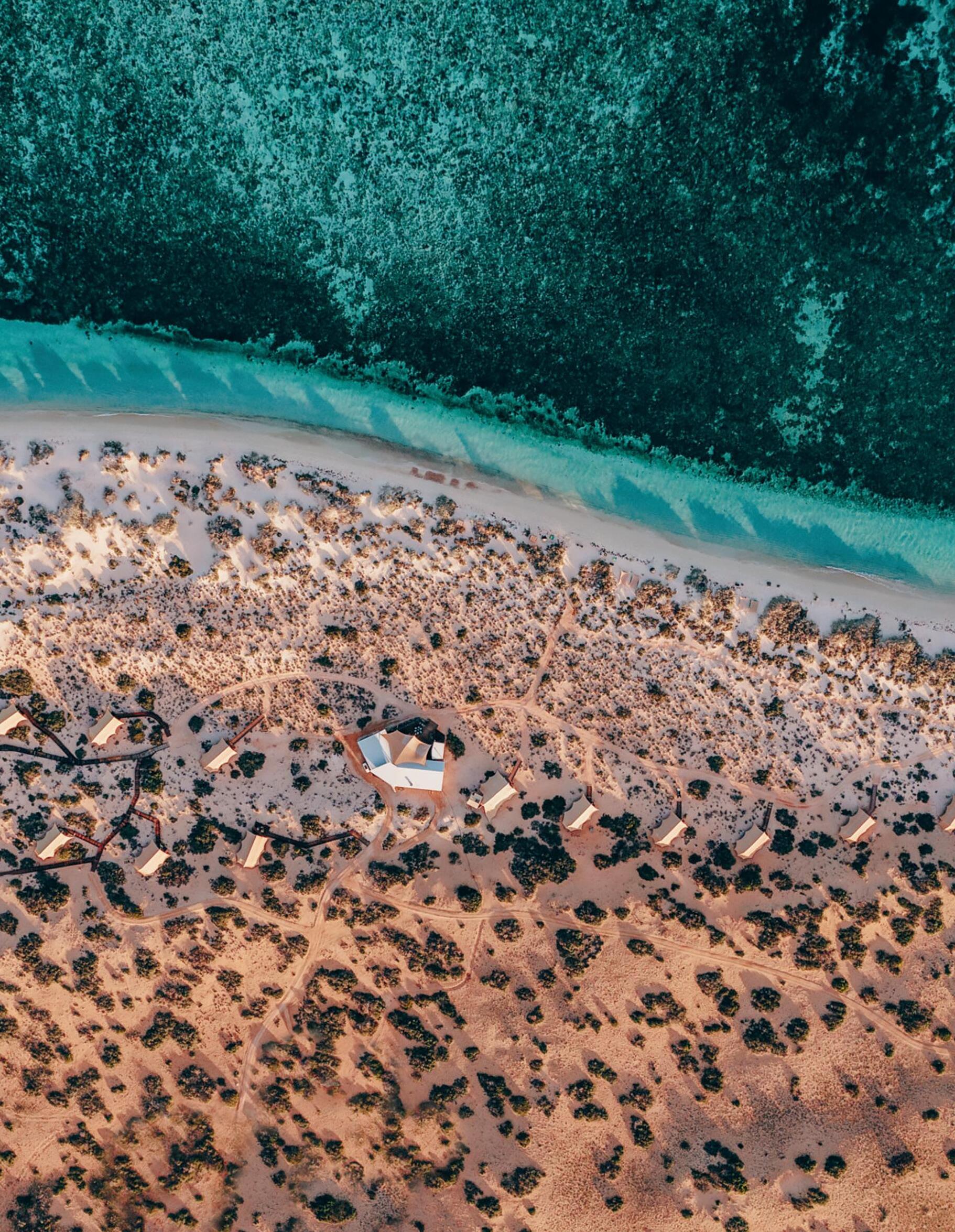

London’s best-kept hotel secret
Raffles at the OWO (Old War Office) celebrates the building’s secret agent history.
Slow your roll in Lombok
This Indonesian island offers a more chilled-out, off-the-grid experience than Bali.
Become part of the new gig economy
Travelling to see artists like Taylor Swift and Billy Joel brings in big dollars for tourism.
When Harry met Cyprus
Harry Connick Jnr is the lead in a new rom com that has the island of Cyprus as its star.
Karst away in Ha Long Bay
We join a brand new luxury yacht cruise in Vietnam that is shaking up the industry.
Like ships passing in the night
A popular day excursion is a great time to stay on board and get a cruise ship all to yourself.
Say bula, to the only guide you will ever need to book the perfect tropical island escape.
Is Oman the world’s most fragrant country?
Frankincense, myrrh and rose petals fill the air on a trip to the Middle East.
Te suite success of Singapore’s hotel boom
The Lion City has seen huge growth in luxury hotels with even more on the way.
Te wellness retreat in a Mexican hacienda
Relax in natural sinkholes and enjoy ancient Mayan rituals on the Yucatan Peninsula.
So fashionable, so convenient, so diferent
SO/ Maldives is playing with the traditional notions of a fly-andflop Maldives holiday.
Head of Content
Penny Cordner-Maas
Creative Lead
Natalie Meneghetti
For all editorial enquiries, contact editorial@luxuryescapes.com
Tourism Boards Partnerships Manager
Jodie Collins Head of Strategic Partnerships
For all advertising enquiries, contact mediasales@luxuryescapes.com
CEO and Co-founder
Adam Schwab
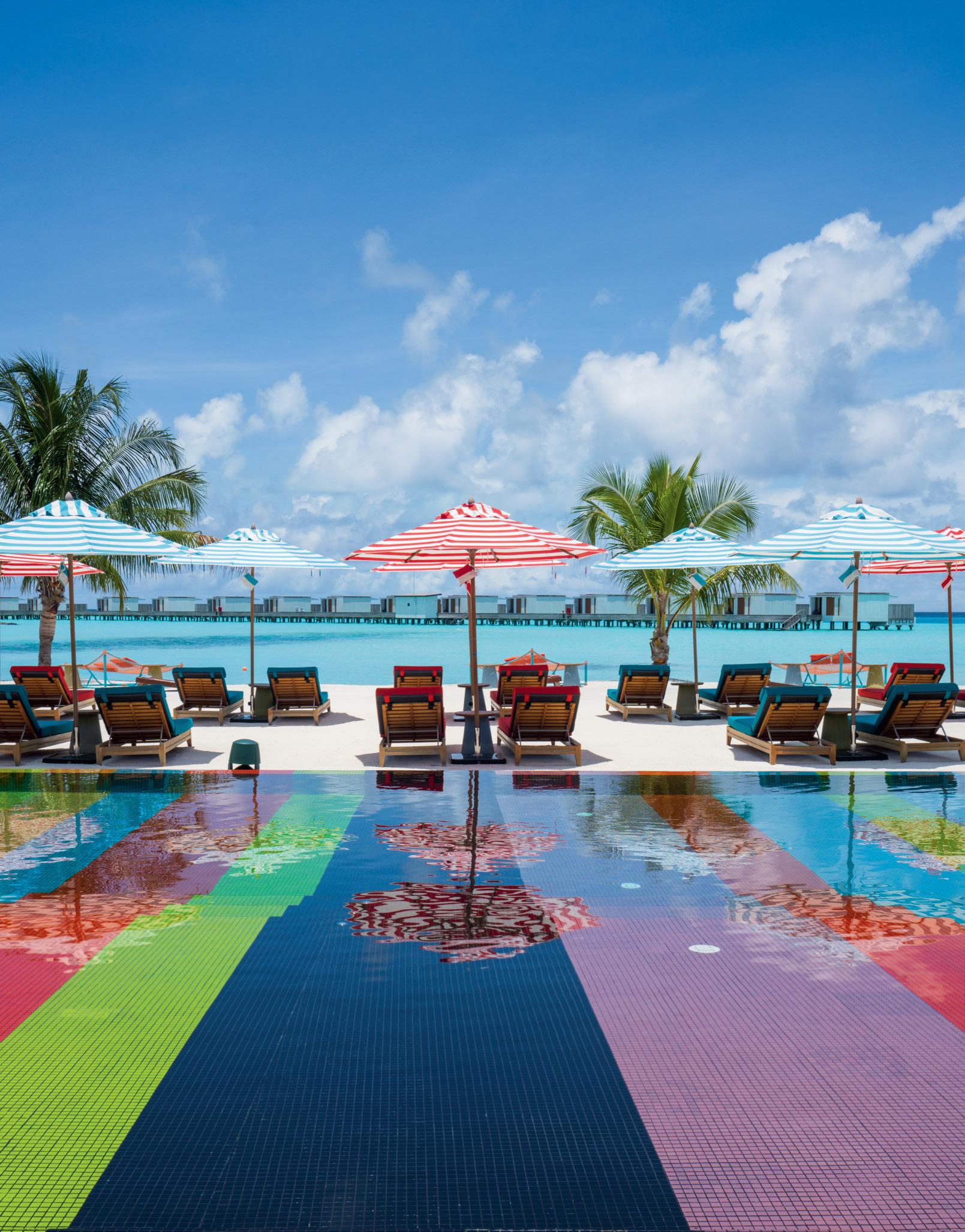
Be inspired by wanderlustworthy destinations, traveller’s tales and the latest travel trends online at Dream by Luxury Escapes.
luxuryescapes.com/inspiration
Family-friendly stays: some of the best resorts in the world that cater for big and little kids.
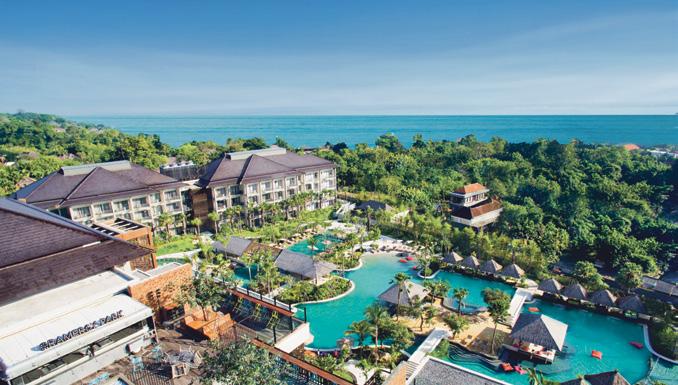
Where, what and when: an insider guide to Phuket, the jewel of the Andaman Sea

Also catch us at:
@luxury.escapes
facebook.com/luxuryescapes
youtube.com/luxuryescapes
@luxury.escapes

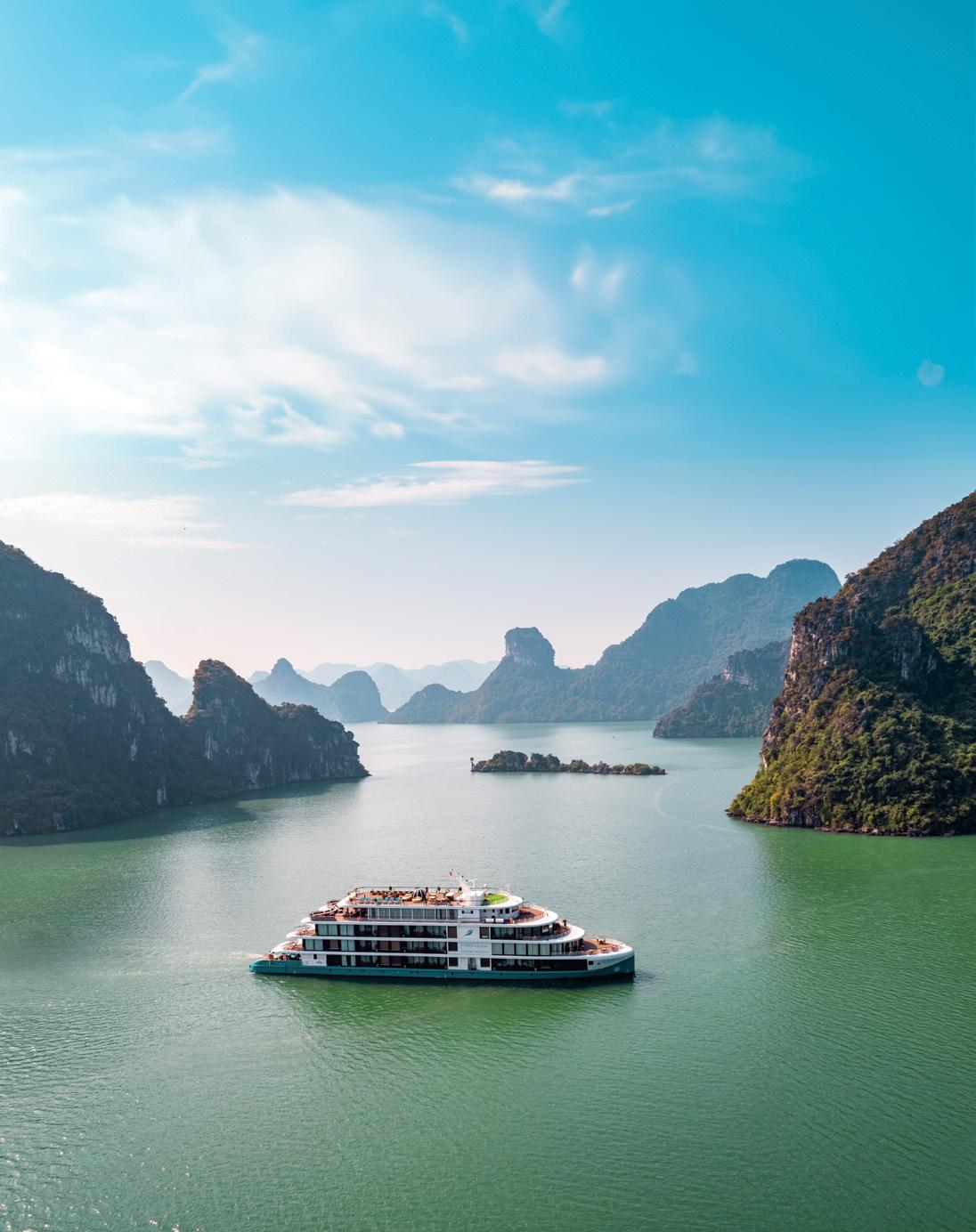
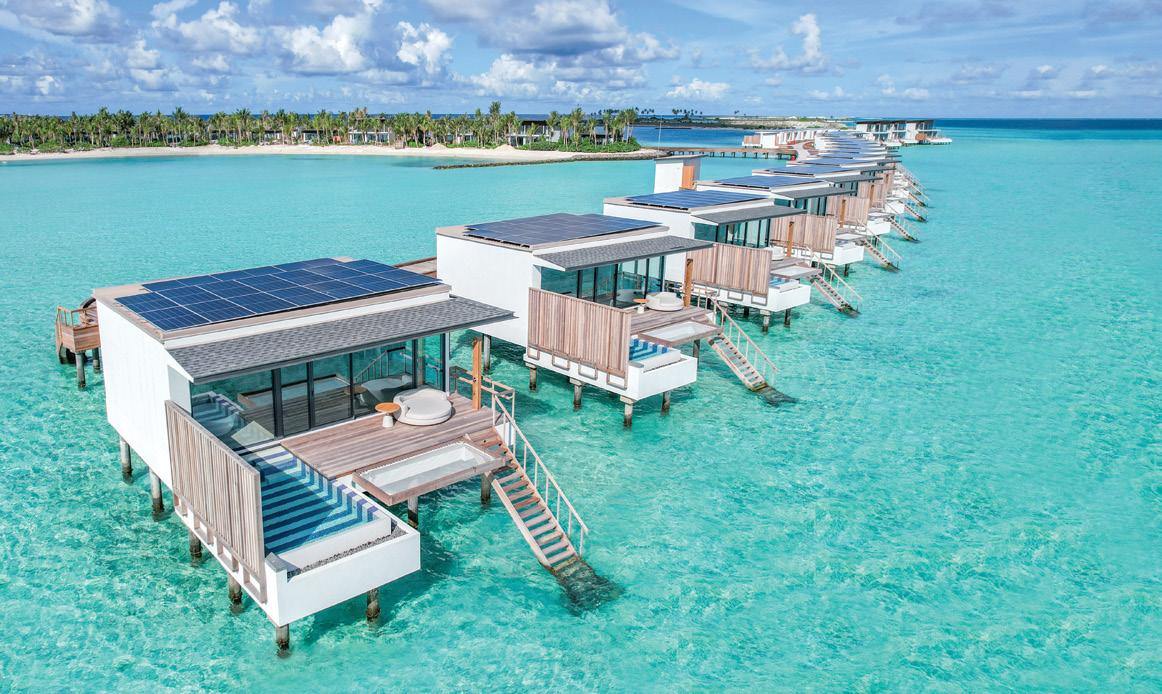
The team at Luxury Escapes has been travelling all over the world of late, shooting the upcoming seventh season of Luxury Escapes: The World’s Best Holidays for Foxtel, Binge and Channel 10.
We sent Jane Hall and Hannah Hollis to Indonesian resorts The Mulia in Bali and Cap Karoso in Sumba; Holly Kingston and Miguel Maestre headed to JOALI in the Maldives; and Holly and Mike Reid set sail aboard Royal Caribbean’s Spectrum of the Seas out of Singapore (see Against the tide, page 58).
Our commercial team has been celebrating the best of Brand USA at the IPW tourism conference in Los Angeles and in Bali we had a huge event. We love Bali here at Luxury Escapes and have a great relationship with resorts all across the Indonesian island; it was a pleasure to host so many important partners at Alila Seminyak with live music, cocktails and great food.
The magazine team has been busy, too, with head of content Penny Cordner-Maas spending a fun-filled weekend at Hayman Island (story in the next issue), managing editor Paul Chai heading over to one of our top-selling resorts in the Maldives (Make it SO/, page 90) and even I got in on the action with a luxury cruise around Ha Long Bay in Vietnam (Karst away, page 46).
We also launched our first-ever travel club, LuxPlus+. LuxPlus+ offers incredible inclusions to its members such as huge member-only additional savings on our best-selling Limited Time Lux Exclusive offers, early access and hidden offers, bonus inclusions for select hotels and priority customer support.
All our jetsetting is about bringing you the best-value holidays and inspiring you to book your next memorable trip. Hopefully we will see you across the aisle on a flight soon.
CEO and Co-founder Luxury Escapes



Melbourne is not short of a rooftop bar but Vibe hotel’s new entry is, ahem, next level.
The bar is not strictly located on the roof and has instead been created by carving out a series of suites and replacing them with a stylish space by architects Paul Kelly Design (Crown) with floor-to-ceiling glass windows overlooking Flinders Street railway, Southbank and the Yarra. The inside-outside design is perfect for the changeable Melbourne weather but the furnishings channel sunny seaside tipples.
Fleet is maritime-themed given its commanding view of the river and the cocktail menu goes heavy on the rum: try the Seafarers’ Hurricane made of gold rum, navy rum, pineapple, orange, lime, and passionfruit or select rums from
Guatemala, Jamaica or Cuba. There is also a martini cart that will be doing the rounds.
Meanwhile, over in Footscray, patrons run the risk of being flung sky high at Moon Dog Wild West, which has a mechanical bull as its centrepiece. The new bar from the craft brewer is themed around the American west and can fit 800 drinkers over three floors including a rooftop cactus garden.
The bar is home to the Western Bull Riders Club so you can take a seat in an upstairs booth and look down on the cowboy chaos, and there are live bands in the chicken-wire-covered stage that gives strong Blues Brothers vibes.


NGV winter blockbuster exhibition focuses on the lives of Egyptian pharaohs.
Over 300 years of ancient Egyptian culture is displayed in the NGV International in Melbourne at Pharoah, the blockbuster from the British Museum.
The exhibition sees more than 500 works take over the entire ground floor of the NGV and is divided into seven thematic sections. Pharoah provides a unique insight into the craftspeople responsible for creating the exquisite pieces of sculpture and architecture, plus an incredible 180 pieces of ancient Egyptian jewellery. It explores the realities, mythologies and iconographies of kingship in ancient Egypt.

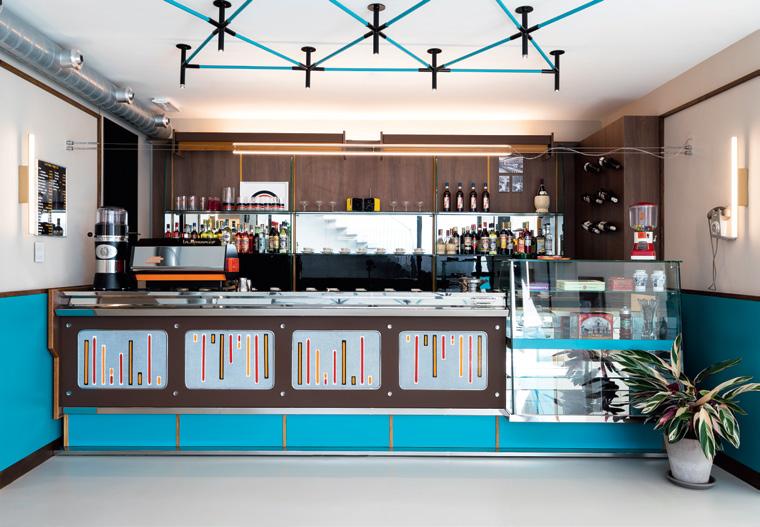
Visitors to Italy can explore Florence’s cofee culture with a new experience from La Marzocco, the machine maker
Located in the historic La Marzocco factory in Florence, the Accademia del Caffee Espresso features interactive displays, programs and ongoing sustainability research projects.
“A must for coffee-loving travellers visiting Italy is a detour to visit our new Accademia del Caffè Espresso,” says Barry Moore, managing director, La Marzocco Australia. “Accademia truly is a totally unique coffee experience that will captivate and inspire.”
Golden Eagle Luxury Trains launches new route from Paris to Istanbul.
The newest route from Golden Eagle Luxury Trains, aboard the Golden Eagle Danube Express, takes you to the UNESCOlisted Semmering Pass, a masterpiece of engineering and the mysterious Postojna Caves – as well as a signature collection of excursions like a private classical music concert by the Vienna Supreme Orchestra.
The luxury ensuite cabins have a personal cabin attendant for each guest and all gourmet meals, drinks, guided excursions, porterage and gratuities are included in fares.
This exceptional new journey will operate in both directions from May 2025. Packages feature one night in a five-star hotel in both Paris and Istanbul, with five nights onboard the Golden Eagle Danube Express. The tour visits Paris, Champagne, Vienna, Postojna, Belgrade, Sofia and Istanbul.

Embark on a journey to paradise unlike any other, where the azure waters of the Coral Sea meet the pristine white sands of Hayman Island.
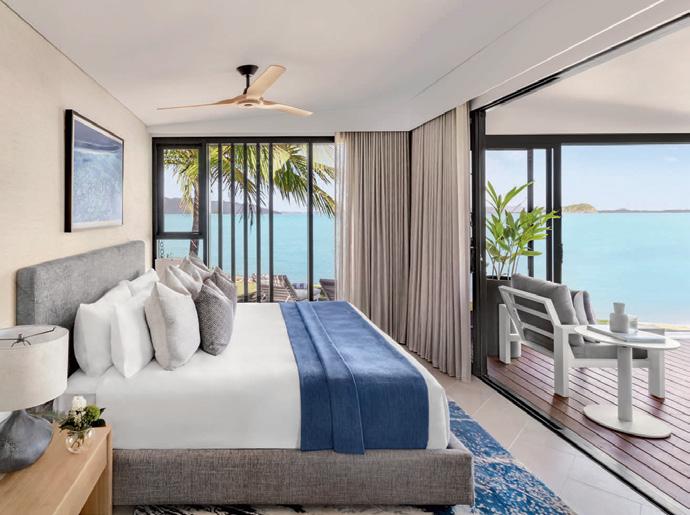
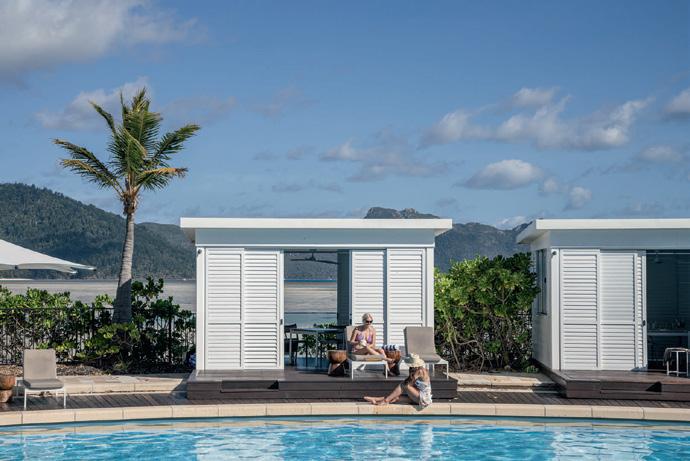

Nestled in the heart of the Great Barrier Reef, InterContinental Hayman Island Resort beckons travellers seeking an unparalleled blend of luxury and natural wonder. Every moment is a celebration of luxury and adventure. Visit haymanisland.intercontinental.com
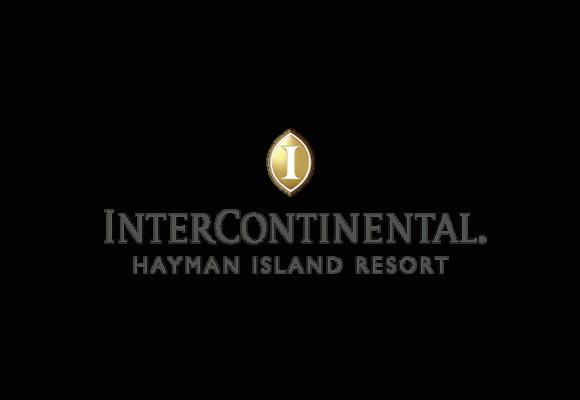
Performance is the name of the game, from an in-house nutrition team to an athlete-worthy ftness program.
Reps and recovery: a new take on R&R at Siro One Za’abeel, Dubai’s first fitness hotel. Here, expect temperature-controlled mattresses and recovery cabinets (SIRO yoga mat, resistance bands and more) in rooms, as well as private workout areas and treatment spaces in the SIRO suites. Heart rates are elevated at The Fitness Lab, an entire floor with state-of-the-art equipment and studios for yoga, cycling, Pilates and circuit training classes. Then, treat your body like a temple in the Recovery Lab, moving between its sauna, steam rooms and therapies, such as cold plunge and dry needling. Custom meal plans are available for guests, plus there is Aelia, for light French-inspired meals, and Refuel Bar for snacks and shakes.
One of the world’s most exclusive hotel brands opens its second property in India.
India’s Pink City welcomes Raffles Jaipur, set to be one of the most exclusive stays in the Golden Triangle. There are just 50 suites and rooms to this white marble palace, bedecked with mosaic flooring, gold panels and handpainted ceilings. A North Indian restaurant, Writers Bar with library, Atrium tea lounge and rooftop infinity pool round out the offerings, along with Raffles’ revered butler service.
It’s little by name, but not by nature at the newly minted sister act of a beloved Phuket resort
Located on the Khao Lak beachfront, The Little Shore Khao Lak by Katathani is an all-suite or villa stay, offering either ocean or private pool views. The Two-Bedroom or Penthouse Family Pool Suites are ideal for larger groups; the latter with a third bedroom with bunk beds. The headlining hospitality act is The Kati Restaurant, an all-day diner that goes from breakfast buffet to light plates and main meal fare in the evening. Elsewhere, Param Para Restaurant dishes up local cuisine inspired by Thai mythology, and Koko’s Pool Bar is a go-to for tipples in between laps. Guests of Little Shore also enjoy unrestricted access to the facilities at sister resort, The Sands.
Soak up the culture and seasonal sakuras from this elegant city sanctuary.
The first Six Senses hotel to open in Japan, this downtown den in the historic Higashiyama district offers 81 rooms and suites cloistered around a central courtyard, with views of Toyokuni Shrine gardens or the city skyline. Strive for ultimate Zen at the spa; take up bespoke wellness or sleep programs and blend your own beauty scrubs at the Alchemy Bar.
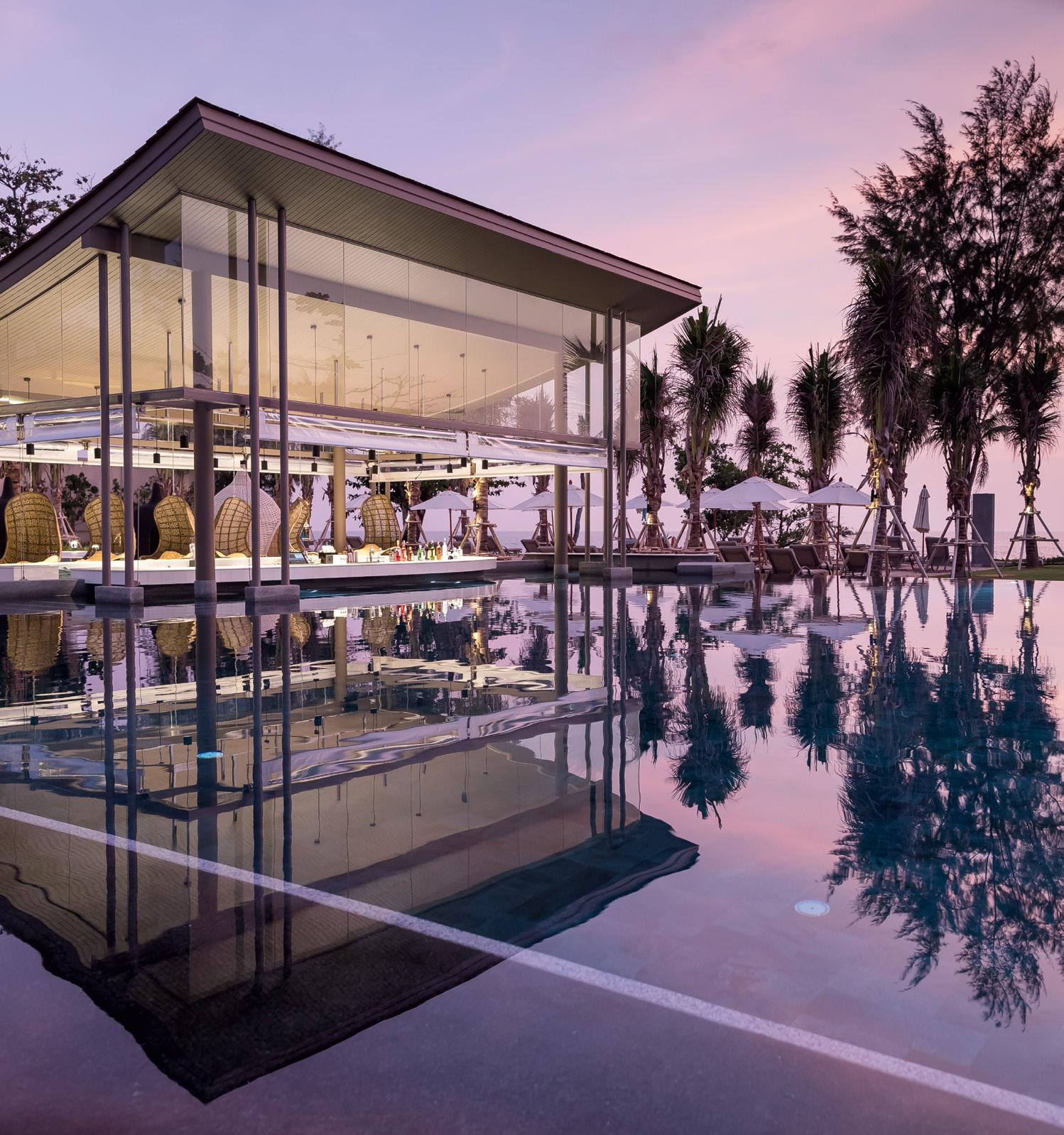
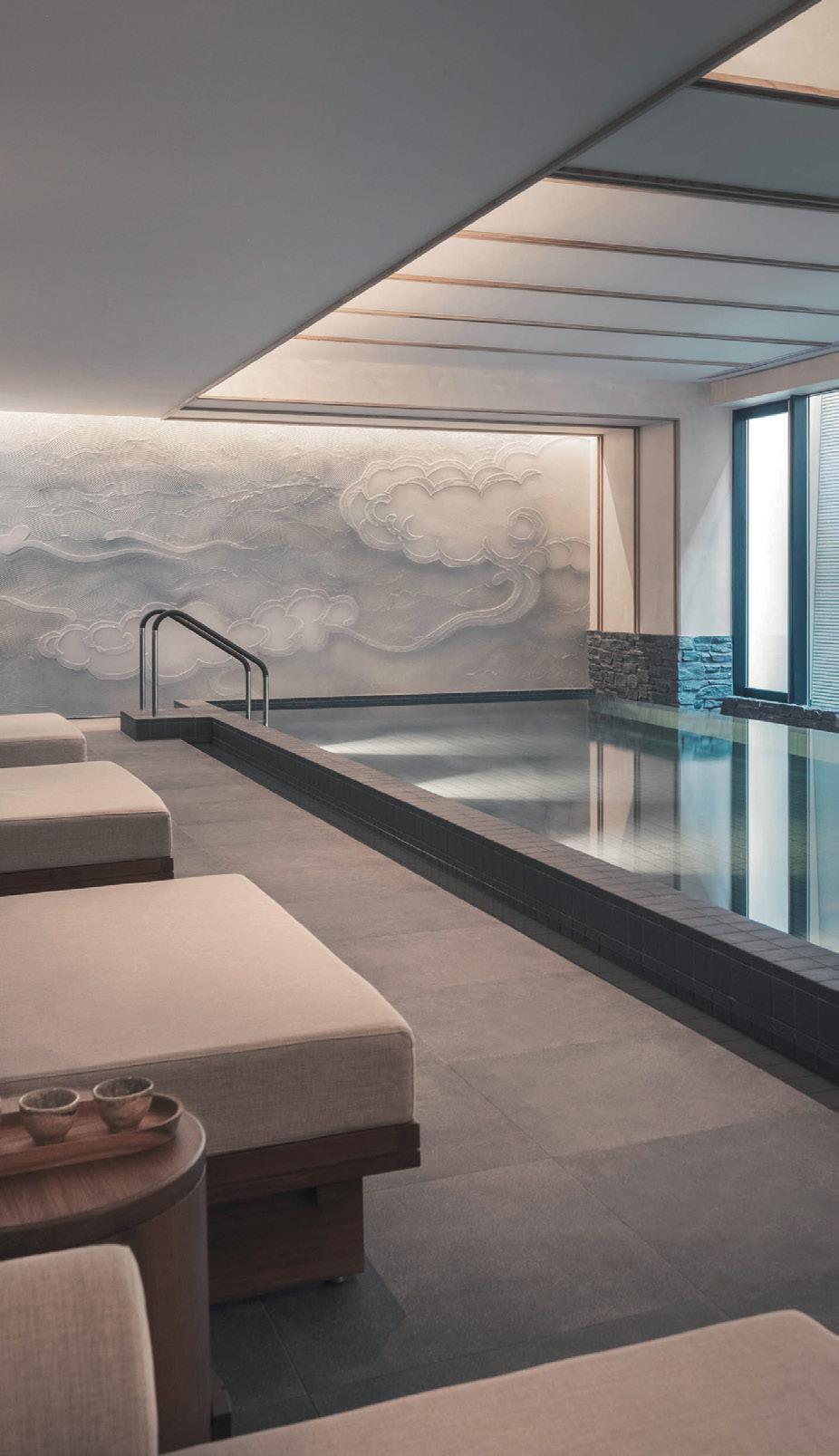


INTERCONTINENTAL CRETE

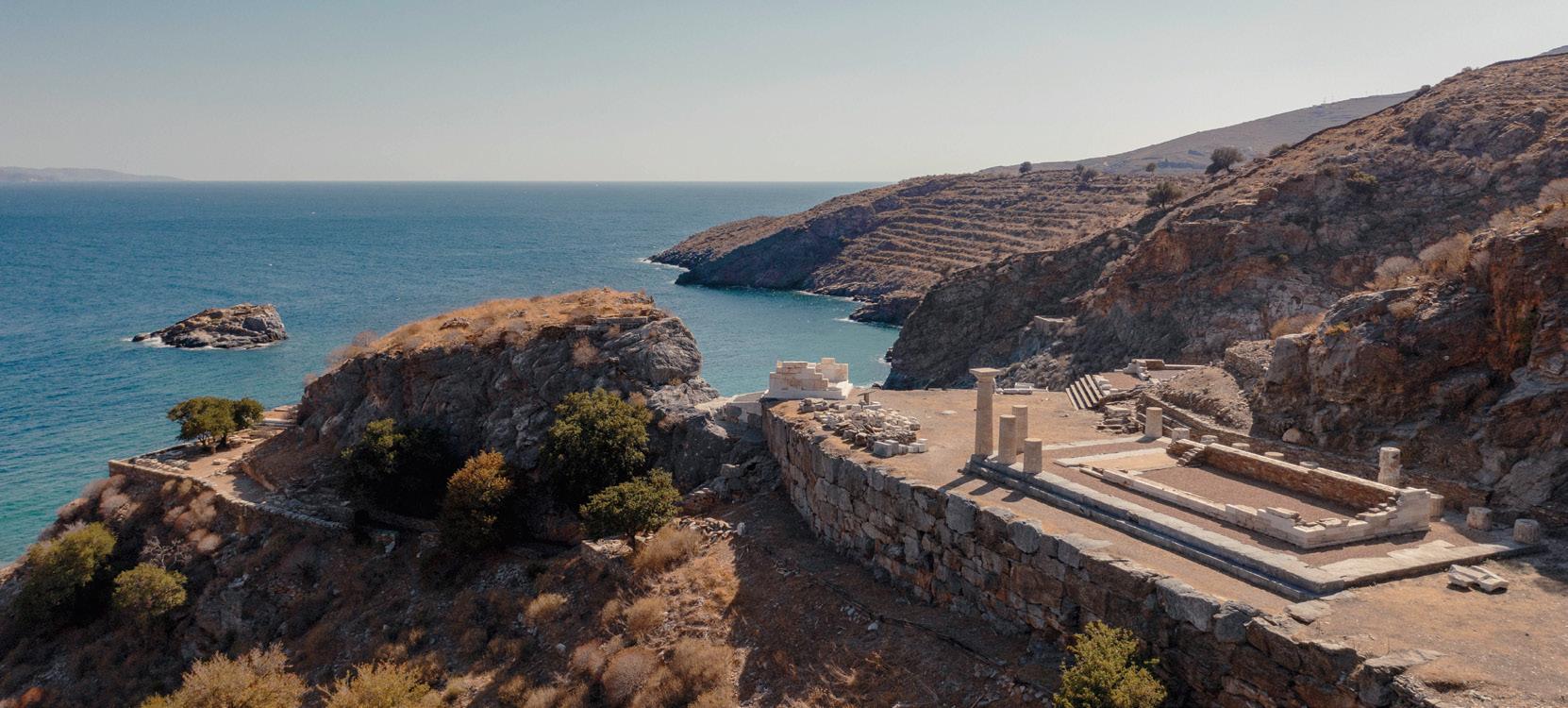
A centrally located addition in Australia’s spiritual home of bohemian cool.
There are only 32 rooms to Basq House, a tucked-away stay just a few minutes’ walk from the heart of Byron Bay village.
An indoor-outdoor aesthetic flows from a well-stocked library and reception doubling as a lounge, to an outdoor temperaturecontrolled magnesium swimming pool fringed by shaded cabanas. A shared rooftop space will host wellness sessions.
Queensland’s capital welcomes a fve-star stay to the city’s riverfront precinct.
Set to open on the Queen’s Wharf riverfront, The Star Brisbane is a gleaming new addition to the city. Two crescent-shaped towers will house 340 rooms, including four skyline penthouses, as well as a Sky Deck – a viewing deck 100 metres high and home to three dining venues – and a Leisure Deck, with three swimming pools.
Located on the northeast coast of Crete, in Agios Nikolaos and overlooking the Gulf of Mirabello, InterContinental Crete pairs its stunning seafront address with infinity pools, sun-bathed terraces and 205 rooms with private verandas (some with Jacuzzis too). An exposed rock face and water-filled skylight dominate the entrance lobby, lounge and reception – an ode to the elements of the island.
Once a destination favoured by Athens’ glitterati, Kéa welcomes a new wellheeled crowd at One&Only Kéa Island. Arrive by helicopter or speedboat to 65 acres of beachfront, checking in to standalone one- or two-bedroom villas built into the coastal cliffside. Atria restaurant is the dining flagship, Bond Beach Club promises lazy days and starlit evenings on the sand, and four bars are there for tipples, sundowners and night caps.
Terracotta marvel meets sleek spa resort at Domes Novos Santorini, Autograph Collection. There are views of the Aegean Sea from all 50 suites and two villas; each has its own pool and terrace to take full advantage of Santorini’s famed sunsets. A rooftop restaurant, Vatanee, cooks up Greek gastronomy, while the Soma Spa beckons with a treatment menu inspired by the resort’s volcanic surrounds.


It’s the Venice of the East versus, well, Venice. Both beguiling cities have drawn curious travellers for centuries with a mix of canals, culture and colour but while they have much in common the cities also stand on their own merit.
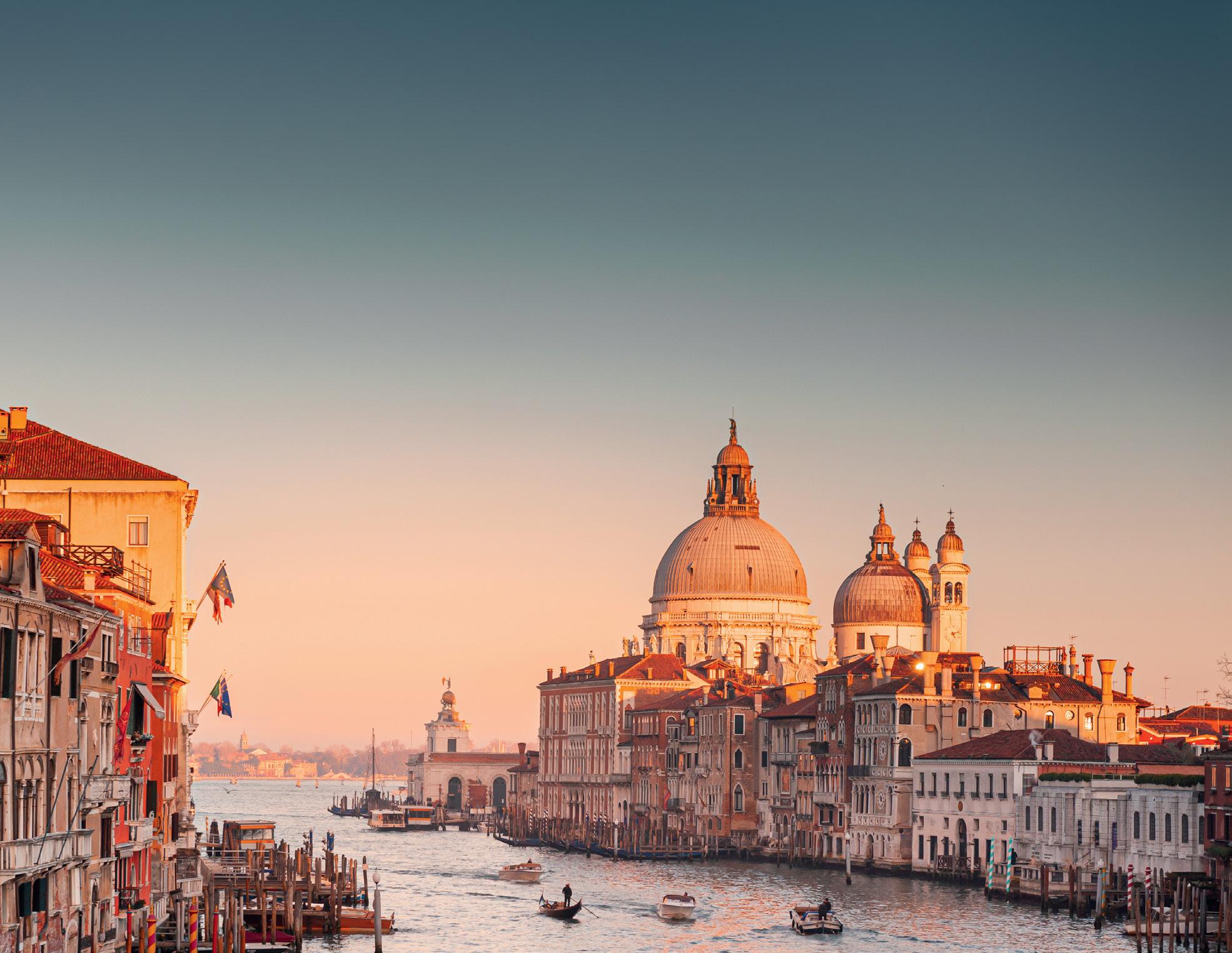
For all its pomp and preening, Venice is a city with incredible nerve, building its sprawl of marble palazzos and cathedrals upon mud banks, and cramming its canals and calli (alleyways) with musicians, sculptors and crooning gondoliers. More than its surface-level style and stereotypes though, a step away from Venice’s iconic sites rewards with experiences to please even the most discerning Doge.

Ready to book?
The private palazzo turned museum of Peggy Guggenheim, the prolific patron behind the likes of Jackson Pollock, is a peek into her eccentric life and dazzling collection. Having retained much of its homey feel, the building hosts a permanent collection spread across a series of smaller rooms, with a separate wing for seasonal exhibits. Much like the rest of Venice, the museum is at its busiest on weekends so visit during the week to have the Picassos, Dalis and Warhols to yourself.
San Clemente Palace Kempinksi
Putting the “treat” in “retreat” is San Clemente Palace Kempinksi Venice, a five-star stay in the bones of a 900-year-old landmark and located on a private island. Restored monastic buildings house 196 rooms and suites, and 15 acres of garden promise a heated outdoor pool, tennis court and jogging paths. There are views of Piazza San Marco and Venice’s main lagoon to ensure guests never feel too far away from the action, and a complimentary boat service ferries guests into the city’s historic heart.
In a city where giro d’ombre (literal translation, “wine strolls”) are a common occurrence, there is a bar on almost every corner. For one night, swap your ombra –a small, walkable glass of wine – for shaken and stirred sips at Skyline Rooftop Bar, located at Hilton Molino Stucky. Toast with signature cocktails, including a zero-waste vegan number, and Italian aperitifs with the kind of Grand Canal views that only Venice’s highest rooftop bar can deliver.
Best known for its Jewish Quarter and its starring role in Shakespeare’s The Merchant of Venice, Cannaregio is quiet. Museo Ebraico di Venezia is worth a stop to learn about the area’s Jewish history, and there are excellent views of the Grand Canal from the balconies of Galleria Giorgio Franchetti alla Ca’ d’Oro. For nightlife, try an evening wander along Fondamenta Dei Ormesini.
Scartosso de pesse frito is one of Venice’s oldest street snacks, around since the 1600s, and its popularity endures. Paper cones are filled with lightly fried seafood, sometimes served with battered veggies or a slice of polenta, and enjoyed on the go. Frito Inn does one of the best scartosso in the city, serving up your choice of prawns, mixed fish or squid, from its hole-in-the-wall shopfront in Cannaregio. Elsewhere in San Polo, Acqua e Mais offers more variations, including sardines, cod and cuttlefish.
Bangkok is a cultural collision of a city; where old world meets new age in a riotous display of street food and skyscrapers, mega malls and monasteries. It’s this dichotomy that makes Tailand’s City of Angels such a charmer, with its larger-than-life personality promising experiences to gobble down more greedily than that frst plate of pad Tai.
Talat Noi is a warren of historic houses, street-art strewn alleyways, hidden cafes and Hokkien-style architecture. Traditional medicine shops sit alongside second-hand car warehouses (the metal parts often spilling out onto the sidewalk), and a rusty Fiat 500 – dubbed the “antique turtle car” – is one of the neighbourhood’s most photographed sites. Talat Noi is easily explored on foot and its convenient proximity to Chinatown makes it the perfect place for a wander before hitting up the evening street food stalls of Yaowarat Road.
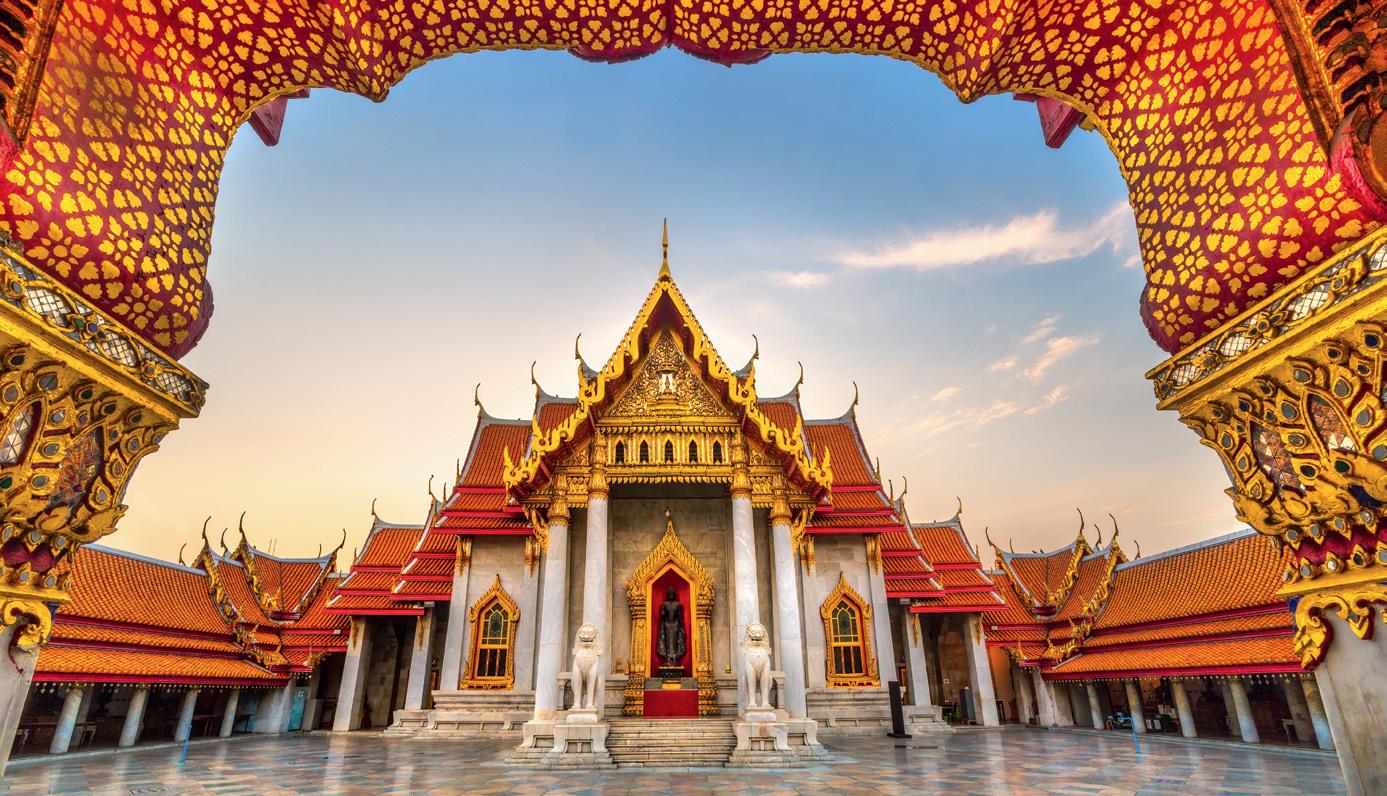
Jay Fai’s crab dish may be the most famous omelette in Bangkok, but the oyster offering at Nai Mong Hoi Thod in Chinatown is a hot second. This inconspicuous-looking shopfront has been reeling in crowds for more than 30 years – even more so following its Michelin Bib Gourmand nod. Yes, the queue can be long, but it also moves quickly; plump oysters are added to a rich, thick batter made of eggs and rice flour and served in two variations – one with crisp-fried edges and the other soft and silky. Oysters can be swapped for mussels if you like.

ThreeSixty, at the Millenium Hilton Bangkok, is a lowkey setting for sundowners. Arrive early for a prime perch by the rail to watch the sunset over Chao Praya River. Follow the set of stairs at the back of the terrace, up to the hotel’s helipad – Wat Arun can be seen on the horizon.
Discover how an American entrepreneur came to be called the “Thai silk king” at Jim Thompson House, the former home of the eponymous businessman who had a hand in revivifying Thailand’s silk industry during the 1950s. The jungle-like grounds also house a museum that preserves Thompson’s legacy, displaying his collection of Southeast Asian art.
Capella Bangkok’s 101 suites and villas face the Chao Phraya River. A lounge by the main pool is a coveted perch to watch barges float by, and the Michelin-starred Côte by Mauro Colagreco presents a menu inspired by the French and Italian Rivieras. Whims and fancies are catered for by the Capella Culturalists, the hotel’s butlercome-concierge service.
Te bartender’s handshake is the traditional greeting between hospitality workers: it might take the form of a signature cocktail or a single shot. We shake hands with Gabriel Da Rocha, bar manager at the sophisticated Salamanca speakeasy, Mary Mary.
Housed within the showstopping boutique luxury hotel The Tasman – the first of Marriot’s prestigious Luxury Collection to land in Australia – and inhabiting the sandstone remains of Hobart’s historic St. Mary’s Hospital, Mary Mary leverages time and place to help craft one of the city’s finest bar experiences.
“One of the things that makes Mary Mary special is our commitment to quality ingredients,” says Gabriel. “It needed to be more than just a bar. It’s a space to express our passion – for exceptional bartending, genuine hospitality and inventive cocktails made with local ingredients.
Every drink has been carefully designed to tell a story.”
When asked for a favourite cocktail, Gabriel doesn’t hesitate. The True Local is a house riff on the boulevardier, itself a bourbon-centric take on the classic negroni.
“This cocktail is a long-time favourite of mine,” he says. “It perfectly showcases Tasmanian produce and tells the story of the first-ever apple tree in Australia.” Seven trees were planted on Bruny Island in 1788; eventually the “Apple Isle” would become renowned for the quality of its orchards. “It nicely balances sweetness, tart cherry notes and rich apple flavours.”

35ml Willie Smith’s Apple Brandy –Classic
15ml Mary Mary x Punch and Ladle’s Signature Cherry Vermouth
10ml Willie Smith’s Pommeau Apple Liqueur
15ml Our Mates’ Farm Apple Juice
Garnish: an orange twist

1. Chill a double rocks glass in the freezer. Measure ingredients into a mixing glass.
2. Fill with ice and stir quickly for 15-20 seconds but be careful not to over-stir. Taste for balance.
3. Express orange oil over drink, garnish and serve.
Buried seventeen metres beneath Hobart’s scandalous Museum of Old and New Art, this pared-back establishment is all lush velvet and signature cool. “Go for the stunning art gallery above,” says Gabriel. “Stay for the expertly crafted artistinspired cocktail list below.”
Cocktails, rum and fried chicken: local favourite Rude Boy has cracked the formula for guaranteed good times. “It’s the perfect place to grab a rum old fashioned with a good friend.”
Another preacher of Tasmania’s home-grown greatness, The Den spellbinds with a cosy atmosphere and superb live music acts. “They age their old fashioned in a smoked pinot noir cask from local maker Meadowbank Wines,” says Gabriel. “It’s something very special.”
Located in historic Salamanca Place, Hobart’s “OG” cocktail bar proudly offers more than 500 local spirits, and is now a regular in Australia’s bar awards. “It’s my go-to for classic cocktails.”
“It’s an institution.” One of the city’s great old pubs, The Winston entices thirsty locals with an expansive craft beer selection and a laidback American-style dining menu.








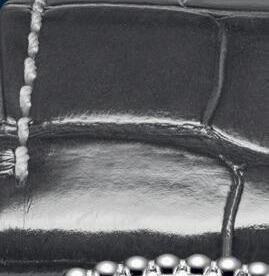





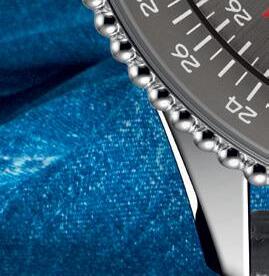





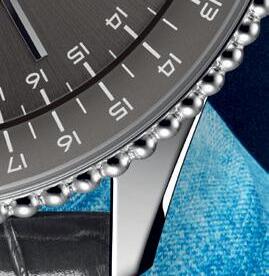



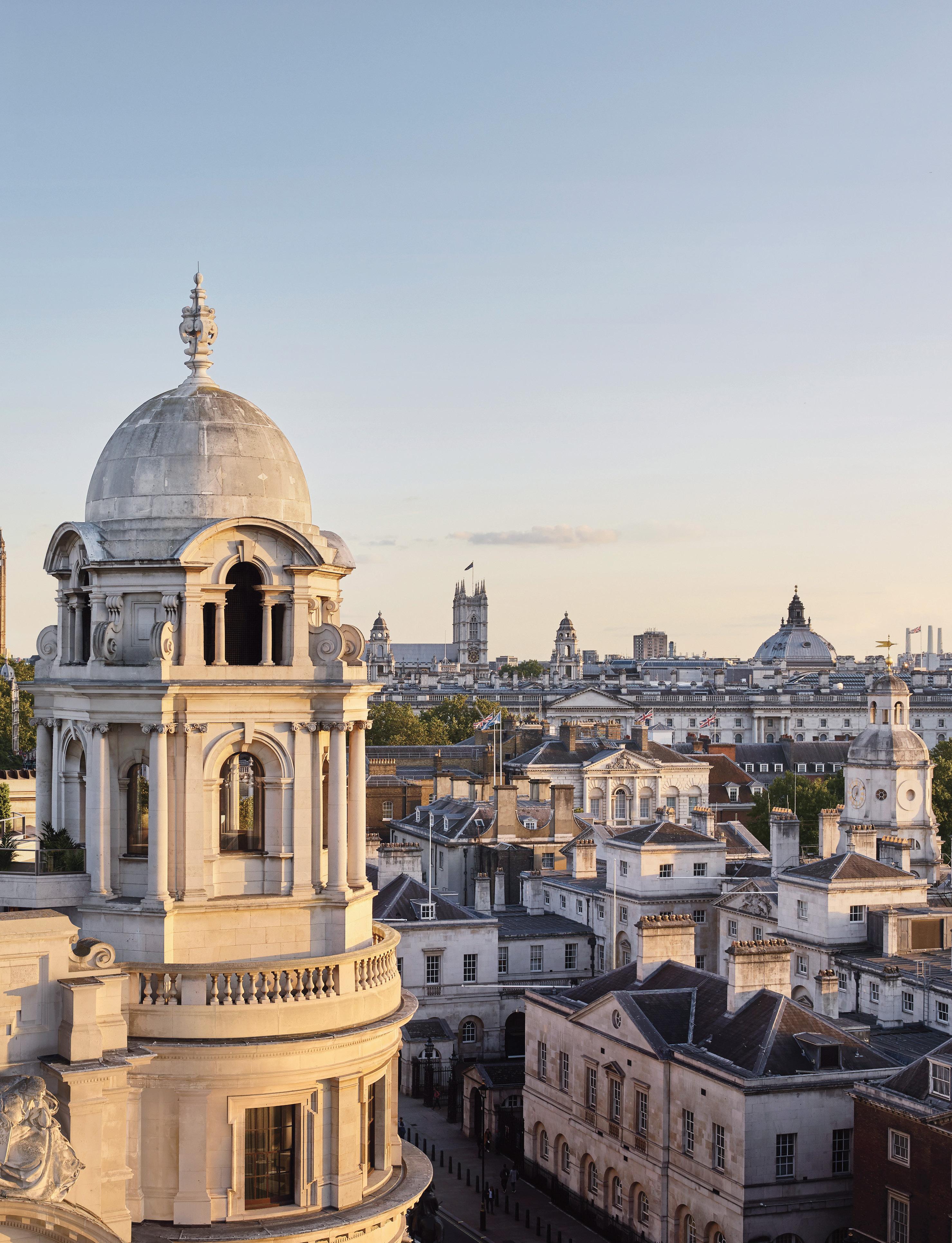
On a mission to check out a new luxury hotel in the heart of London that was once home to the Army, MI5 and MI6 and James Bond author Ian Fleming, Lindy Alexander fnds not-so-secret service and a profound sense of history. Welcome to Rafes London at the Old War Ofce.

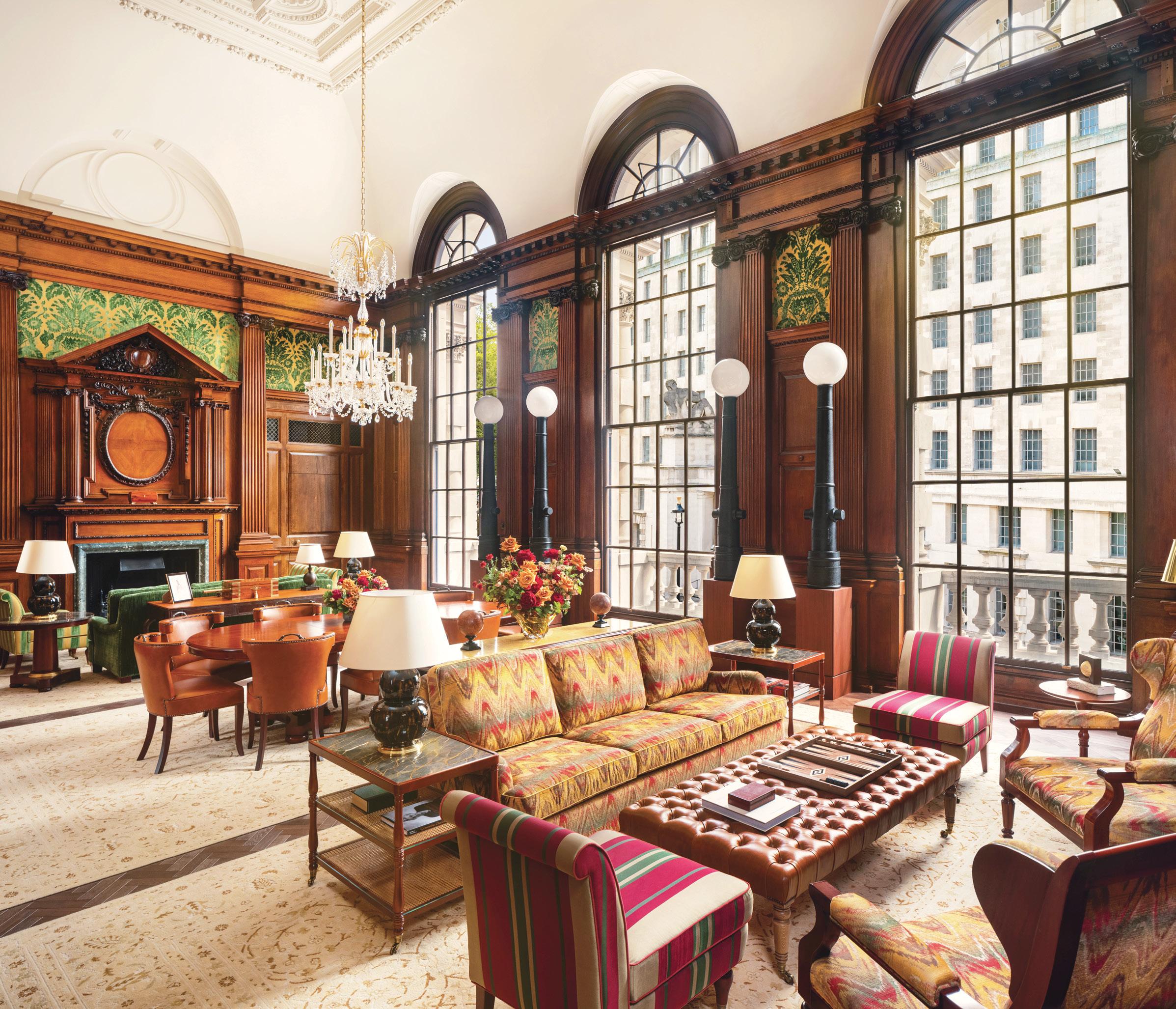
Despite being the birthplace of the British secret service, and featured in James Bond films, it’s hard to go undercover at Raffles London at the OWO (Old War Office). From the moment I walk into the grand baroque Edwardian landmark-turned-luxury hotel, nothing goes unnoticed.
My dripping umbrella is whisked away and replaced by a refreshing lemongrass and ginger iced tea. Once checked in, I pause briefly, walking along some of the four kilometres of corridors, which alerts a staff member that I am somewhat lost and they accompany me all the way to my suite.
But rather than feeling as though I am under surveillance, the sense is one of utmost care and attention.
Located a stone’s throw from Downing Street, the Houses of Parliament and Buckingham Palace, the OWO was the military heart of Britain. Completed in 1906, the imposing property clad in Portland stone served as the administrative headquarters of the British Army until 1964.
It was the bustling workplace for more than 2500 army and civil service personnel, including Ian Fleming, author of the Bond novels, who worked for the Naval Intelligence
Division during WWII and T.E. Lawrence (Lawrence of Arabia). Political and military heavyweights such as Winston Churchill, David Lloyd George and Lord Kitchener all had offices here (Churchill was based here as Secretary of State for War and as prime minister during WWII).
Now, after an eight-year renovation costing over $2 billion, the building has been transformed into one of London’s most prestigious hotels, boasting 120 suites, nine restaurants, three bars, a ballroom and an expansive subterranean spa and wellness centre.
There’s no better place to make an entrance than through the grand lobby where a Piastraccia marble staircase and glittering eight-metre-high chandelier of handblown Venetian crystal sweeps you up towards the luxurious suites. In times past, only highranking officials could use the staircase. I rub one of the carved lions at the foot of the staircase for good luck, as was Lawrence and Churchill’s tradition. The first-floor balcony is where Churchill would address his staff, while state offices and the grander state rooms on the second floor have become some of the property’s most sought-after suites, named after their previous occupants, such as war secretary Lord Haldane and Churchill himself. Perhaps the most striking is The Granville Suite, which honours Christine Granville, a Polish secret agent who opened an information corridor through Nazi-occupied Poland and neutral Hungary. In what sounds like a fantastical plot for a novel, Granville skied over the Carpathian Mountains with exploding cigars, microfilm sewn into the lining of her gloves and a cyanide tablet tucked into her skirt hem. It seems fitting then that one of the Allies’ brightest stars also gets one of the most breathtaking suites, which includes a glimmering copper bathtub in what must be London’s most beautiful bathroom. My own expansive corner suite, named after
Churchill’s wife Clementine, features royal red drapes and a chaise lounge, inspired by the coats of the Horse Guards who stand sentinel just across the road.
The suite’s generous proportions, the pillowy, custom-made bed linen, bespoke amenities (with a scent developed exclusively for the hotel) all make me want to request a Bond-style martini, but there’s so much more to explore.
The hotel’s nine restaurants include three by Michelin-starred Argentine chef Mauro Colagreco, with a special mention going to Mauro’s Table, which accommodates up to 20 guests and elevates humble vegetables sky high. Wellness isn’t a second thought here as the enormous Guerlain spa and wellness centre offers sensational treatments and facial massages, as well as a shimmering 20-metre pool, thermal vitality pool, sauna and steam room.
After all that relaxing, it’s time for a drink in the hidden Spy Bar (only available to inhouse guests). Set in a former interrogation room in the hotel’s depths, I open a dark timber door and enter the secret speakeasy. Behind the bar is half an Aston Martin DB5 (as seen in the Bond film No Time to Die). As I sit, sipping a martini, I can’t help but feel shaken and stirred by Raffles London at the OWO.

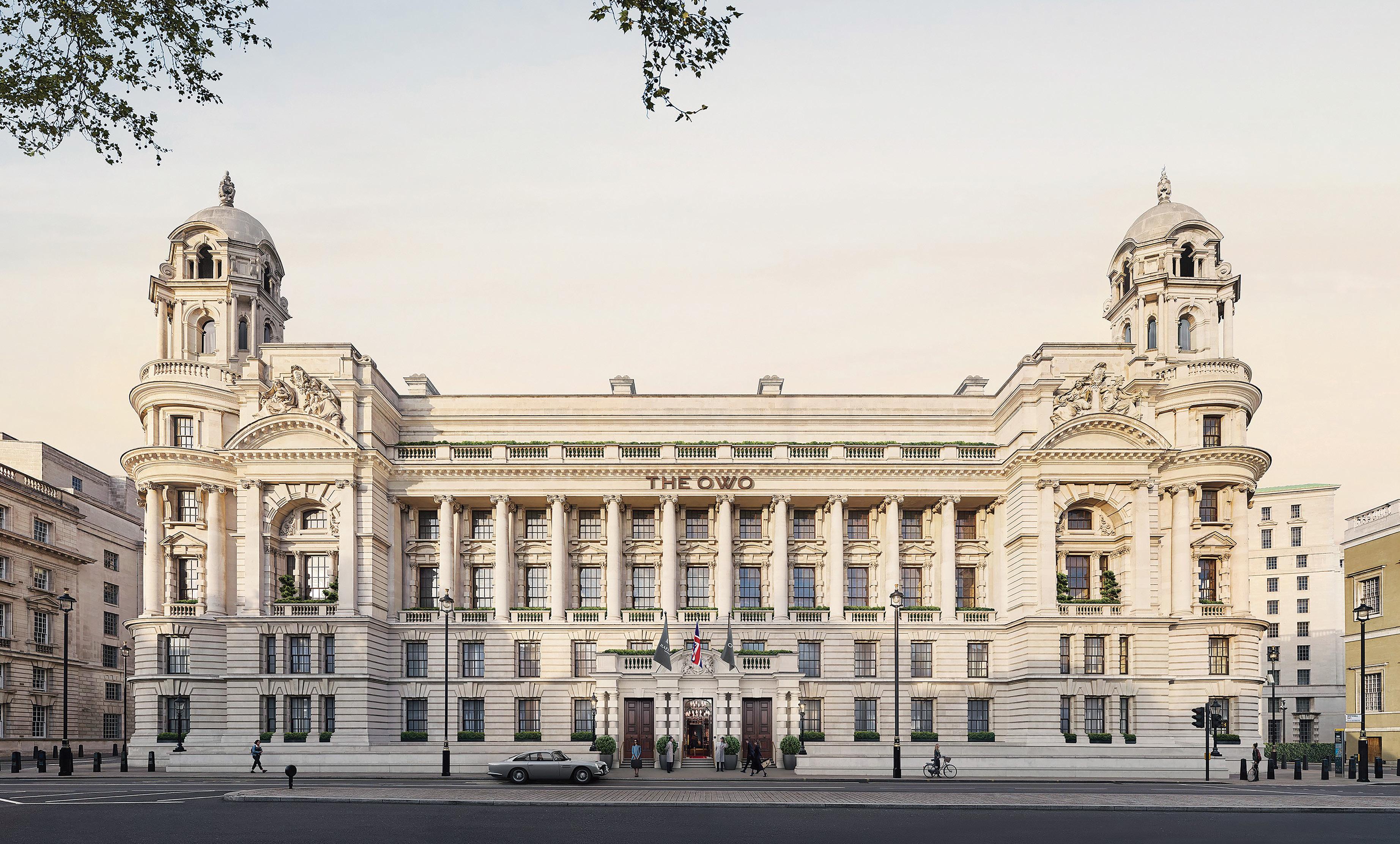


In London there are hundreds of buildings where you wish the walls could talk, but few more so than the Old War Office. Now taken over by one of the most famous hospitality brands in the world, guests can stay in one of 120 guest rooms that pay homage to the spy and espionage past of this grand address. Make yourself at home in one of the 120 individually decorated guestrooms, featuring iPads and Smart televisions.
Your memory foam bed comes with down comforters and premium bedding.
Book your stay at Raffles
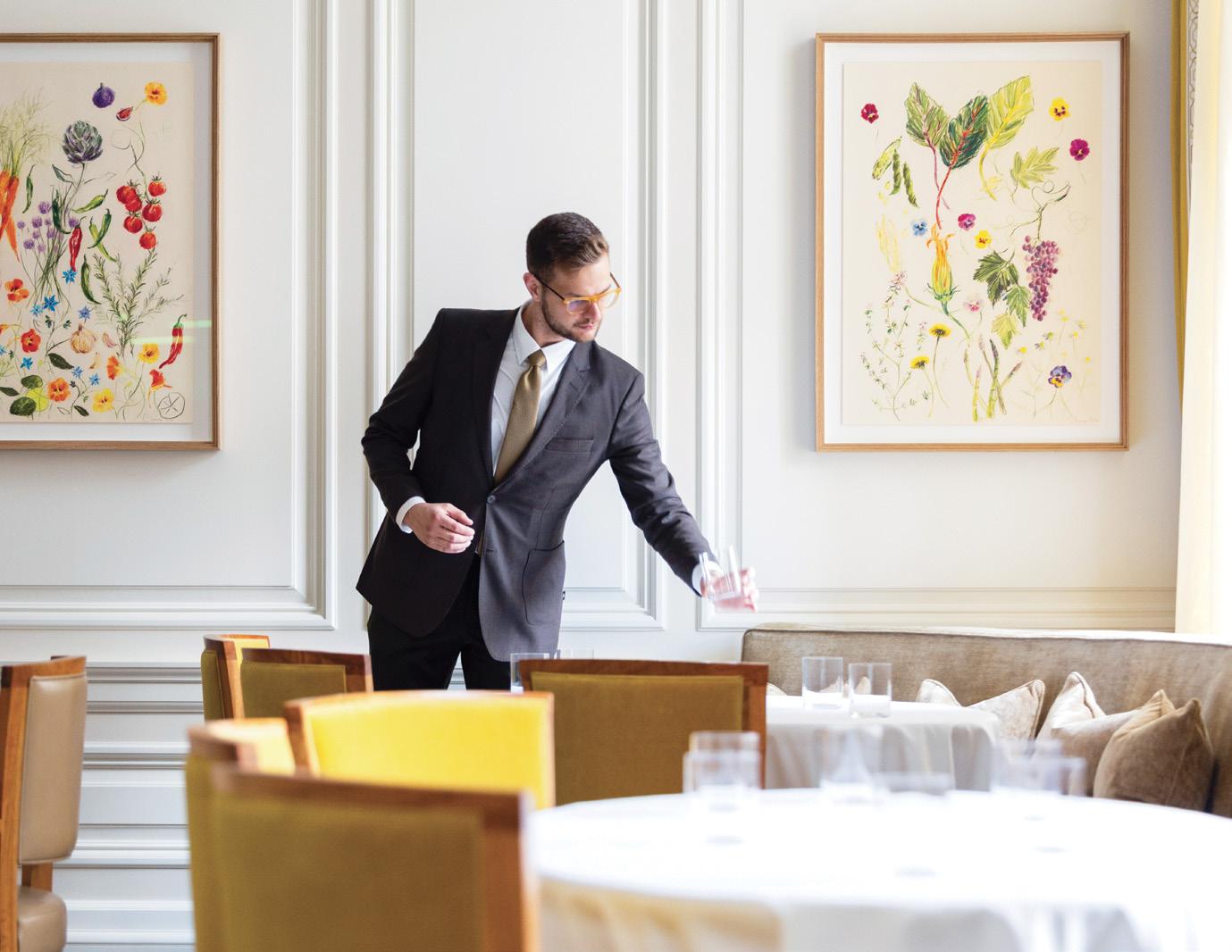

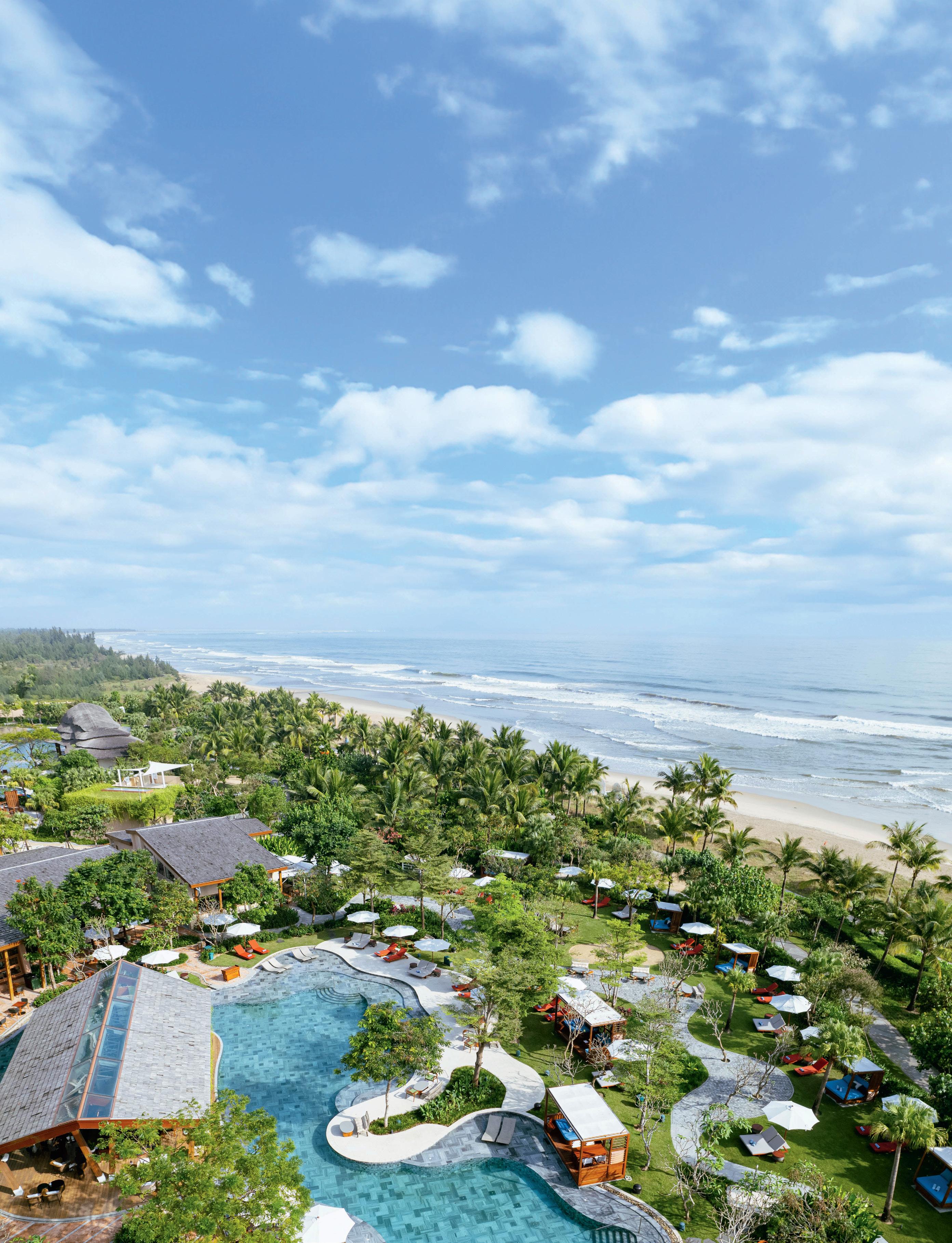
With multiple luxury coastal resorts, Hoiana Resort & Golf has plenty to keep travellers entertained from fne dining to family fun, the ideal 18 holes to the perfect wave. But just like in a game of golf, selecting the right club – kids’ club, beach club or golf club –can be all important.
Hoiana Resort & Golf is Vietnam’s first integrated resort, an award-winning destination that is famous for its local hospitality, world-class service and stylish and sophisticated stays.
The resort has four fantastic accommodation options – Hoiana Hotel & Suites, Hoiana Residences, New World Hoiana Hotel and New
World Hoiana Beach Resort – that together represent about 1200 guestrooms and suites. And the resort is just a short 15-minute drive from the cultural capital of Hoi An where you can immerse yourself in culture and history.
Hoiana Resort also has a strong focus on wellness with the Health
Club and the new Tinh Spa devoted to a full suite of therapeutic services like facials and massages.Or try our Downtown Renew and Recharge wellness spaces.
And, as any good caddy knows, the key to a perfect game of golf is the right club, and the same can be said of Hoiana Resort & Golf.

Hide away in a private poolside cabana, grab a sunbed or reserve your spot at the central bar, NOX Beach Club is the social hotspot of Hoiana. At your cabana you will receive individual service where you can sip a cocktail or order from the menu of culinary delights. The village-style club is all about diversity, offering four very distinct restaurants, two bars and a host of alfresco dining options all centred around the huge pool.
You can experience authentic Mediterranean dining at Osteria, feast on local seafood with an Asian and South American twist at the Seafood Shack, have a casual dinner at The Grill or get a Vietnamese street food classic at Banh Mi and Noodles. The Beach Club Bar is found at the central pool or you can get a classic cocktail at the Courtyard Bar.
Come evening, local and international performers take the stage and NOX Beach Club becomes the place to be for hotel guests.

Offering the best golf course in central Vietnam, Hoiana Shores Golf Club offers an 18-hole, par-71 golf course designed by golf course architect Robert Trent Jones Jr. This 7000-yard course offers exceptional play and is located near a UNESCO World Heritage site known as The City of Lanterns. The 6000-square-metre clubhouse is the jewel in the crown with stunning views of the Eastern Sea at Cham Islands and has first-class amenities like dining, bars and comfortable locker rooms.
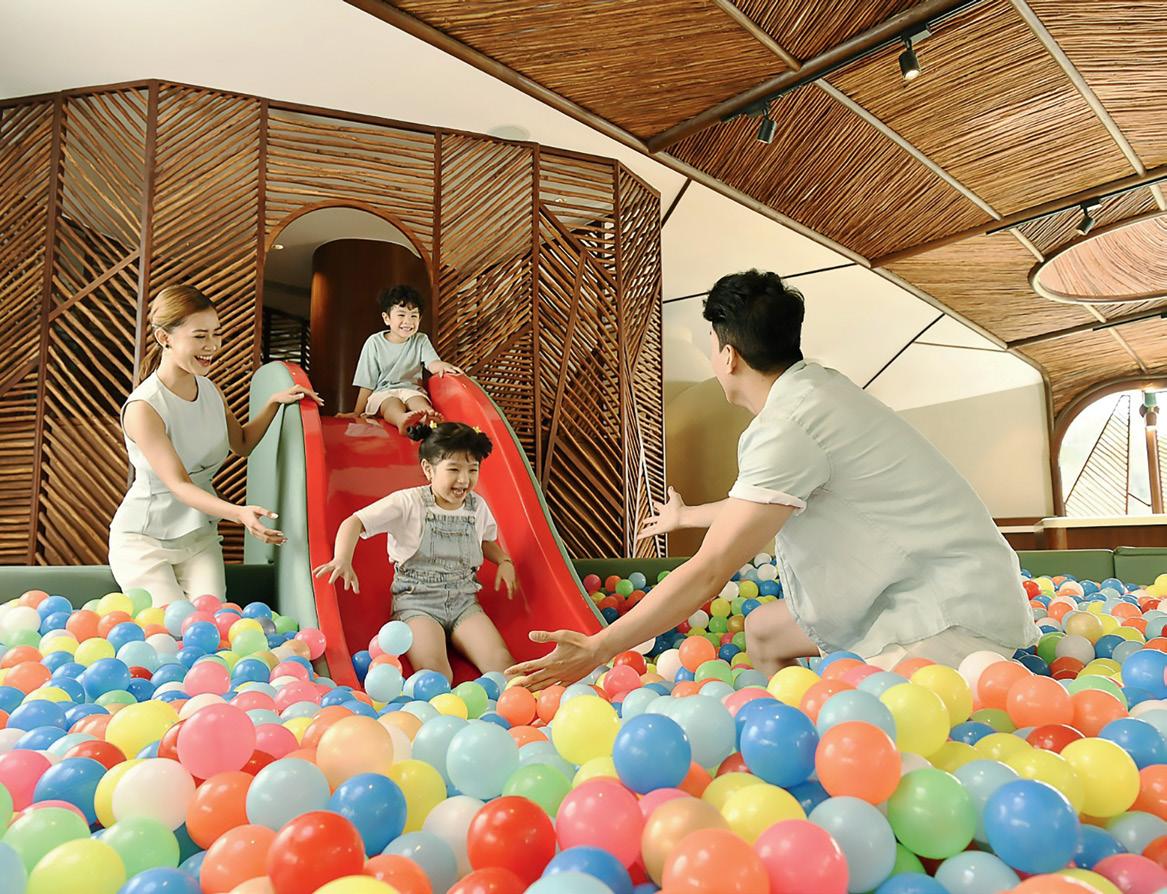
Hoiana keeps kids entertained, but also aims to stimulate and inform, at the resort’s expansive PLAY Kids’ Club. This is not simple child minding but instead aims to expand your child’s horizons through programs and activities including learning, adventure, independence and positive self-image; things such as drawing, painting, pottery making and cooking classes.
Set across a versatile indoor/outdoor setting, PLAY Kids Club is proudly digital-free and instead encourages kids to cultivate their natural curiosity and be social.
For teenagers, Hoiana Resort & Golf has a range of activities from kayaking and surfing to creative workshops at PLAY Kids Club. And kids of all ages can have a fun splash in the kids-only pool.

Whether you’re looking for a golfng holiday, a beach retreat, a family getaway or the perfect fy-and-fop beach break, Hoiana Resort & Golf is the perfect spot for you.
It’s the birthplace of the blues and one of the most famous music cities in the USA. The options for a night out in Tennessee’s second-largest city, however, can be overwhelming. Contain yourself to Downtown Memphis and spend the evening sipping crafted cocktails, dining on southern cuisine and keeping the beat going well into the night.

Here is your planner for a perfect night out in Memphis.
There’s no better way to get the lay of any land than to elevate yourself to a city high point. Take in views of the mighty Mississippi and waterfront skyline, including the Memphis Pyramid, from atop Hu. Hotel at Hu.Roof. Get comfortable in a couple of low-slung timber chairs with pretty Tiffany blue framework and enjoy the sweeping vista from the 17th floor. Happy hour at this rooftop rendezvous starts now, so order a US$7 cocktail and relax before the big night ahead.
From Hu.Roof look to your right and down. That’s tonight’s second stop after you walk across the Skybridge to Mud Island. It’s only a short stroll but will take you to one of the best sunset spots in town. Find a good spot in Mud Island River Park to see the arches of the Hernando de Soto Bridge. Each night, at the top and bottom of every hour (until 10.30pm), the bridge is lit up in colourful display, called Mighty Lights.
If you’re looking for something a little more romantic than eating ribs with your fingers, try Bishop. Inspired by French brasseries, chefs Andy Ticer and Michael Hudman created a stylish eatery – all low lights and leather banquettes – with southern influences. Among dishes like tuna carpaccio and steak frites, you’ll find offerings including corn and brie beignets with crab remoulade and country fried escargot with watermelon rind, grape and hot sauce.
Music rules in Memphis, so it can prove difficult to find a spot for cocktails and conversation. While it maintains a healthy buzz into the evening, the Blind Bear offers lounges and corners where you can put your heads together over expertly mixed drinks. Check out the list entitled Giggle Water for libations like Cherry Orange Fizz (cherry vodka, blood orange puree, lime and soda) and S’mores Espresso Martini, which comes complete with a torched marshmallow.
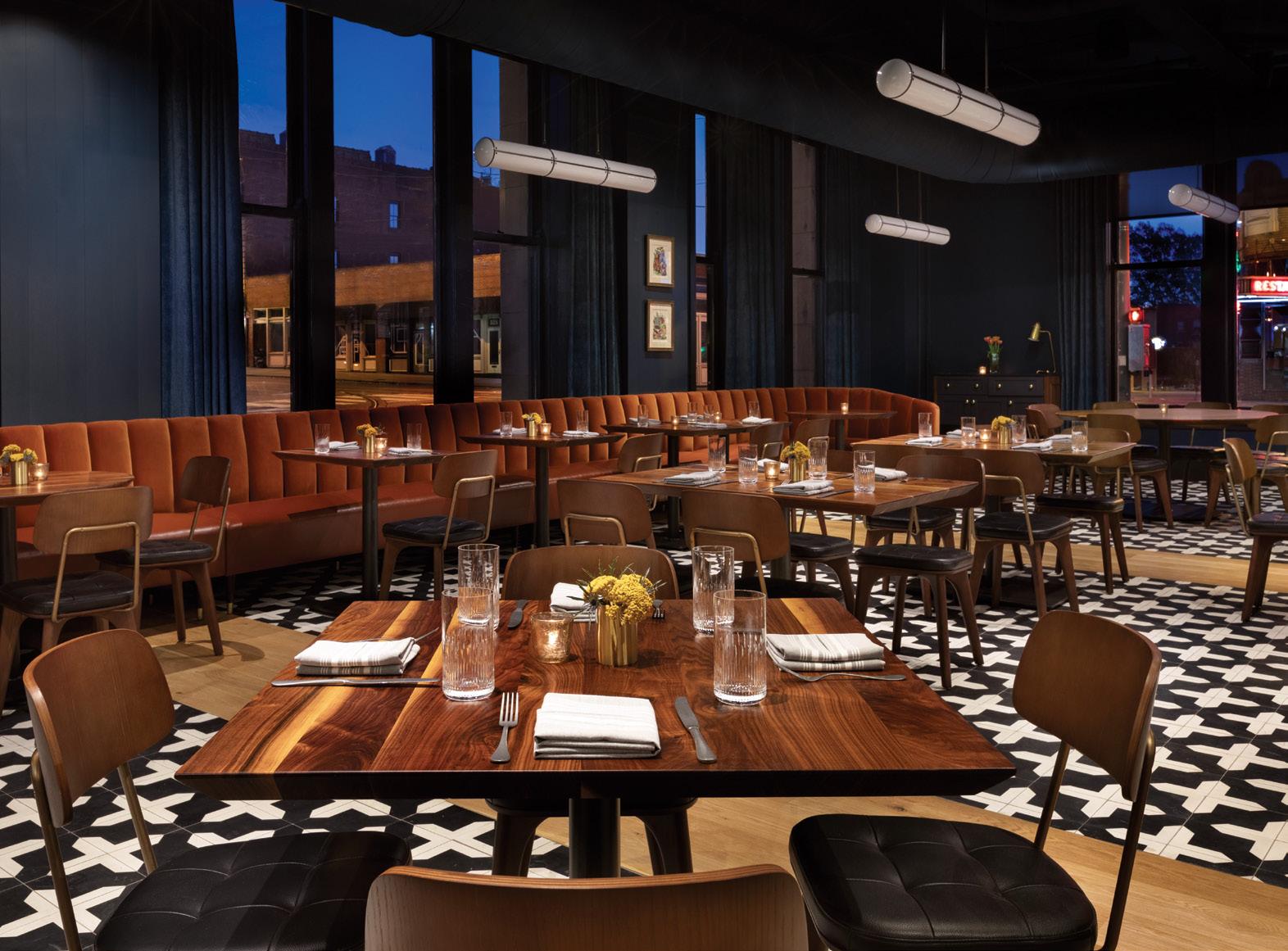

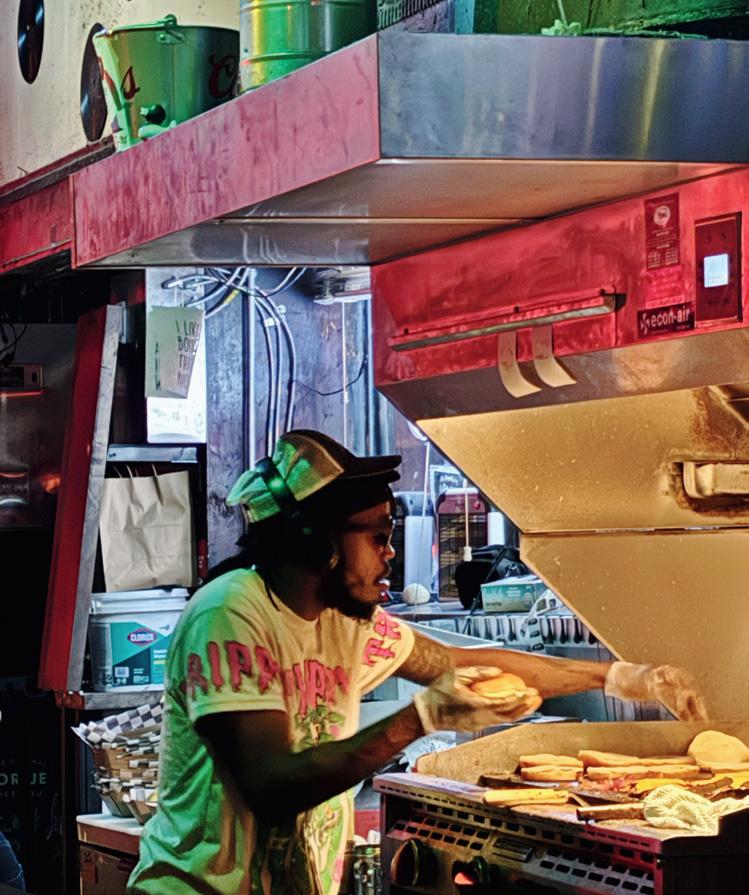
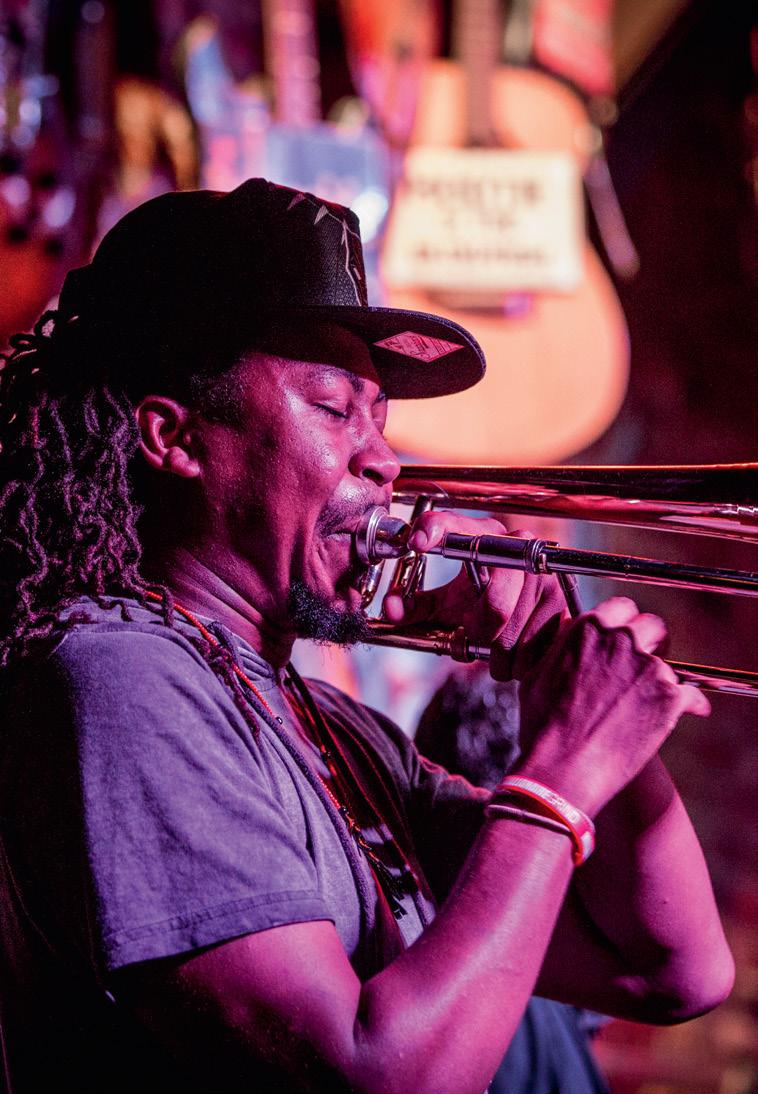
It’s not a night out in Memphis without catching blues on Beale Street, Tennessee’s most visited attraction. Where to go? It depends on where you feel “the vibe”. Get on the dance floor at the famous B.B. King’s Blues Club. Other good options include the Tin Roof and Rum Boogie Cafe connected to the living room-like Blues Hall Juke Joint. If you prefer jazz to the blues, hit King’s Palace Cafe. It’s no big deal if you can’t decide. Just grab a drink – the Walk Me Down, a blue version of a Long Island Iced Tea in a to-go cup, is the local specialty – and wander along the street soaking up the atmosphere.
When the witching hour rolls around, head to classic dive bar Earnestine & Hazel’s. Its namesakes were hairdressers who opened a cafe here in the 1930s. For two decades, famous musicians would roll up after their shows for drinks, dinner and, well, other services. It closed for 20 years but reopened in 1992, the new owners leaving the venue in much the same physical state. Take a spot at the bar and order a beer and the only item on the menu, the Soul Burger. They’re cooked on a grill behind the bar, but you could watch the cook flipping them all night and still be no closer to figuring out why this is the best burger you’ve eaten in your life.
Indulge in a serene escape at Kayumanis Sanur Private Villa & Spa. This exclusive resort features traditional Balinese decor, lush gardens, private pools, sundecks, gourmet kitchens, air-conditioned bedrooms with en-suites, and 24-hour butler service.
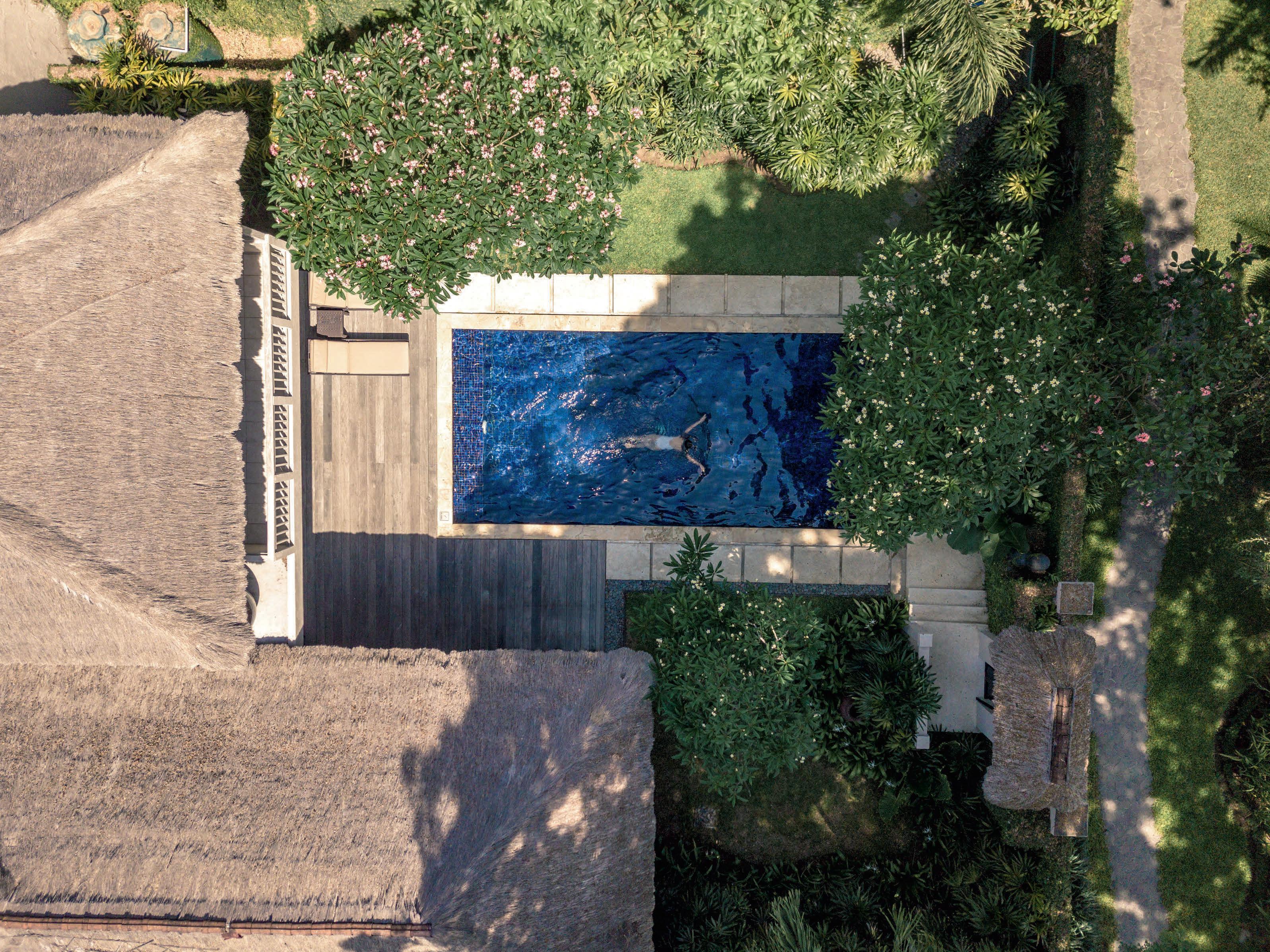
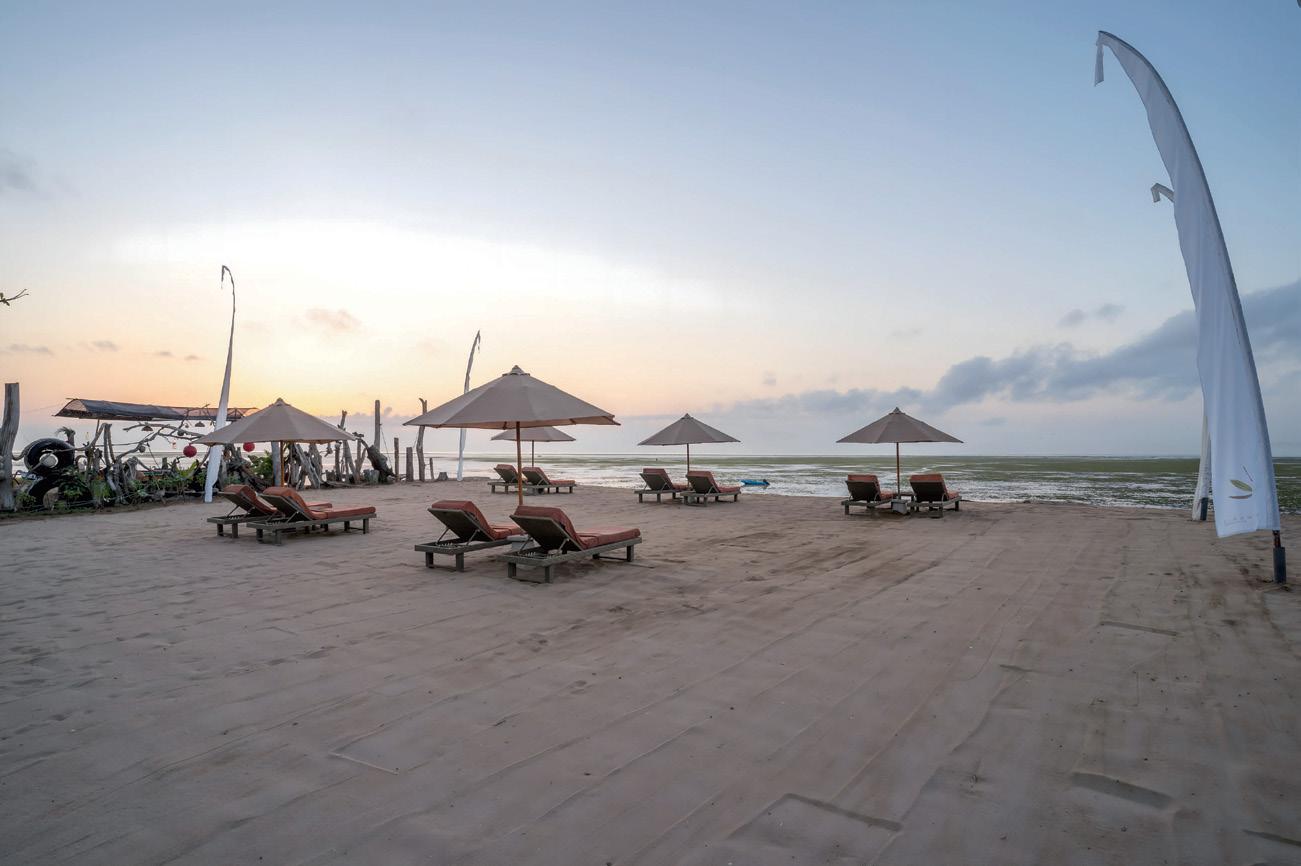
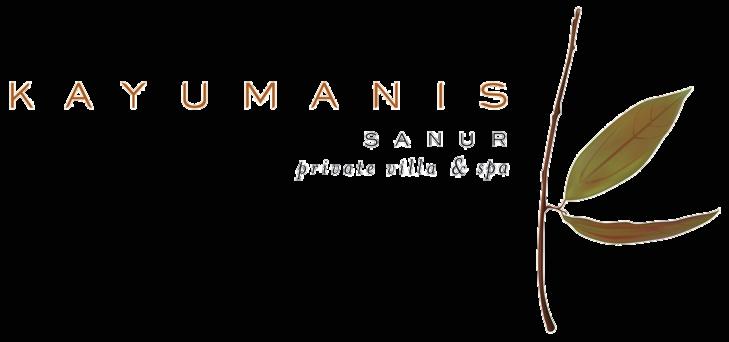
With 12 villas connected by stone paths, Kayumanis Sanur Private Villa & Spa offers a secluded, village-like ambiance. Enjoy warm hospitality, sunbathe by your private pool, relax at the private beach, or explore Sanur's white sands and crystal-clear waters.
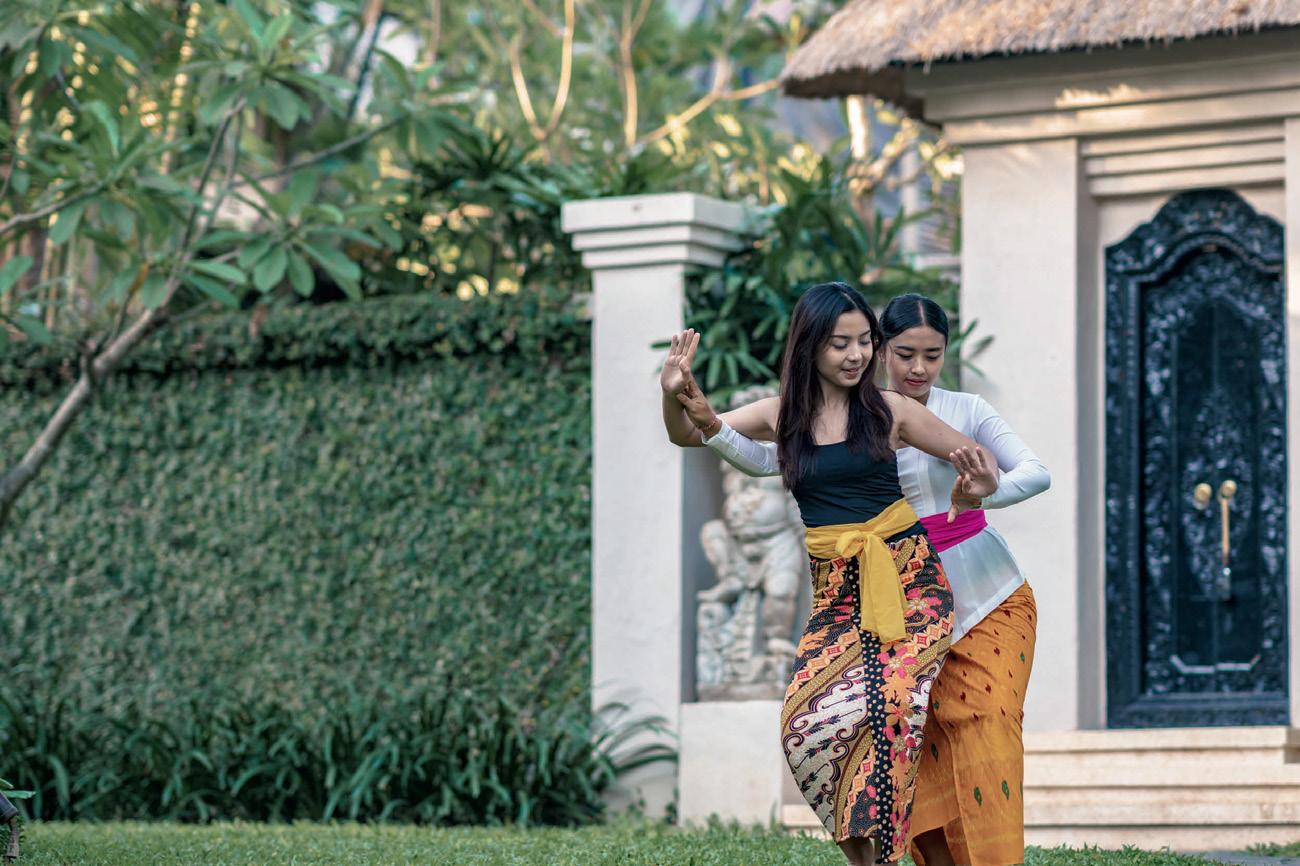

Away from Bali’s hustle and bustle, Claire Turrell discovers that the neighbouring island of Lombok has all the natural beauty, island charms and tempting treats of its sister destination but all served chilled.

The city slicker couldn’t be more sure of making the move to the island. “Our kids are still very young and seeing them bike among water buffalos on fields by the ocean or coming home with sand between their toes is a very special feeling. There is so much freedom here.”
But instead of just buying a home, the firsttime hoteliers took the more unusual step of opening a hotel near Kuta to give everyone else the chance to experience it, too. The sisters and avid surfers chose to buy a plot of land on a clifftop above a surf break and build a designer hideaway.
A familiar sounding town lies on the south coast of Lombok. But unlike its Bali namesake, Kuta in Lombok chooses to take life at a slower pace. Chic Mediterranean cafes with their leafy terraces may show flashes of the outside world encroaching, but they sit alongside warungs and tin-roofed surf shops who advertise their wares with driftwood signs.
While the north of the island may attract the hikers willing to test their endurance on climbing Indonesia’s second-highest volcano Mount Rinjani or take a boat ride to the Gili islands, the shoreland around Kuta also deserves to be explored. For not only will you find quiet coves with beaches that stretch as far as the eye can see, but powdery sand in every shade from gold to black to pink and white. It also has its own selection of gilis that are dotted along the coast. And as Lombok lies on the Wallace Line (a deep underwater channel), it also features some of the most unique marine life.
It was more than enough to attract sisters, and now resort owners, Claire and Valia Gontard to make the move from Hong Kong to Kuta. The birthplace of their grandfather, they would visit the island as youngsters. “We first came as a family on surf trips and kept coming back because we loved it so much,” Claire said.

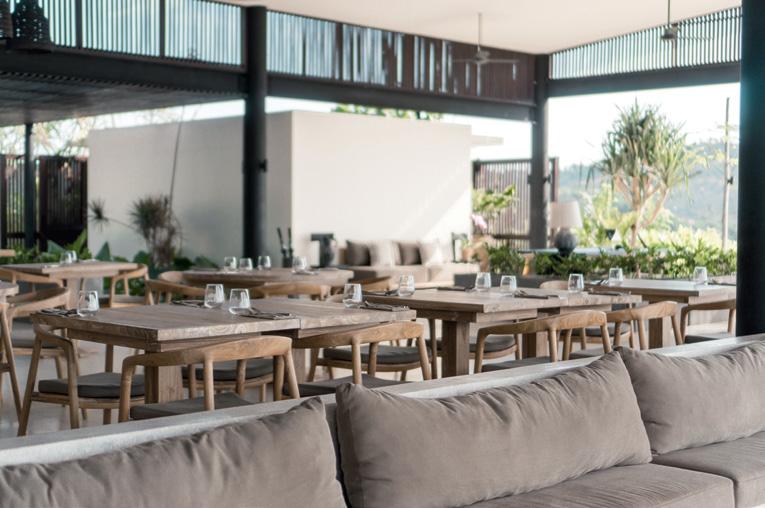
Take things easy on a go-slow holiday in Lombok and make yourself at home in one of the 20 air-conditioned rooms featuring MP3 docking stations and minibars. Your pillowtop bed comes with down comforters and premium bedding, and all rooms are furnished with single sofa beds. Rooms have private balconies as well as complimentary wireless internet.
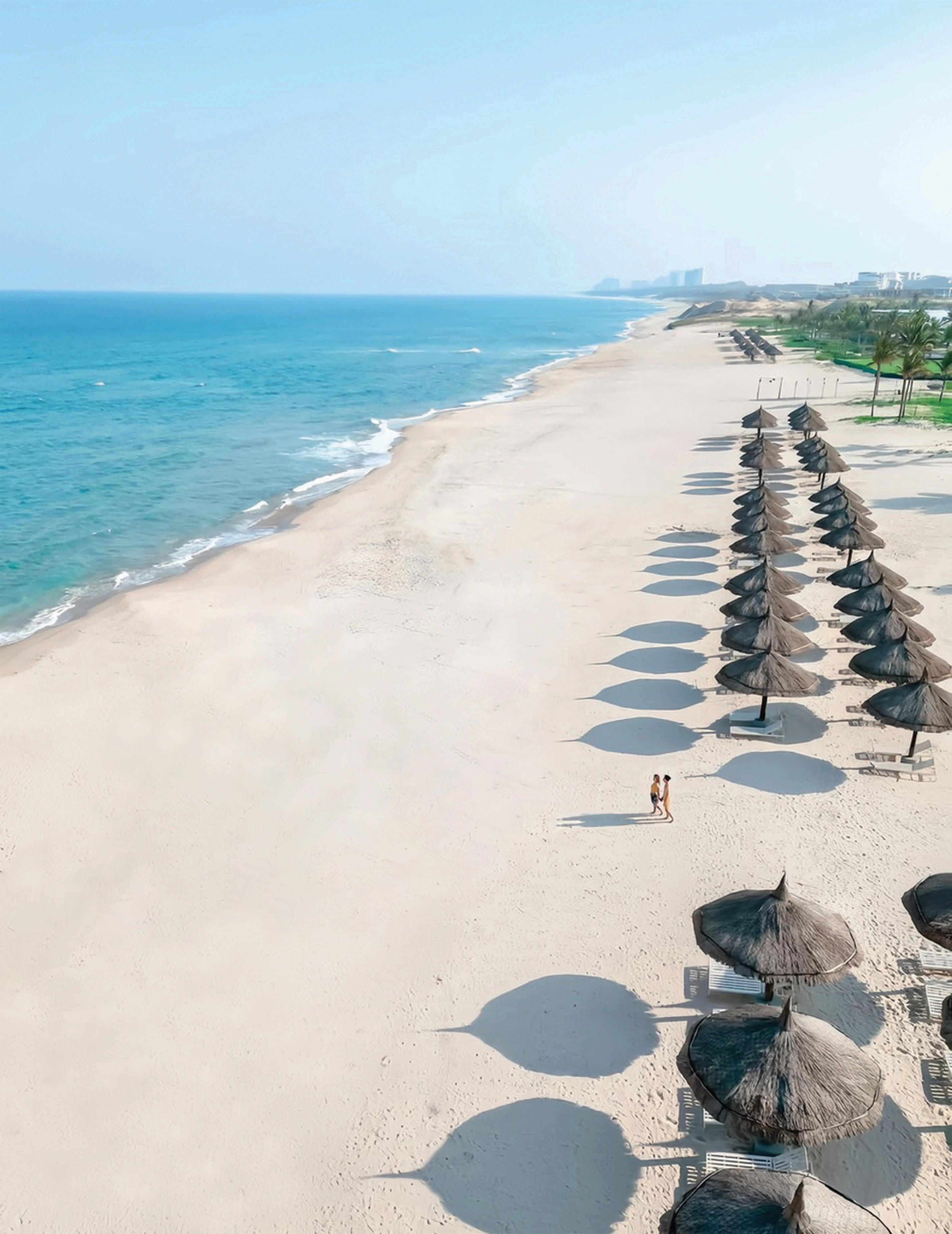
In December 2022 they opened the doors to Somewhere Lombok that is a masterclass in quiet luxury. Whitewashed suites with cool stone walls are softened by handmade ceramics and plump cushions in your room and on your terrace.
The heart of the hotel is the deck where everyone gathers at dusk to sink into ivory-coloured beanbags for pre-dinner cocktails or take a seat around the oversized table and share food and stories family style. The chef will tempt you with dishes such as eggplant scallops and catch of the day with chilli butter dipping sauce, and he will also add dishes such as Lombok’s famed spicy Taliwang chicken to his specials board.
Somewhere Lombok is designed for the next generation of surfers. The ones who would rather start their morning with a drip coffee and finish their day with a soak in their private plunge pool. However, while you can turn a dial on your door from “gone surfing” to “snoozing”, if you never set foot on a surfboard, you will still feel at home.
But what Somewhere Lombok does offer you is the perfect excuse to go beach hopping. As well as Are Guling Beach that sits under the hotel, within just a short drive you’ll find the halfmoon bay of Mawun Beach where you swim or learn to surf in the calm surf or Selong Belanak where you can laze on one of the loungers with a good book.

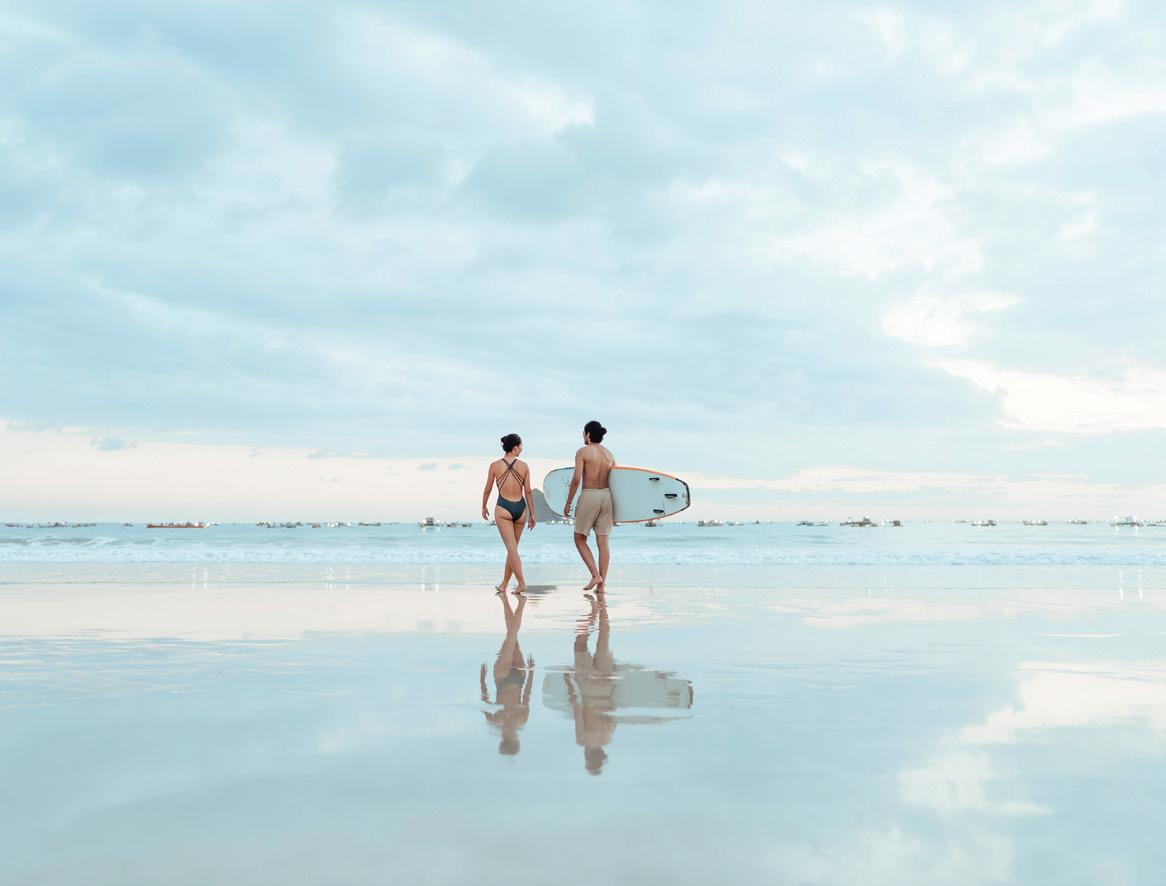
This doesn’t mean that the island isn’t short of culture. On a drive along the coast, you may find yourself stopping to look at a village festival that is in full flow. It’s not unusual to find families have gathered to celebrate their young sons gaining courage by taking part in a century’s old ceremony Nyunatang. The laws of Islam require that all boys be circumcised. Boys will be held aloft on painted wooden horses as their sisters in golden headdresses also ride by their side to help give them confidence to take the next step into adulthood.
If you drive to the east, you can meet Captain Suhardi who takes you to snorkelling sites not found on Google Maps. After fishing the waters for over 20 years, the freediving Sasak (Lombok local) can take you to technicolour coral gardens which clown fish, angel fish and black tip reef sharks call home. Suhardi and his fellow captains would at one time seek out sharks to help feed their families, now they only look for sharks to show visitors. After spending up to a month at sea and sometimes only arriving home with USD$50, Suhardi is more than happy with his new career choice. “Every day is my best day,” Suhardi said.
While some tourist boats will continue down the coast, Suhardi will drop anchor in what appears to be a thoroughfare, but underneath it you will find clown fish darting around orange anemones, parrot fish gliding over the reef and antler-like staghorn coral tipped in neon blue.
Though when the sun is about to go down you should return to Kuta and follow the procession of locals on their scooters up the winding road of Merese Hill. They come here to see nature put on a spectacular show. Friends and families scramble up the hillside to find their spot on the clifftop and then sit down to see a pumpkin-coloured sun dip down behind a rolling surf that looks as if it’s been painted. And once the sun has gone down, the villagers will leave as if they have just watched a concert. It’s a sight that is fleeting, but it’s a memory that will stay with you forever.
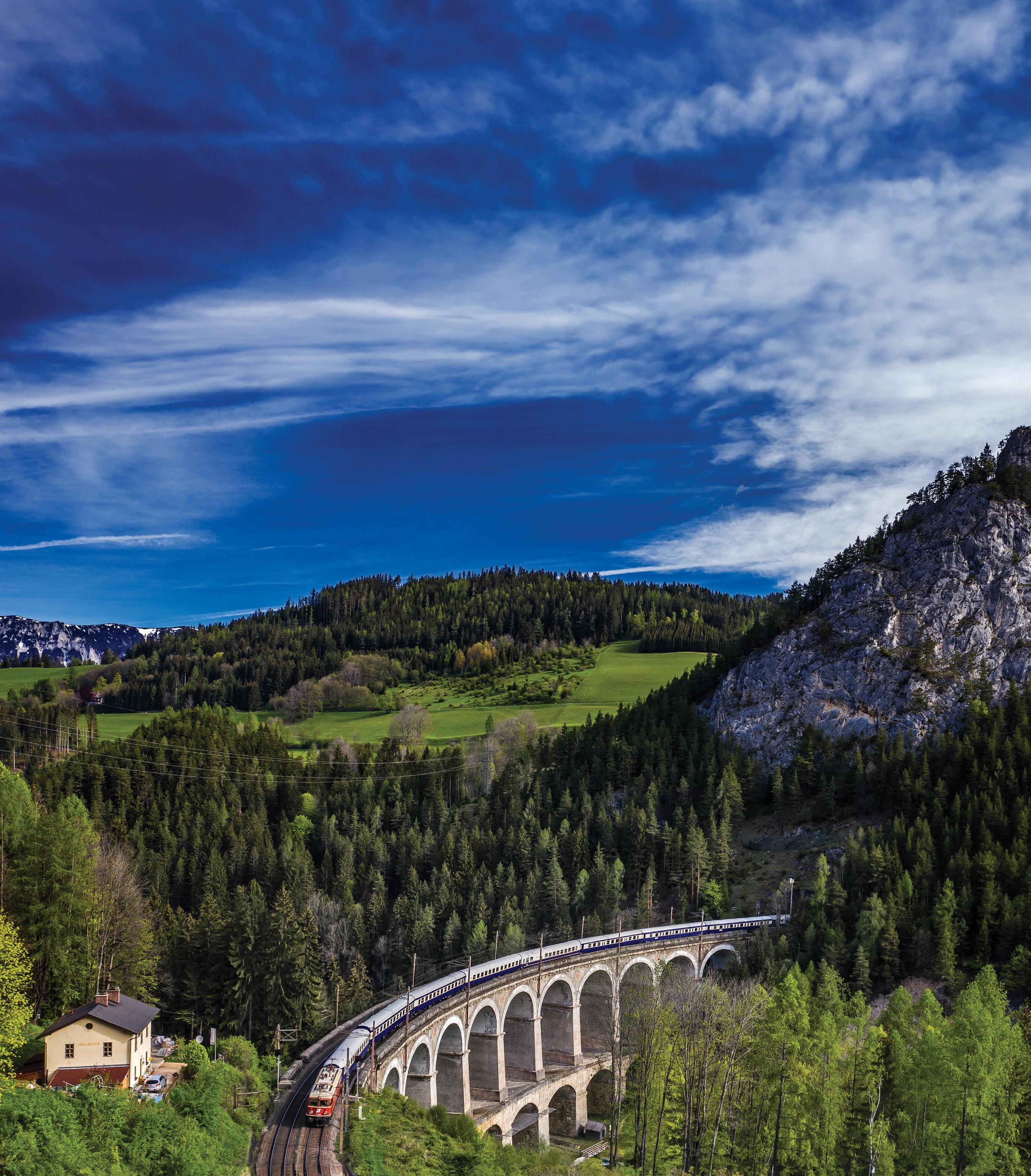

TRAVEL ESSAY
Barking at the heels of “setjetting” (visiting movie locations) as a travel motivator, music tourism is becoming a big-money opportunity with travellers fying thousands of miles and parting with millions of dollars to indulge their love of music and live shows. Paul Chai tunes into this new trend.
It might not have a pithy catchphrase yet – I’m thinking we try sabbeaticals or the other gig economy – but putting music at the centre of your travel plans is becoming big money, money, money.
When Taylor Swift played her string of concerts in Singapore in March, her only south-east-Asian dates, arrivals from neighbouring countries leapt by 24.1 per cent on the previous month.
Some estimates of the economic boost that Tay Tay’s sequin-fest brought to the Lion City are upwards of $370 million dollars and, while Singapore Tourism Board (STB) has not released any dollar values, they are quite bullish on the benefits of Swiftonomics.
“World-class live entertainment acts generate significant economic benefits and global branding value for Singapore, as well as reinforce our position as a leading leisure destination in the region,” Kimberly Spykerman, Area Director Oceania, STB told Dream by Luxury Escapes “They also come with positive spillover effects to tourism industries such as retail, dining and hotels.”
BY KATIE FORD

In Australia, more than 288,000 Swifties attended the headline shows at the Melbourne Cricket Ground over three nights. At 96,000 per night, these were the biggest crowds Taylor Swift had ever performed for.
Australia saw whole cities sell out of hotel rooms. Taylor’s mega-gigs even provided a boost to van rental agencies like JUCY Campervans Australia who offered vans and RVs to Swifties who could not find a hotel bed for the night.
“We know that major live music events deliver positive benefits to Victorian businesses, with visitors not only spending money on tickets but on local hotels, restaurants and travelling around the state,” says Visit Victoria CEO Brendan McClements.
Melbourne’s calendar of blockbuster events, including its Always Live program supporting local talent, has resulted in a record high of $37.8 billion in tourism spending in Victoria in 2023.
Headline acts in recent years have delivered a big impact on the visitor economy and hotel occupancy. Ed Sheeran saw Melbourne’s hotel occupancy hit 90.6 per cent when he performed last year and Billy Joel’s One Night Only in Australia concert generated $46.2 million in economic impact.
Always Live supports Victoria’s live music industry from grassroots to the biggest venues in the state. Last year, Always Live featured 423 artists – with 312 of these Victorian and 37 per cent of venues were in regional Victoria.
Globally, the music tourism market is expected to reach US$14 billion by 2033, up from US$5.91 billion in 2023, according to Future Market Insights. To quote another country-adjacent pop star, Shania Twain: Ka-Ching!
Music tourism is not new, fans have schlepped around after their favourite bands since the sixties, but the popularity of making music the keynote of your travel is on the rise.
There is also a strong market in heritage music tourism, which is visiting the hallowed grounds of famous bands. I have travelled to London to watch Backbeat, the Beatles movie, within the storied walls of Abbey Road Studios, I have driven a motorhome across Europe to the Roskilde Festival to be slammed by Nine Inch Nails fans and been to more music festivals than you could poke a Pluto Pup at. At my most obsessive, every time we drive from Sydney to Melbourne I make my kids stop into the Paragon Café in Goulburn, NSW, thanks to its starring role in a solo track by You Am I frontman Tim Rogers.
When I was based in Singapore, and a friend scored tickets to Glastonbury in 2013, the first and only year that the Rolling Stones headlined the Pyramid stage, I jumped on a plane faster than you could say Jack Flash. Standing in that field of 100,000 people all brought together by music
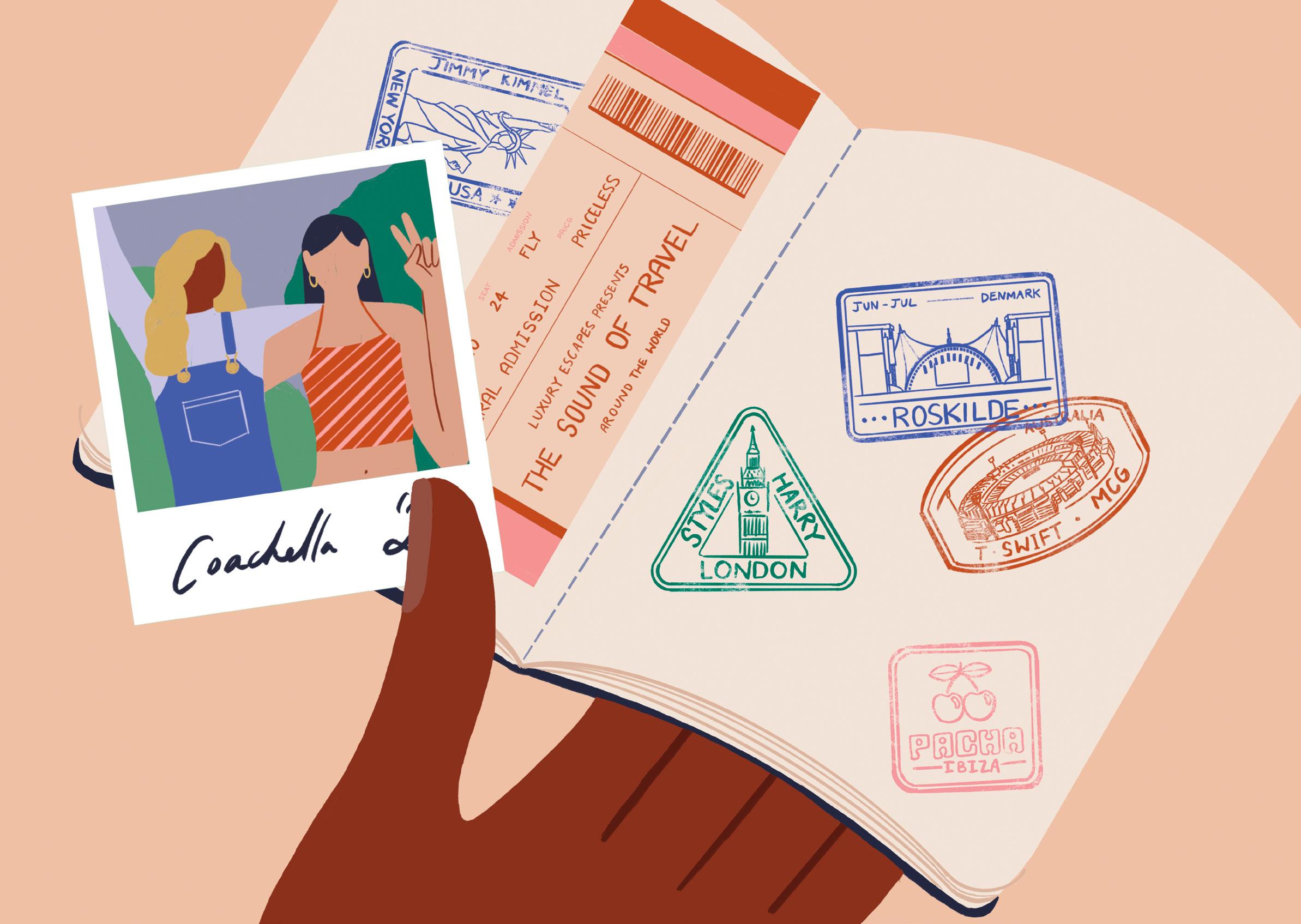
did more for my wellness than a week of spa treatments and I am still in touch with people I met on my Glasto weekender.
Music for me is like a shorthand for getting to know a place and provide a memorable emotional connection. I remember more about my night in a Cuban nightclub seeing son and salsa king Pedrito Calvo than I do of a day in the revolution museum and I treasure my Johnny Hallyday CDs from Paris more than any travel trinket.
Travel writer, Sofia Calvert, is also a fan of the musical getaway and has already secured tickets to Coachella in the US next April; to her it represents great value for an experience.
“Coachella is one of the most famous festivals in the world and is guaranteed to have an insane line-up,” she says. “The ticket is pricey, but to see even one of the sub-headliners in Australia would cost upwards of $200, so it’s well worth the money to me.”
Sofia is the type of traveller that always plans to see some live performance.
“My partner is a touring event videographer and nightclub owner, and I’ve worked in nightclubs for seven years, so I find myself centring
music in my travels most of the time,” she says. “Whenever I plan an overseas trip, I always make stops for music, like visiting the Berghain nightclub in Berlin, Hï and Pacha in Ibiza and the Full Moon Party in Ko Phangan. I also go to the Defected shows in Bali every year and travel regionally for Pitch and Strawberry Fields.”
Like most people who travel for a gig, however, that is not the only place they visit, Sofia will stay for a week in LA and a week in New York on her Coachella trip.
And travelling with a passion for music does not always mean heading to a massive festival or a stadium-packing show.
The Brunswick Ballroom in Melbourne puts on intimate gigs from yacht rock to ex-Go Betweens, Grace Cummings to gospel music and people come from far and wide to see shows.
“We are the home of Soweto Gospel Choir in Melbourne and, from a postcode perspective, we have seen a really wide reach from Mildura to the border of South Australia and interstate,” says Will Ewing, venue director. “Regional and rural patrons are really flocking to acts like Soweto Gospel Choir because it is not just a gig but a cultural experience.”
This type of experiential travel is generally measured by the night-time economy index which last year looked at 11 cities across Australia and estimated that going out at night was worth $146 billion dollars a year.
“Music brings people out and helps our local restaurants around the Brunswick Ballroom, I know for a fact that Basco across the road does really well and so do pubs and bars that are open after a gig,” Will says. “Putting on sold-out shows and amazing acts absolutely benefits the night-time economy.”
You can also discover the next big thing. Will cites two years ago with a little-known band, aptly for this story called Vacations, playing the Brunswick Ballroom for a popular but not-soldout show and this year ending up on Jimmy Kimmel in the US.
Will has travelled from Australia to see gigs at the Edinburgh Film Festival, the Adelaide Fringe Festival and the emerging Wynnum Fringe Festival in Queensland. “If I am travelling on holiday I want to get a real sense of the place, and so much of that is done through the nightlife and going to some really interesting places and seeing some great art,” he says.
Barefoot luxury in one of the most coveted stretches of natural coastline for spotting marine life. Catherine Best pulls up a hammock at Sal Salis at Ningaloo Reef.

Te details
Sal Salis is part of the Journey Beyond Group. Yardie Creek Rd, Cape Range National Park, WA


The benchmark for destination glamping in Australia, Sal Salis lays claim to a secluded sugar-white beach overlooking UNESCO World Heritage-listed Ningaloo Reef. Sixteen eco safari tents dot the dunes at this ultraprivate WA hideaway, where luxury is defined by solitude in nature, vantage to the stars, and proximity to the world’s largest fringing coral reef.
Sparingly furnished and sympathetic to the natural environment, the raised safari tents have king-sized jarrah beds dressed in organic linen and freshened by the sea breeze. Rustic corrugated iron bathrooms give the illusion of showering amidst the dunes, while the piece de resistance is a hammock on the deck made for languorous siestas.
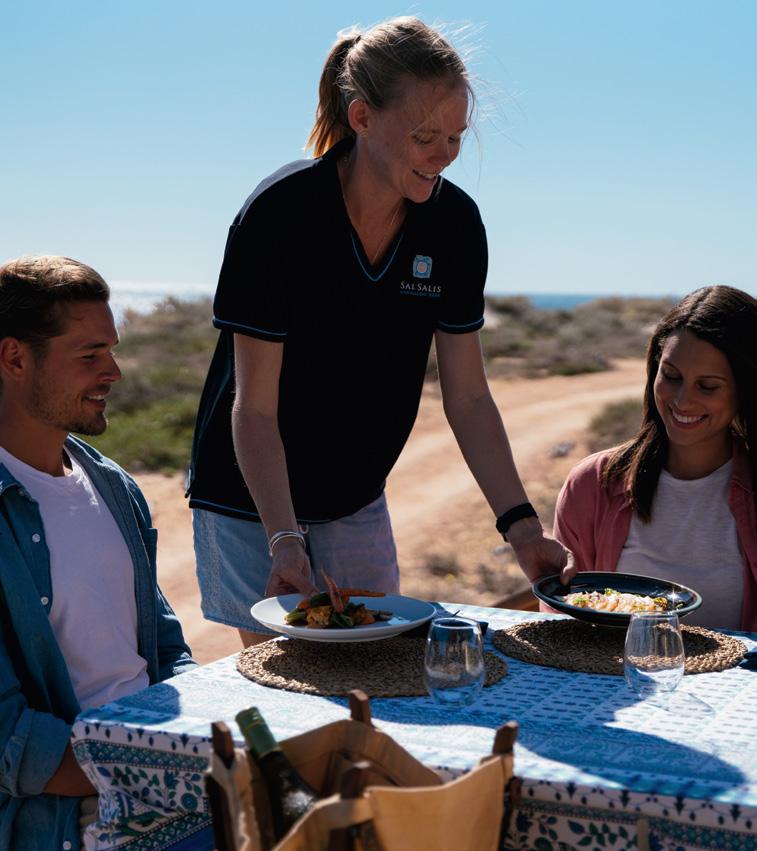
Mealtimes are an event at Sal Salis, where a long communal dining table strikes a convivial atmosphere and the staff introduce wine-paired dishes, heavily influenced by the bounty of the sea. The evening might begin with sundowners and smoked fish tartlets on the deck, progress to sit-down plates of salmon gravalax and confit duck leg, before climaxing with a deconstructed Eton mess. Fancy a pre-bed digestive? Help yourself to the open bar (all-inclusive).
With peerless access to Ningaloo Reef in a strictly natural setting, Sal Salis is an immersive barefoot luxury wilderness retreat.
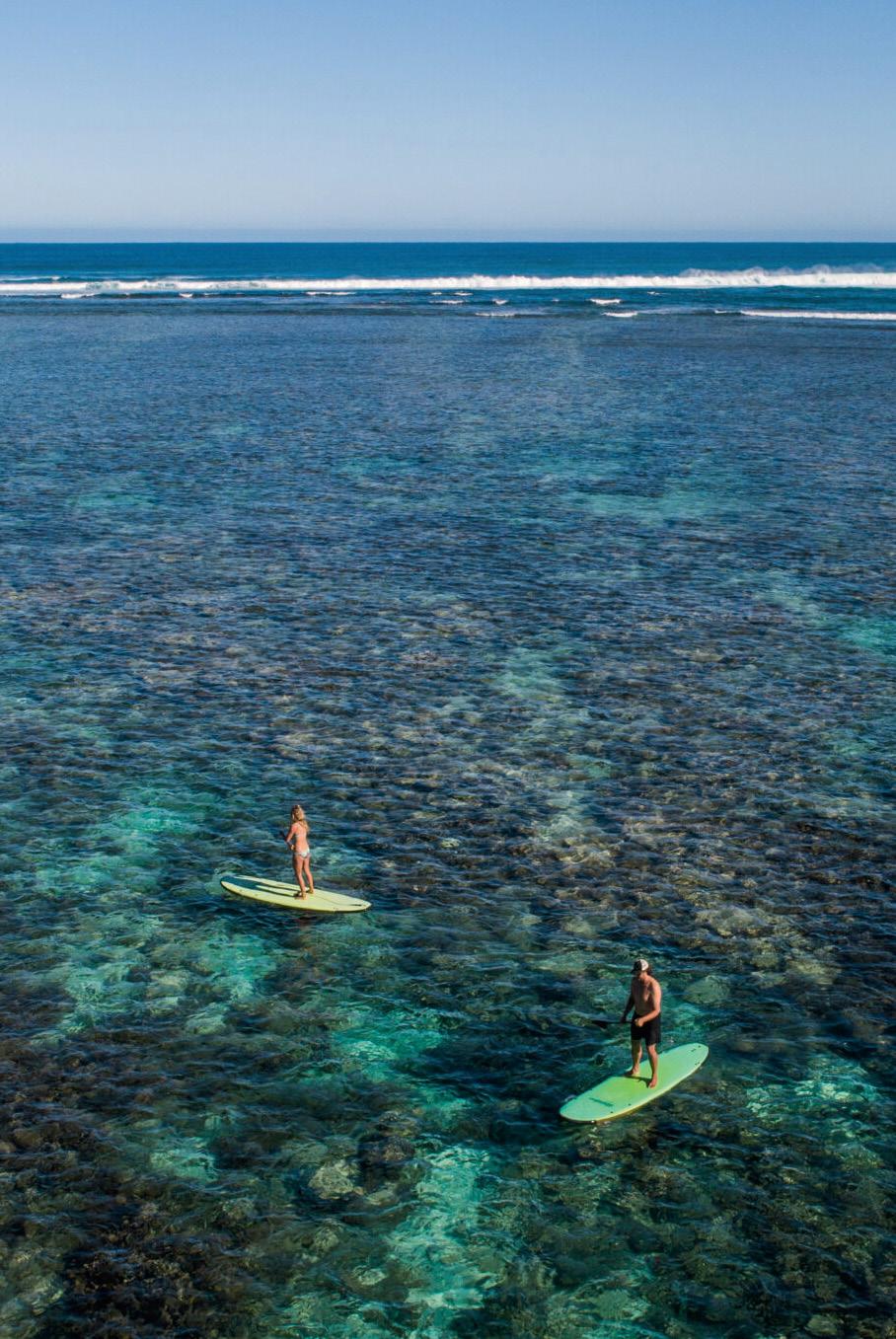
There’s no accommodation like it on the Ningaloo Coast. Sandwiched between the infinite blue of the Indian Ocean and the rust-red crags of Cape Range National Park, Sal Salis is an oasis in a remote and arid landscape. Follow Yardie Creek Road south to discover a breadcrumb trail of blindingly beautiful beaches and snorkelling sites, including the outrageously picturesque Turquoise Bay.
Nature is, by design, the hero of any stay at Sal Salis. Sea turtles accompany snorkellers in the lagoon, breaching whales add drama to sunset canapes, and whale sharks provide electrifying opportunities to swim with the biggest fish in the sea. Rise early and hike to the rim of Mandu Mandu Gorge at sunrise to spot black-footed rock wallabies at play.

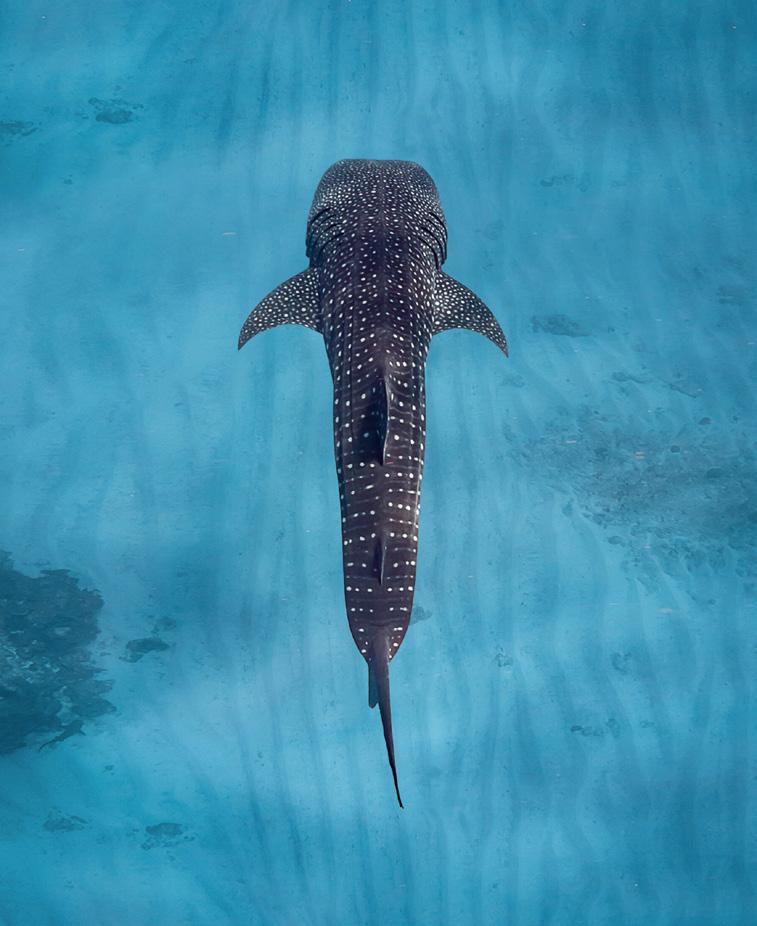
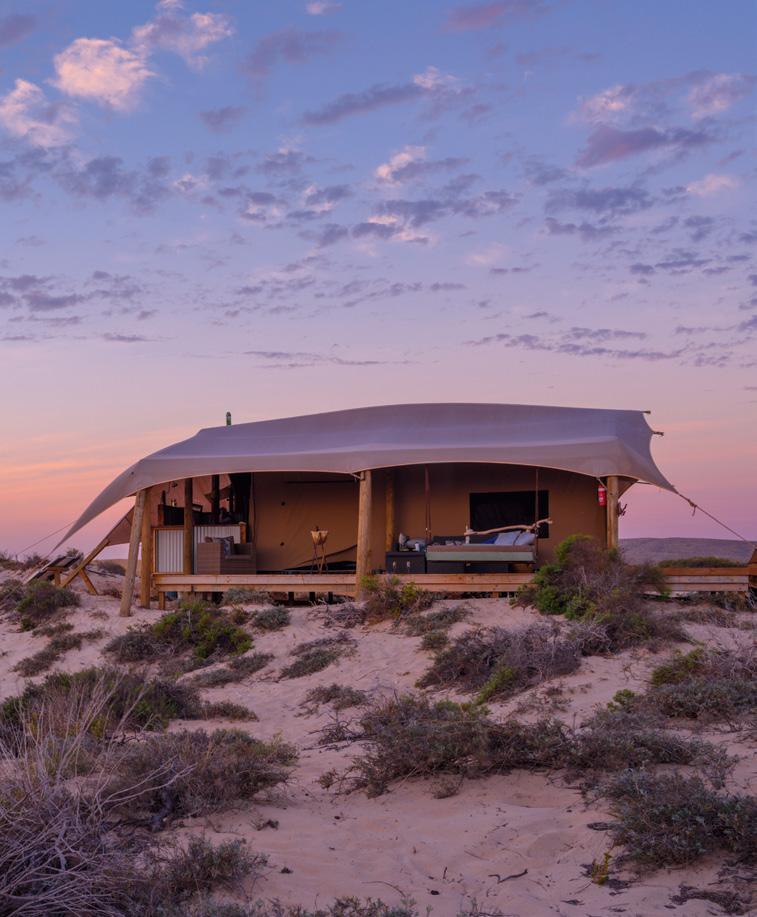
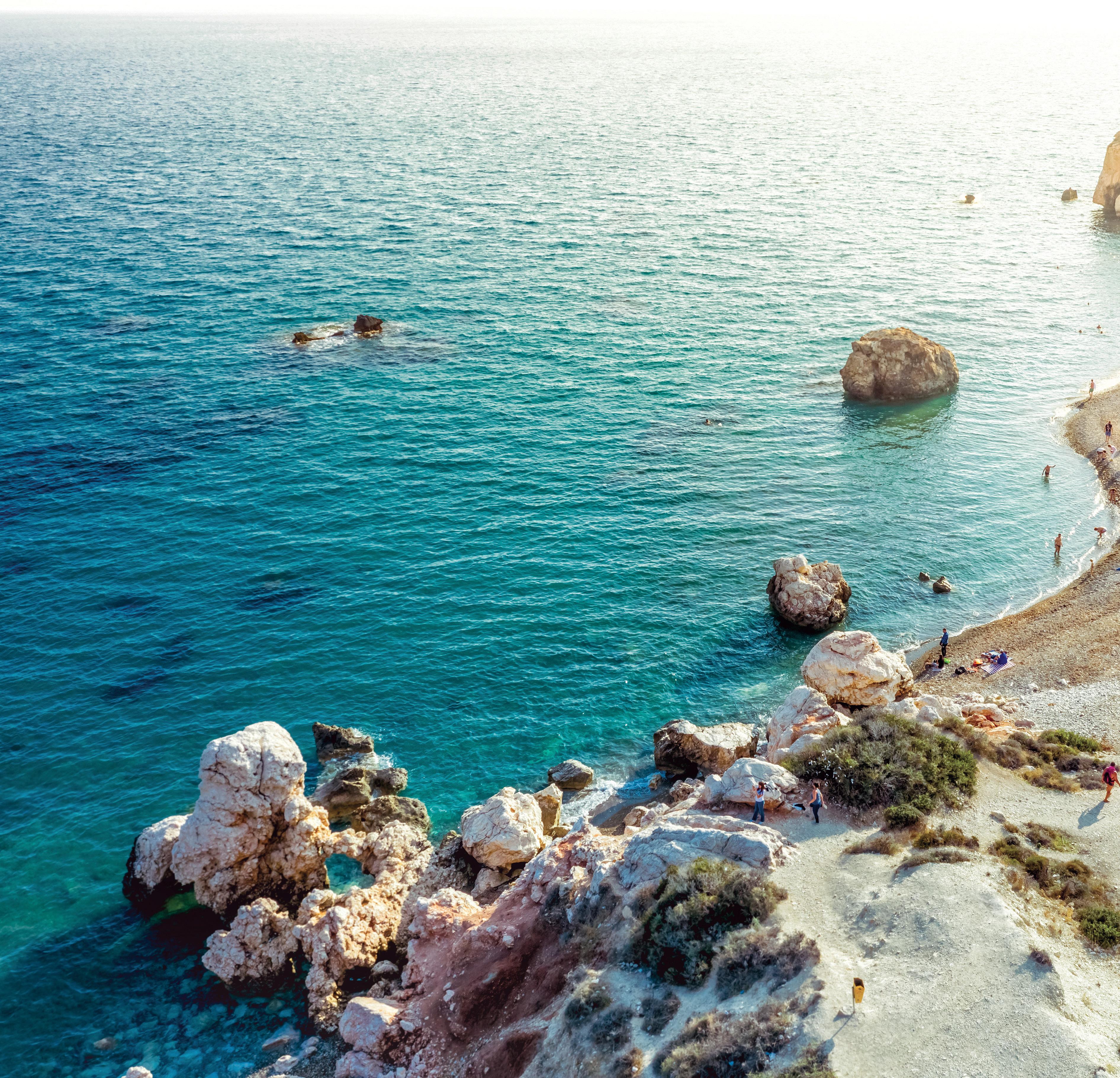


Known as the island of love, Cyprus is the setting for the new Netfix flm Find Me Falling, starring Harry Connick Jr. Christina Koullas visits the sets with the flm’s director and falls in love with an island that is every bit as photogenic as it appears on screen.
Filmmaker Stelana Kliris and I are standing on the clifftop where much of her new Netflix film Find Me Falling is set, and I might be taking the film title to heart seeing as my stomach flutters when we’re closer to the edge than I’d like. I’m surprised at how remote the area, only a little outside of the town of Peyia, in the Paphos region, feels. After all, this is an island where you can drive from the west – where we’re currently perched – to the east of the country in a matter of hours.
“Not many people know Cyprus, and they think it’s a Greek island but it’s so much more than that,” says Stelana, who describes her new romantic comedy as a “love letter to Cyprus”. Cyprus is an island nation in the east Mediterranean Sea, technically part of West Asia but with cultural ties far closer to that of southern Europe.
From our position on the precipice, I can see the teal waters of Lara Bay ripple at the base of the cliff and in the distance to the left lies Yeronisos, a tiny rock island that NYU archaeologist Joan Connelly has visited for the past 33 years to excavate “unparalleled” treasures from the Late Hellenistic period (when Cleopatra ruled over Cyprus).
Below us, to the right, lies White River Beach where green and loggerhead turtles lay their eggs in the summer; this important annual event created an inevitable deadline for shooting the film.
Other environmental considerations saw the crew build the movie’s quaint clifftop house in a factory, transfer it to the location a few days before shooting, and remove it as if it never existed when they were done.
When Stelana explains the advantages of filming in Cyprus, she’s also describing why visitors return to the country time and again.
“We have more than 300 days of sunshine a year and a great variety of locations that you can get to in a short amount of time,” she says. “Cyprus is rarely seen on the big screen. Outside of the usual tourist groups, it’s unexplored territory at the crossroads of Asia, Africa and Europe.” We head south for lunch to Oniro by the Sea on the Peyia waterfront, passing the Agios Georgios Church that also features in the film, and I meditate on the expansive ocean views. Public transport in Cyprus is as sparse as the rain, but as a driving destination, you’re rewarded with sea vistas, even on highways.
As we graze on an international menu of seafood kritharoto (orzo pasta), kefaloparmezana (Greek cheese) arancini and prawn salad, I come to understand exactly how the restaurant lives up to its translated name: “dream”. The shipwrecked Edro III, whose rusted hulk sits around 100 metres from our table where it ran aground in 2011, adds a touch of whimsy to this dining destination.
Across the cove from where we dine, sea caves peak out from underneath the bluff, which confident swimmers can access depending on the tides. A boat tour is a great way to explore the caverns with an experienced guide or to venture further afield to almost unfathomably beautiful sights such as the Blue Lagoon and St George’s Island around Akamas Peninsula National Park.
I finally return to my base in Cyprus, the nearby Coral Beach Hotel & Resort, to relax for the evening. The property in Peyia is where many of the Find Me Falling production crew and actors recharged during shooting. Although the hotel has its own private beach, the cocktails, sunbeds and crystal aqua waters of the adjacent pool call to me. I’m travelling in the hotter European summer months when the average maximum temperature is 30°C.
Later, I’m ambling to my guest room when the hotel’s assistant general manager identifies me as a solo traveller and invites me to the resort’s free weekly cocktail night (that runs during the busier tourist season). It’s a lovely way to meet new people and for
the hotel team to check you’re enjoying your stay (yes, I am).
Cyprus may be a divided country since the Turkish occupation in 1974, but the warmth and hospitality of the locals hasn’t waned. According to Harry Connick Jr., as he got to know the people and learn about the culture during filming, he “really fell in love with Cyprus”.
“The landscape is absolutely breathtaking and incredibly diverse; there’s mountains, ocean, there’s lush green, and there’s more desert-like topography,” says Harry. “Everyone we worked with really cared, not only about the project but about me, my family and my team. All of us have been treated with such immense respect that all we can talk about is ‘when can we come back?’.”
Like most relationships, Cyprus has a complex history with influences of the Roman, British and Byzantine Empires among others, but it has emerged more compelling and intriguing as a result. The Netflix film, premiering in July, is likely to attract a new era of visitors who find themselves falling in love with Cyprus, too.
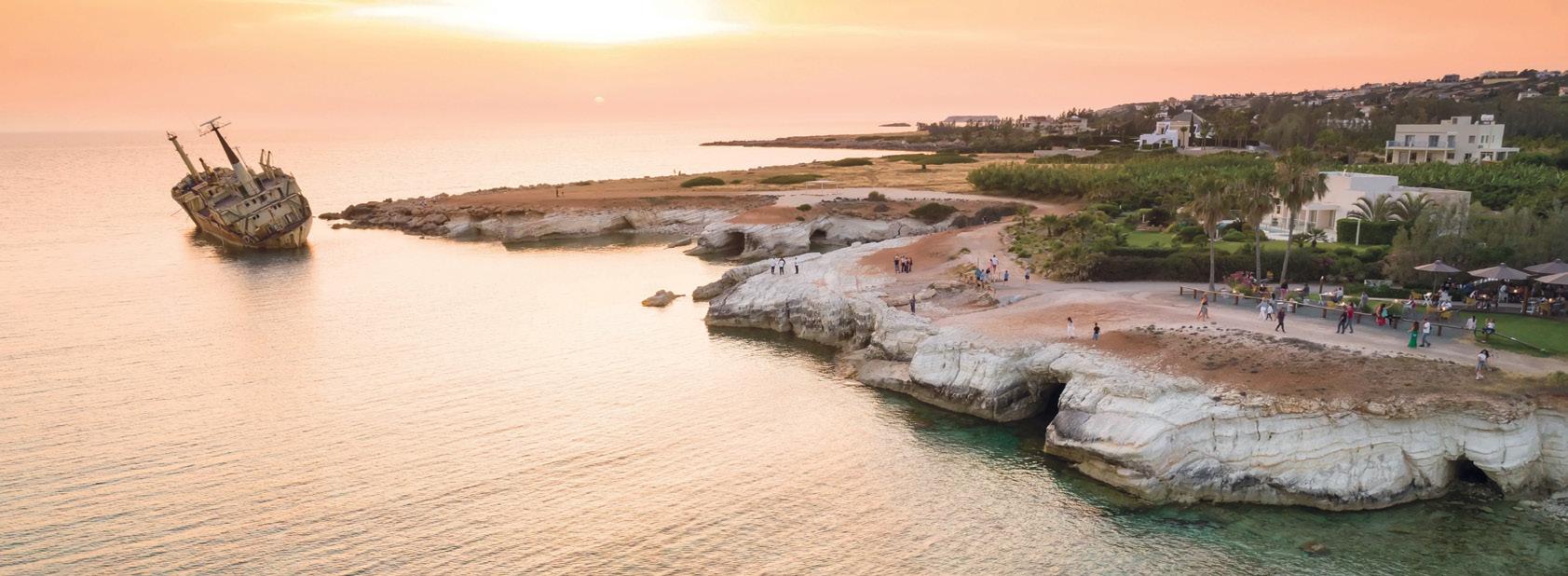
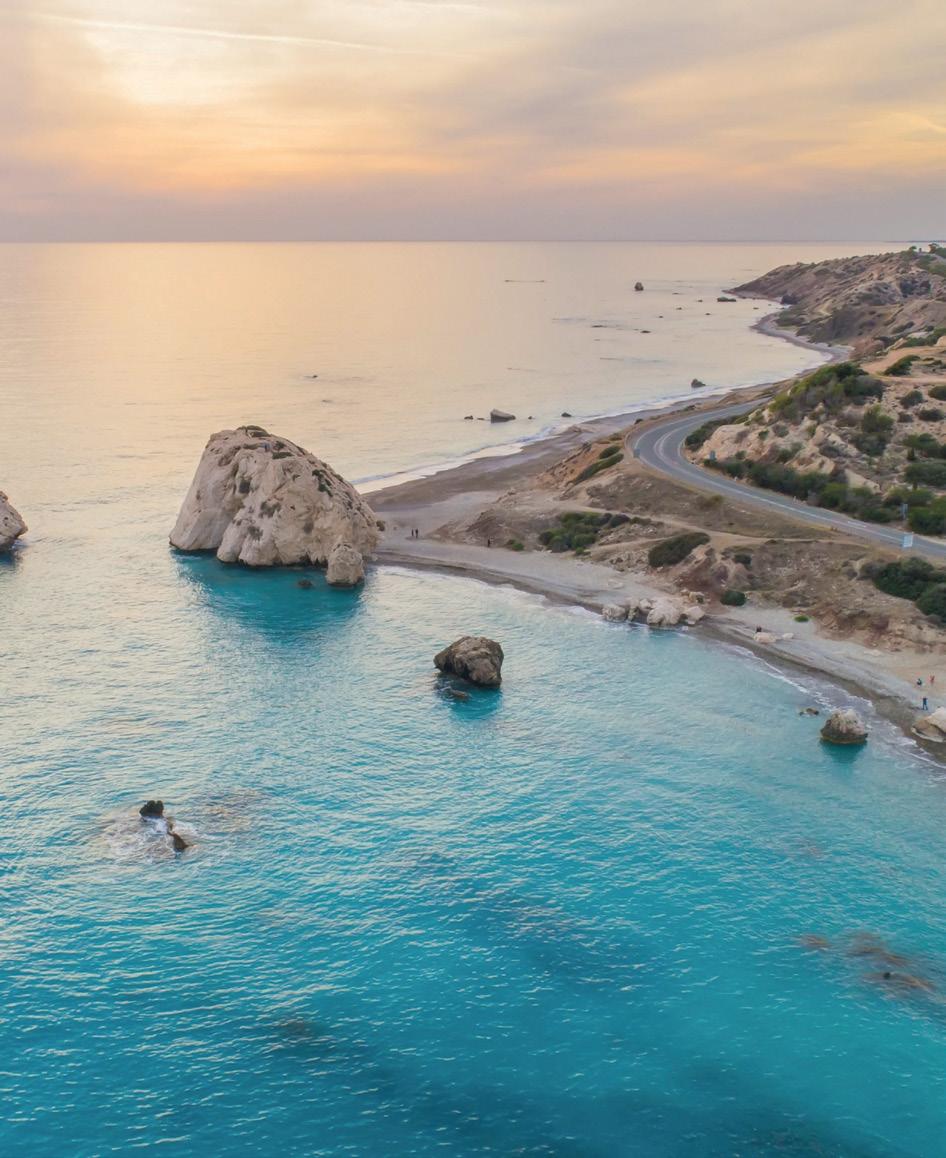
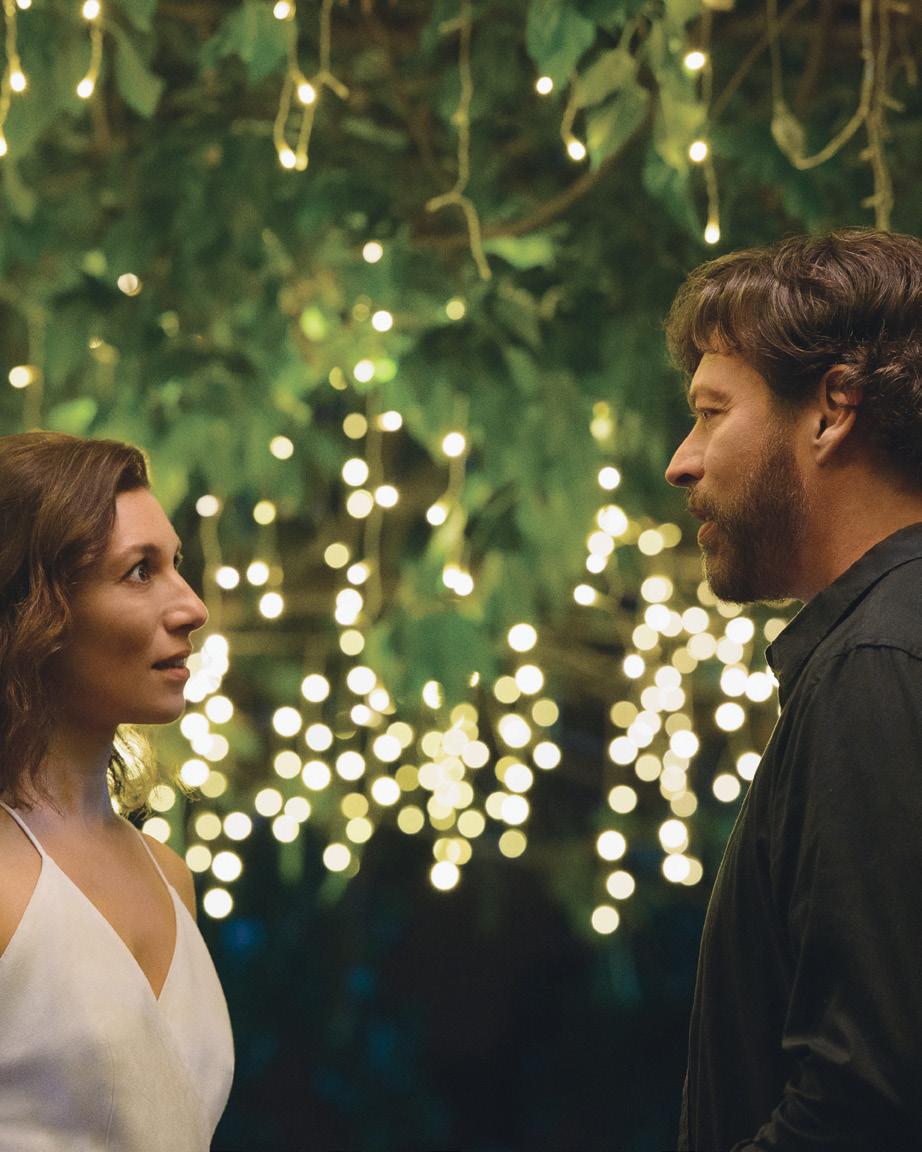
1. 2. 3.
OTHER FIND ME FALLING LOCATIONS YOU CAN VISIT OUTSIDE OF PAPHOS
Pezounofolia Beach, Paralimni – the location of some skinny dipping in the film… but keep your clothes on in real life.
Balcony, Nicosia – the tavern that appears in the film several times and hosts musical performances regularly.
Kaimakli, Nicosia – the historic backdrop for the “village” in the movie that borders the Turkishoccupied area in reality.

MT BULLER
Monte Morgan from pop duo Client Liaison has been skiing Mt Buller since he was a kid and, more recently, getting his apres ski on. He takes us on a tour of the village’s best drinks, dinner and dancing for when the lifts have ground to a halt for the day.

If there was any doubt that Monte Morgan loved Mt Buller you need only look to the music video for the Client Liaison single Feed the Rhythm filmed on the mountain. The video eulogises a classic Buller ski weekend, from the drive up the windy road to the village to skiing through the eucalypts with a few retro flourishes and a couple of black Labradors thrown in for good measure.
“I have been skiing there my whole life, my family have a lodge there, so I went up there as a child and now my child and my brother’s and sister’s children go up there and it’s this multigenerational thing,” Monte says.
“We have had parties up there, we have done shows there, we have done DJ sets, so we have got to know a lot of the locals and the staff and the good spots to find good skiing and good parties.”
What Monte loves about
Mt Buller is that it is a mountain for everyone not just hardcore skiers.
“The fact that it is just three hours from Melbourne means you can go even if you don’t love skiing, there is a strong community there and when the snow is good it’s the best mountain in Australia,” he says.
“It’s got awesome steep terrain and so much to explore; for me it feels like family. It really is Melbourne’s mountain.”
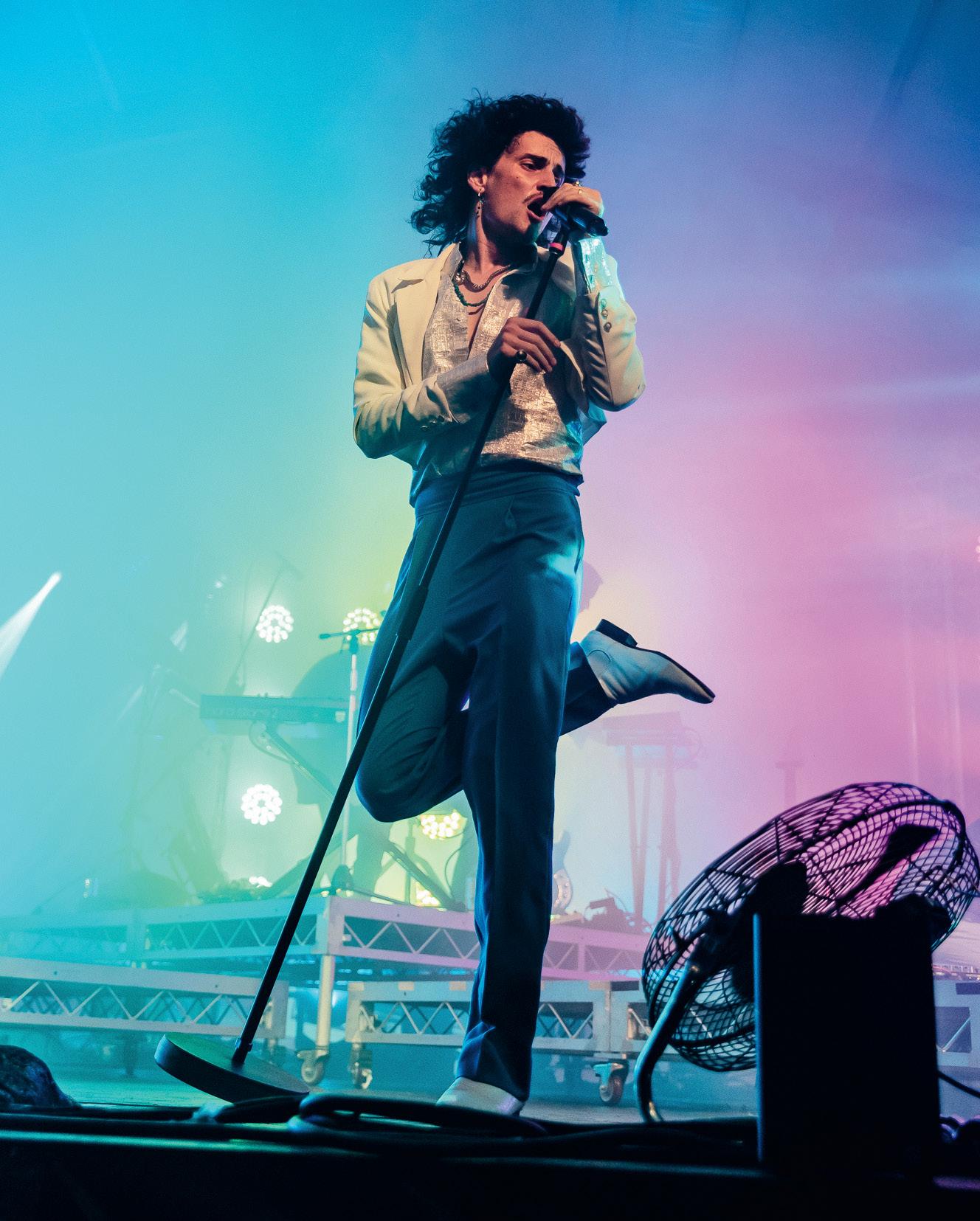


Kofler Hutte is located high on the slopes right next to the T-bar of the same name and is a great spot to rest and recharge from the action out on the slopes. “They have a great schnapps selection and good high-energy food to keep you going,” says Monte. “And it’s pretty nice when it’s sunny on the deck. Tirol, a bit further down the mountain is a good spot for a rest and has some pretty nice views over Mt Buller village.”
“A great free-skiing community event is the FreeBOM that happens on the Bull Run lift every year. They have music and they ask people to get all dressed up come down the run and they have a lot of commentary and a lot of fun,” Monte says. “Then the Cantina bar is just below it and people kick on and have food and drinks there, it’s great fun for all ages.” Buller also has a famous Retro Weekend where partygoers break out their best vintage ski onesies.

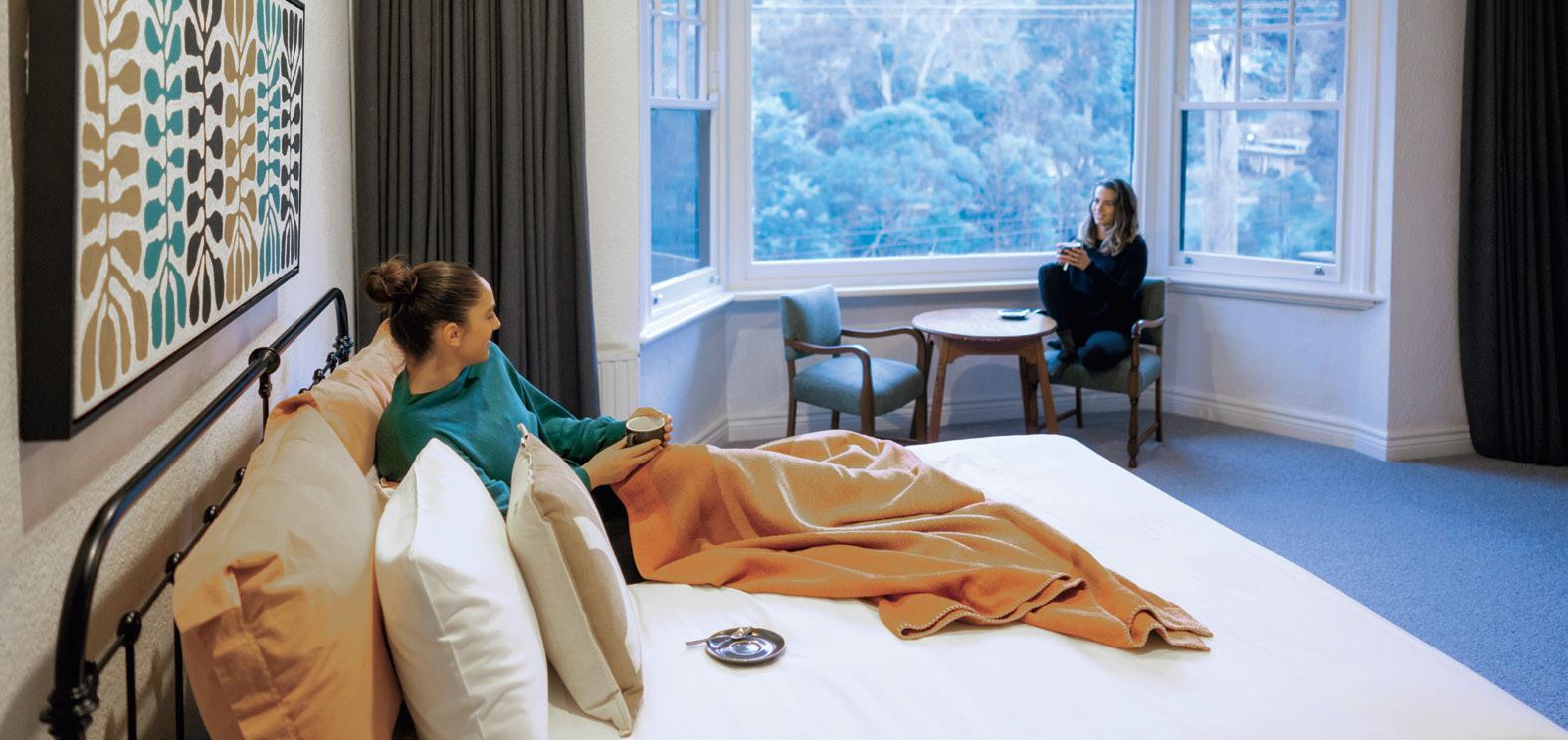
“Take the last lift up to the summit and you can watch the sunset and have a drink and ski home in the twilight.”
“Pension Grimus is the local spot and I love the bar there. It is so small, the old school Austrian bar, and it means that everyone is packed together. And the restaurant, Kaptan’s, is one of the best places for a meal. It was very special when Hans Grimus used to walk around and talk to everyone and now [Hans’ son and Olympic skier] Anton is there and he also runs the cafe.” Grimus Grind is a ski-in ski-out coffee window in Pension Grimus.
At the Moosehead Whisky and Blues Bar you get live music, craft cocktails and great bar snacks in a snow-bound speakeasy. “The way you go downstairs makes you feel like you are in a cool cave, I have some good memories there.”
The Alpine Retreat Hotel offers a classic pub menu for dinner and a bed for the night, right in the Mt Buller village, but it is the Off-Piste Bar with its pool table that Monte recommends. “This is definitely my top pick for kick-ons.”
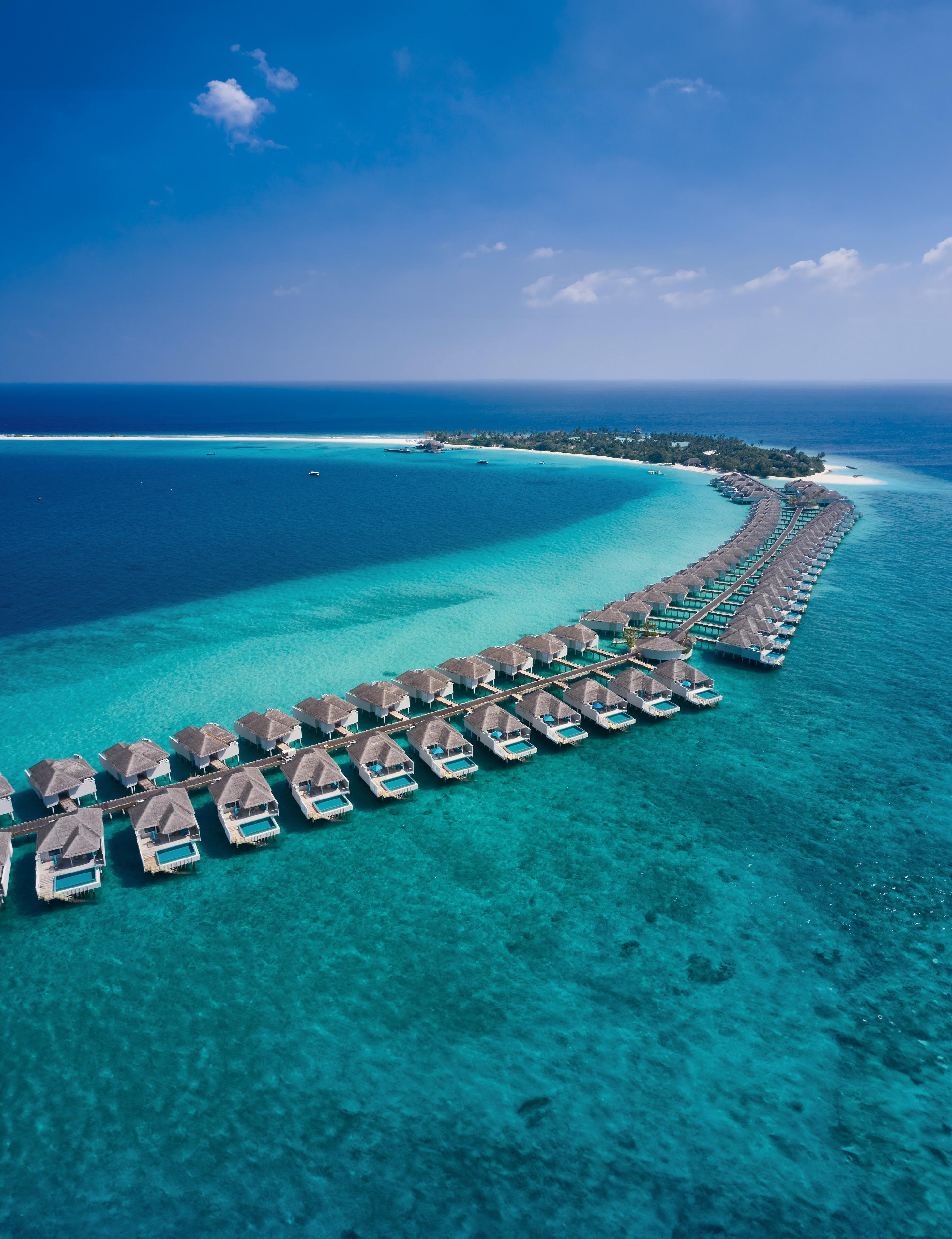
IN PARTNERSHIP WITH

Tis award-winning Maldivian resort has a stellar stargazing experience and attracts A-list celebrity visitors with its classic local luxury, azure waters and opulent overwater villas.
Seaside Finolhu Maldives resort, situated in the crystal-clear waters of Baa Atoll in Maldives, is named after the dhivehi word for sandbank. This is because Finolhu is home to the longest sandbar of any Maldivian resort.
The resort’s unique geographical location gives visitors access to stunning reefs, submerged cliffs and so-called “thilas” – small, round underwater hills – that offer a natural marine habitat for about 1200 different reef species
including manta rays and whale sharks. It’s no coincidence that Baa Atoll has been declared a biosphere reserve by UNESCO.
It’s also not hard to see why Finolhu’s four pristine islands, long beaches, overwater villas and diverse restaurants have got the attention of Hollywood’s great and good and it has fast got a reputation as a place where celebrities come to play.

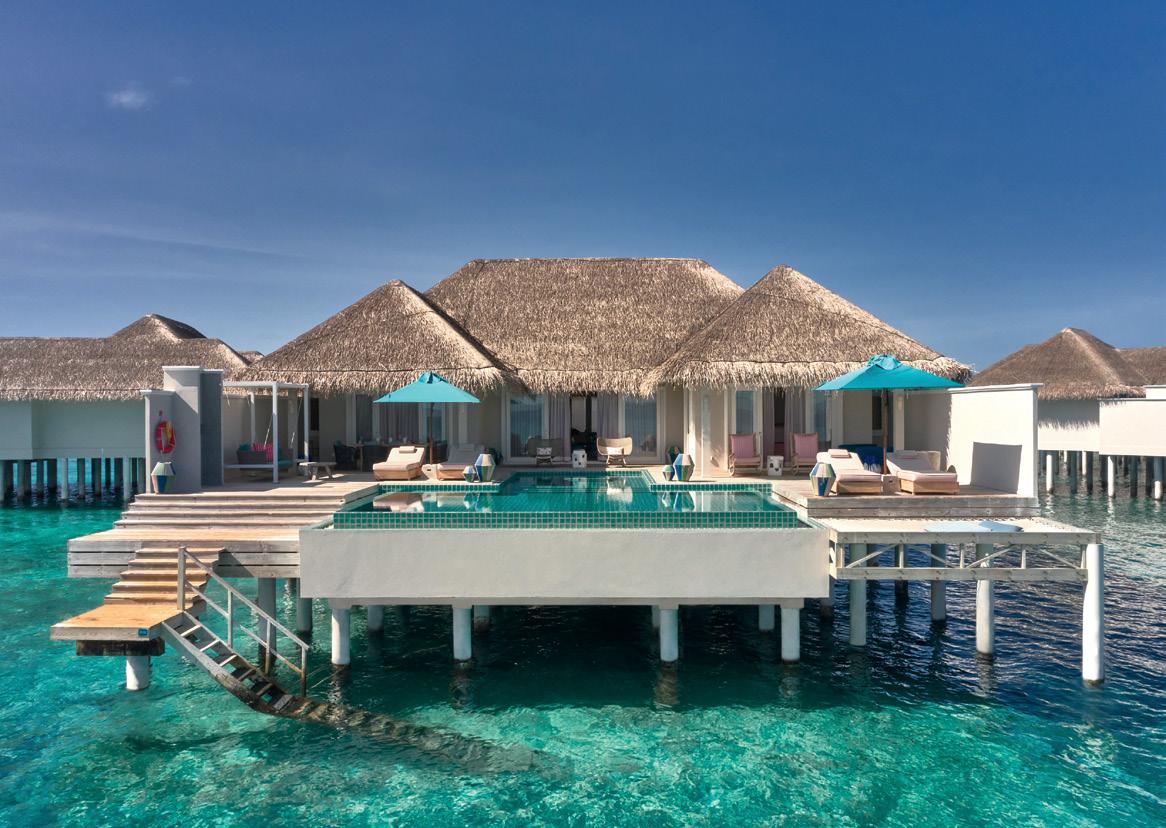
True indulgence awaits those who secure a booking in the luxurious two-bedroom “rock star” villa. Spanning a whopping 460 square metres, this villa boasts two spacious master bedrooms, a generous eight-metre infinity pool, a private bar, cabana swing, a Marshall sound system you can turn up to 11 and a personal buggy to get around with ease. With showstopping ocean views as far as the eye can see, this isn’t simply one of Finolhu’s best villas, but may be one of the best in the Maldives.
It is thoughtful touches like this that make Finolhu a celebrity magnet. The award-winning resort (listed as one of the Maldives best by Conde Nast Traveller) has welcomed a plethora of famous faces to its shores. The Beckhams, Cara Delevingne, Leonardo DiCaprio and most recently Nicole Scherzinger are just a start to the long list.

Great food is a key element of a stay at Finolhu. The resort has incredible variety when it comes to choosing your next meal but wherever you choose to eat the menu will be fresh, local and involve incredible craftsmanship.
Dine while pods of dolphins frolic nearby at Beach Kitchen, the culinary centre of the resort. Indulge in modern Japanese fare at Kanusan, the candle-lit, date night spot. Take a culinary adventure across North Africa and the Middle East at Arabian Grill or grab simple seafood at the Crab Shack.
For drinks try the casual Beach Club with live music and DJs or for an espresso visit the Milk LAB.
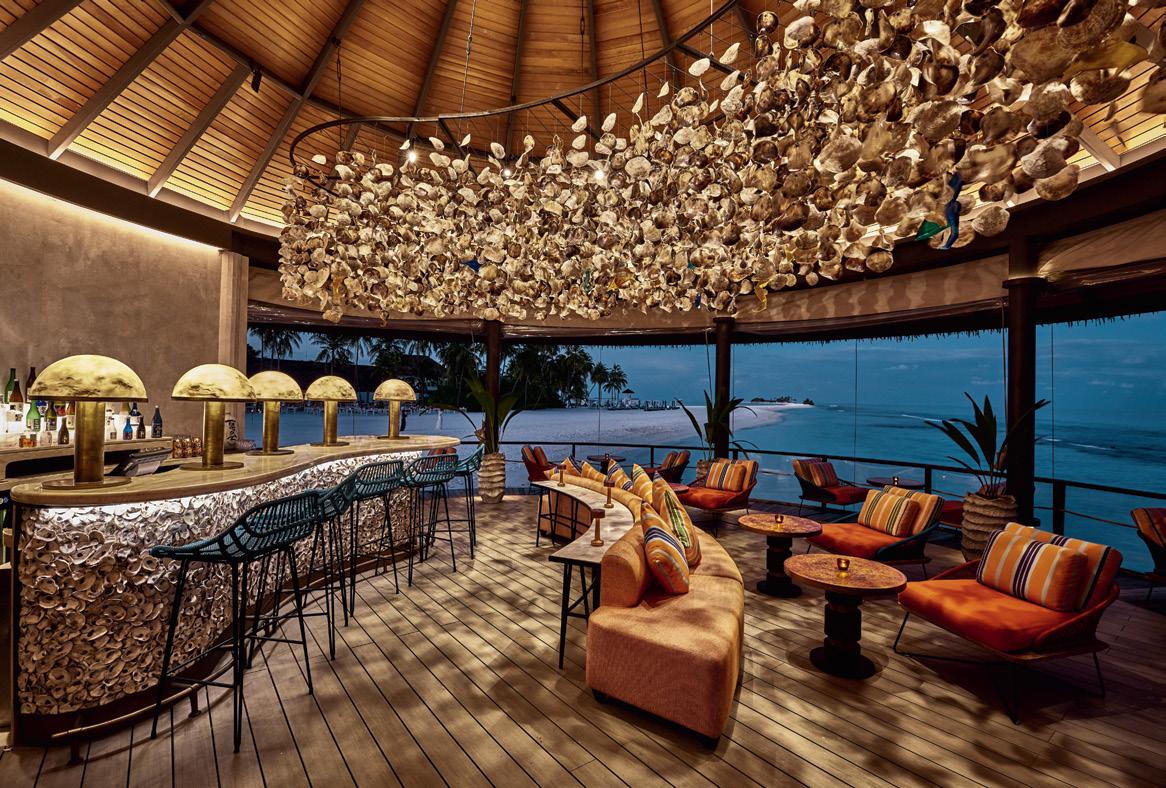
The resort also houses the Crab Shack dining concept where guests can stroll across the sandbank, or take a quick ride in a traditional wooden dhoni boat, to the palm-tree thatched-roof of the resort’s fresh seafood pop-up. Watch the sea lap the sandbank shore as you sample soft shell crab tacos and salmon ceviche while sipping chilled cocktails.
Tucked in behind the Crab Shack is one of the best ways to stargaze in the Maldives. Guests can spend the night in a beach bubble, a temperature-controlled pod with polished-wood floors, an ensuite and your experience comes with a private beach barbecue and beach breakfast. At night, recline on your double-bed with fine linens and gaze through your very own giant crystal ball at the Milky Way.
Whether you want to see stars, rub shoulders with stars, or simply feel like the star of your very own luxury getaway, Finolhu ofers you a world of choice.
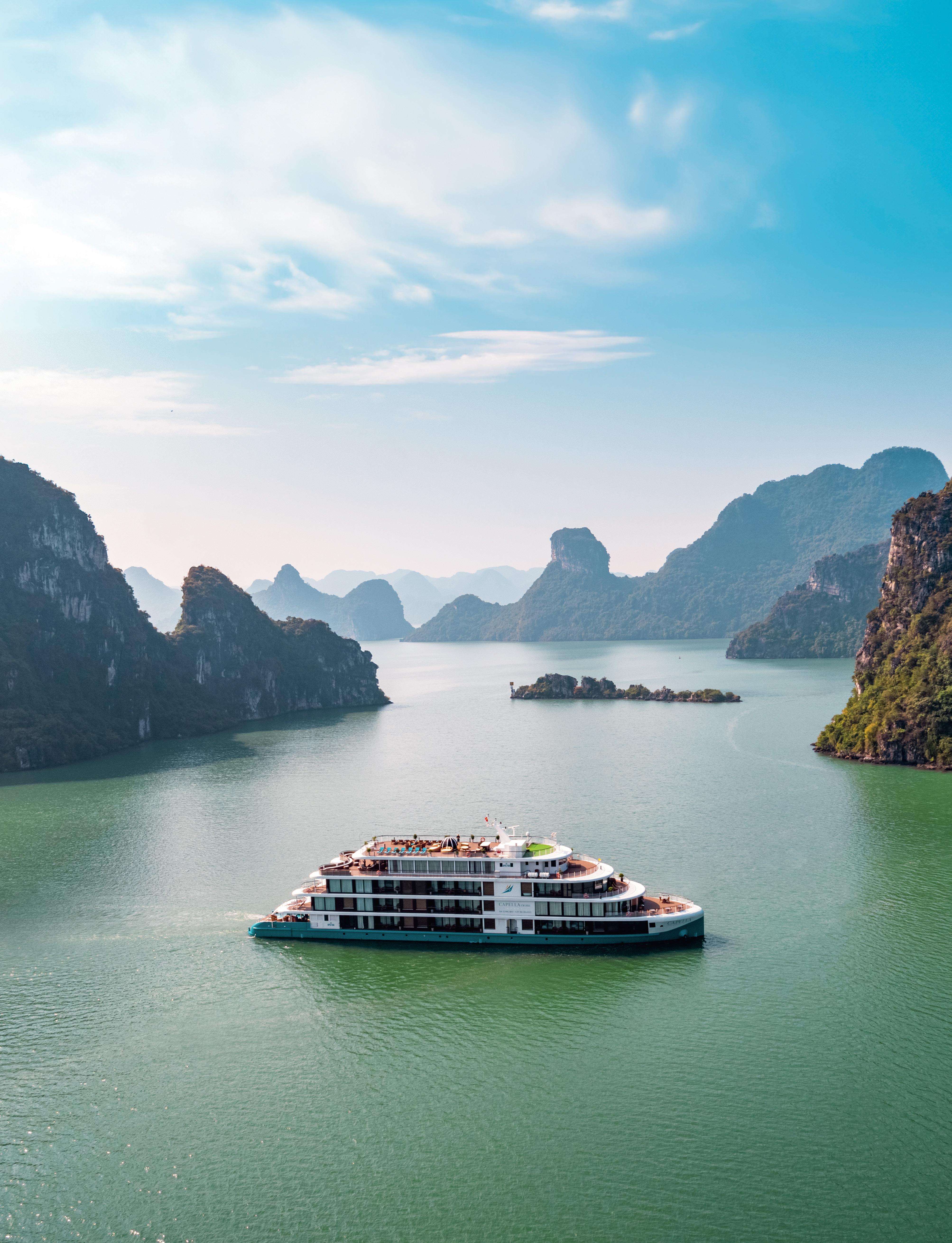
HA LONG BAY
On a super yacht cruising around the limestone islands of Ha Long Bay, Luxury Escapes co-founder, Adam Schwab fnds a cruise perfect for all generations, as well as a sea of great food, family fun and village visits.

My last trip to Ha Long Bay was in 2006. It’s fair to say a lot has changed in eighteen years in Vietnam’s north (strangely Saigon was much more like I remembered it). Hanoi, always bustling, seemed even more so. Thankfully though, the Vietnamese Government, with some assistance from Vietnam’s richest person (the multi-billionaire property and electric car mogul, Pham Nhat Vuong) has made significant investments in infrastructure.
One of the benefits of these investments transformed the drive from Hanoi to Ha Long Bay from a somewhat gruelling four-hour crawl into little more than a two-hour drive down a modern highway.
Arriving at Halong Marina is a hive of activity. A few decades ago, the only way to see Ha Long Bay was on a junk boat. The term is somewhat misleading, of Chinese origin the original junk boats had a fully battened sail and by the early 2000s, ranged from basic to almost luxurious. Now, in addition to more than 500 junk boats, there are more than thirty far larger, luxury yachts, most of which require a ten-minute tender to access because they’re too large to reach Ha Long’s port.
Ha Long Bay is an area home to almost two thousand eroded limestone, or karst, islands, protruding from the water in a manner that feels like it was created for a Hollywood movie (Kong: Skull Island was filmed here in 2016). Regardless of the time of the year, the UNESCO World Heritage site is almost always overcast.
We boarded Capella (not to be confused with the uber-luxury hotel brand), which is

a combination of luxury river boat and super yacht. Vietnam has invested heavily in luxury in the past few years and it shows. Service is genuinely five-star with the higher-end suites having their own waiter and butler. As you walk onto the ship it feels like you’re entering a 1920s style private members club – the floors are a sea of black and white tiling with dark brown wooden panels. I half expected someone to walk down the corridor wearing a robe and smoking a pipe.
The rooms themselves vary from comfortable to comically large – we’re in a 52 square metre La Suite De Capella, around the size of a smallish one-bedroom apartment. The 92-square-metre Owner’s Suite, in our sailing occupied by a lovely couple from Byron Bay, is positively gigantic.
Capella is very much in expansion mode – its maiden boat debuted in 2020 and a second boat is due to launch later this year, with a further six planned for the next few years which will make it the largest and most
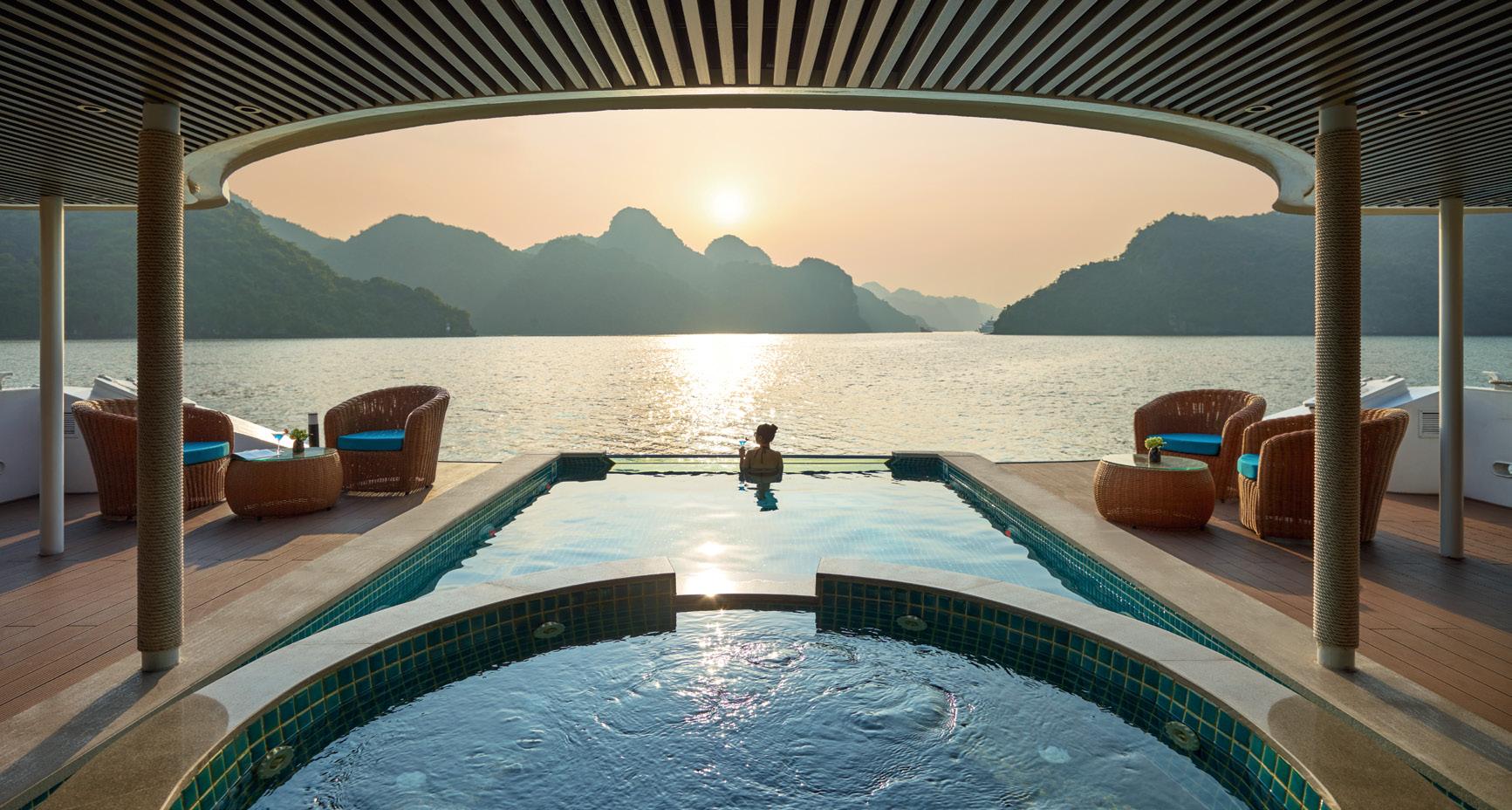
luxurious operator in Ha Long Bay.
The passengers aren’t exactly what you’d expect for such a luxurious vessel. Our sailing is very multi-generational; out of 64 passengers I count more than a dozen children (including two of our own). The ship has three genuine family rooms which encourage the younger crowd. Future Capella ships will be even more high end, with a mooted adults-only, uber-luxury vessel also well into planning.
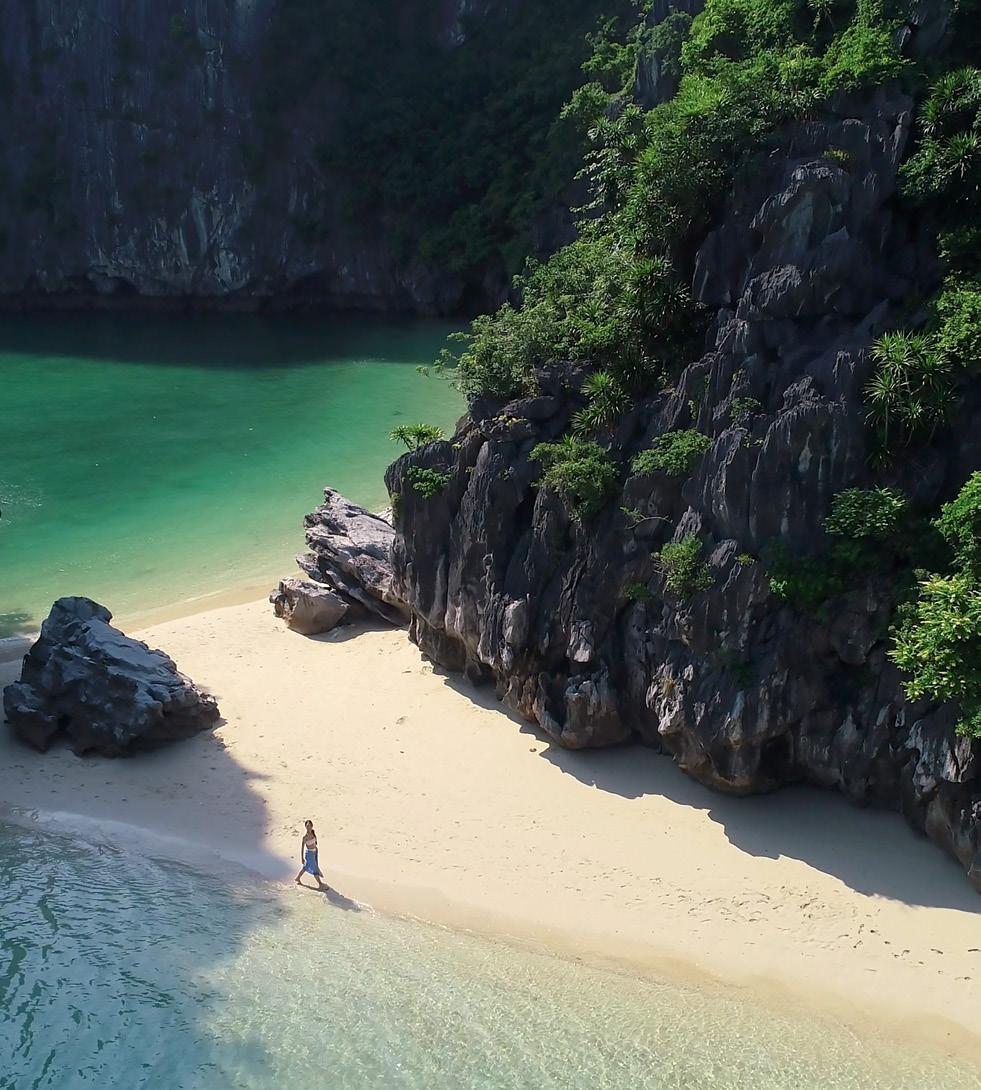
Luxury Escapes allows you to explore thousands of incredible cruise offers from boutique operators like Explora, to bigger cruise operators like Royal Caribbean and newer offerings like the Disney Cruise Line.
Unsurprisingly for Vietnam, food is a real focus. The main dining room seats around 65 guests and feels like a high-end restaurant. Lunch is a combination of buffet and a la carte with waiters adeptly catering to unusual dietary requests. Delicately plated sushi (with some of the most powerful wasabi I’ve ever tasted) combines with more local fare, including seafood and meat. Dinner is fully a la carte, starting with summer rolls, then a delightful squash soup prepared with tiny dollops of peanut butter and apple squares – it sounds strange but tasted delicious. Main course for our vegetarian preference was tofu with a spicy jus.
After lunch we spent some time kayaking around the islands – huge limestone figures, some more than 200 feet in height. Somehow, trees grow almost horizontally from the rock, confounding common sense. Locals explain that the limestone is soft enough to allow the trees to grow, while providing plenty of stored water. However nature managed this feat, the result for the lucky few who get to experience it is magnificent. Back on the boat after our paddle, the staff create a huge waterslide from the second deck (with a hose providing lubrication). The initial rush as you speed into salty water provides quite a shock. Seeing
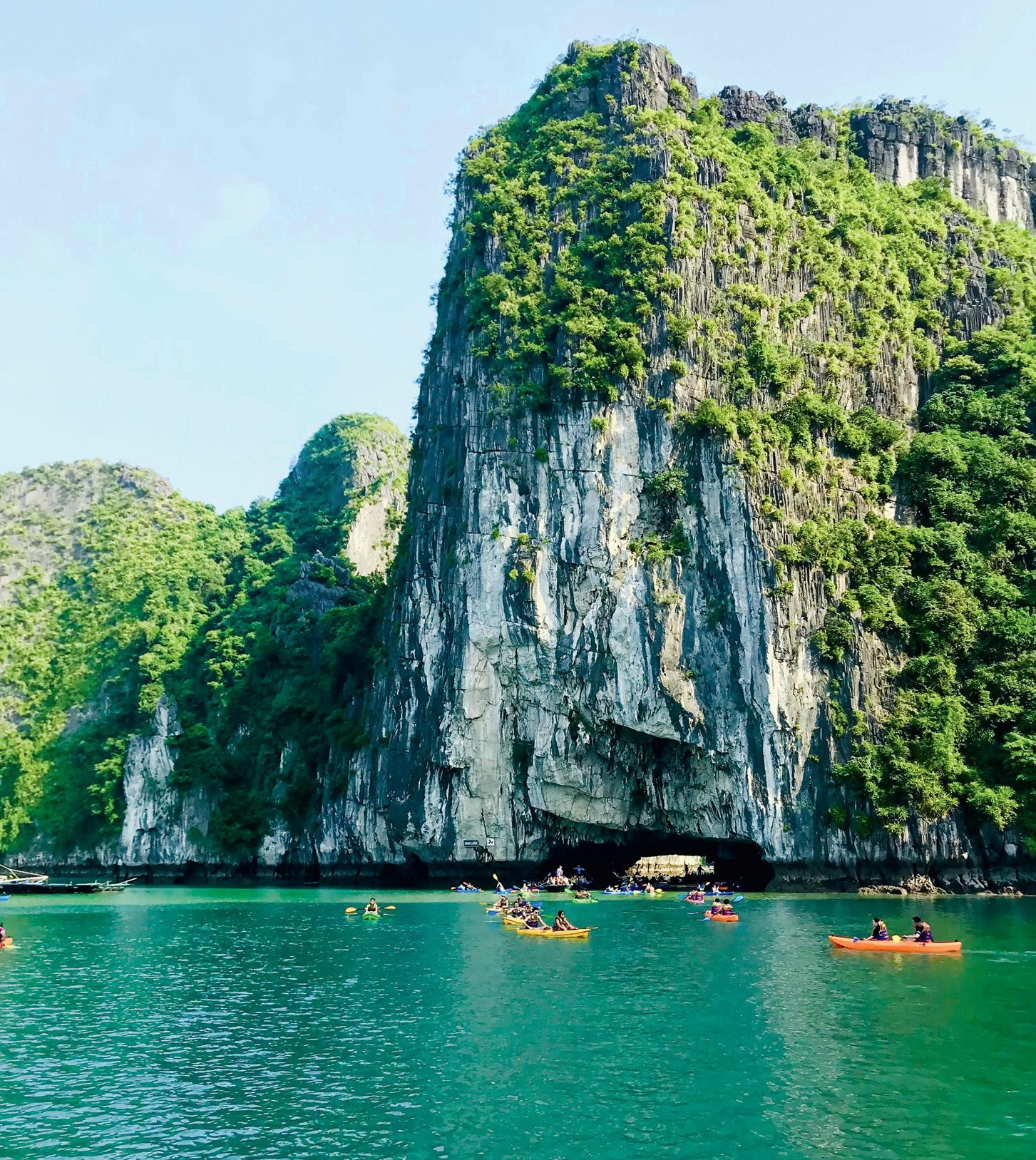
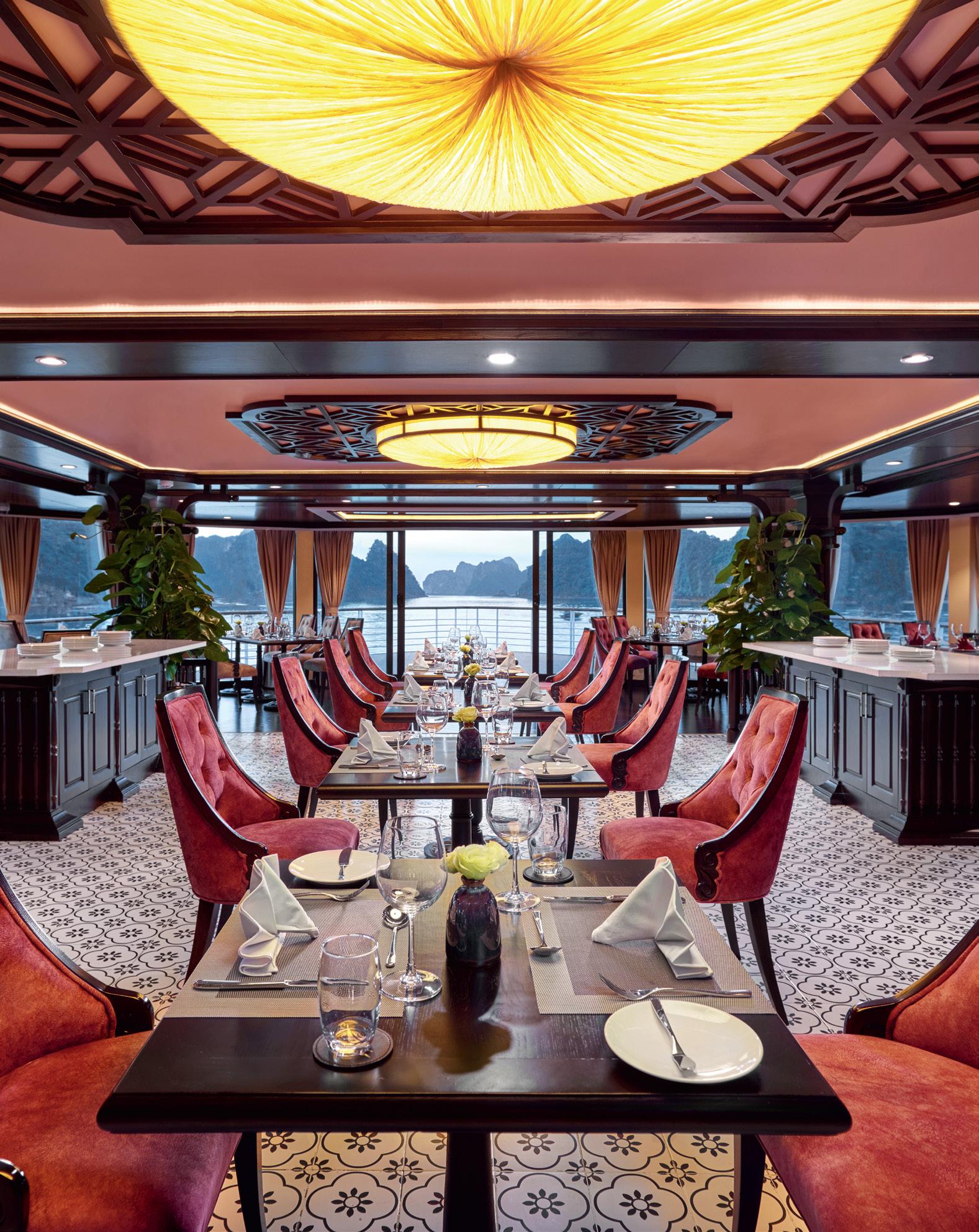
both grandparents and young kids fly down the slide (which is exclusive to Capella) is quite an experience.
Day two starts early – an optional tai chi class at 6am (there are one-, two- or three-night options – we stayed two which was perfect, a slight majority stay one which is definitely too short). For two-night guests, you do a shore excursion to a local village called Viet Hai. Guests can choose between a leisurely six-kilometre round trip bicycle ride (or an even more leisurely electric car). While touristy, the experience of visiting a traditional Vietnamese home and riding through buffalo-filled fields was quite lovely.
Ha Long Bay cruising has come a long way in the past few decades and whether you go by junk boat or luxury cruiser, it is a Vietnam experience not to be missed.

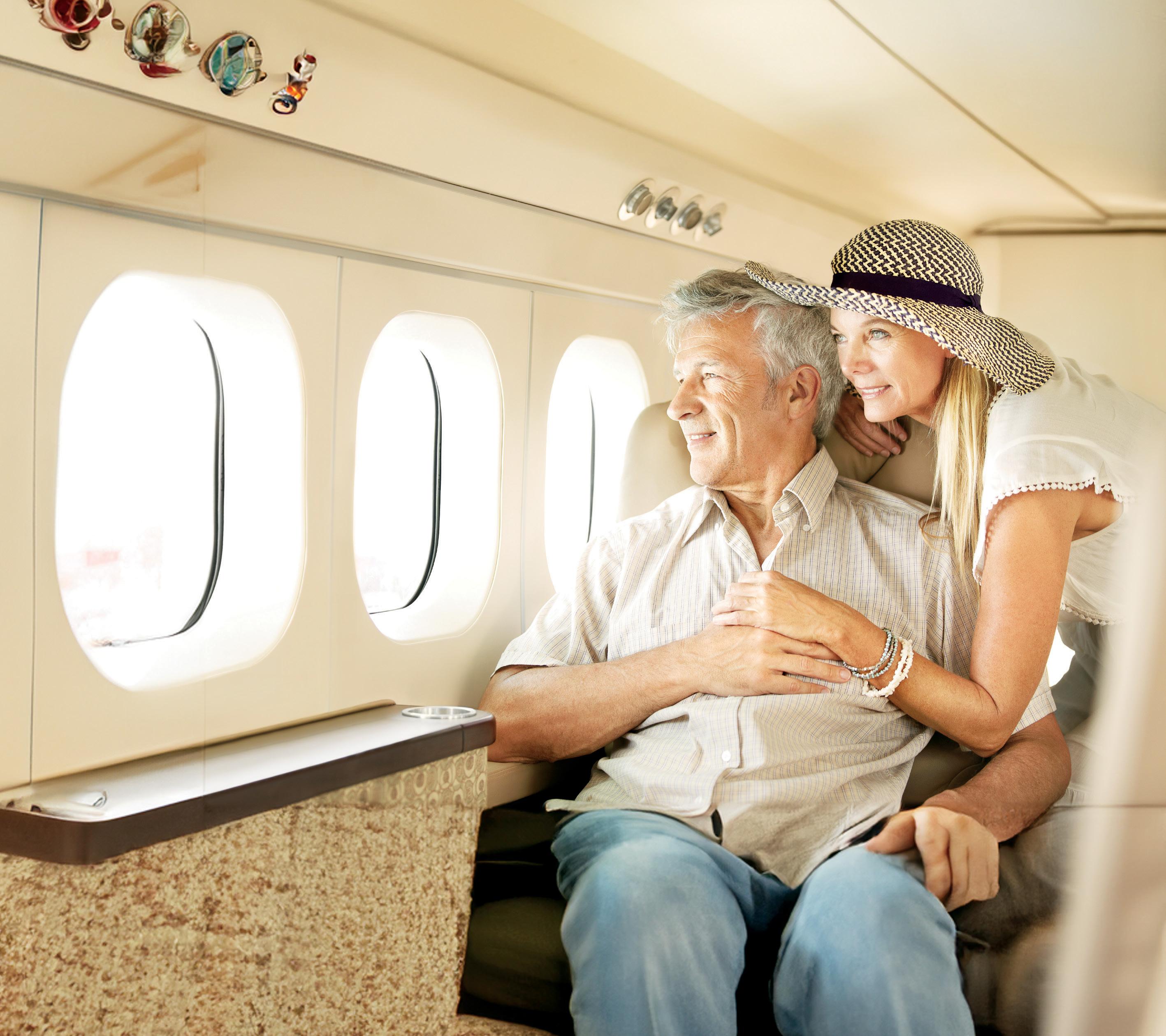
Bali has seen an outpouring of new hospitality venues of late, so travellers might need to consider a longer stay to squeeze in their old favourites as well as try out some of these new additions. Danielle Smith shines the light on the new stars in the dining scene on the Indonesian island.
Driven by childhood memories of his grandmother’s Indonesian cooking, Michelin-starred chef Syrco Bakker relocated to Bali from Europe with a desire to create food highlighting local producers and heroing quality and sustainability. These producers form an integral part of the story behind every plate, or “moment” and each dining moment links to deliver an unforgettable culinary experience. Chef Syrco and his team have created a beautifully warm space, to enjoy exceptional dining. Both aesthetically and through their thoughtful, knowledgeable and seamless service. Also check out Syrco Basè Ku offering a Chef’s Table for up to 14 guests, and Syrco Basè Bar where it is all about cocktails and small bites.
This new gem in Pererenan’s expanding dining scene feels elevated and refined, yet relaxed and comforting. The space is colourful and quirky and the menu is all about fusion. My personal favourites are the squid ink rice on the dinner menu, the steak tartare with gochujang, quail egg and crisp nori for lunch, as well as their awesome version of eggs Benedict for breakfast. Cocktails are deliciously original.
Meanwhile, back in the original Locavore space in central Ubud, there has been a plant-based takeover. Herbivore is an “All Flora, No Fauna” tasting menu celebrating the herbs, spices, and seasonal fresh produce of Bali. On offer are five or seven vegan courses of exceptional creativity. There is a lot of personality to Herbivore’s tasting menus, exploring many exciting ingredients and flavour profiles.
At Numero Quattro you’ll find pasta dishes like casarecce with cavolo nero and pangrattato, oxtail lasagna with a parmigiano bechamel, rocket and stracciatella, maltagliati (pasta from the Emilia-Romagna) with beef shin, pork neck and Italian sausage. Grill selections like lamb arrosticini (skewers) with oregano salsa verde. Comfortable every day dining a stone’s throw from the sands of Echo Beach.
Like we needed another reason to visit The Mulia, but now we have one. Cannelé Pâtisserie opened within The Mulia in January, and offers the most indulgent, luxurious, exquisite French pastries in Bali. If you’re staying at The Mulia you will be able to immerse yourself in this sweet opulence every single day, but Cannelé is also open to the public. A wonderful addition to the dining options at this beloved resort.
2
Bali locals thought the world was coming to an end when they heard Locavore was closing its doors last year. Luckily, they launched Locavore NXT on the outskirts of Ubud. Starting in their food forest, guests move through a fermentation room to an underground mushroom den, and onwards to an open kitchen dining area and the 20+ dish degustation. They also have onsite cabins.
Within the Potato Head village in Seminyak, recently opened Dome immediately skyrocketed to stardom due to its energetic space combining art, music, wine and stellar food. The dishes are paired back, but super smart. Incredibly knowledgeable service lifts the experience even further. Dome is definitely the kind of place to settle in to. Graze and enjoy a great range of natural wines by the glass.
It’s a weird feeling, walking through a bustling restaurant to get to another restaurant. It kind of makes you feel like a VIP. Hawker Bar & Eatery, hidden behind the courtyard of Mason, in Canggu, serves flavoursome small plates inspired by the street vendors of Asian night markets. Also on offer is a sophisticated cocktail menu.
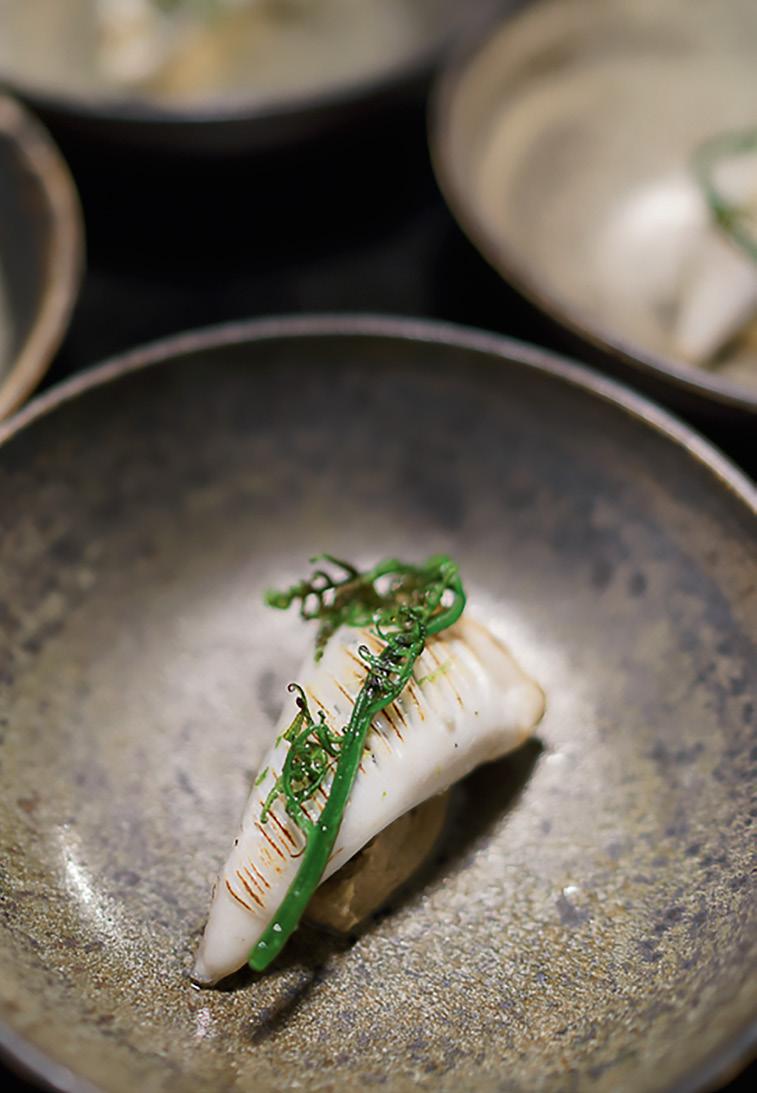

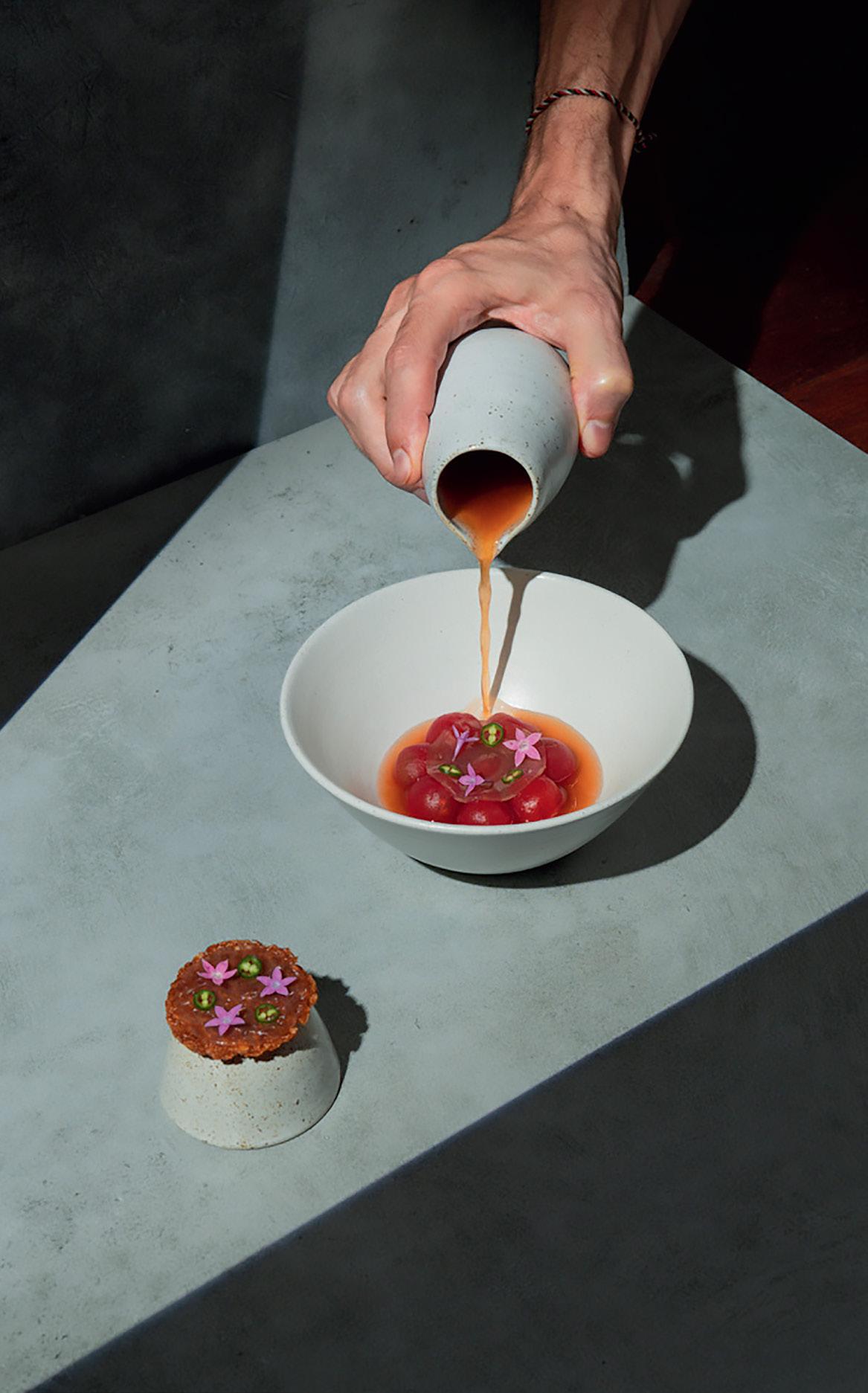


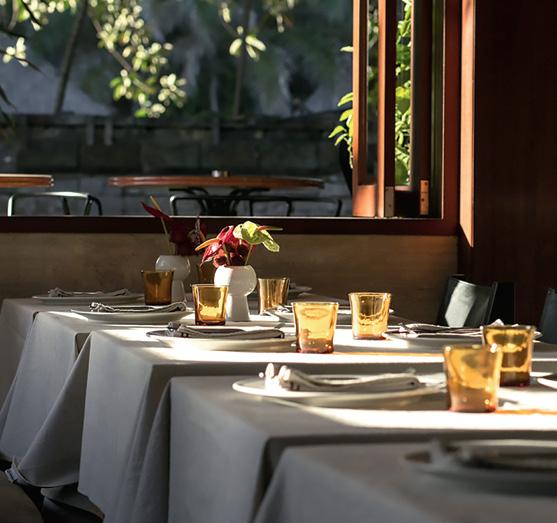
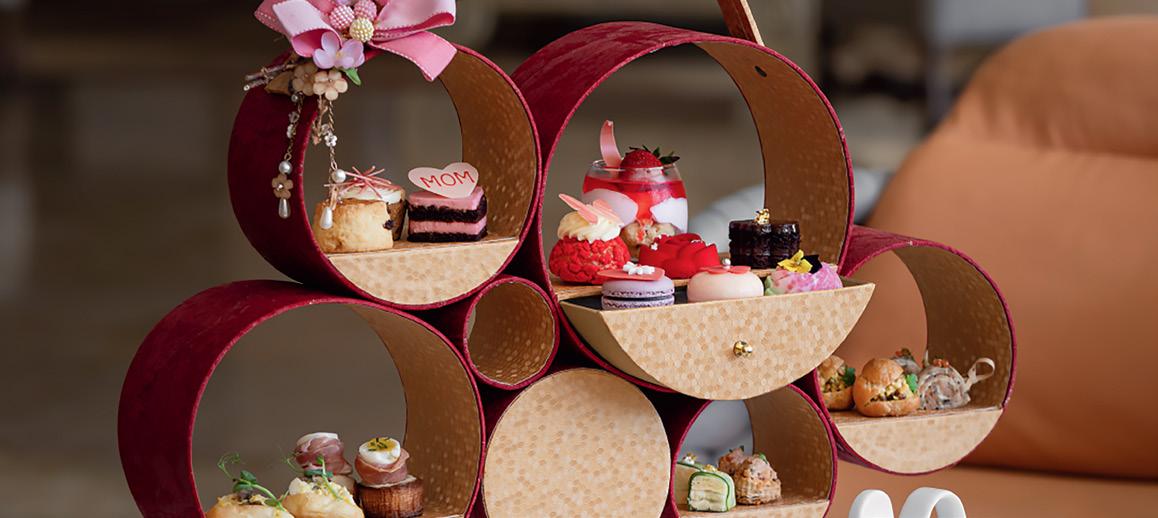

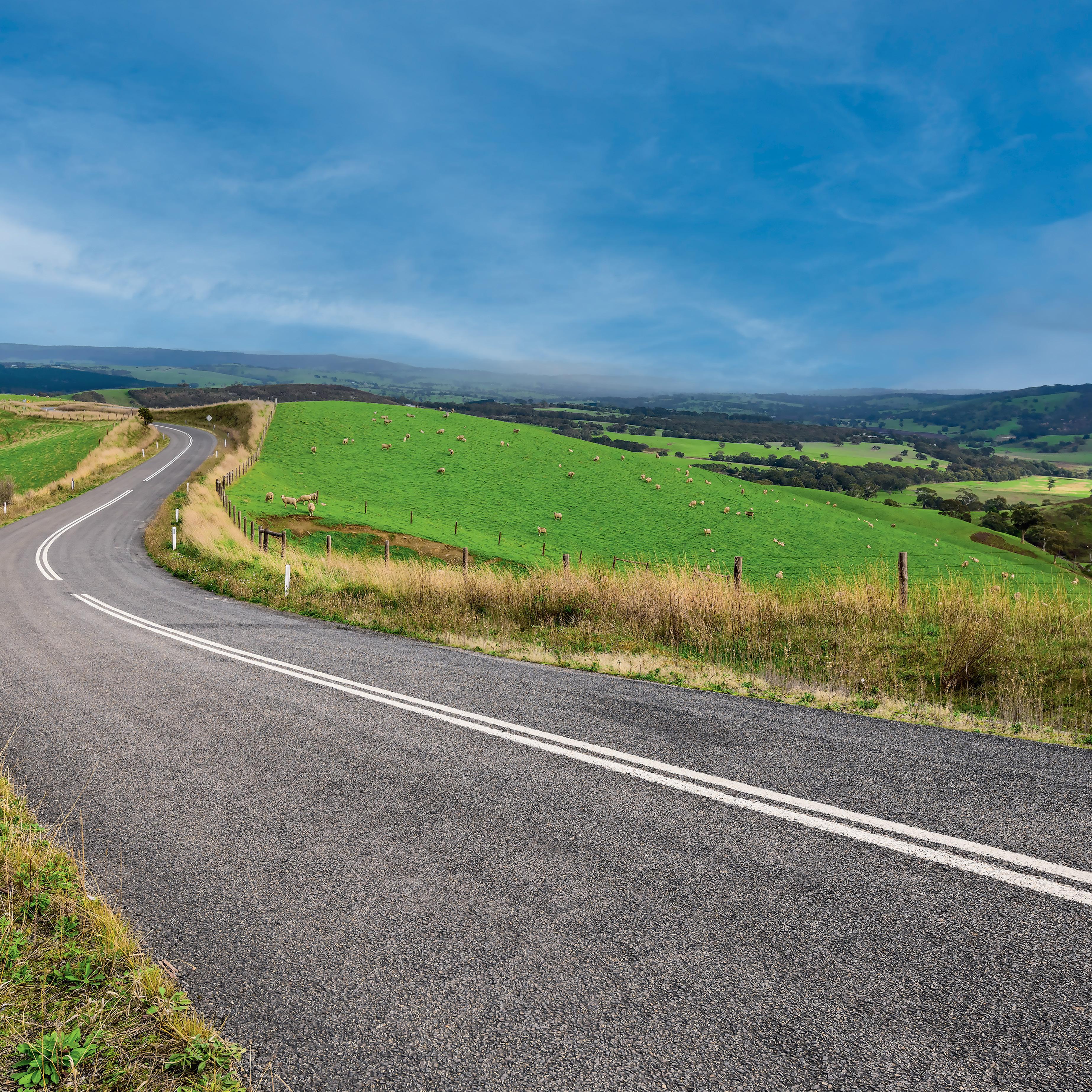
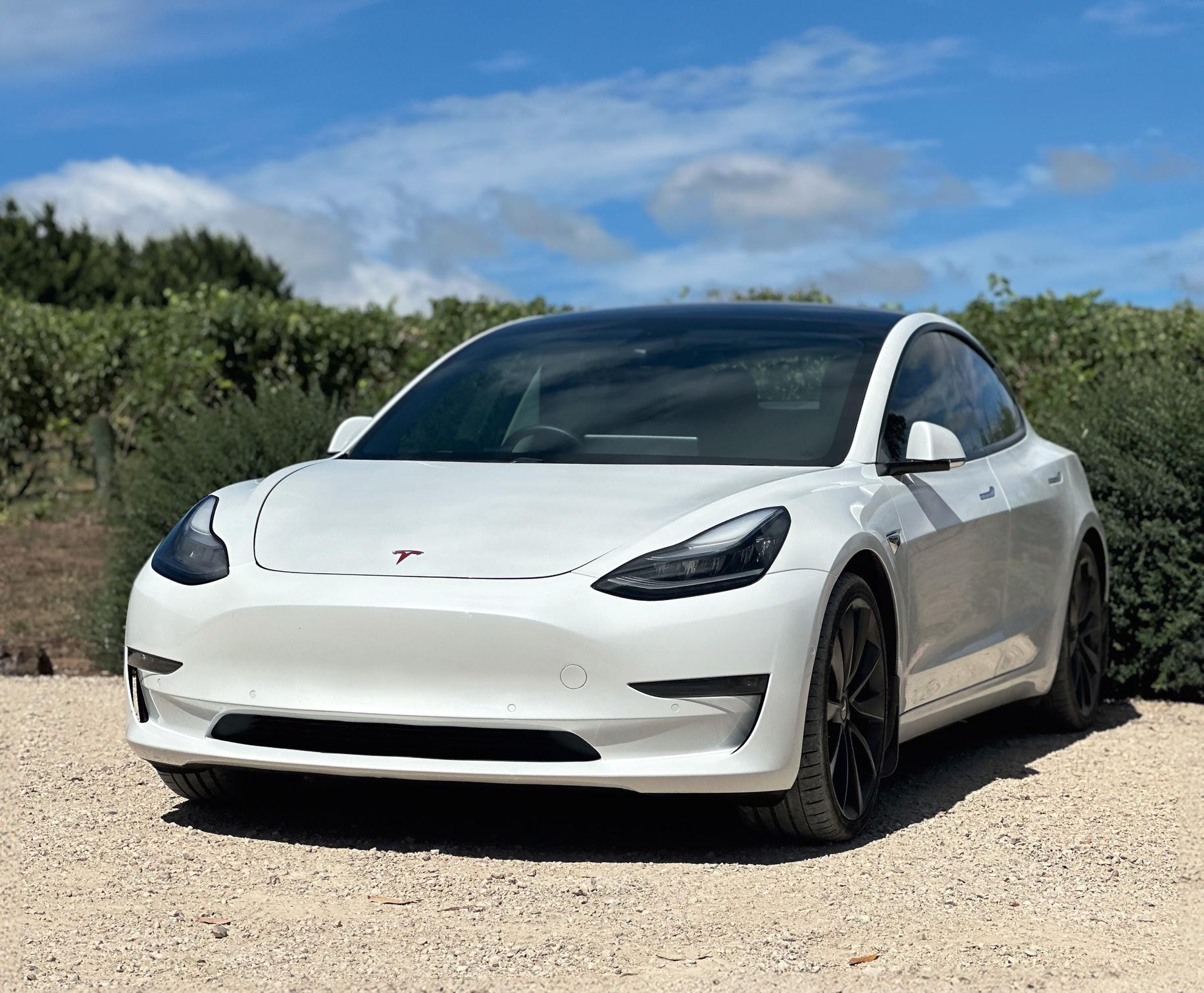

On a pimped-up road trip with car-sharing app, Turo, Paul Chai discovers a biodynamic farm, a memorable winery lunch and a new love for electronic cars in the picturesque Adelaide Hills.
As a kid, Michael Knight’s futuristic car, KITT, in Knight Rider was my dream ride: a talking car with pulsating red lights, hidden weaponry and a voice like a highly paid therapist. Now, as an adult, faced with a real-life, tech-packed vehicle, a pearlescent Tesla Model 3, I am struggling to get it out of the airport carpark.
The Tesla Model 3 is as much computer as car, most of the operations run from a 13inch touch pad, you open it via an app, start it without a key and it even has a beta-testing self-driving mode (that is not yet legal in Australia). A computer degree might help to adjust the wing mirrors.
That is why my host (and car owner), Natallia, is a godsend. She sits next to me and patiently explains the car’s technical wizardry like I’m a toddler with my first iPad. I am in Adelaide trying out a new car-sharing app called Turo that aims to disrupt car hire. Booking a car through Turo is like borrowing your mate’s mint ride. Unlike conventional car hire, you get exactly the car you booked, you often get a friendly handover from the owner and you get wider range of choice.
“Our superpower is really unique selection,” says Turo Australia VP and managing director Tim Rossanis. “The more different types of vehicles that we have, the more unique experiences we can facilitate for guests, people come to Turo because they want to enhance their journey.”
Other advantages include having the cars spread over a wider geographical area than
rental car company hubs and Turo’s stated aim of utilising idle cars more efficiently.
“We have millions of cars in this country, but billions across the world, that are in circulation so why not use those instead of buying new cars,” Tim says. “Most cars sit idle 90 or 95 per cent of the time. When I think about my cars if they are not picking up the kids and dropping them off, they are just sitting in the driveway.”
KITT and I finally make our way out of the parking garage and onto the broad boulevards of the Adelaide CBD. The “regenerative braking” takes some getting used to; when you remove your foot from the accelerator the car brakes and feeds any surplus power back to the battery. Great for battery life, offputting to a newbie Tesla driver but I am happy I was forewarned by Natallia or I would think KITT really was sentient. We pull up to our Adelaide digs, the perfectly positioned Hotel Indigo in the midst of the Adelaide markets, and turn in for the night.
Escape to South Australia’s capital with a stay in the eclectic Hotel Indigo Adelaide Markets, an IHG Hotel. Perfectly located in the heart of the market precinct, and themed around Adelaide’s rich festival history, this retreat is the gateway to your gastronomic journey with the Adelaide Central Market right next door.
Book your stay now
LEFT: Turo is a car-sharing service that is taking on car hire companies. Through the app you can borrow a wide range of vehicles for a road trip, like this Tesla
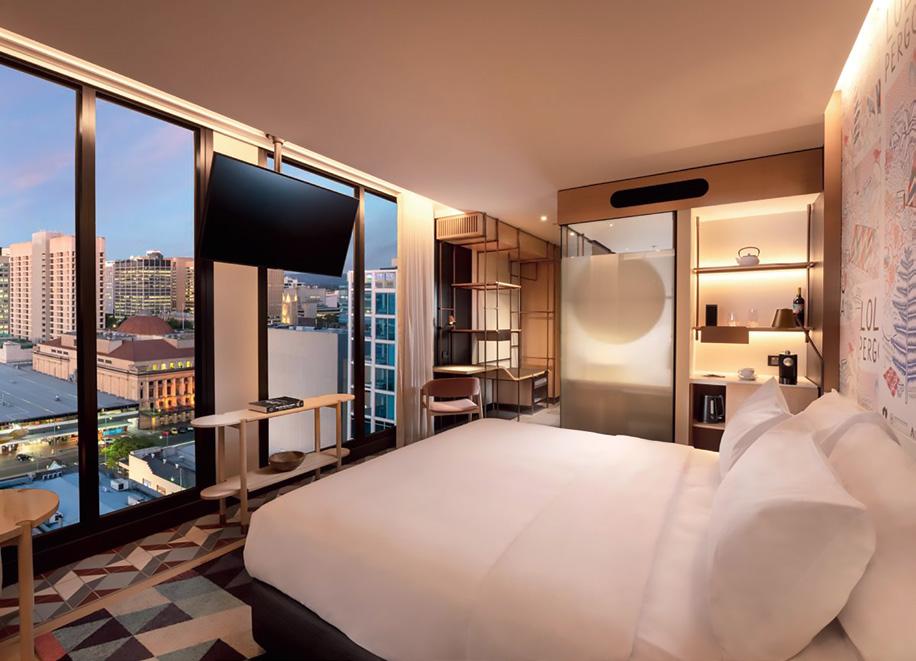
Come morning I jump into KITT and do some programming based on a few more tips from my host. I switch acceleration to “sport” and stopping to “rolling” mode, which mimics a regular car, battery life be damned. We are getting up to some chicanery in the Adelaide Hills and when I plant my foot on the freeway I nearly end up in KITT’s back seat. I love a freeway drive and am a big fan of cruise control but the Tesla takes it a step further and adjusts your top speed by reading the road signs. Coming off the wide roads into the country switchbacks, I ditch the cruise control and the car sticks to the road like molten tar as the bucolic countryside flies by. I have also discovered the stereo, so roll into the carpark of Jurlique Farm feeling a bit more like David Hasselhoff’s fictional TV road warrior, though he wouldn’t have to check his app six times to make sure the car was locked.
We are visiting one of the Adelaide Hills’ most famous non-wine exports. Thirty five years ago in the Adelaide Hills, Jurgen and Ulrike Klein were inspired to start a biodynamic farm and plant herbs and flowers that aid natural skincare. Three decades later Jurlique is a multi-million concern that exports to 27 countries. We tour the farm, a mix of neat rows of roses and a swirling
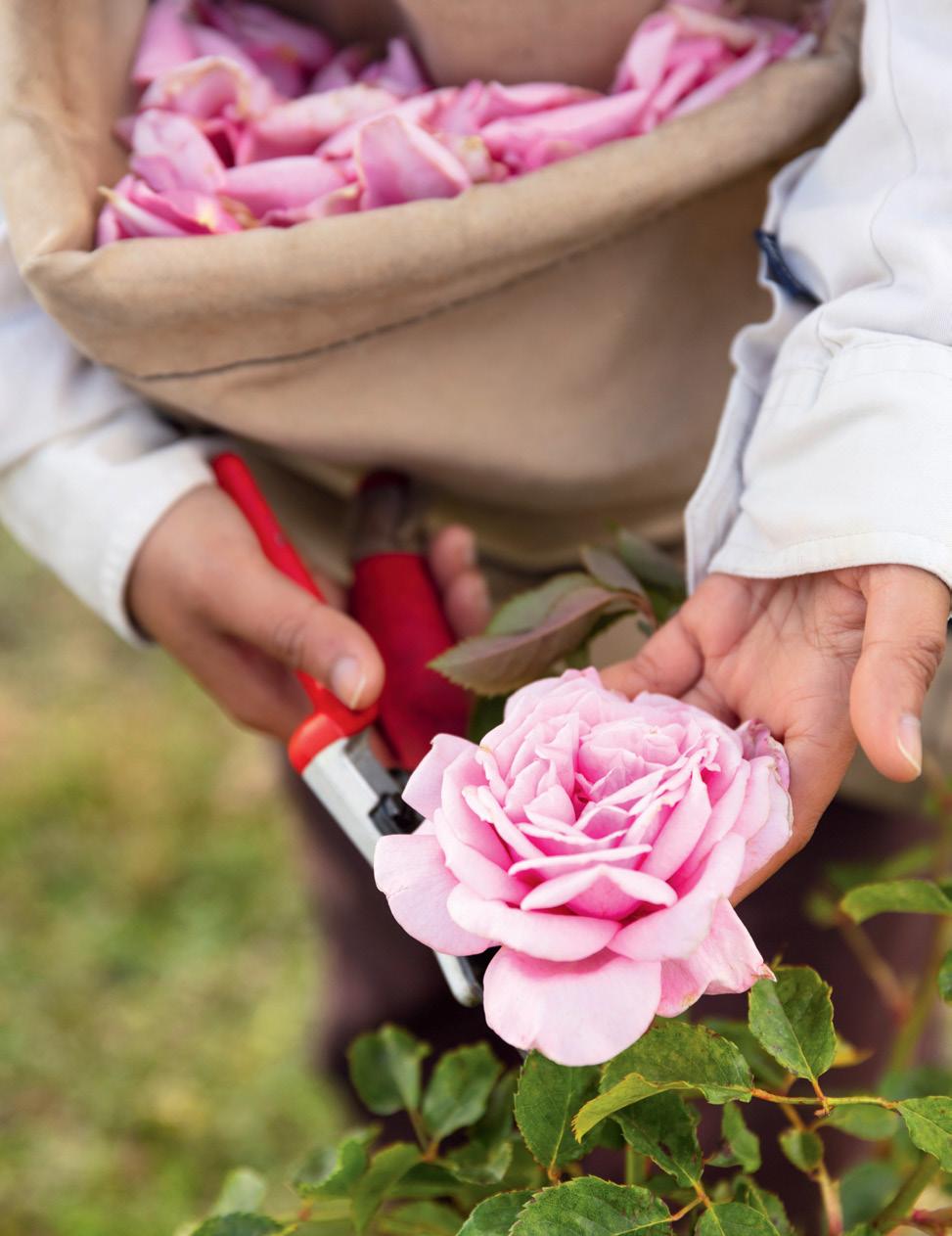
herb harden frequented by local blue-banded bees and surrounded by a lazy collection of kangaroos. Our walk starts with a whiff of the Jurlique rose – a hybrid created especially for the company – and ends up with me smelling like the David Jones perfume counter thanks to sampling some Jurlique wares.
From the farm we drive through the quaint Lutheran-founded village of Hahndorf to The Lane vineyard and by the time we arrive at the eucalypt-lined dirt road KITT and I have come to a pretty decent understanding. The Lane is a classic Hills’ winery with a timber deck looking across neat rows of vines whose symmetry is at odds with the naturally
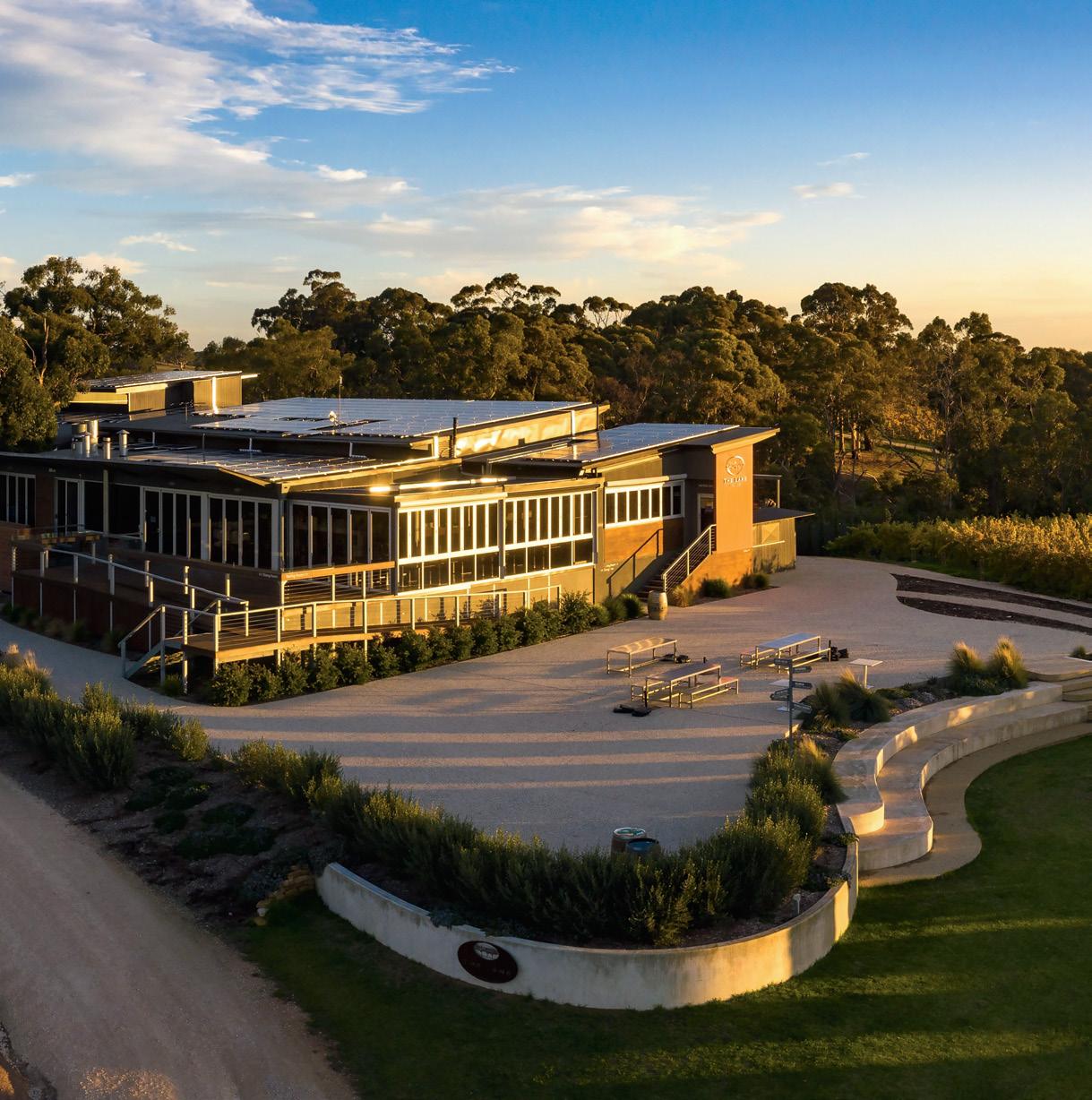


sloping terrain. Over a lunch of roast chicken and a shared bottle of The Lane rose, Tim Rossanis tells us that a quarter of the time on a domestic road trip is usually spent behind the wheel.
On the way back to Adelaide I pull over and hop out of the car so KITT can show me the Tesla’s quirkier features. I put on a “light show”, and the car flashes various colours, opens windows and wiggles wing mirrors to a variety of tunes as I stand and watch. I get
some strange looks, but I also try out some “caraoke” belting out Bohemian Rhapsody as KITT plays the backing track and flashes the words up on screen. Charging KITT back up takes barely half an hour as we are still half charged, so I play some in-car video games, then I meet Natallia back at the hotel to hand over the metaphorical keys.
If we really do spend 25 per cent of our staycations in the car, you should 100 per cent check out Turo.


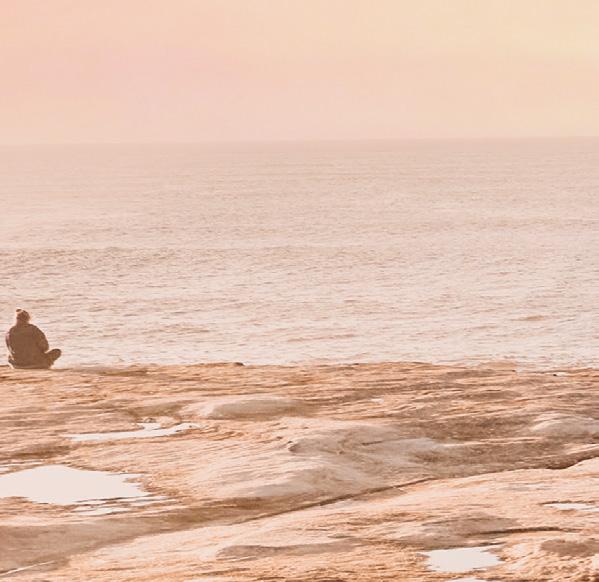




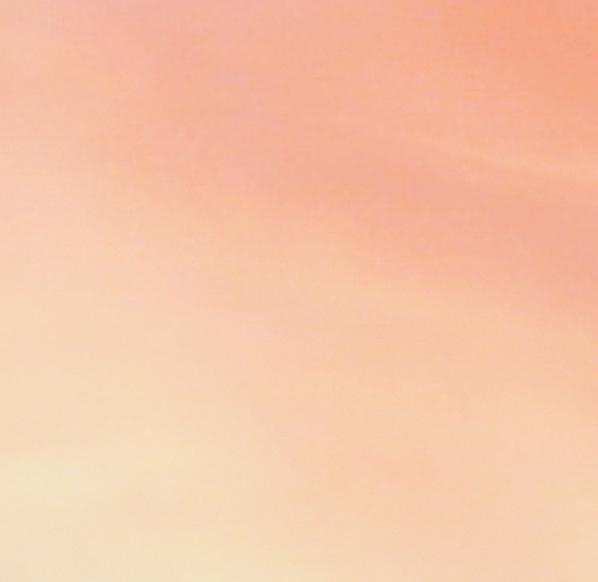


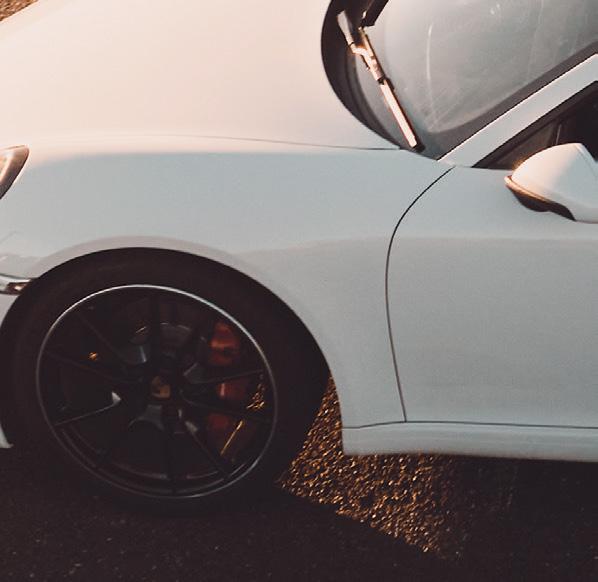

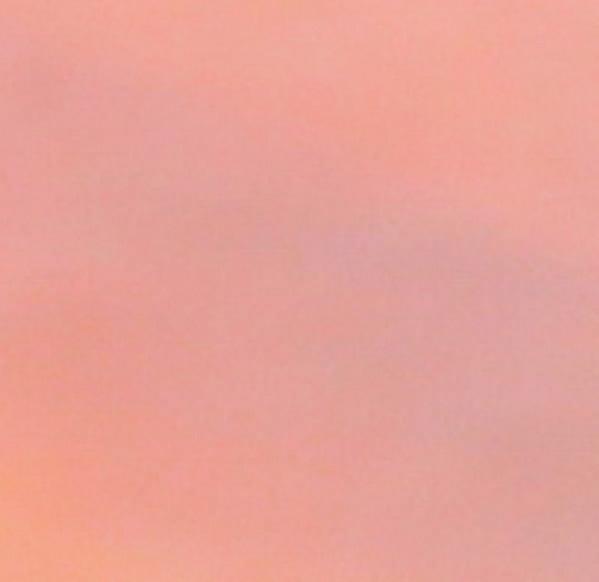

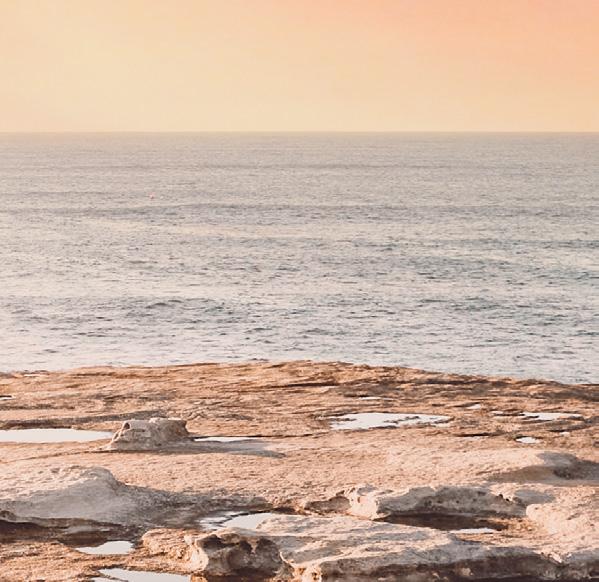





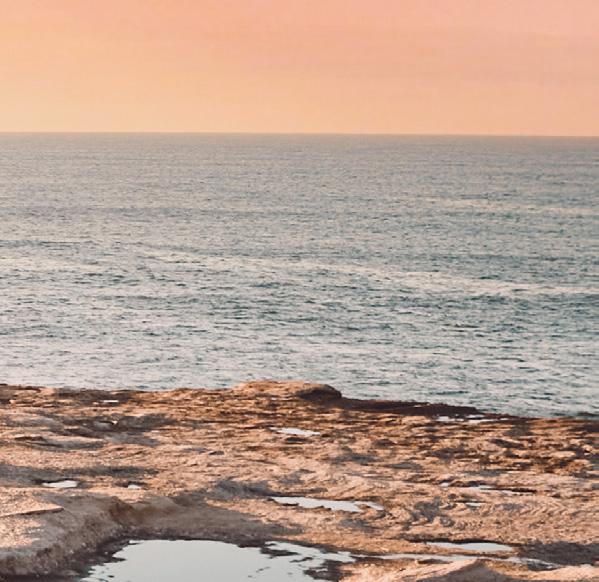

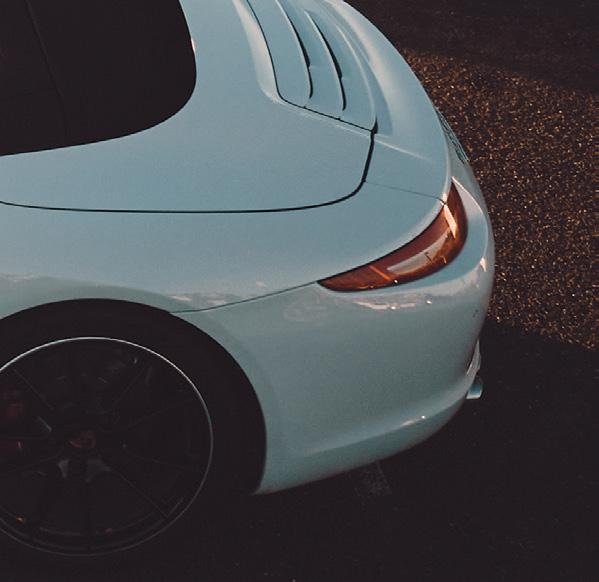



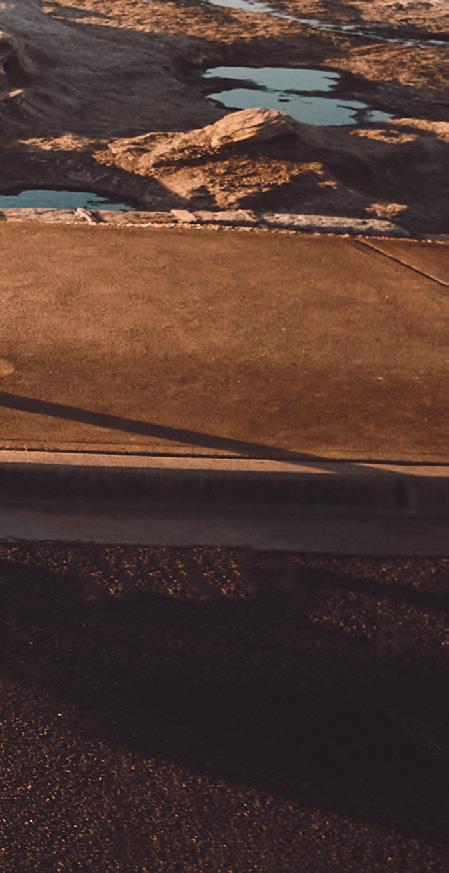

Langham Hotels and Resorts was established in London in 1865 and retains the tag of being one of the world’s most famous “grand hotels”. In the subsequent 150 years, the Langham name has become synonymous with luxury and quality and so has its three Australian properties.
From the moment of its opening, The Langham London was known for its indulgences, which back then meant electric lights and air conditioning, and before long it was expanding overseas. In 2005, the Langham Melbourne and Auckland joined the family, the first properties in the Pacific portfolio. But the Langham now spans four continents from The Langham, New York to the soon-tobe-opened The Langham, Venice with more openings in the works.
Entering The Langham, Melbourne the grand marble fountain, bracketed by escalators to reception, harks back to The Langham’s regal past. Once at the top, guests are welcomed by a natural floral scent from the huge flower arrangement that is changed every two days and the equally floral Langham phone booth that has inspired a multitude of Instagram posts. Rooms are decorated with thick curtains, brass lamps and ottomans keeping the retro luxury vibe coming and those facing the river have some of the best views of the Melbourne CBD. Things take an eastern turn at the Chuan Spa inspired by Chinese traditional medicine, or head out to the adjacent sun-soaked pool area with an open deck and indoor heated pool. The Langham, Club has recently been renovated and has stunning views over the city of Melbourne and exclusive areas for guests staying in club rooms and suites.



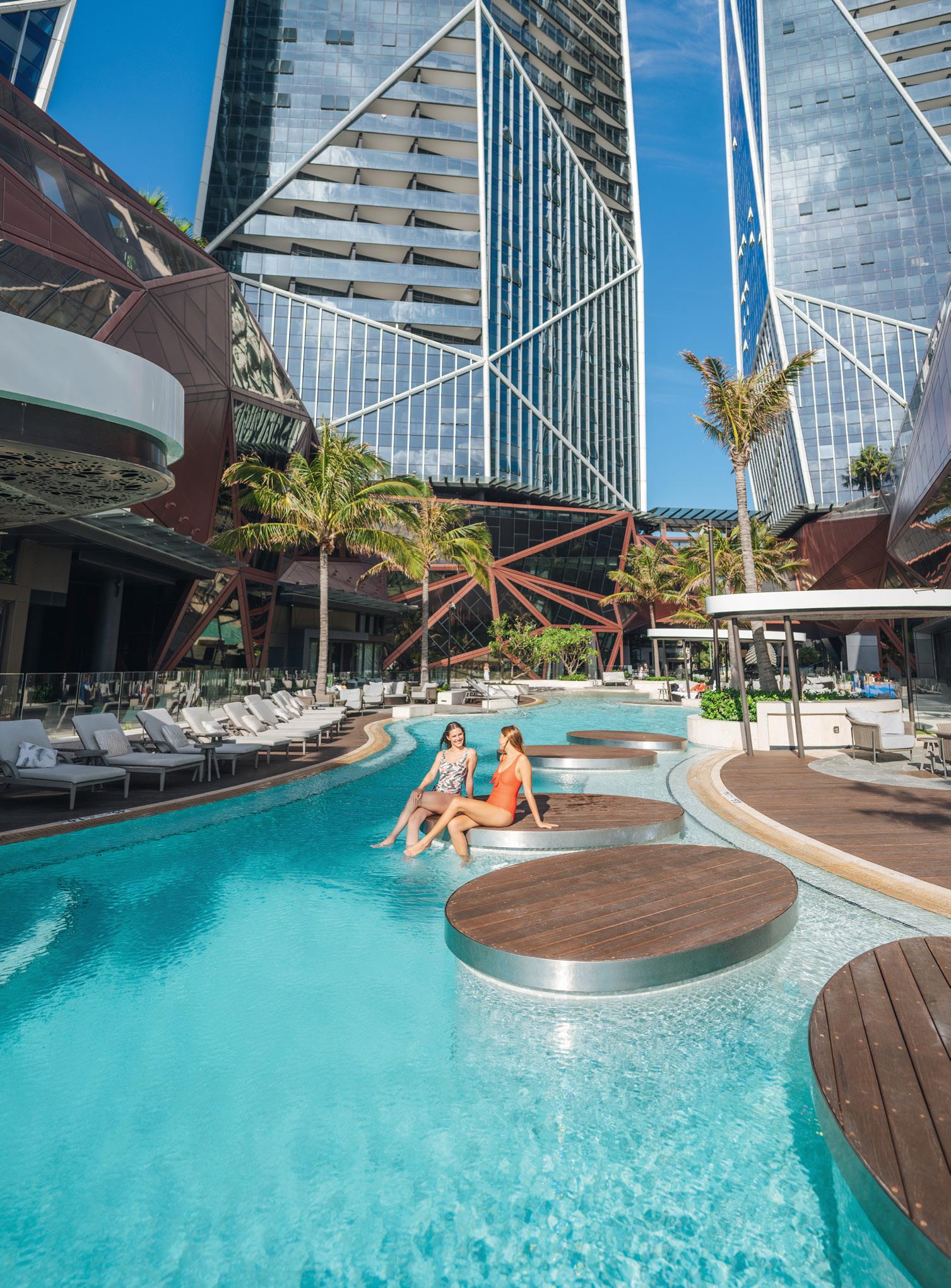
Ready to stay?

Located in Sydney’s birthplace, the sandstone-lined streets of The Rocks, The Langham, Sydney offers an award-winning stay for luxury lovers. The rooms are decorated with accents of Sydney Harbour blues throughout with padded headboards, leather footstools and ceramics that give the rooms a homely feel. The Observatory Suite is for special occasions with views across to Observatory Hill and the Sydney skyline. Kitchens on Kent offers daily breakfast in a coolly elegant space of light blues and frosted glass panels and, for those who fancy a drink, the Observatory Bar has an old-world charm where patrons can sit up at the bar and nurse a craft cocktail or lounge around in the love seats and lounges.
The Langham, Gold Coast is the hottest new luxury address with its neon-light-accented new build providing a birds’-eye view of the Surfers Paradise coast to those lucky enough to be in a beach-facing room. The rooms are decorated in the greys and blues of a squally surfers’ sky and a cocktail shaker, premixed martini and jar of olives take pride of place on a sideboard. The bathroom is ridiculously glam with a huge central, freestanding bath and a spacious rain shower. Akoya is busy with sunseekers at breakfast time, T’ang Court offers Cantonese fine dining and Palm Court is open for the over-the-top Langham afternoon teas. The Lobby Bar’s neutral colour palette is also inspired by the coast and the bar stocks a huge range of rare spirits and craft brews.
Skipping a popular port excursion can mean more time, and less crowds, so you get up to maximum family fun. Paul Chai lets the landlubbers head ashore while he and his son get the Spectrum of the Seas (almost) all to themselves.
There is a reason they don’t let 14-year-olds tend bar. I realise this the moment I take a sip of the murky, cloyingly sweet cocktail that my son has programmed for me into the Bionic Bar, a quirky drinking spot on Royal Caribbean’s Spectrum of the Seas where robot bartenders shake up any drink you can tap into an iPad.
He doesn’t fare much better with his mocktail, both are Frankenstein creations that stitch far too many disparate parts together, but he has been dying to dial up a couple of drinks since setting foot on the ship in Singapore.
Usually packed with equally enthusiastic mixologists (you need an adult ID to access the bots but no-alcohol drinks are popular) today we have both the robot arms to ourselves, as we do much of the ship that can carry up to 4,905 passengers.
We are nearing the end of a full day of activities aboard the ship, so peaceful in parts it seems deserted, due to some counter programming. Most of the passengers have headed into Ho Chi Minh City for the day but, having been to the former Vietnamese capital recently, we decide to stay on board.
We start with a rare window seat at Windjammer for a continent-spanning buffet breakfast, followed by a barista coffee and plate of cakes from the café enjoyed in the mezzanine seats of TWO70, named for the degrees of view you get from the rear of the
ship. We feel a little smug as the huge video screens, also operated by robot arms, remind those leaving the ship of what they should be taking with them.
All we are taking is a leisurely stroll, and our time, exploring the ship and making serendipitous discoveries like the sundeck with a view of the main pool (and accessed via a hard-to-spot door inside) which remains a bit of a secret and provides prime viewing later in the cruise for the ever-popular bellyflop contest.
Our first post-breakfast stop is Seaplex, the huge indoor entertainment space, where we try queue-less activities like table tennis (winners: adults) and archery (winners: kids). We then take in a few mid-morning trivia sessions at the nautical-themed Schooner Bar in the hope the reduced numbers will make us winners (they don’t).
Turning up for lunch in Main Dining on a shore excursion day, with its crisp, white tablecloths, shiny silverware and suited-andbooted staff has you feeling like a VIP, then it was up to the upper deck for a rest by the pool with hundreds of sunbeds all ours for the lounging.
The Bionic Bar might not have been a highlight for our respective tastebuds, but we force down our adventurous concoctions before heading up to the North Star bar. This spot has a prime vantage point on the outdoor decks where bartender, Mahendra,



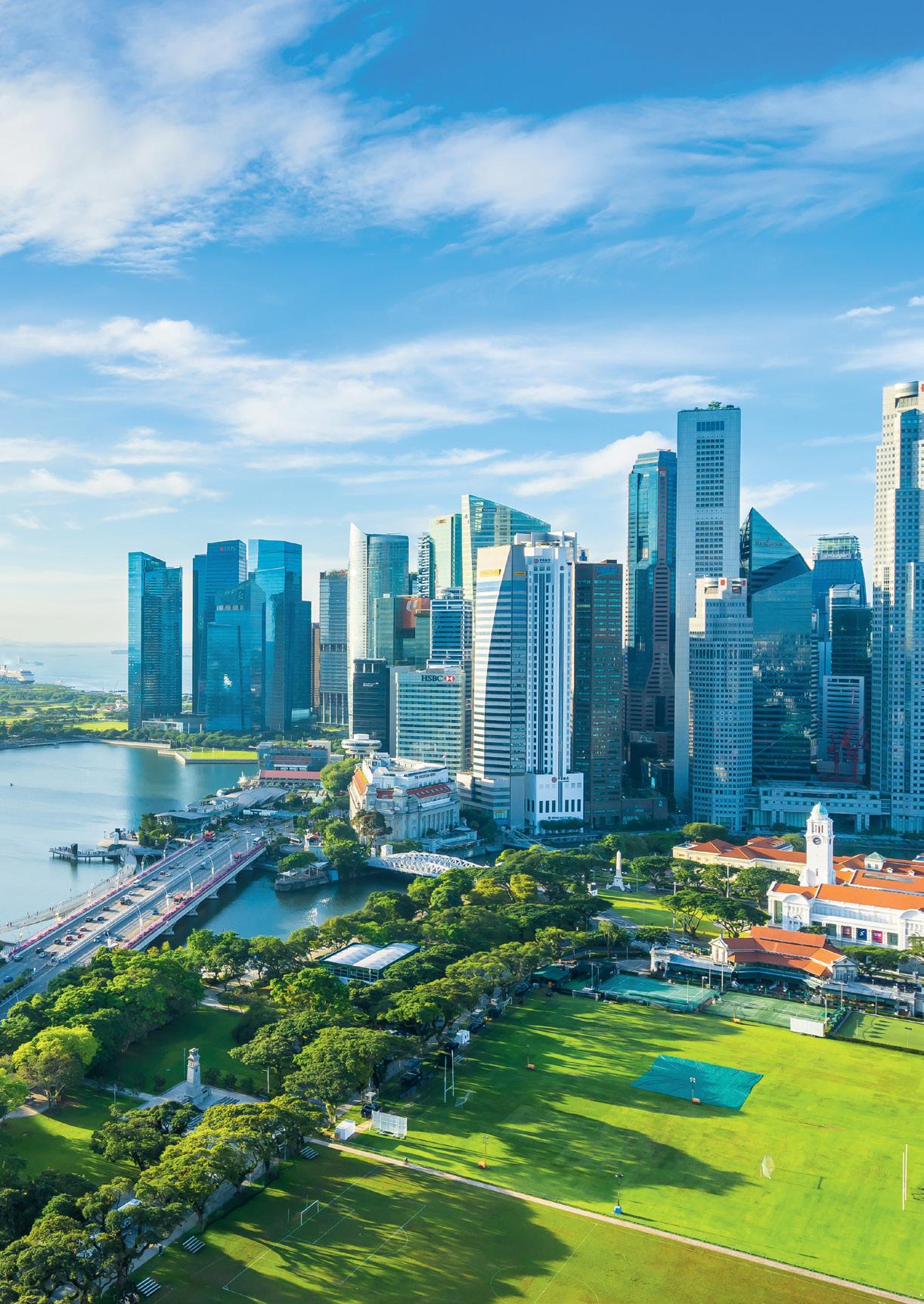

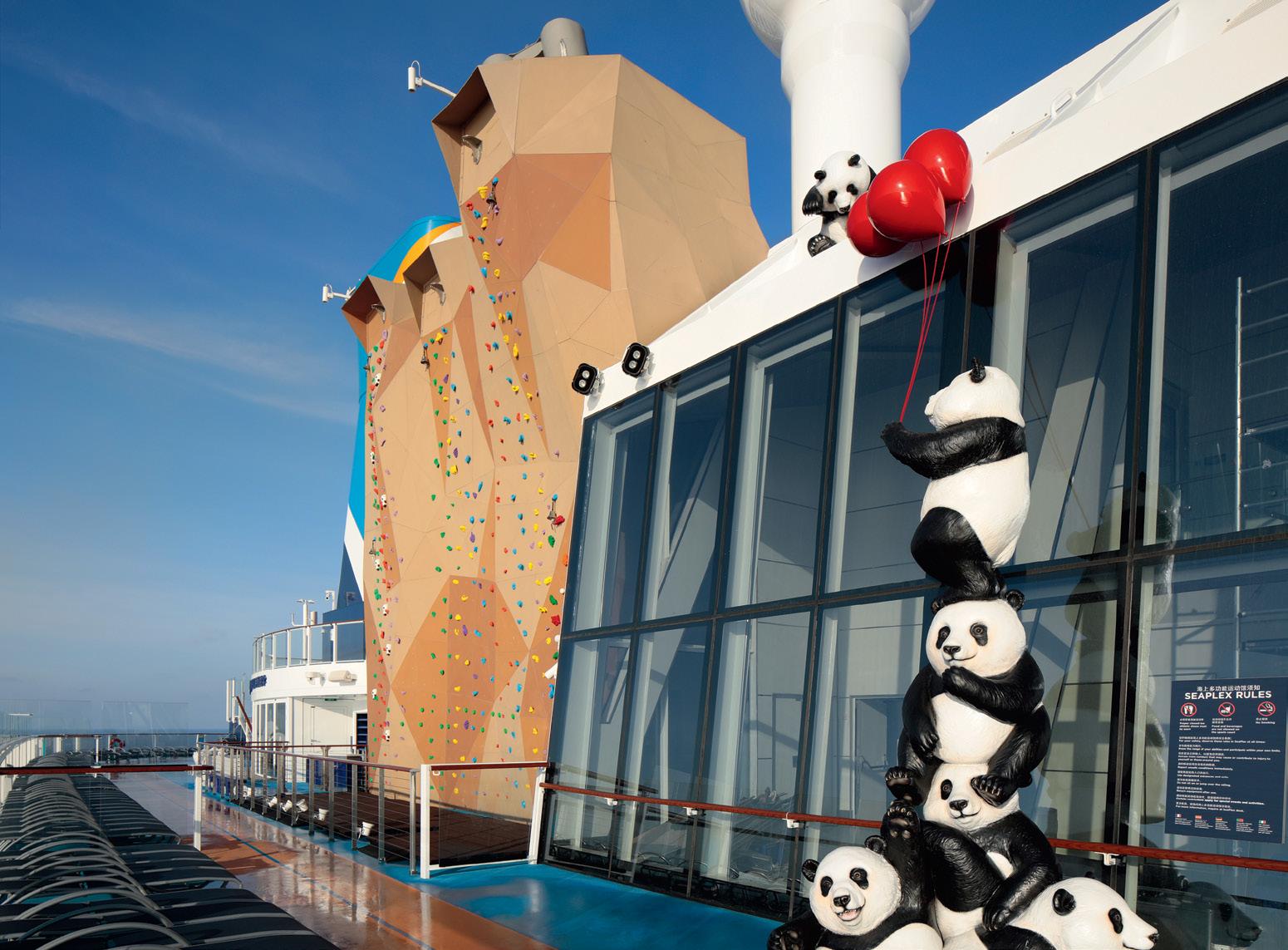
has been making us a frozen cocktail and frozen mocktail of the day since we first boarded. He greets us warmly at sunset, already reaching for the peach syrup, as the daytrippers trickle back on board.
It’s not like a full ship of passengers has seen us confined quarters. Over the course of the nine-day cruise we have toured the bridge and learned a thing or two about piloting such a maritime behemoth. We have climbed aboard the North Star observation orb to be dangled over the briny beyond and seen the ship and its scurrying passengers from a bird’s eye view. We even had strangers
take our photo as we were shot up into the air in the skydiving simulator Ripcord by iFly.
We went ashore, too, and spent a spicy couple of days in the Thai capital of Bangkok watching a Michael Jackson avatar dance across curtains of water at the nightly aquatic show outside ICONSIAM shopping centre and discovered vegan Thai delights in a retro shophouse setting at Vistro. We also passed a quiet afternoon in a beachside brewery in the Vietnamese resort town of Nha Trang.
But, in a packed itinerary, our hushed day aboard Spectrum of the Seas, was a quiet delight.

Embracing the busy, Evie Farrell sets sail on Icon of the Seas, the world’s largest cruise ship.
Cruising with my 14-year-old-daughter on Royal Caribbean’s epic new 20-deck, 360-metre-long Icon of the Seas, launched in Miami in January this year, I discovered that this spectacular ship is in a class of her own.
As we boarded through the Royal Promenade we were struck by its floor-to-ceiling windows and the world’s largest kinetic sculpture – the shimmering, colour-changing Pearl with its marble staircase and 3600 tiles that move to real-time tidal and wind data from the Caribbean.
Like a sparkling city, this USD$2 billion ship is divided into eight neighbourhoods that create bespoke experiences with curated cocktails, dining options from street food and grab-and-go to highclass restaurants, the open-air Central Park with its 30,000 plants and live jazz, seven swimming pools, six record-breaking waterslides and more ocean views than ever before.
The colourful Surfside neighbourhood is the place for all the family to play together, with an ocean-view waterpark, carousel, playground and cafes, while the adults-only Hideaway is a secluded escape with daybeds, cocktails, hot tubs and a DJ. The calming Overlook at the Aqua Dome has enough hidden nooks and intimate pods for an epic game of hide and seek or quiet time gazing over the ocean.
Icon of the Sea’s overstuffed catalogue of entertainment filled our evenings: theatrical iceskating performances; the family-friendly Wizard of Oz with its live orchestra and special effects was easily Broadway-quality and the Aqua Action spectacular with its cast of Olympic athletes high diving beneath a towering waterfall was unlike anything we’d ever seen before.
My daughter was happiest when she convinced me to ride the fear-inducing water slides that weave a colourful tangle through the Thrill Island neighbourhood, play mini-golf at the Lost Dunes or walk the plank at the Crown’s Edge and zipline back into the ship (screaming and crying), suspended 50 metres out over the ocean.

Ready to explore?
Icon of the Seas is a truly amazing cruising experience, our only less-thanspectacular moment was when we had to leave.





































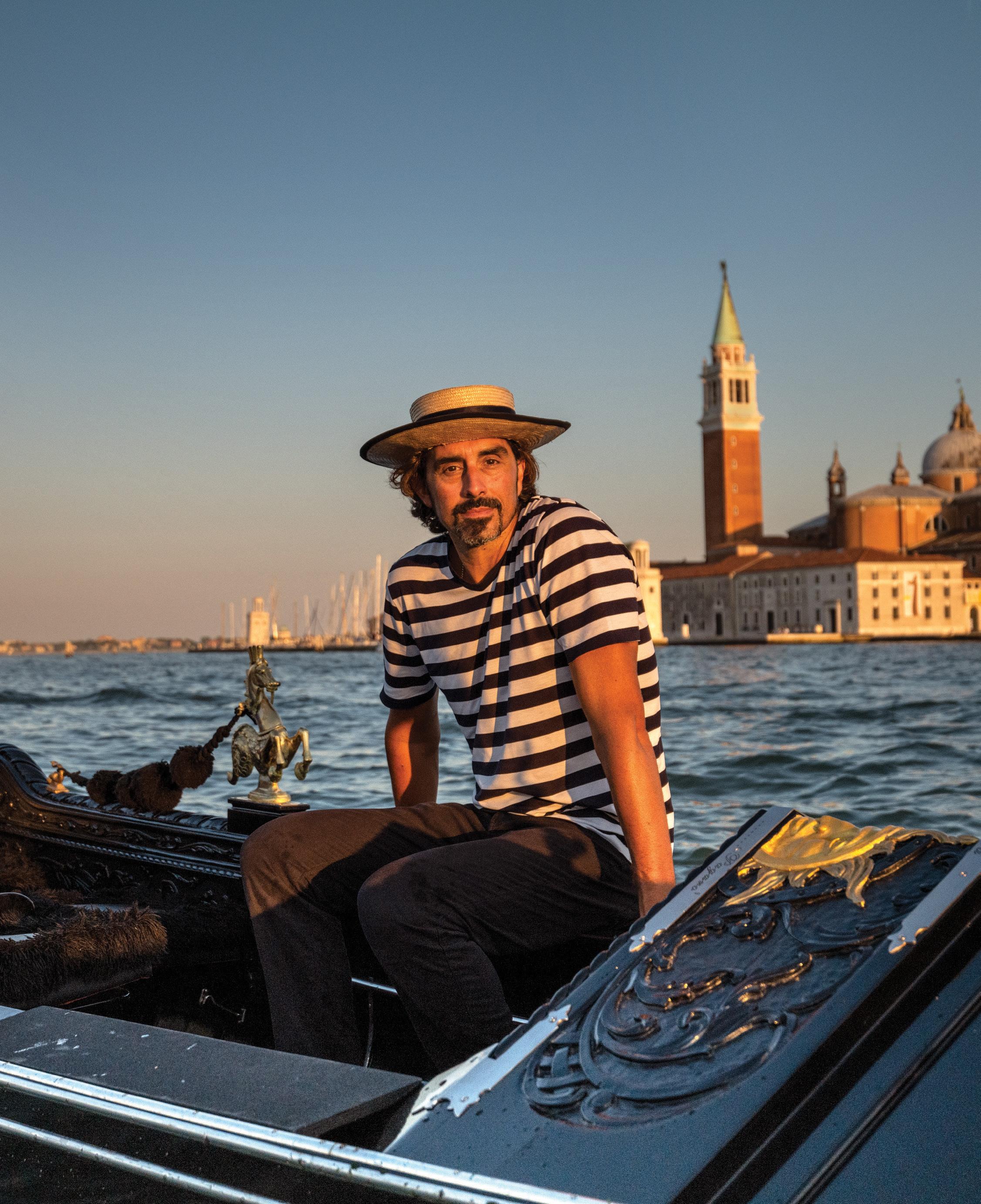















by Steve
















































































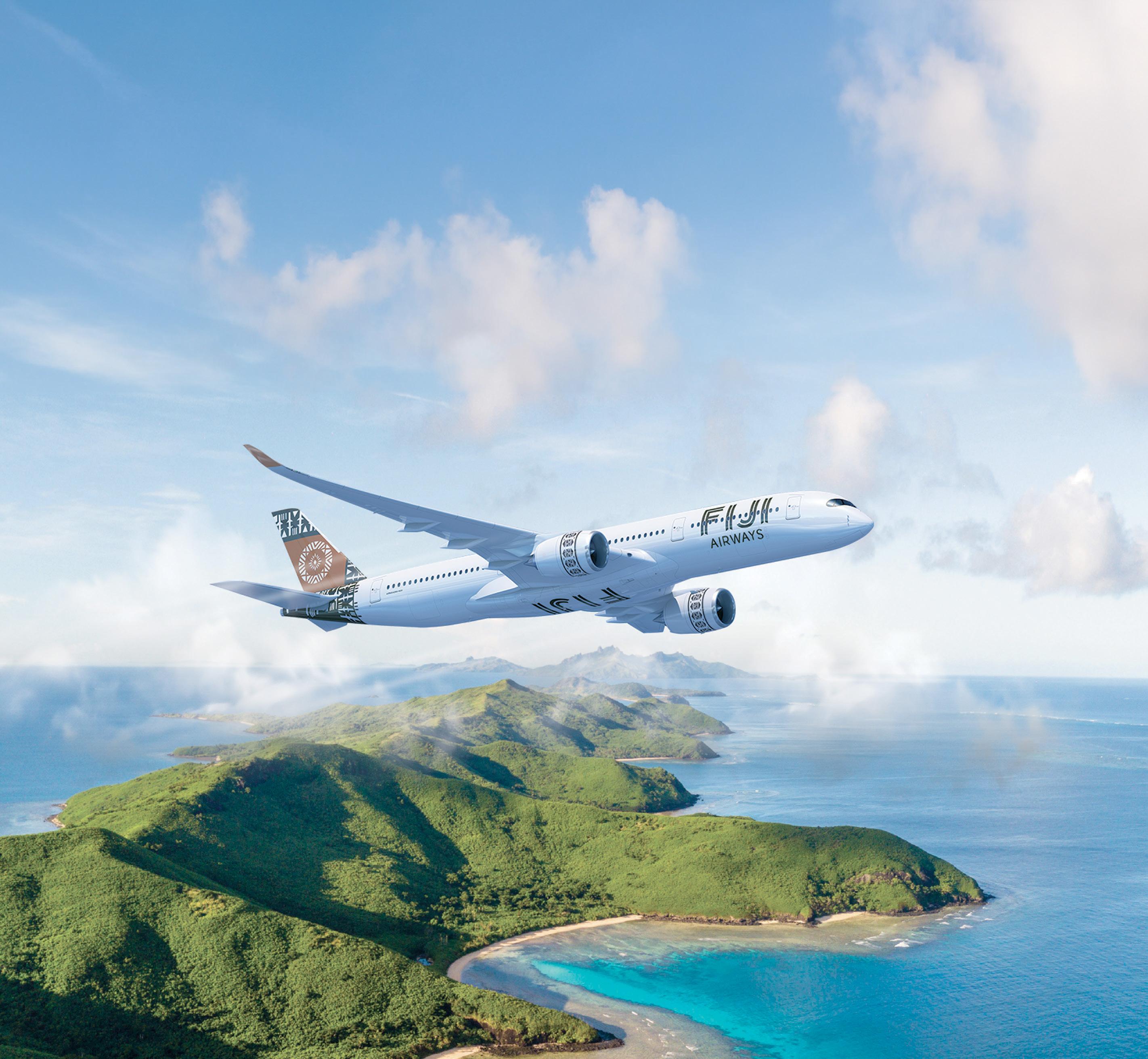
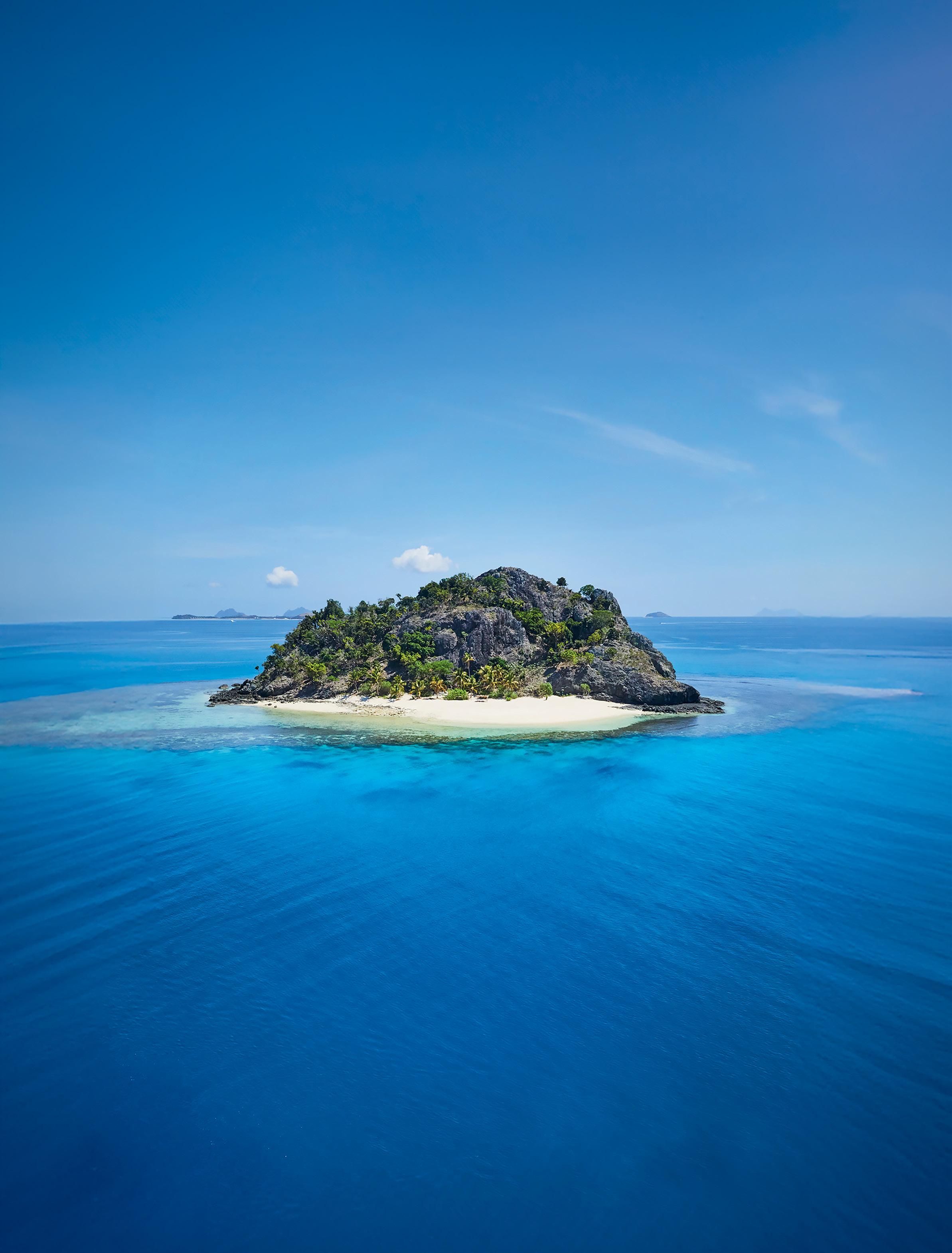
With a culture that values friendship and warmth, and an astonishing array of diving and snorkelling sites, the idyllic islands of Fiji are what we dream of when sitting at our work desks or huddling by the heater at home.
Whether you’re into outdoor adventures, fine dining, learning about culture, multigenerational escapades or flop-and-drop holidays in resorts, Fiji is an ideal destination. The tropical weather, the crystal-clear water and stunning coral reefs, the beaches, the luxury hotels and the endless options for water sports and ocean activities are what makes this country so dreamy. Lush jungles, fresh air, sunshine, quality produce and a myriad of day spas offer visitors a deep sense of wellness and the chance to disconnect from our busy lives.
Here is our insider guide to the perfect Fiji escape.
A little further down the coast, you’ll find seafood with premier water views. Rustic and simple but fresh and delicious, this little beach restaurant is right on the ocean next to the beautiful reef of the Coral Coast. Order mussels, prawns, crab and lobster, and the island speciality: kokoda
Run by Fijians, this restaurant is heaven for lovers of a 10-hour smoked brisket, meltin-your-mouth eight-hour spit-roasted pork, bao buns and prime cuts with chunky chips. You’ll enjoy a taste of the islands with kokoda (Fijian ceviche), cassava, baked kai (mussels in coconut milk) and green papaya salad with chilli kumquat dressing.
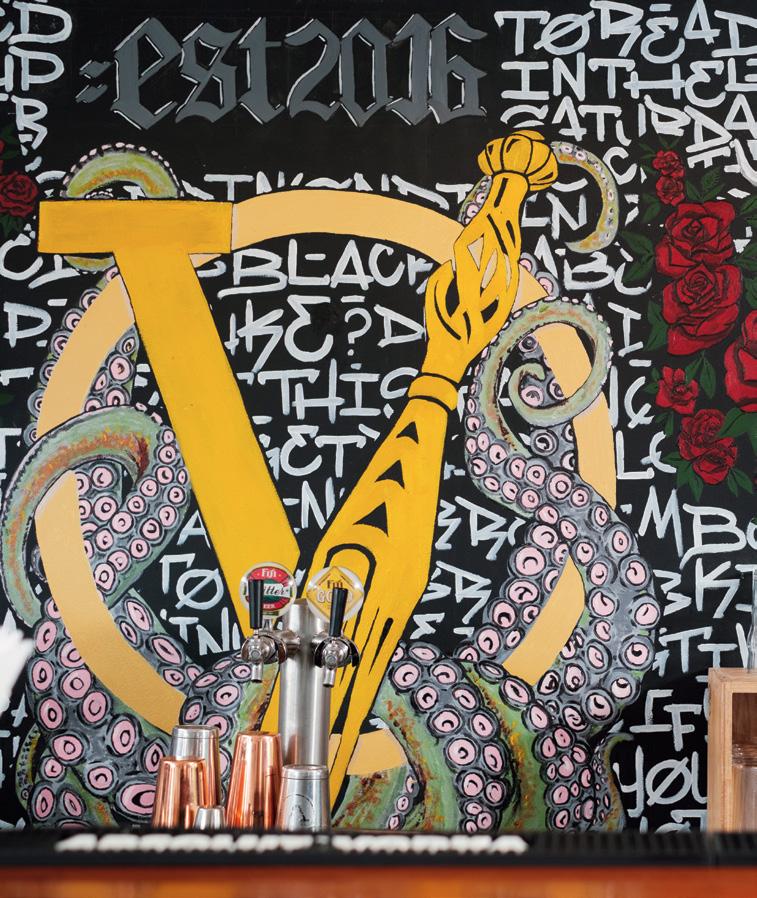

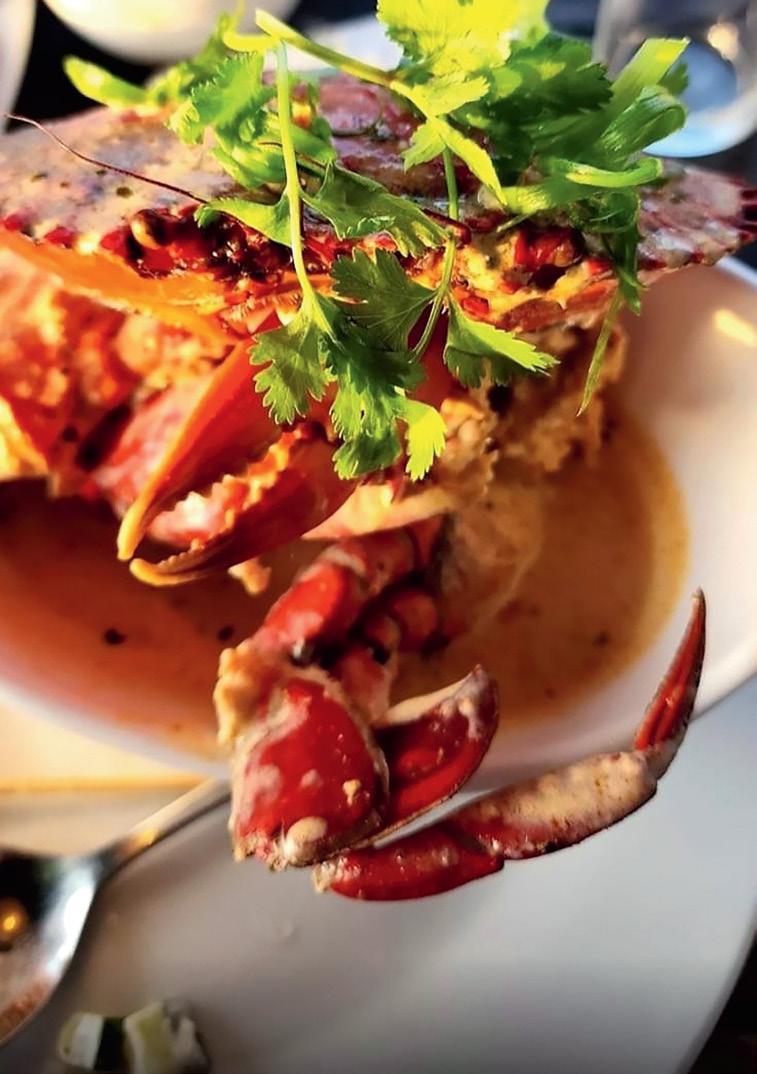
In the “adults only” section of the Sofitel, this is the perfect spot for a chilled out beverage before or after dinner around the pool. With stunning views of the ocean from the Champagne bar and Djs playing cool tunes, this is an idyllic “palm trees and sunsets” destination.
“Fijians are proud of the way they live and the village life.”
BRENT HILL CEO TOURISM FIJI

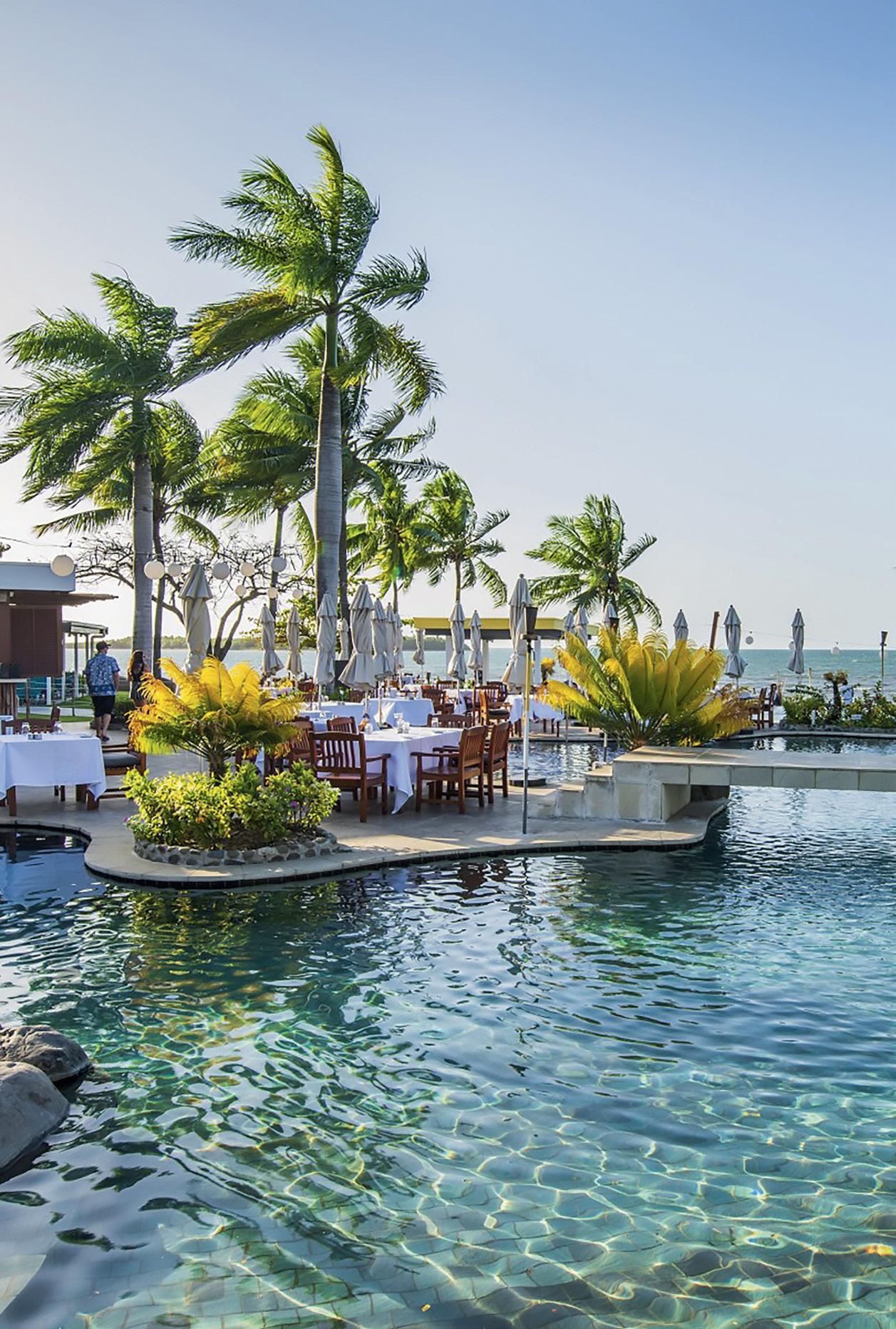


If you’re staying at Vomo, you’ll have access to the best located bar in Fiji. Staggering views, a glorious pool and a myriad of cocktails and excellent bites like the vegetarian crispy rice salad Nam Khao, steamed dumplings, Cambodian curries, sushi platters or the very popular soft shell crab baguette. For adults only.

A casual Japanese restaurant designed for locals, Taka is in the main strip of Nadi. Chef Taka is revered for his cuisine, which includes yakitori, udon, soba and ramen noodles. He serves up bento boxes of sushi, beef and miso soup, along with authentic curries and barbequed fresh salmon and tuna.

If you’ve ever dreamed of sitting right on the beach underneath tables with pretty lights to watch the sun set, then this is the beach club for you. Friday nights are fun here with pub food, pizzas, beer and good tunes. You’ll find rustic Fiji hospitality with a Balinese Jimbaran Bay vibe.
Fiji’s tropical climate has two distinct seasons that travellers need to keep in mind.
April through to November is essentially dry, with low humidity. It’s 26oC-30oC most days, with the temperature a little cooler at night. This is prime time in Fiji and tourists flock here because of its continuous beautiful weather. Watersports and outdoor activities are the ideal pursuits at this time of year. Hire a jetski, paddle the rapids, play golf or lie by the pool. July and August are the coolest months if you like your tropical weather a little less extreme. These months, when it’s less likely to rain, can be busy.
December through to March is more wet and humid, with the occasional storm. Most of Fiji’s annual rainfall occurs at this steamy time of year. Cheaper prices can be found, and if you’re in the pool or the ocean – who cares? You’ll have time to rest, relax, enjoy the spas when it rains and the pool when the sun shines. There is a risk of cyclones but Fiji is accustomed to these rare weather events and excellent safety plans are present everywhere.
The wet season is the perfect time to learn to cook, take a yoga retreat, or simply relax and read a book. Resorts and tourist destinations are not as busy at this time for those who like to keep your holiday pace less hectic. If you’re yet to see tropical rain, you might love the occasional torrential downpours interspersed with sunny dry periods.
Humidity is high and mosquitos come out in force so wear light, breathable clothing and don’t forget insect repellent.
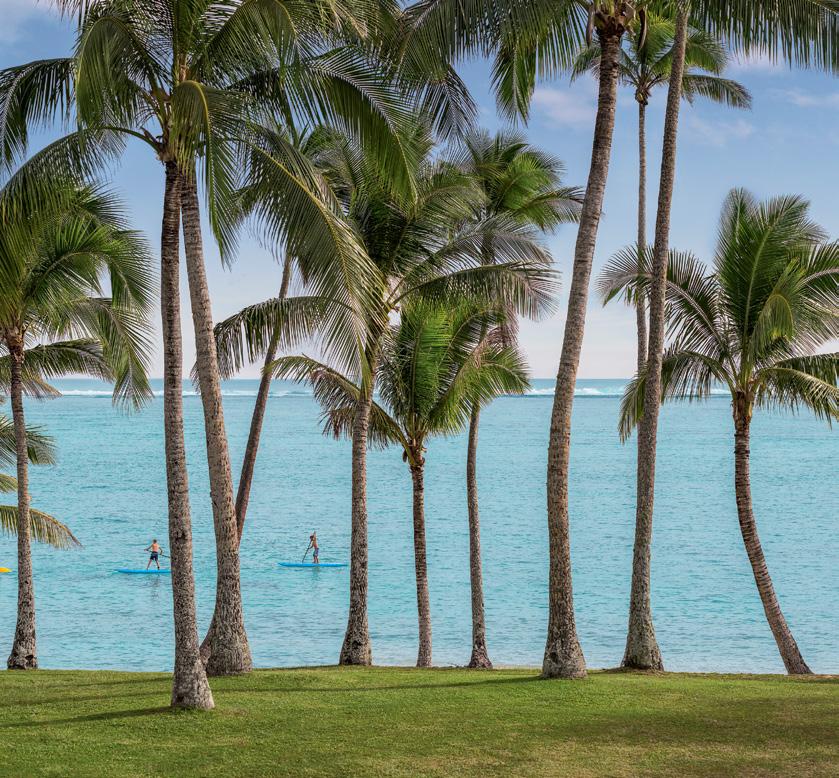
BEST KNOWN FOR:
Bula! Visitors are all seduced by this friendly welcome of the Fijian people. With fabulous weather and an endless list of exciting things to see and do a holiday in Fiji makes people feel happy. Snorkelling, paddling, deep-sea diving, swimming and fishing are all on the agenda. It’s also perfect for those looking for a pampering holiday focused on improving their wellbeing.
When it rains, there’s wellness, yoga, cooking classes and art studio tours where you get to try some traditional painting and learn how to do Fijian arts and crafts. Families can chill out, read, or connect with each other over a board game. Couples can indulge in a long lunch or spend the day in a spa.
Fiji is known as a tropical island paradise with excellent surf. From March to November, surfing addicts hit Fijian shores to surf the diverse conditions that surround the islands. The Mamanucas, the Coral Coast and Taveuni offer a range of conditions that suit everyone; from beginners who need instruction on the less crowded swells of the Coral Coast to those who are ready for the challenge of world-class surf breaks like Cloudbreak, Frigates, Namotu and Wilkes. All enjoy the year-round warm water temperatures (27-28°C).
Surfing in Fiji generally involves taking a short boat ride out to the reef breaks because there are very few beach breaks. Booties are needed and protecting the coral and marine life should be a priority for any visitor.
Attend a lovo; a traditional Fijian feast where meat, fish and vegetables are wrapped in leaves and smoked in an underground pit. Traditional storytelling singing and dancing occurs while the hot coals cook the food. You can also see this at the Fiji Culture Village just outside of Nadi. Kava ceremonies occur regularly here and give visitors a true insight into this cultural experience. Kava is used for stress relief and relaxation and has uplifting, euphoric and sedative effects.
Bobo massage therapy using local oils to stimulate the circulation in your limbs is another, non-medicinal form, of relaxation. It involves a practitioner making long strokes along the muscles which enhances wellbeing, releases knots and heals aches and pains in the body.
Book one of the only over-water bures on the island at this five-star resort and have the waters of Momi Bay at your feet. Indulge at the Quan Spa or hire a SUP or kayak and paddle the tranquil blue waters. Close to the resort you’ll find world-class diving and surfing.
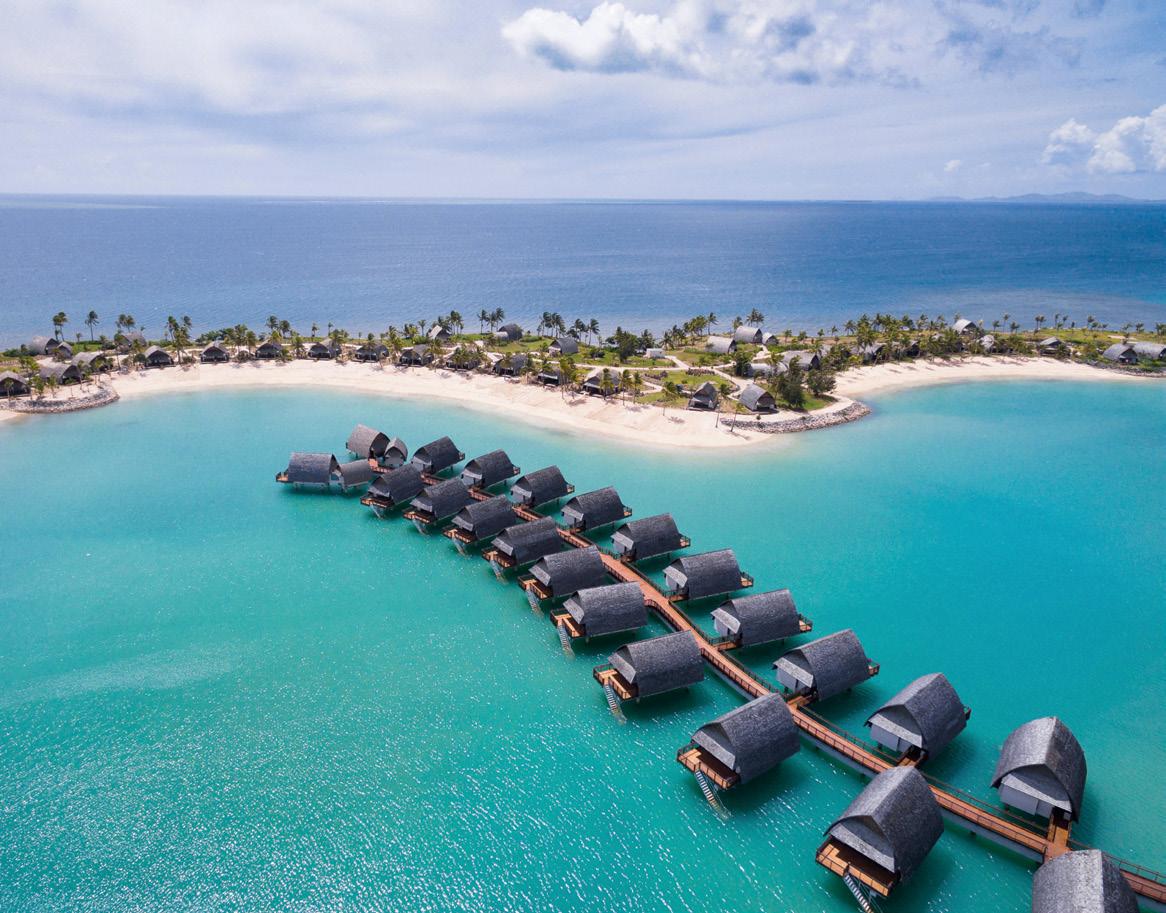
Considered by many as the best resort on the mainland, Nanuku is located on a private coastal estate. Dial up the romance as you snorkel amongst coral in the famous Beqa Lagoon, trek to awe-inspiring waterfalls or climb sand dunes for stunning views. Go paddleboarding or lounge poolside and drink tropical cocktails. Staff can create bespoke dining experiences in the treetops or on the beach.
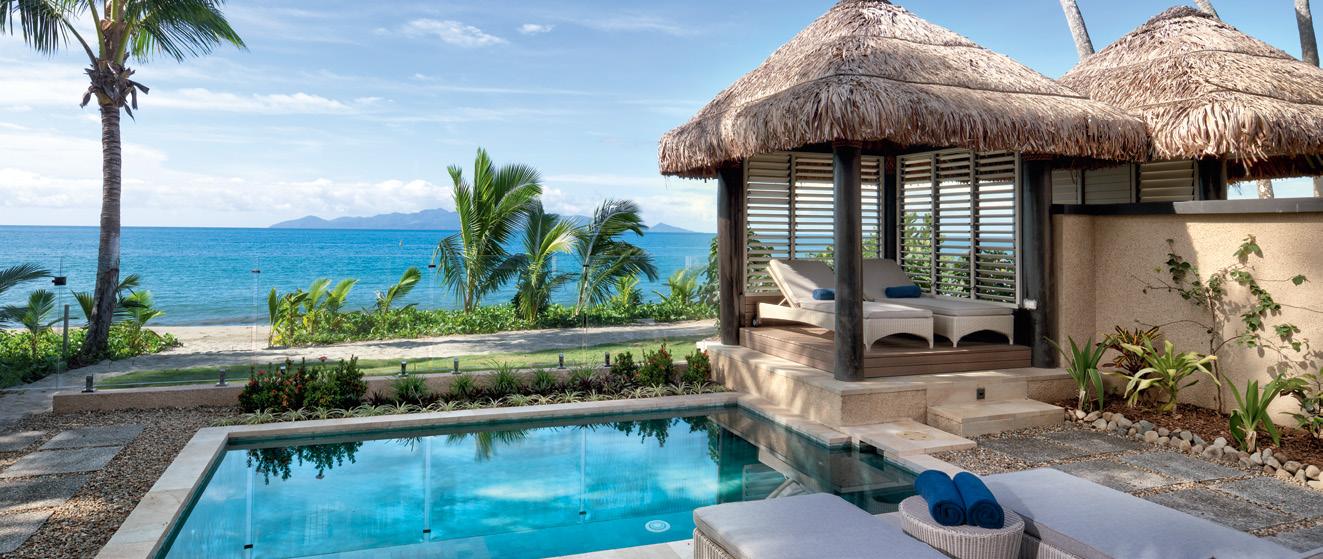
“Yasawa” means heaven. Head here for the ultimate in relaxation, gourmet dining, exclusive picnic opportunities on Champagne, Lovers’ or Paradise Beach and a plethora of activities like kayaking, stand-up paddle boarding, tennis, guided walks and catamaran trips at your fingertips. You’ll have to drag yourself from your hammock to visit the beachfront Baravi Spa.
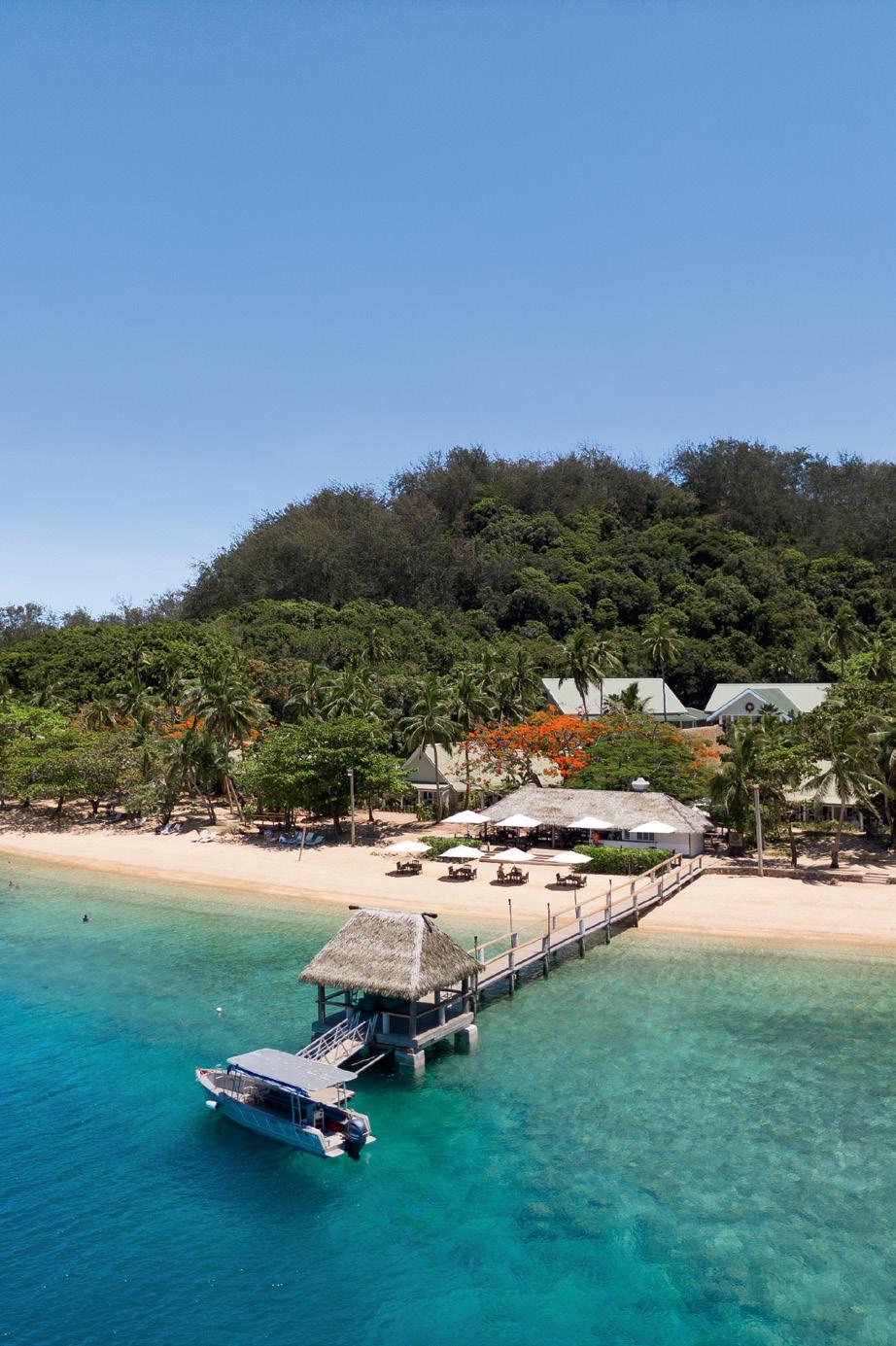

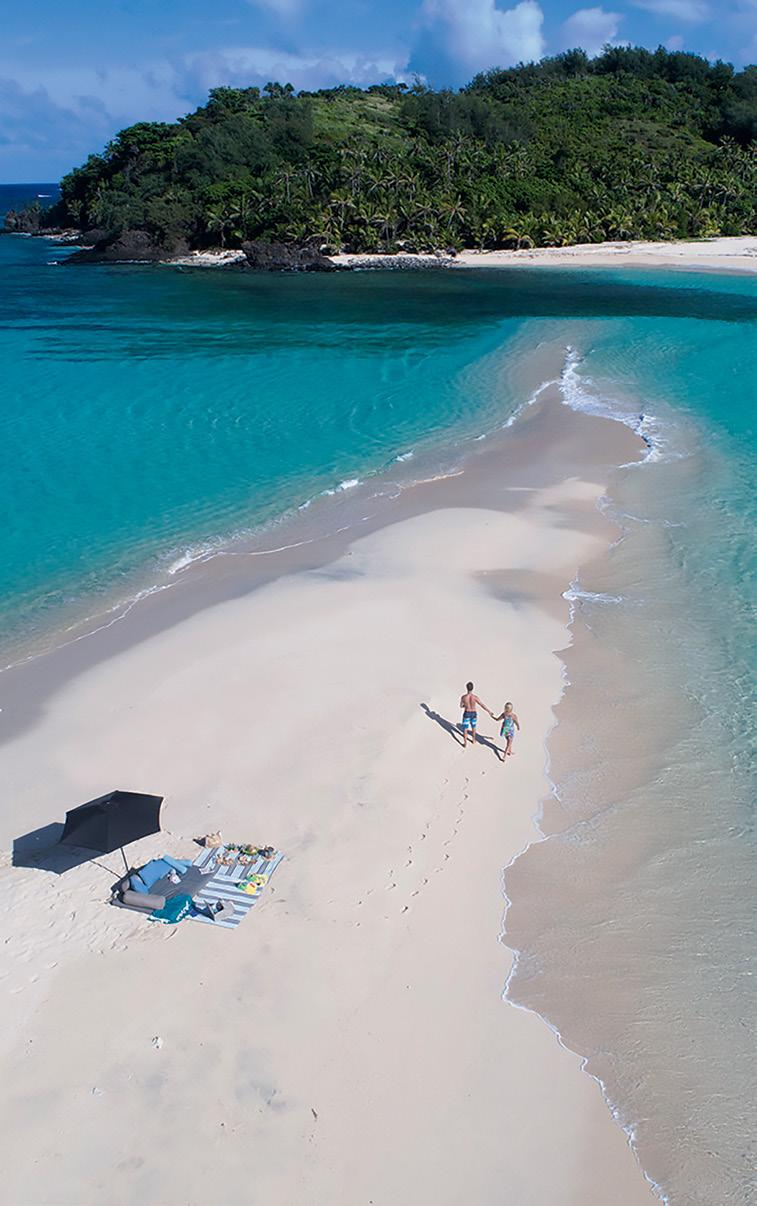

Immerse yourself in luxury at this five-star resort on Vanua Levu, just a short ferry ride from the mainland. Hike through lush jungles to discover waterfalls and white-sand beaches, spike the adrenaline with watersports or relax at The Namale Spa Sanctuary, which offers ancient healing techniques and decadent massage treatments.

For families or couples, Malolo is a blissful, award-winning, Fijian-owned resort without phone or internet access. Reconnect with your loved ones without the modern interruptions. Have a heavenly experience at the new Leilani’s Spa at the edge of the rainforest or spend your days swimming in front of your beachfront bure.
Renowned for its premium, organic, islandfresh food offerings, Vomo’s Rocks Bar is adults only and the best place to totally chill with unforgettable sunset cocktails. Stay in a spectacular private residence, stunning beachfront retreat or hillside villa, with chic furnishings and your own pool for an elegant, timeless escape.
“Fiji has seen a signifcant shift towards sustainable dining, with a growing emphasis on supporting local farmers and fshermen. Tis trend not only preserves the heritage of our islands but also promotes environmental responsibility and community welfare.”
CHRISTOPHER SOUTHWICK GM AND OWNER, ROYAL DAVUI ISLAND RESORT
Hang out on a platform in a protected reef area. Have a laid-back party and spend your time chilling on board these floating day clubs. Just off the coast of Nadi, Cloud Nine or Seventh Heaven offer great food and cool tunes with international DJs setting the vibe.
Cruise the Navua River and absorb the vivid green interior of the island. Grab your rubber tube and float on the water, passing by waterfalls and through caves. Visit remote villages and experience the pure joy of good, old-fashioned fun (and adrenaline) as you dip over rapids and swim in the river.

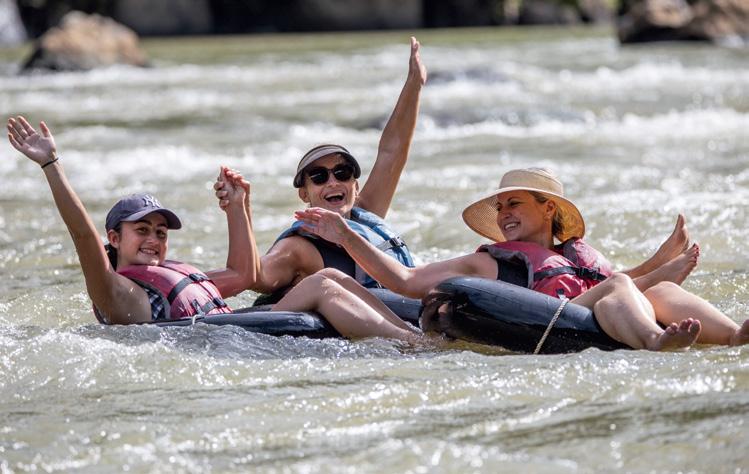
Venture to untouched beaches, verdant gardens and remote jungles on an unforgettable helicopter tour. Helitours Fiji offers scenic flights over the coral reefs and round the islands as well as adventure activities. Get dropped at the Sleeping Giant zipline or quad bike centres or choose an island location for a picturesque picnic.
THE SURPRISING THING:
Fiji is a multicultural society with 40 per cent of Fijians of Indian descent, so traditional Indian food is available in restaurants all over the two islands, Viti Levu and Vanua Levu, where most IndianFijians live. Visitors to Fiji will see women wearing colourful saris and are able to visit Hindu temples during their trip.
Fiji has three official languages: English, Fijian and Hindi, with English being the common language of communication. Native Fijians speak Fijian as their first language and it’s taught in schools.
Indo-Fijians speak Hindi as their first language. Their ancestors were brought from the southern parts of India to Fiji by the British to work in colonial sugarcane plantations. The language is a medley of Tamil, Telugu, Malayalam, Kannada, Tulu, Gondi and Kodava that has now amalgamated into a unique vernacular.
Hinduism is the second largest religion in Fiji (Christianity has been the most prevalent religion among Indigenous Fijians since missionaries arrived in the region in the 1830s). If you’re in the country
over Diwali time in November you’ll find whole areas alight with colour and spectacular religious celebrations.
In February or March, depending on the Hindu calendar, the Holi festival occurs. It’s dictated by lunar patterns and celebrations are held to hero good over evil, to repay outstanding debts and to rid each person of their past errors. Bonfires are lit the day before the festival begins and the end is signalled by a huge party with praying, singing, and dancing, where coloured powders are thrown.

One of the best things about Fiji is the direct flights from so many destinations across the world. Once you arrive in Fiji, it is only a short journey to wherever you want to go, whether it’s by road, boat, helicopter or small plane. Fiji is a delightful playground for kids of all ages. Babies are adored, toddlers are indulged, primary aged kids are welcomed with open arms, and teenagers have a smorgasbord of fun to choose from every day. With nannies on hand at every resort and sensational Kids’ Clubs at most, children will find something to love here whether they are interested in cooking lessons, crab hunts, face
painting, snorkelling or nature walks. Even better, parents can take a bit of time out to rest and unwind.
Adrenaline is also on the menu; teenagers can join jet boat tours, go quad biking, cycling, e-biking, kayaking, ziplining or paragliding. For teens over 16, there‘s also skydiving (but they’ll need a parent’s permission).
CEO of Tourism Fiji, Brent Hill, says that hotels and resorts around the islands, like Plantation Island, Paradise Cove, Malolo Island, Kokomo, Namale, The Intercontinental, The Radisson and JMC (Savusavu) and Shangri La Yanuca Island are all fabulous for families.
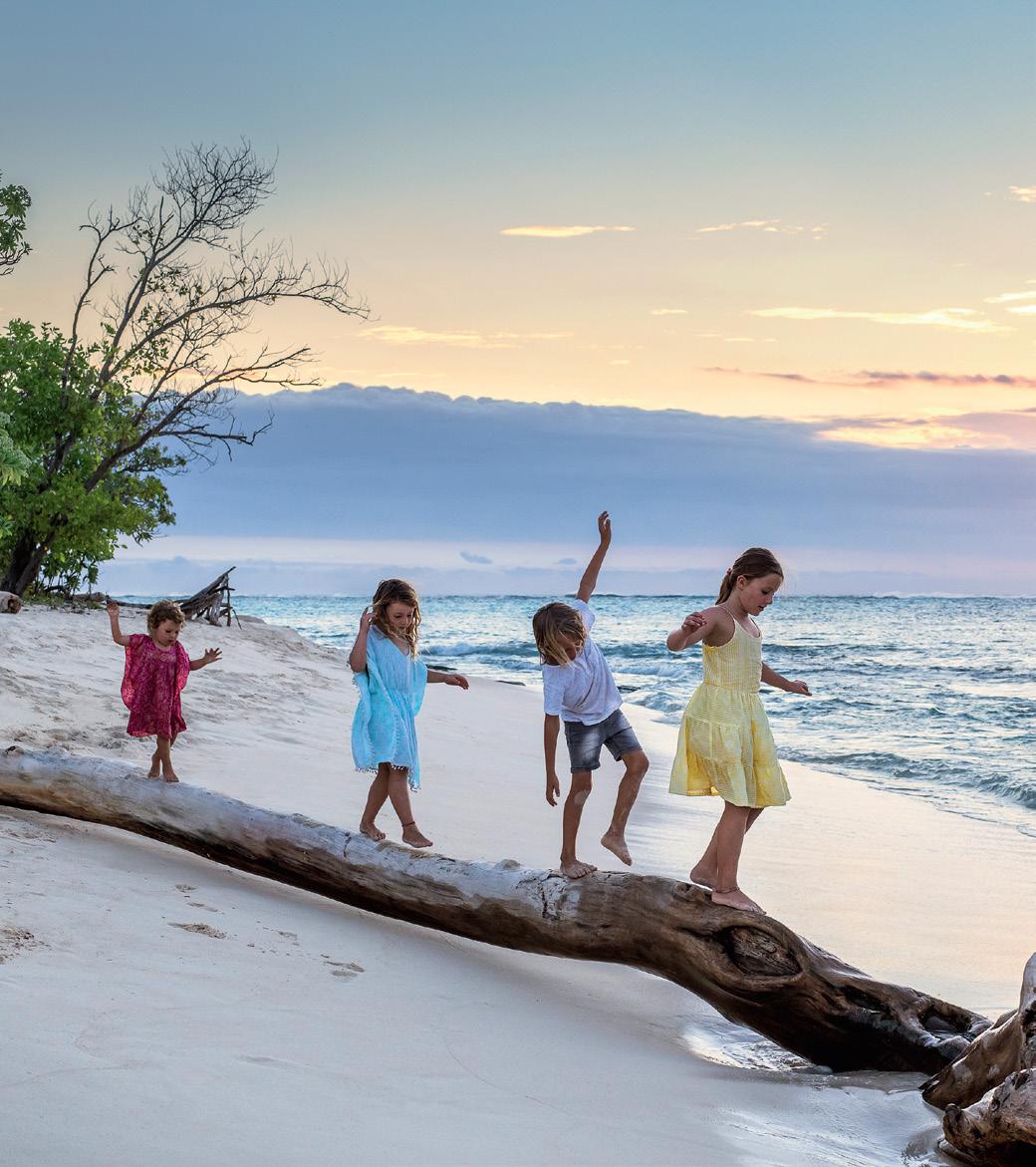
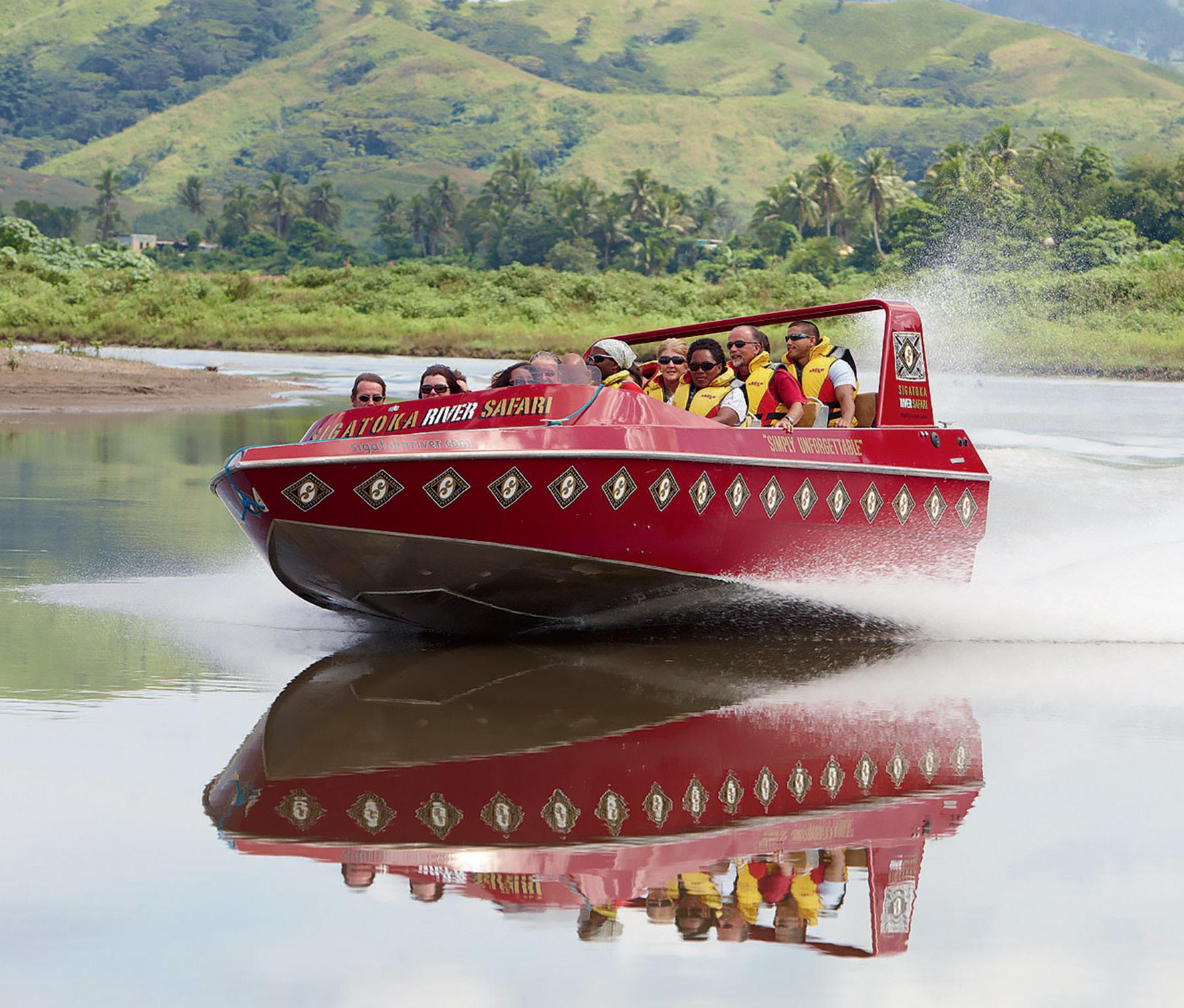

Tour the island on environmentally friendly e-bikes, dual-mounted on platforms. The bikes follow existing train tracks that take you through friendly villages, into the hills, alongside deserted beaches and, ultimately, to Vunabua (Frangipani) Beach where you can swim and snorkel. A zero-carbon footprint makes this social enterprise a winner.
A jetboat ride gives you access to the longest river on Viti Levu. Pass through extraordinary island terrain as you head for the Sigatoka Valley and see where Fijians source their freshwater mussels, fish, prawns and eels. Meet villagers, try cava with the chief, and eat a traditional meal together.
Take lessons or test your existing skills on a championship-calibre course at Denarau in the middle of the island close to many of the popular resorts. The stunning Natadola Bay Golf Course on Natadola Beach is a challenging but fair course and fifteen of the eighteen holes have Pacific Ocean views.
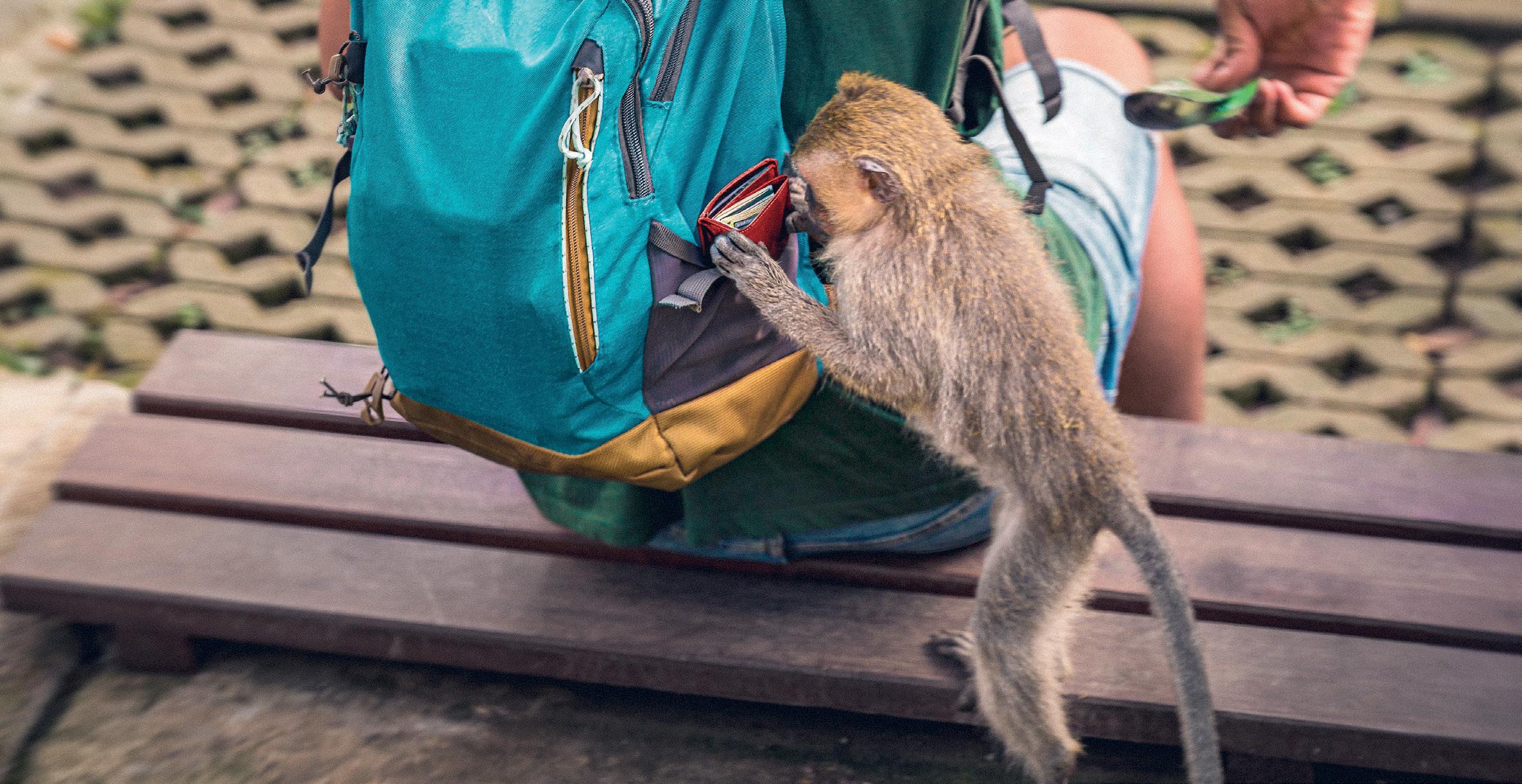
Medical Emergency?
We’ll pay unlimited costs for your treatment via the card whilst you’re overseas so you’re not out of pocket
Delayed luggage?
We’ll load $250 onto the card so you can buy essentials until your bag arrives
Stolen cash?
PassportCard will put up to $500 cash onto your card so you can withdraw from an ATM
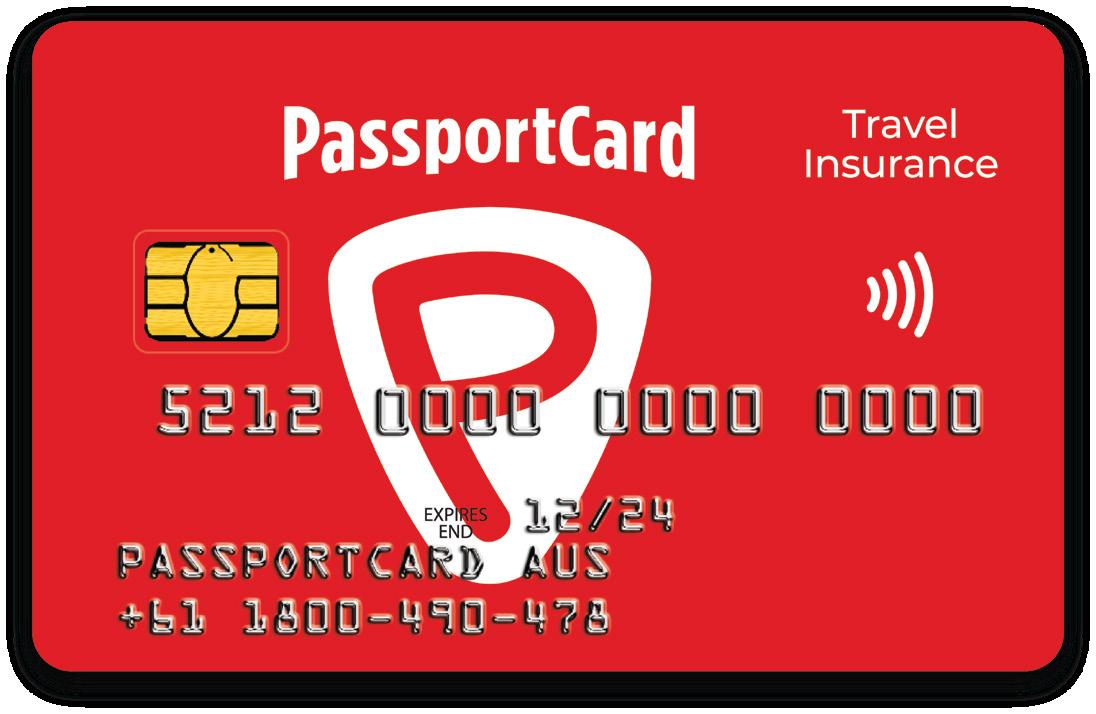

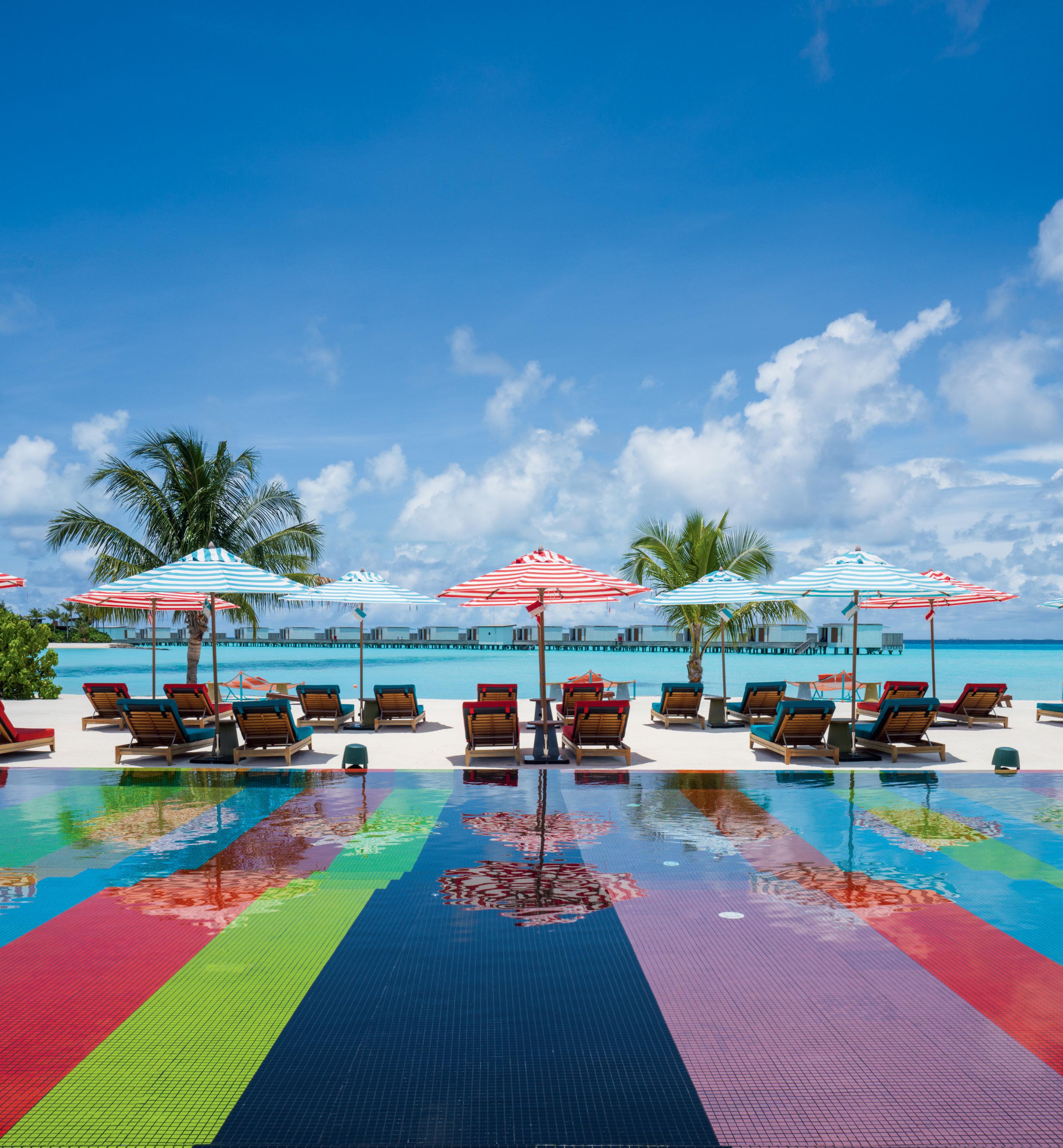


With its empty deserts, warrior fortresses, dramatic fjords and the overwhelming aromas of rose and frankincense infusing all areas of life, Oman is a dreamscape for travellers looking for the authentic Middle East, writes Belinda Jackson
Soft and dewy, the rose petals flutter from my hands in a flurry of pink fragrance.
It’s just past sunrise in the hill villages of Al Jabal Al Akhdar mountain region, and it is the season of the rose harvest. I watch as the pickers, clad in snowy white robes – dishdashas as they are known here – move between the terraced rose bushes, snipping the fragrant blooms and tossing them into bags or scarves slung around their necks.
Occasionally, they’ll pour their fragile harvest onto a large sheet laid on the ground, creating a small mountain of the softest petals of the damask
rose, still damp as the sun rises from behind the jagged ridges around us.
On my journey through Oman, I’ll find the roses’ essence wrought into luxurious skin creams, in my spa treatment, in its oils and perfumes and even in my coffee.


To learn what makes Oman tick, you just have to look at the roundabout decorations in its seaside capital, Muscat.
A dallah. A dhow. A mabkhara. A khanjar
A coffee pot. A sailing ship. An incense burner. A dagger.
Hard to miss, these giant sculptures help you navigate the city; (“Turn left at the dhow to get to the Al Bustan Palace Ritz Carlton.”)
The coffee pot is the heart of Arabian hospitality. The ship for Oman’s love of the ocean. The incense burner for frankincense. And the dagger, a link to its history and culture as a peaceable nation – the Switzerland of the Middle East, if you like.
To put that in context, Muscat is just shy of five hours’ drive across the desert from the glitterati of Dubai, and shares borders with the United Arab Emirates, Saudi Arabia and Yemen.
With a sparse population of just five million people, it is a sum of dramatic fjords and great sand deserts, stark mountain ranges and a sub-tropical monsoon season that plays through its southern region, a thousand kilometres south of Muscat.
Oman is also possibly the most beautifully scented country in the world.
Walking into the Shangri-La Al Husn, the cavernous white marble lobby is veiled in a cloud of frankincense burning from a gold brazier. It is the signature scent of the hotel, of the people, and of the entire country, evoking purity and spiritualty, calm, serenity and higher thought.
“I grew up in a family where my mother burns luban [frankincense] every day at sunrise and sunset,” recalls Khalid Al Amri, the world’s only frankincense butler, who is
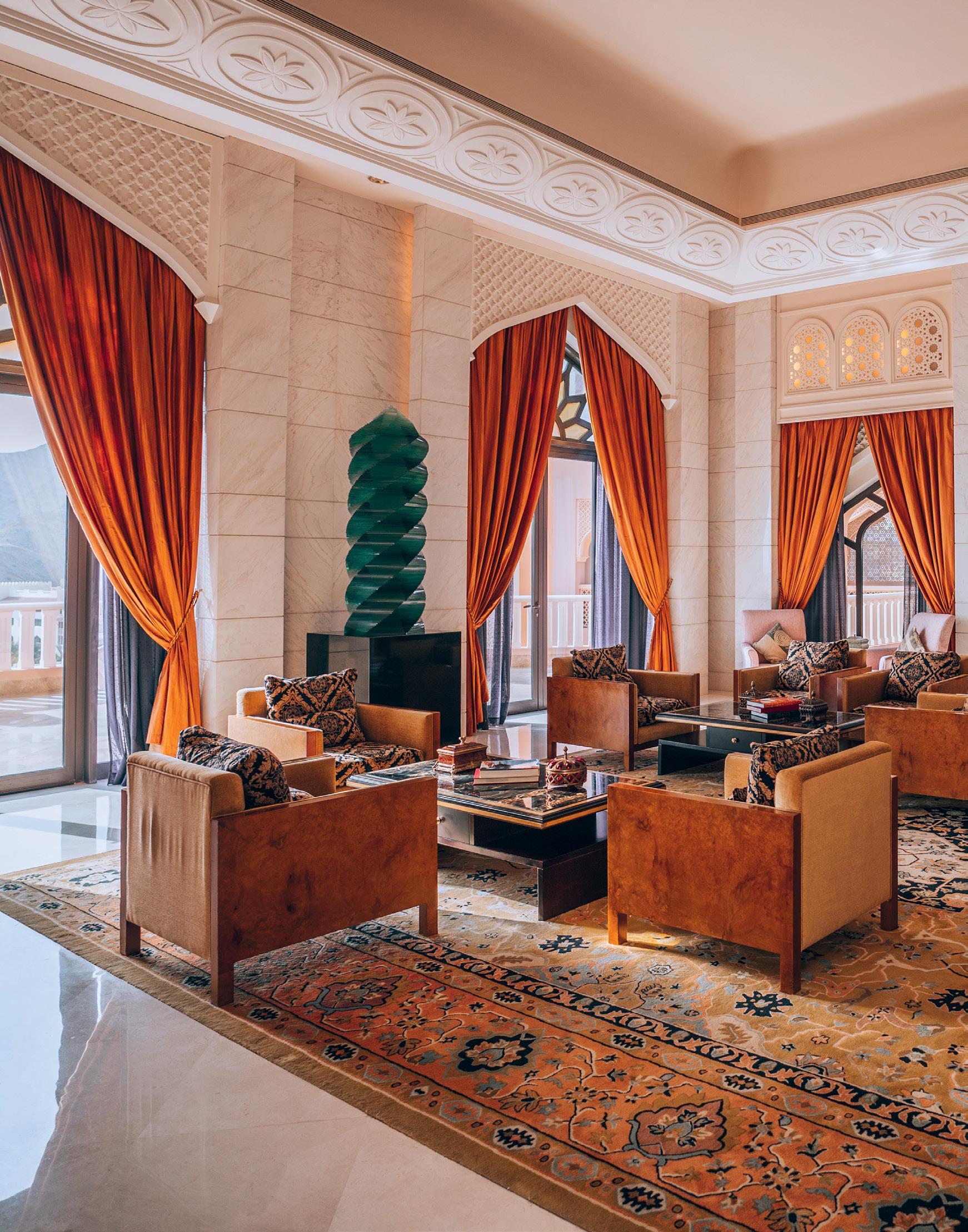
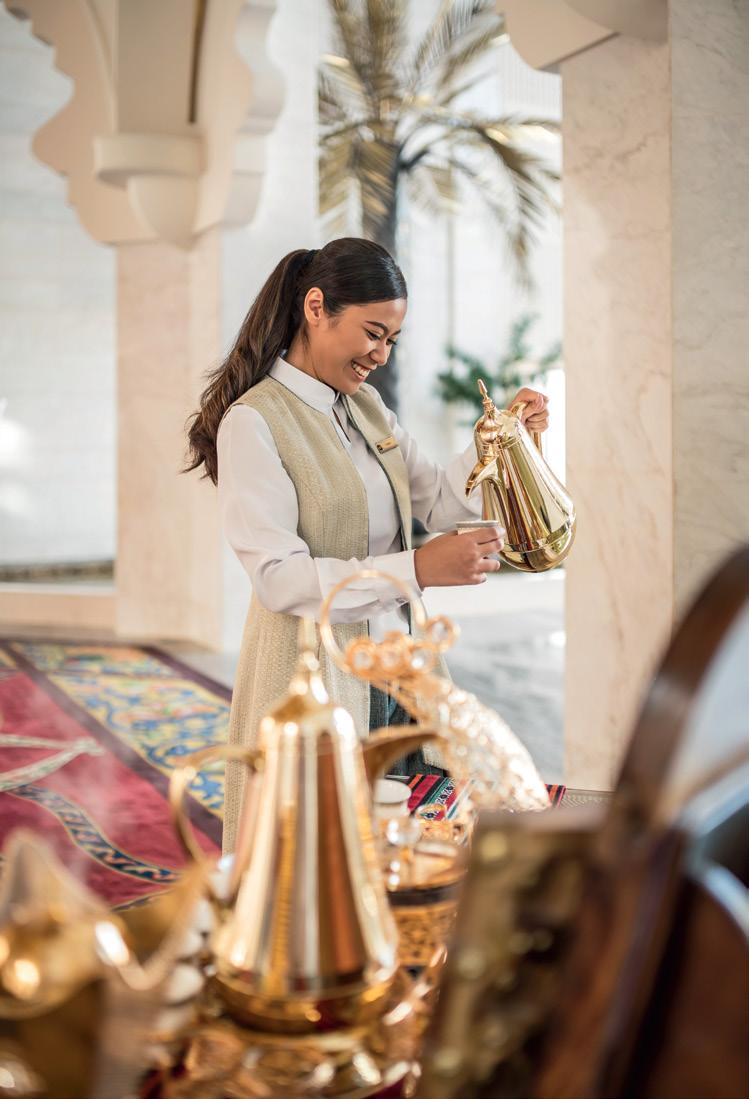
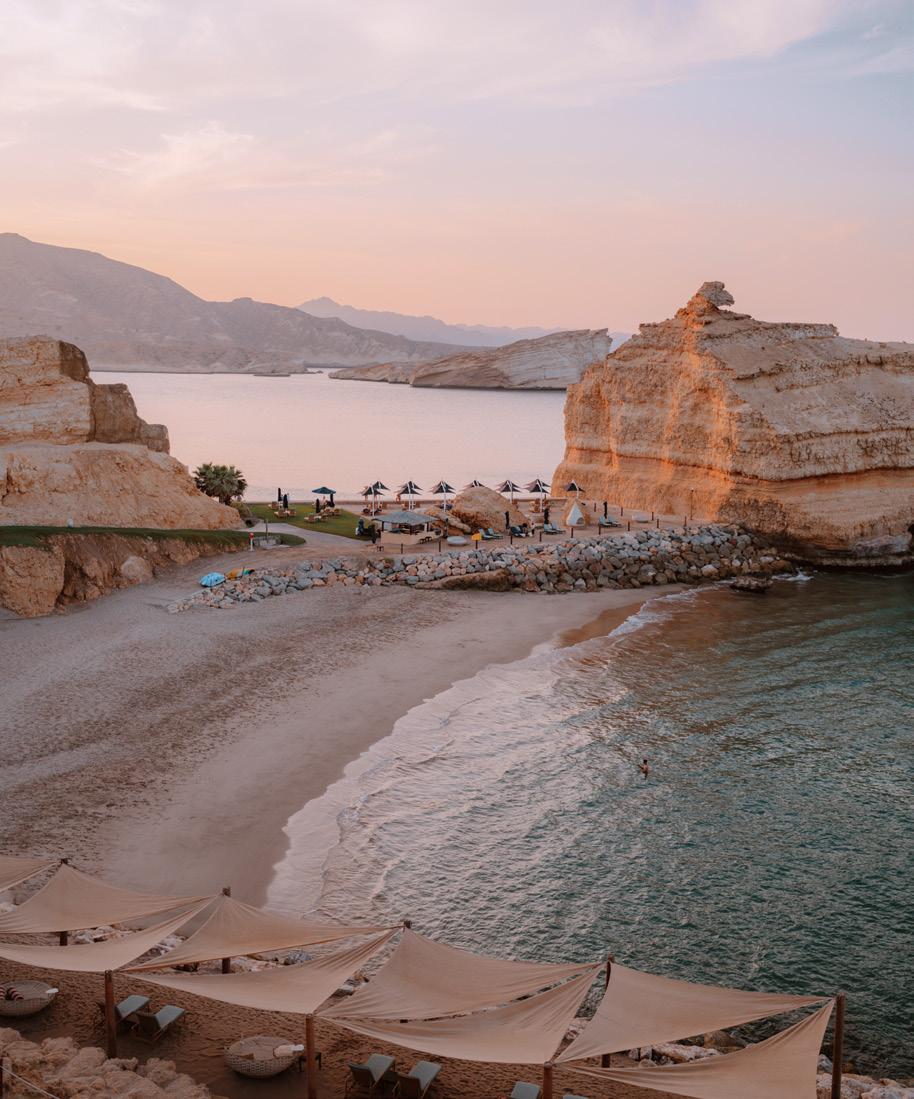

Book your stay now

based at the beachside Shangri-La resorts on the southern fringe of Muscat. “She burns luban at the start of her day to bring positive energy to house, and at the end of the day to separate from the stress.”
“Frankincense butler” is an uncommon title in the world of hospitality, and an uncommon job, even in Oman. Every morning, Khalid attends to his duties of sharing the story of frankincense.
“Good morning, babies,” he coos as we walk together into a small, gated park, waving his hands across a dozen small trees. “These are my children,” he says proudly.
Not just any trees, these are Boswellia sacra, which produce the fragrant resin that is frankincense. Burnt in the cathedrals of Europe and every house in Oman, the perfume world agrees that the most pure frankincense comes from the Salalah district in the country’s south.
Oman’s wealth was built on the curl of smoke. More expensive than gold, frankincense filled Oman’s coffers before oil took over, and it’s also embedded in Oman’s traditional medicines – drop a pearl of the whitest frankincense into water and drink to ease a congested throat. Chew it for fresh breath. Burn it to calm the mind.
“As a blessing for a new baby, we burn frankincense in the house for 30 days to welcome the new life,” says Khalid, waving a tendril of smoke across my face. “Did you know the symbol of our national airline, Oman Air, is its smoke?”
As we talk, we step through the plume to let it weave through our clothes, and Khalid offers me dates and pours the tiniest, white porcelain cup of cardamom-infused coffee. It’s my third for the morning and my one for the road.
Book your stay now
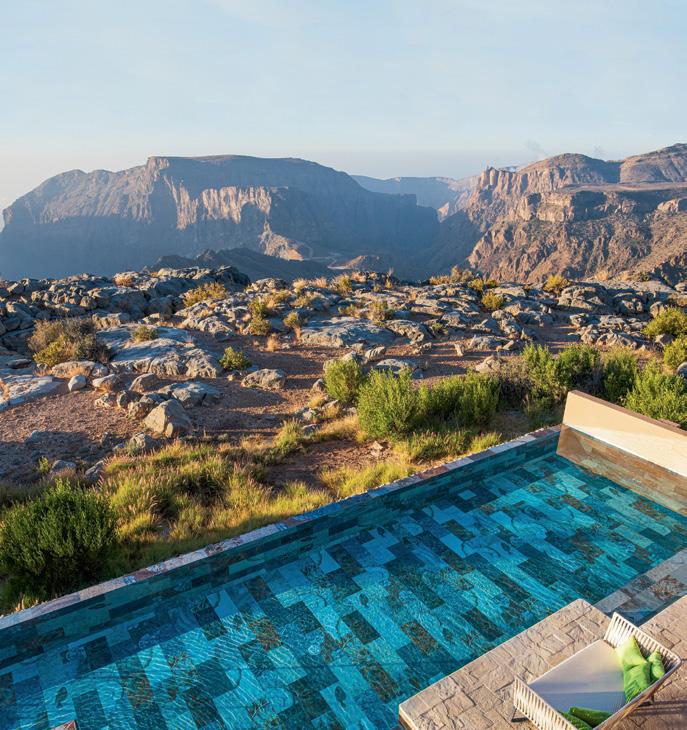

Tat road leads to Oman’s interior, and to its old capital, Nizwa. On Friday mornings, its streets and souq ring with the bleating of its famed weekly goat market. Te narrow lanes are packed as foppy-eared kids are paraded past an eager audience of shoppers, men in their always-white dishdashas and embroidered caps, kumars.


Until very recently, Nizwa’s mudbrick old town, Al-Aqar, was but a beautiful ruin of collapsing walls gathered around the sand-coloured, 9th-century castle and 17th-century fortress. But there’s life in this town, and the towering city walls are being rebuilt; for a rial – (about $4) you can promenade atop the wall in the cool of the evening, descending to sit in the open-air cafes set amongst the palm gardens.
Old houses – deserted by local families 30 years ago – are being reborn as tiny boutique hotels, with mudbrick walls and timber shutters, rooftop lounges and the rich red, black and white handwoven fabrics of eastern Arabia’s tribes.
As the light from a hundred terracotta lanterns and fairy lights plays over the palm leaves, a grandfather invites me to sit, welcomes me to Nizwa and calls for short cups of karak. The sweet milky tea is infused with cinnamon and a bite of pepper, and costs 100 baisa, or about 40 cents apiece.
“I remember Nizwa before electricity,” he recalls – until 1970, the country still ran on gas lamps and dirt roads, until its progressive young Sultan took the reins. As we sip, his grandchildren crowd around to share our qurus, small crepes striped with date syrup, before returning to their evening game of football in the warm, summer air.
The road from Nizwa zig-zags up into the Hajar Mountains, past flocks of goats and the occasional wild donkey, to the highest hotel in the Middle East, the Anantara Al Jabal Al Akhdar. At a checkpoint, police determine whether our 4WD is suitable for the steep climbs and descents of the highest section of the Hajar range, whose knobbled spine runs 700km from the northernmost tip of Oman – up in the fjordlands of the Musandam Peninsula – south to the whitewashed port city of Sur.
Within minutes of arriving on the Saiq plateau, 2000 metres above sea level, someone is bound to tell you you’re at Diana’s Point, where the then


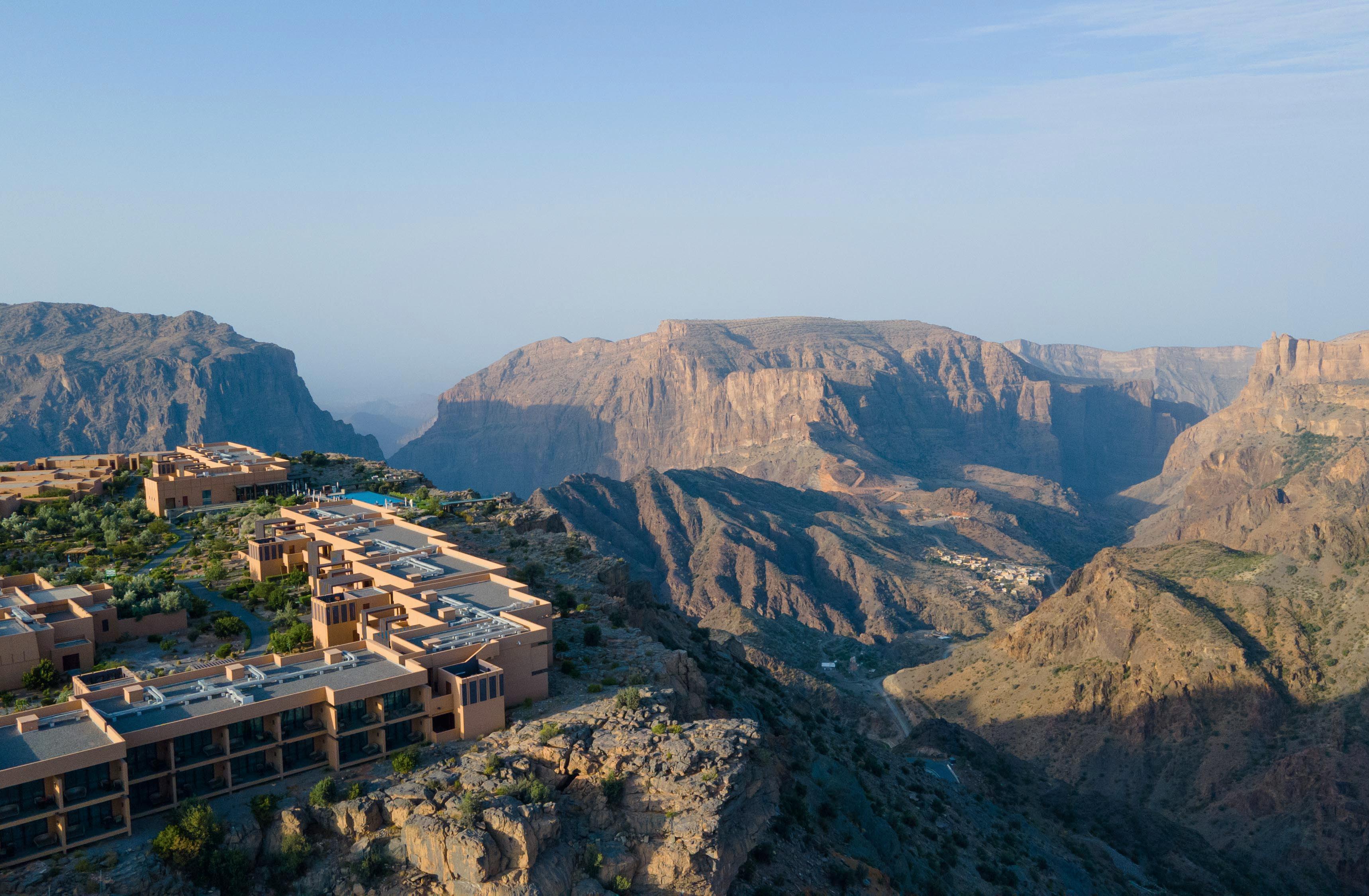
Princess of Wales and her husband paused for an afternoon on a tour of the Middle East, back in 1986.
Lucky me – I’m sharing her view from my room. As I look toward the sunset, I spy a chain of small stone villages tucked into the mountains’ folds. A narrow footpath runs between the villages of Al Aqr, Al Ayn and Ash Shuraiqa, where I’ll walk early tomorrow morning to watch Oman’s pink damask roses being harvested.
For six weeks, from March to early May, the fragrant flowers dominate all life in these hill villages, as their essence is distilled and ensnared. The houses of Jabal al Akhdar’s villages are filled with baskets of petals, as the rose growers start the second task of the harvest, distilling the precious petals into pure rosewater for use in cosmetics and as a sweet-scented addition to food.
“I sleep, eat and work here for two months,” says Mahmood al Amry, who works alongside his 80-year-old father to harvest
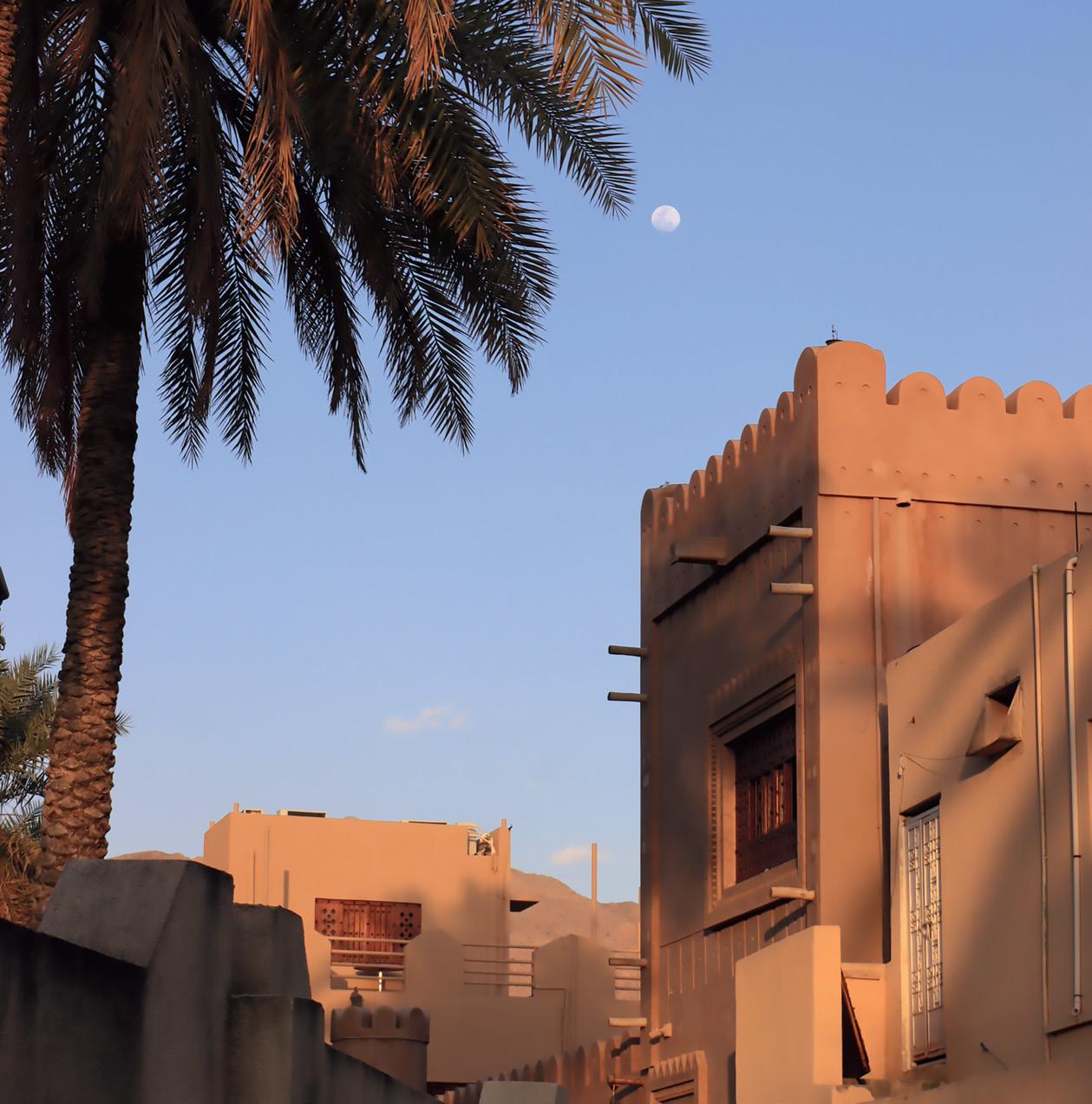
the roses. His children drop in to visit their father as he stokes the fires over which simple bowls steam the petals to ensnare their precious essence.
Back at Anantara, the spa beckons – its antioxidant-rich pomegranate treatment, made from the fruit trees surrounding the spa, intrigues, but in the midst of harvest, it is the rose rescue ritual that beckons. With roses on my face, my feet and massaged into my skin, am I not the fragrant embodiment of the rose harvest?
Darkness has fallen as I return to Muscat for my late-night Emirates flight back to Dubai. I’m sharing a long-distance taxi with two other passengers, and tales are shared like A Thousand and One Arabian Nights
“My father is 120 years old, and had 40 children,” contributes the geography teacher from the back seat of the taxi.
Driver Ali and I are amazed. “What’s the secret to his longevity?” we ask, sipping hot karak
“He eats nothing that’s been put in a refrigerator.” The rest of the 150-kilometre journey is spent digesting these incredible facts, until we finally reach Muscat airport.
“The road is very short when we speak,” says Ali, placing his hand on his heart in the classic Omani gesture of thanks, before turning his taxi back toward Nizwa.
You can buy pyramid-shaped chocolates in any airport in the world, but in Muscat’s glossy airport, you’re shopping for frankincense and rosewater, while ordering tea infused with cardamon and saffron – here, Oman’s identity is on display.
Its most famous perfumier, Amouage, has its own concession in the shopping section, where I spritz its Opus XII Rose Incense on my wrist. Frankincense as the top note, myrrh at its base, and the heart note of damask rosewater. The fragrance warms as I board my flight, and I am, literally, wearing Oman on my skin.
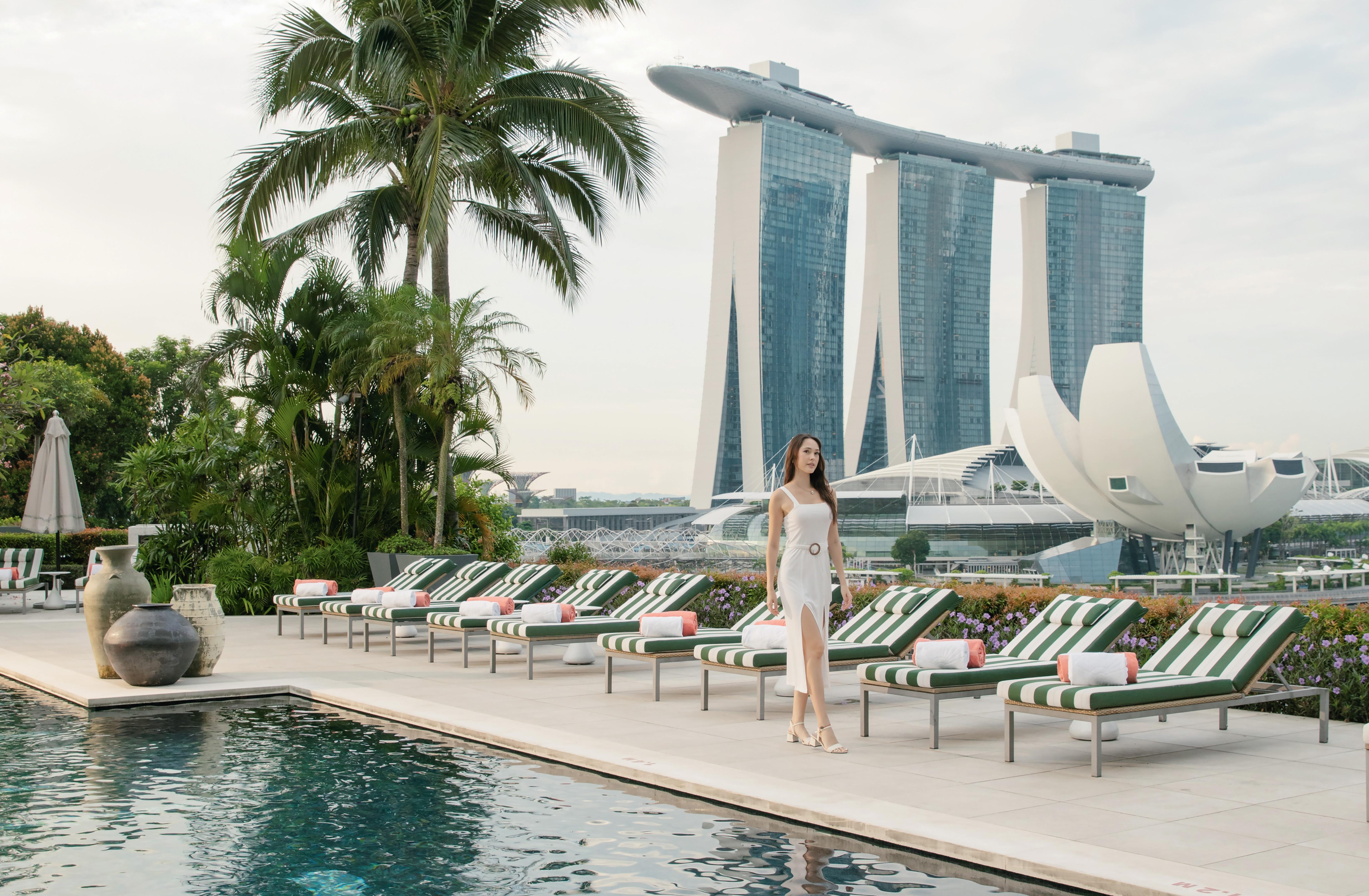
In the past year, Singapore has seen a huge number of innovative hotel openings from the world’s biggest and bestknown brands. Claire Knox visits the city-state to see why a new Lion City stay is every luxury hotelier’s pride and joy.

It’s a steamy summer night in the tropical metropolis of Singapore and dusk has settled in, cloaking the city’s modern skyline in a soft, blue light.
I’m right in the thick of Singapore’s swish shopping belt of Orchard Road: expensive cars and taxis clog the main thoroughfare and a sea of tourists, shoppers and office workers move along its leafy sidewalks. Look up, and you’ll see one of the city’s most recent architectural icons: the nature-inspired Pan Pacific Orchard hotel, rising up from the glittery shopping malls and sprawling embassies like some otherwordly Avatar-esque structure.
The 23-storey hotel – stacked into four Jenga-like, interlocking landscaped “terraces” (forest, beach, garden and cloud) – is the work of pioneering, Singapore-based architecture practice WOHA, wellknown for its use of lush vertiginous gardens and organic tropical features. Indeed, the most eye-catching features from street level are its four massive, 120m-tall “Supertree” columns festooned in vines and vegetation, and the dense, tropical gardens spilling out from the four terraces. It’s so visually striking the people beside me stop to capture the building on their phones.
Now almost a year old, it is the latest property for the Pan Pacific group, and a symbol of Singapore pushing the luxury hotel boundaries.
The Pan Pacific Orchard is part of a new – and quickly growing –wave of luxury hotels to have opened in Singapore. The country is no
stranger to stylish, sustainable properties – from the “spaceship in the sky” Marina Bay Sands and the green-swaddled Park Royal on Pickering, to the storied Raffles Hotel.
Yet the last year has seen a boom in spectacular and highly anticipated openings: there was the Pan Pacific Orchard, then the Singapore EDITION; the quirky Mondrian Singapore Duxton and the Art Nouveau-inspired Pullman Singapore Hill Street. The Regent has been reimagined as the new botanical-inspired Conrad Singapore; while another new kid on the block is Artyzen, a luxury property built around a lush “sky villa” concept. Later this year, the trendsetting Los Angeles brand The Standard will unveil its first hotel in Singapore.
These are just a few of the newcomers so what is behind Singapore’s surge in new luxury hotels?
I meet Teresa Koh, Pan Pacific Orchard’s director of marketing and communications, in the property’s open-air “forest” lobby. “It’s pretty impressive, isn’t it,” she says, pointing to the cascading water feature and soaring ceilings. “There are nods to nature throughout the property, from the subtle, such as earthy textures and tones, to the obvious, like the gardens. Greenery
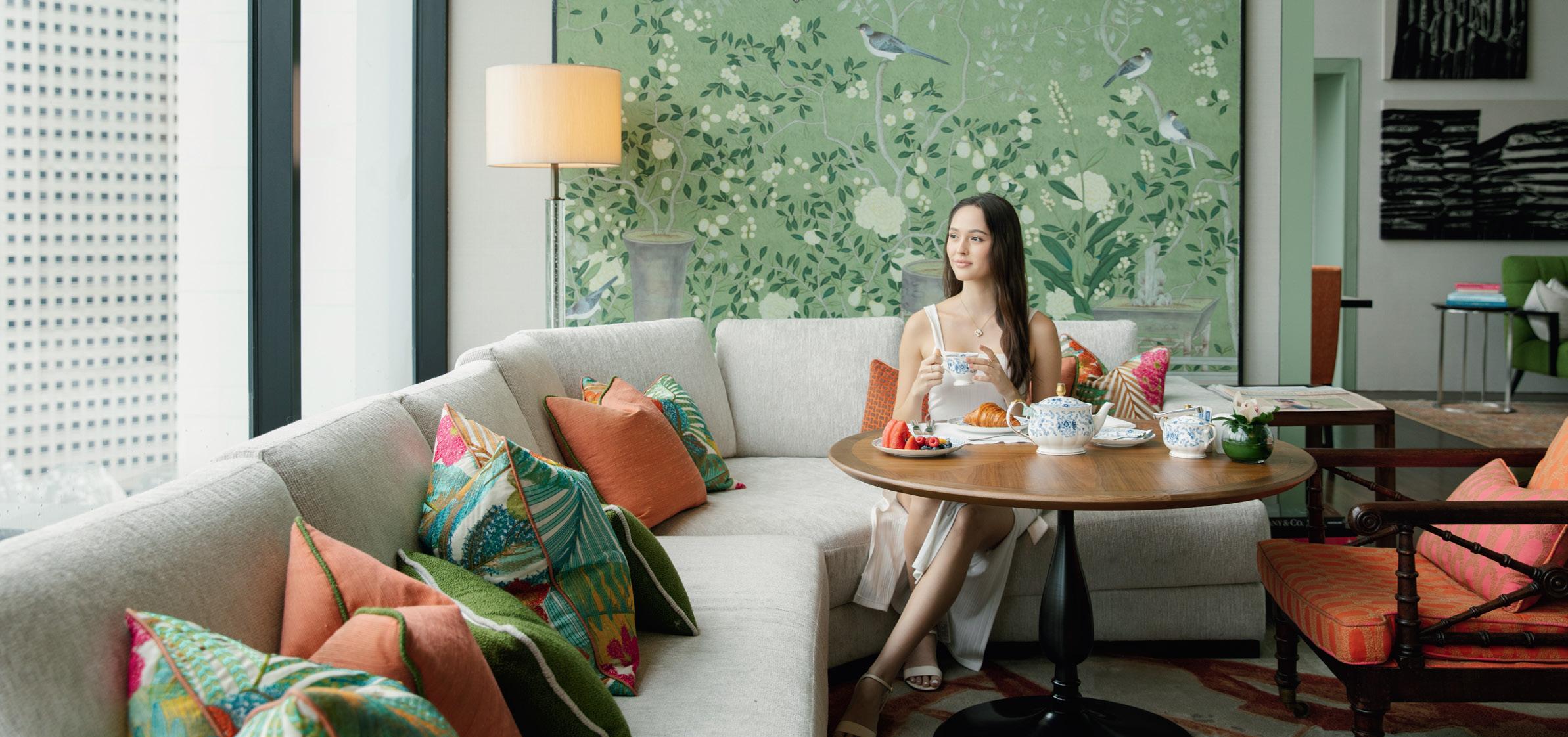
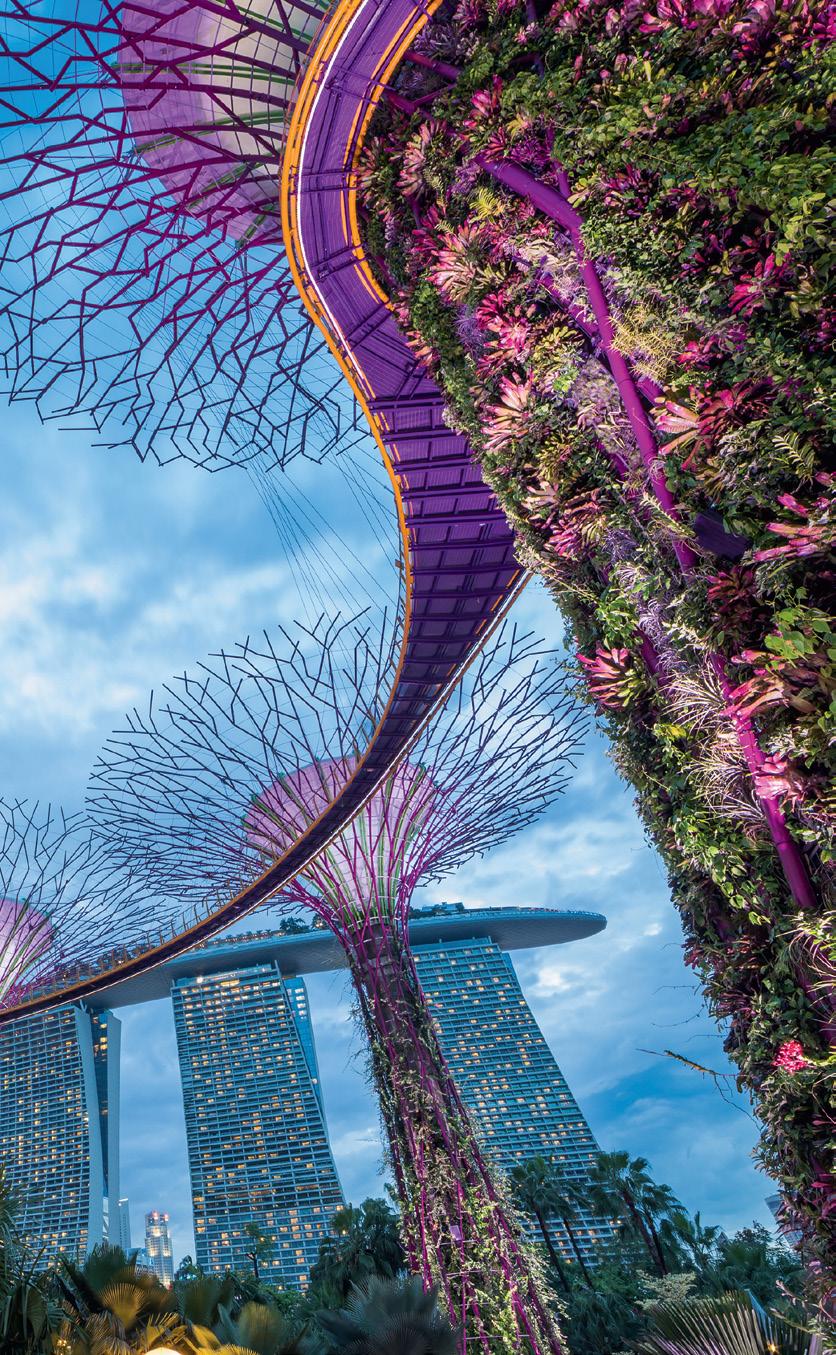

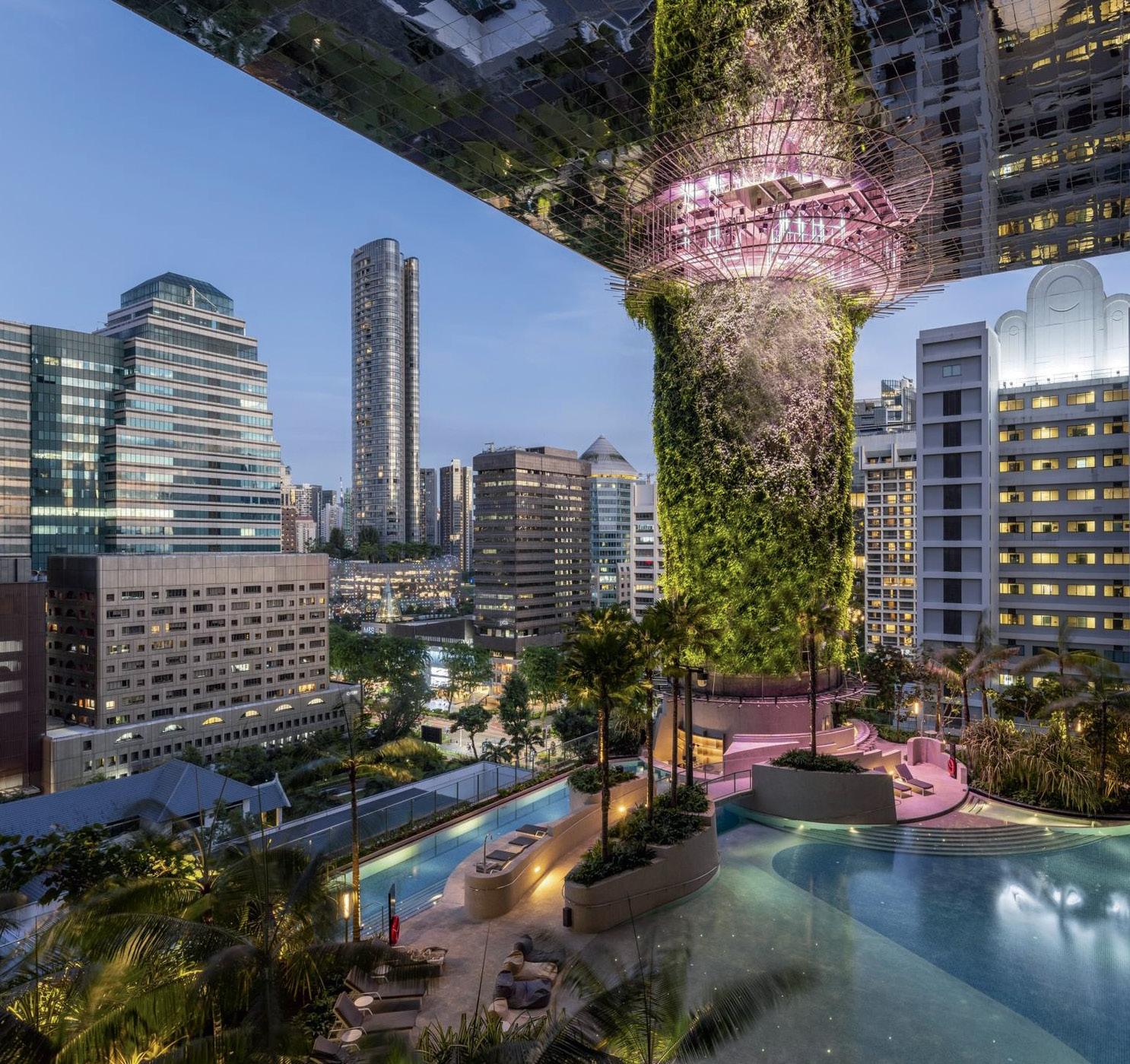
covers 300 per cent of the hotel’s land area, but our ‘greening’ goes beyond the aesthetic. We really wanted to take things to the next level, sustainability-wise.”
Later that evening, I spend time on the second terrace, which includes a state-of-the-art spa and gym and outdoor “beach” swimming pool. The terrace ceiling is ingeniously covered in polished stainless steel “mirrors” – making for a surreal visual trick when dreamily floating on one’s back in the lagoon-sized pool. On the third terrace is yet another garden and swish Champagne and oyster bar Florette, while the final 18th floor “cloud” terrace boasts an ethereal ballroom and shimmering water features. All suites come with balconies that look out on to one of the four “terraces”. I also find a pretty little bottle of artisanal gin from Singapore’s first gin distillery Tanglin Gin, a handcrafted spirit that references the original nutmeg plantations of Orchard Road.
Not far from the Pan Pacific, the just-opened COMO Metropolitan Singapore pays just as much attention to bespoke service – albeit in the more understated, minimalist style that the luxury lifestyle brand has built its name on. Founded by Singaporean Christina Ong – the wife of Singaporean billionaire Ong Beng Seng – in the early 1990s, the family-owned brand has opened some of the most design-forward hotels from London to Bali.
The COMO brand prides itself on its dedication to what it calls “fuss-free, modern luxury” and this latest offering embodies the tagline: its 19 floors feel like a gorgeous patchwork of all the creative minds and innovators Christina has in her orbit. The award-winning Italian architect Paola Navone, as well as the Japanese interior
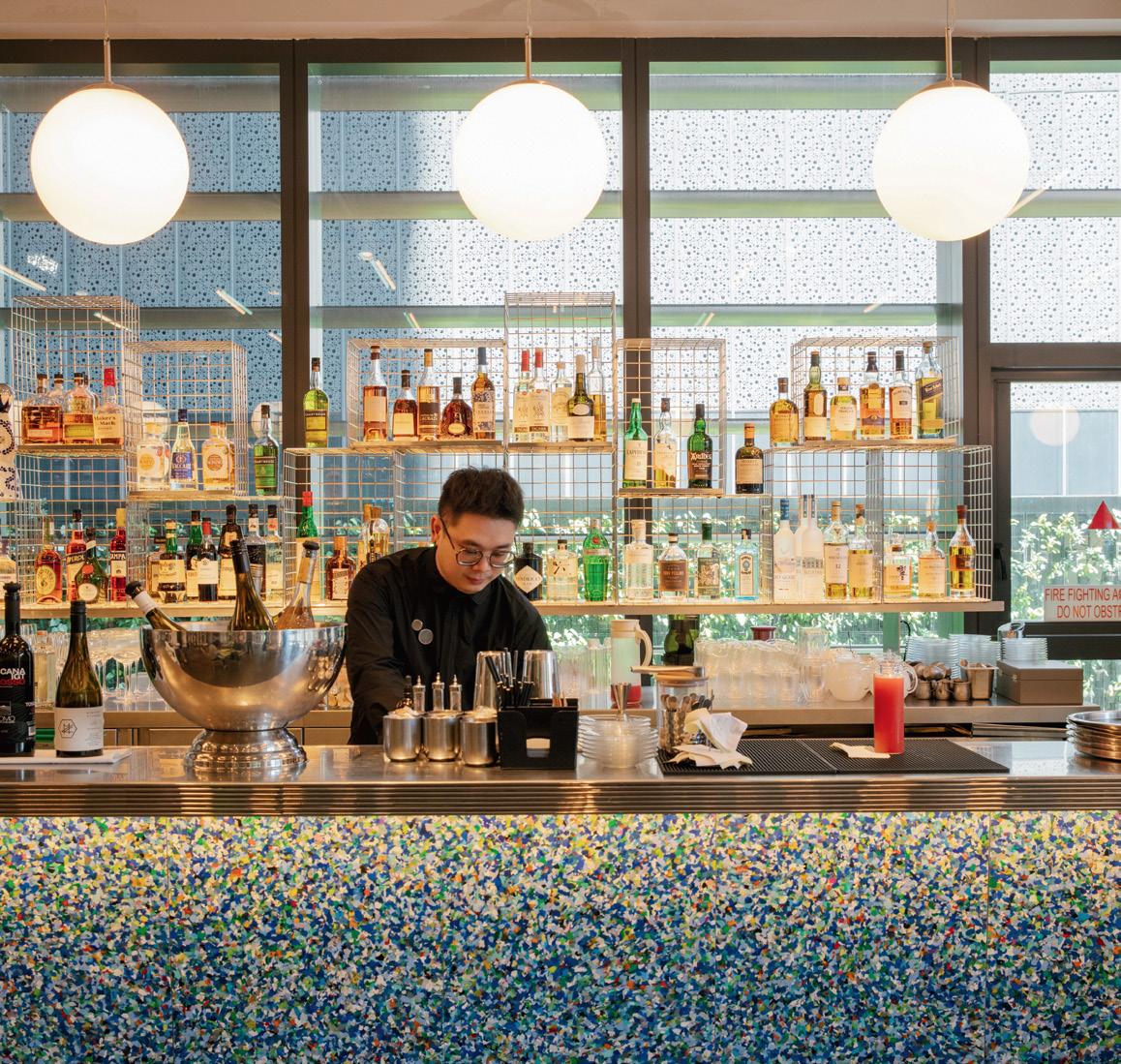
design-consultant Koichiro Ikebuchi are behind the aesthetics, while Norwegian digital artist Thomas Hilland has created a mesmerising, floor-to-ceiling floral digital artwork in the foyer.
COMO has serious food credentials, too, home to the first outpost of the Michelin-starred COTE Korean Steakhouse outside of the US, as well as the Asia debut for acclaimed French pastry chef Cédric Grolet. My three-year-old is mesmerised by Bruno, the robotic barista on the sixth floor, who pours us a flat white just as good as any in Melbourne.
Later, I take a stroll through Style21, the two floors COMO has dedicated to a high-end fashion retail space (designers rotate but include labels such as Thom Browne and Simone Rocha). At the heart of the COMO brand is its Shambhala wellness program, but Singapore really ups the ante: an entire floor houses a fully equipped spa, daily yoga and Pilates classes, an infrared sauna, oxygen therapy rooms and hyperbaric chambers, a ginormous gym and striking rooftop infinity pool looking out over Orchard Road’s skyline. Breathtaking pool features seem to be a thing in Singapore; a surreal and unsettling glass floor runs the entire length of the COMO’s pool. We spend an afternoon getting up the nerve to swim over it, looking directly down at the miniature cars and people that bustle away 19 floors below.
Notably, the 156-room Singapore hotel is the first property in the Ong’s home country. I ask general manager Ruby Garcia why it took so long to set up a flagship COMO in the Lion City?
“The homecoming decision of the Ong family behind COMO, to establish a presence in Singapore reflects the city’s allure as a hub for luxury hospitality,” Ruby says. “Being a Singapore brand, its heritage combined with the cosmopolitan vibrancy of this city provides an ideal backdrop for COMO’s signature blend of wellness, luxury and authenticity and aptly this is a flagship hotel and a one-stop destination for the COMO brand offerings.”
Ruby believes the pandemic gave the hospitality sector that extra nudge to push boundaries and innovate. “Singapore’s recent surge in luxury hotel openings and upgrading of existing properties post-pandemic is emblematic of its resilience and commitment to excellence in hospitality,” she adds. “The city-state has long been a beacon of innovation, and as it reopened its doors to the world, it seized the opportunity to redefine luxury experiences. Singapore has cultivated an environment where luxury thrives organically.”

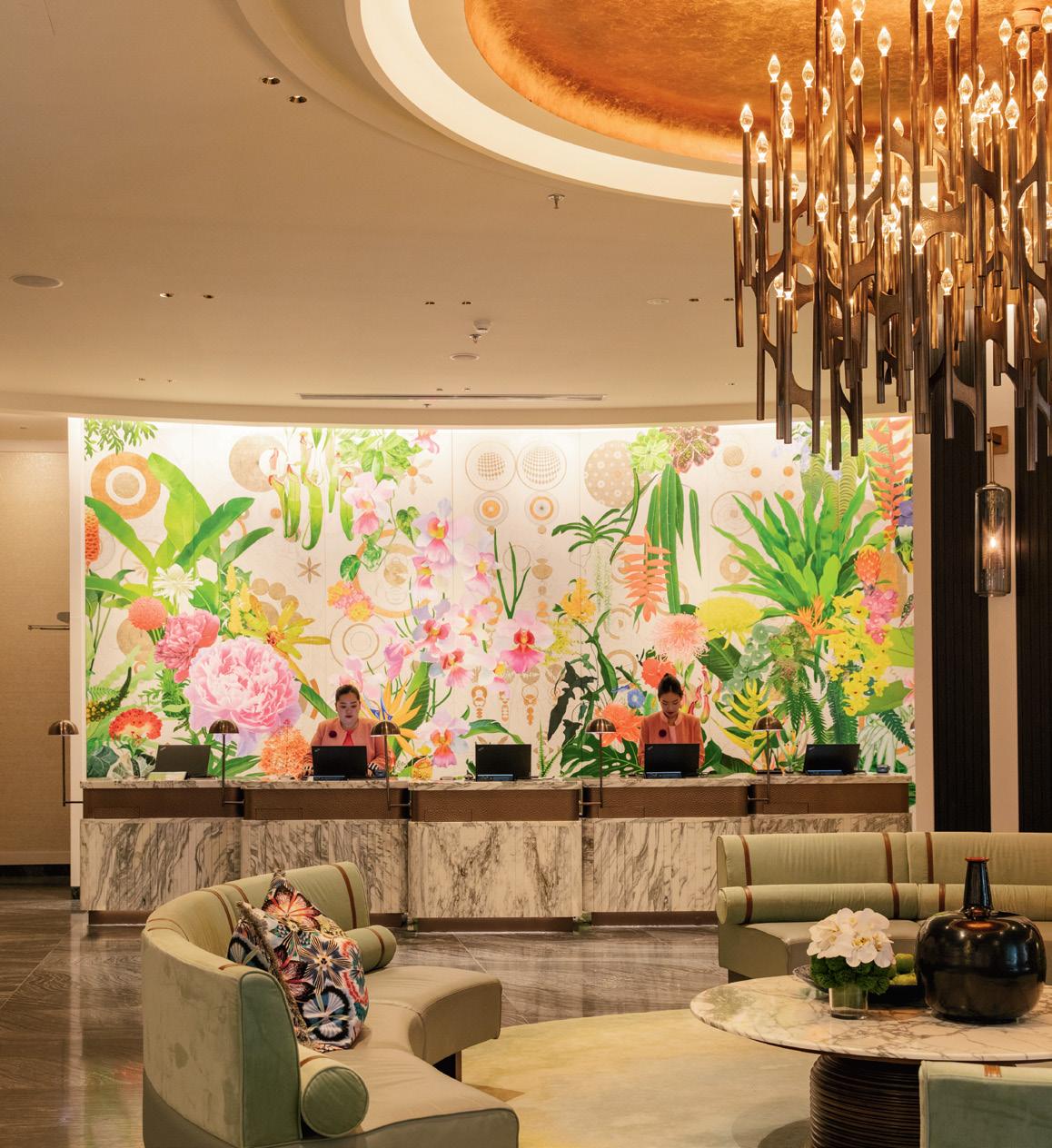
It’s not just brand-new hotels getting in on the action – some of Singapore’s longestablished properties are undertaking reboots. Take Raffles, for example, and the legendary, fan-shaped Mandarin Oriental, which has unveiled a gob-smacking $150 million, six-month-long renovation.
When the Mandarin Oriental was first built in 1987, Marina Bay didn’t exist. Now, many argue that it is the jewel in Singapore’s tourism crown: 38 hectares of entirely reclaimed land that feature in countless Instagram selfies. The area is a heady juxtaposition of new – from the sci-fi Art Science Museum to the futuristic flower domes and “Supertree” groves at Gardens by the Bay – and old: the storied Fullerton Bay hotel, which once had Singapore’s shorelines lapping at its pier.
One of the major elements of the Mandarin Oriental’s transformation, therefore, was to completely reorient the hotel, to have the premier suites facing the bay rather than the skyline. All 510 rooms have been revamped, and feel lighter, bigger and fresher.
Tasked with the mammoth project was KL-based interior design firm DesignWilkes,
helmed by Canadian Jeffrey Wilkes who has managed to tell the story of Singapore’s evolution itself. The lobby, with its black and white lines, is a nod to the country’s British colonial black and white homes, but its vivid pops of colour and greenery point to the tropical landscape. You might spy a reference to Singapore’s pastel-hued Peranakan shophouses, or perhaps its national flower, the Vanda Miss Joaquim orchid, which inspired the crystal spheres in the lounge.
“Every corner of the hotel tells a story... we wanted guests not just to be visiting the city, but to feel a part of it,” Jeffrey says.
The hotel’s general manager is Jill Goh, another hospitality trailblazer who has smashed the glass ceiling as the first female GM of the Singaporean hotel.
Under her leadership, the revamped Mandarin Oriental has also evolved its level of service into something more tailored, more bespoke. The signature dish at Embu restaurant is a lobster laksa. MO Bar, the property’s swish speakeasy, shakes up a boozy rendition of kopi siew tai (local iced coffee). And the experiences on offer are thoughtful and curated: think
cruises along the river on authentic bum boats; traditional tingkat (tiffin box) painting sessions, and explorations of Singapore’s old kampongs (villages).
The hotel’s executive lounge, HAUS 65, was developed with the team at the exclusive members-only Mandala Club; guests enjoy complimentary entry to the coveted Chinatown venue – and access to its pop-up omakase dinners, gigs and art exhibitions – as well as access to the hotel’s 21st floor lounge, which hosts cultural events, sommelier tastings sessions and sublime views of Marina Bay. The HAUS 65 privileges even extend to a private, chauffeur-driven Porsche that guests can make use of.
But for Jill, the most spectacular feature of the refreshed property is still firmly rooted in the Mandarin Oriental’s unbeatable location and million-dollar views.
“Without fail, what always takes my breath away is the view from the four-bedroom suite,” she says. “Its panoramic vista spans the South China Sea right across the Marina Bay waterfront district. It’s what everyone thinks of when they think of Singapore – you just can’t beat it.”



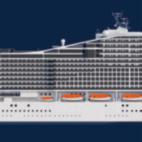

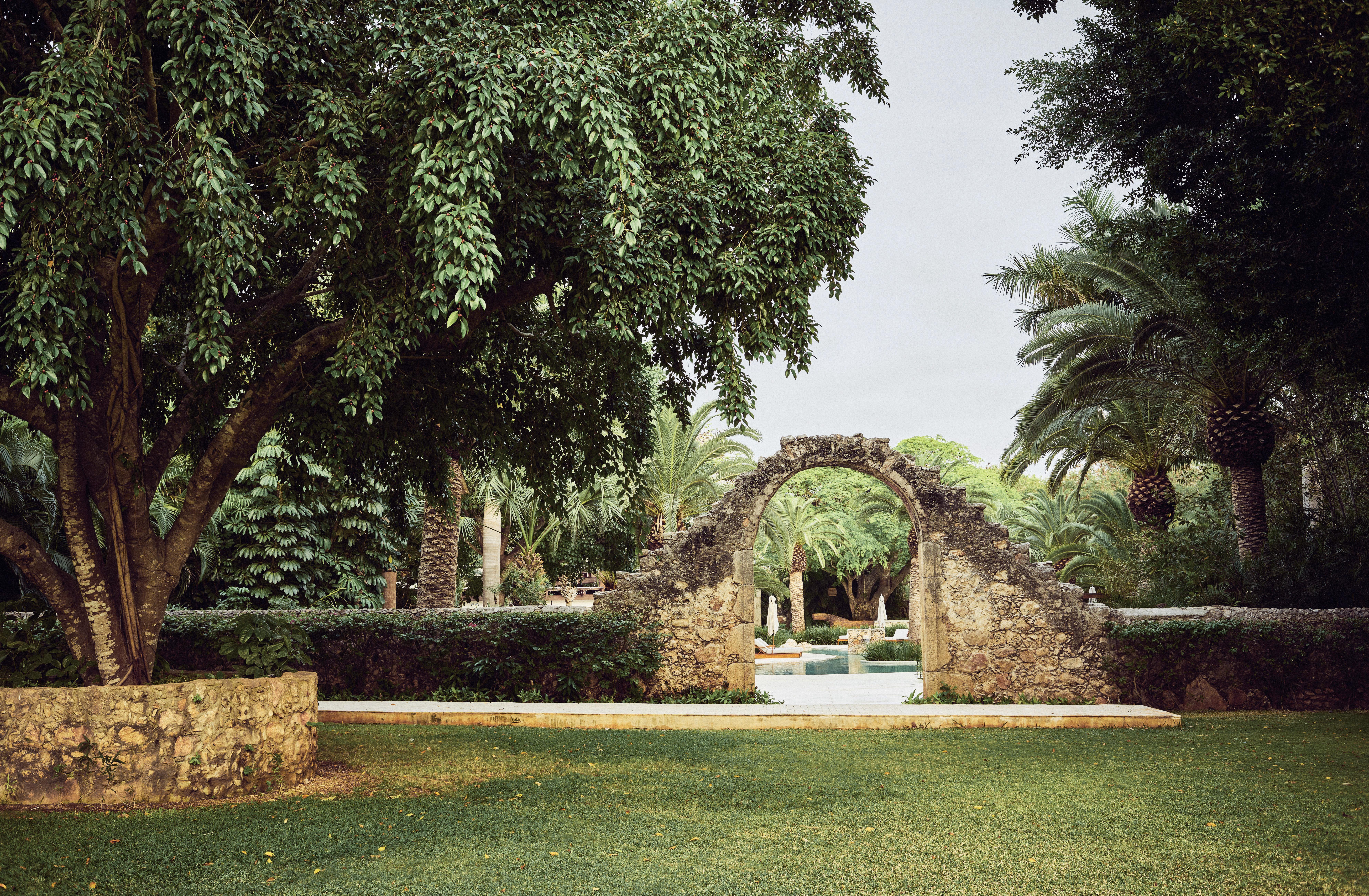

On Mexico’s Yucatan Peninsula, Robin Catalano checks into an historic hacienda that’s using ancient Mayan practices to bring some relaxation to the busy modern world.
Inside a chalk-white, seashellshaped structure I close my eyes and listen to the sound of waves and the rise and fall of a man’s voice intoning a traditional Maya blessing.


What he says is a mystery, but mine is not to question; mine is to relax, something the Western obsession with productivity has made me exceedingly bad at.
I have come to Chablé Yucatán, about 30 minutes outside Mérida in northeastern Mexico, for the ultimate test of my ability to let go. “The new luxury is space, nature, sustainability, and wellness,” sales director Oscar Quijano tells me of the immersive resort. Chablé Yucatán’s commitment to personal wellness is impressive, but its efforts at environmental revitalisation may be even more so. In the process of rehabilitating an historic hacienda, the team has also rebuilt a local ecosystem.
The state of Yucatán was once the heartland of ancient Maya civilisation (1000 BCE to 1521 CE). It seems an unlikely choice for a luxury resort, especially in Chocholá, a small western Yucatán municipality about three hours from Cancún, where one-quarter of the current 4,800 residents are of Indigenous descent and speak Yucatec Maya. The town is modest, with a small park, a barrelvaulted cathedral, a few cheerfully painted restaurants and shops, and low-slung, whitewashed houses snuggled behind stone walls. It’s the kind of place where you’re likely to see more bicycles than cars, and where dusty trails diverge off the main roads and go nowhere.
The path we turn down might as well be a gateway to a parallel universe filled with chittering woodland creatures. Out of the lush, leafy vegetation of the Maya Forest, which stretches across 35 million hectares in Mexico, Belize and Guatemala, Chablé Yucatán materialises. The resort was built on the grounds of a colonial hacienda, 1,200 of which were established during the rope-making boom of the late 1800s, for growing henequen, a sprawling, fan-shaped relative of the sisal plant. As the production of synthetic fibres arose, the haciendas went belly-up. Most were abandoned by 1915.
Several have been transformed into museums, while others were rebuilt in their colonial image and opened as hotels. Jorge Borja of Grupo BV, the lead architect for Chablé Yucatán, told me, “These places are beautiful, but they’re not comfortable. We wanted it to be relaxing, but instead of restoring all of the hacienda, we wanted to have a remembrance of what it was.”
Among Chablé Yucatán’s 740 acres, original structures – even crumbling ones – have been integrated into the design. I get my first taste upon check-in, at a flat-roofed red stucco building, once the office where hacienda workers collected their weekly wages.
Up a cobbled walkway, I enter the one fully rebuilt structure on the property: Casa Principal, the resort’s central gathering space. The staff are setting up merienda, a late-afternoon snack. From a plate of colourful marzipans moulded into miniature fruits and vegetables, I select a bite-size watermelon slice. I carry it, along with a ceramic cup of tezcalate, a Mayan cacao drink, onto the tiled terrace. Through the grand arches, I look out onto a lawn ringed with the remains of centuries-old stone walls, like a lost ruin just waiting to be rediscovered.
Beyond a timeworn arched gate, paved paths lead to Chablé Yucatán’s 37 casitas and four villas, each separated by dense, jungle-like growth. Their number markers bear a Mayan word, such as Kaan (origin) or Aj k’iin (the day).
Mine is the slightly less poetic Weech (armadillo), but the rustic-minimalist room, layered with textures in neutral colours, is soothing. I run a hand over the embroidered linen decorative pillows. According to the resort’s interior designer, Paulina Moran, their patterns are contemporary interpretations of eighteenth-century colonial designs.
Dinner is at Ixi’im, the resort’s fine-dining restaurant, a stunning piece of architecture that integrates the hacienda’s ruined rope-making factory into its design.
Past a bar crafted from salvaged machine parts, and through a glass-walled hallway displaying the world’s largest collection of tequila, I sit in the tiled dining room and sample a menu that highlights traditional Mexican techniques and local ingredients, such as roasted cauliflower with a piquant Simojovel chile sauce, and a tostada of grilled grouper atop a crispy, heirloom corn shell.
Back at my room, I tug the privacy rope across the driveway and make a mental note to rise early and give my loaner bike a whirl around the trails. I crack the blinds and sink back against the bed’s leather headboard, letting the breeze-ruffled palm fronds hypnotise me into sleep.
So lulled am I by my environs that I do not, in fact, wake early. I jog off to a late breakfast at poolside casual-dining restaurant Ki’ol, where I pile my plate with wedges of fresh guava, pineapple and papaya.
A tanned, smiling young man pulls up in a golf cart outside Chablé’s iconic red arch. André Gaillard García, the resort’s veterinarian, beckons for me to join him on the Green Route, a two-hour tour that highlights the resort’s flora and fauna plus its Maya-inspired practices and modern sustainability measures.
These include replanting endemic trees, such as roble, whose delicate white flowers are an important source of pollen for bees, and palo mulato, or “tourist tree,” whose peeling, shiny red bark resembles the sunburnt skin of gringas like me. All are part of the effort to rebuild the local ecosystem and support biodiversity.
Deep within the forest, we stop at a temazcal, a semicircular clay sweat lodge. As we enter through a wooden door, its overhang emblazoned with the private parts of the Mayan goddess of birth and fertility, Andre explains that people have profound experiences within its walls. “I came out crying,” he tells me. “It was like a rushing river of emotions. When I was done, I felt so light.”
We continue to the ka’anches, traditional raised gardens whose beds overflow with 55 varieties of vegetables and herbs, including lemony Mexican oregano and bracing hoja santa. Creeping vines along the ground birth the squat green pumpkins so prevalent in Mayan cuisine. The gardens supply both restaurants, as well as Casita Maya, an outdoor kitchen where you can take a Mayan cooking class.
On the far western side of the property, we pause at the sanctuary for white-tailed deer,
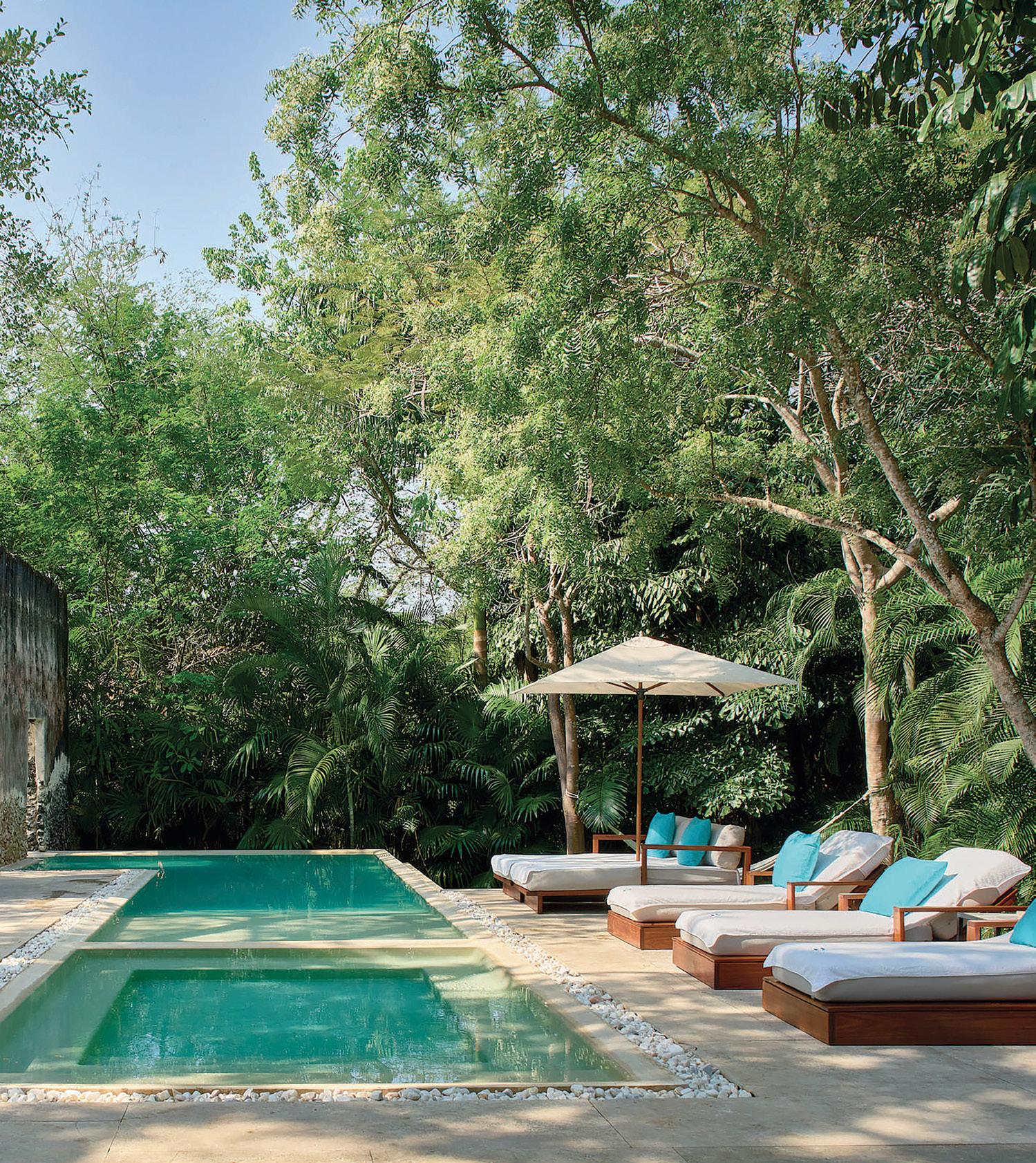
whose numbers have been decimated in the Yucatán by indiscriminate hunting. Across the road, through a turquoise gate carved with the figure of Ah-Mucen-Kab, the honey god of Maya mythology, a thatchedroof shed stands in a forest clearing. Its shelves are lined with rows of wooden shoeboxes etched with Mayan designs, and as we draw closer, I can hear them humming. Each houses a colony of Melipona beechii, an endangered stingless bee sacred to the ancient Maya.
Andre opens a hive box and uses a syringe to withdraw honey from a bubble within the miniature lunarlike landscape. He drizzles it onto the back of my hand. I lick it off. The honey is unlike any I’ve tasted: fresher and more liquid than the supermarket variety, with a mild sweetness and a pronounced floral flavour, courtesy of the replanted native blooms the bees feed on.
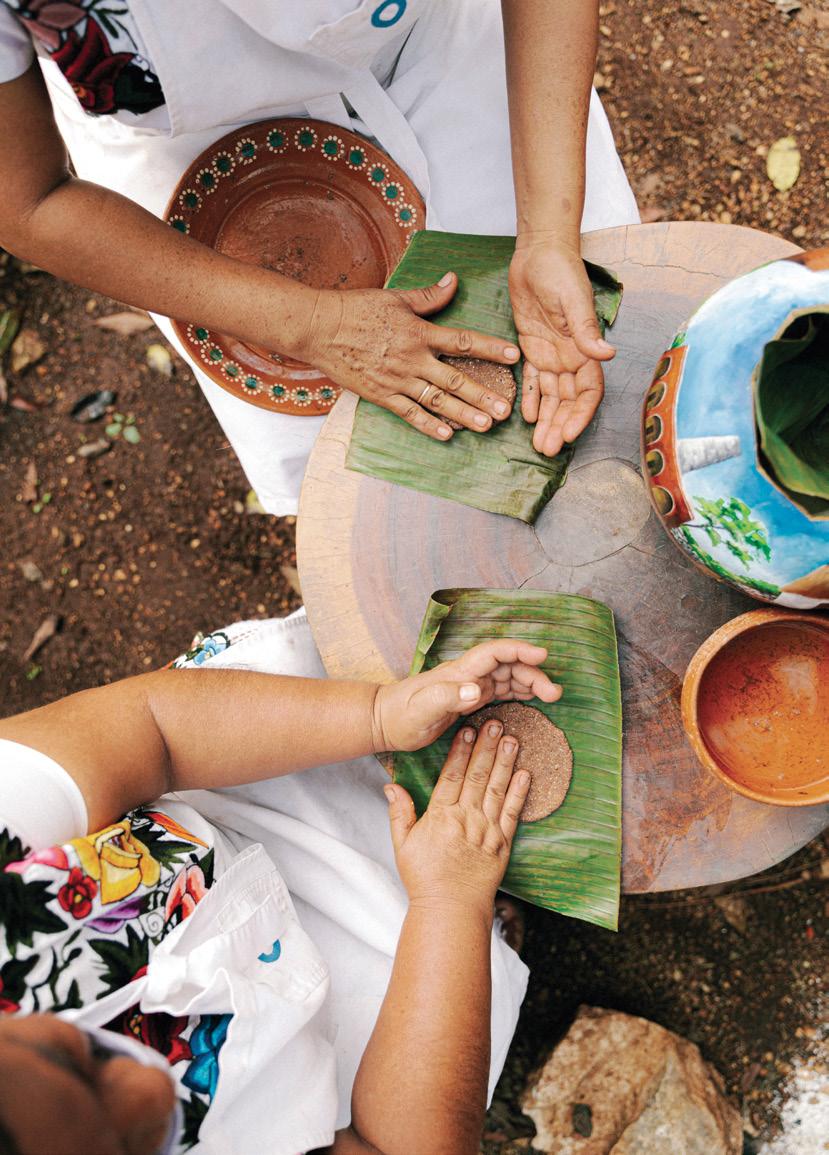
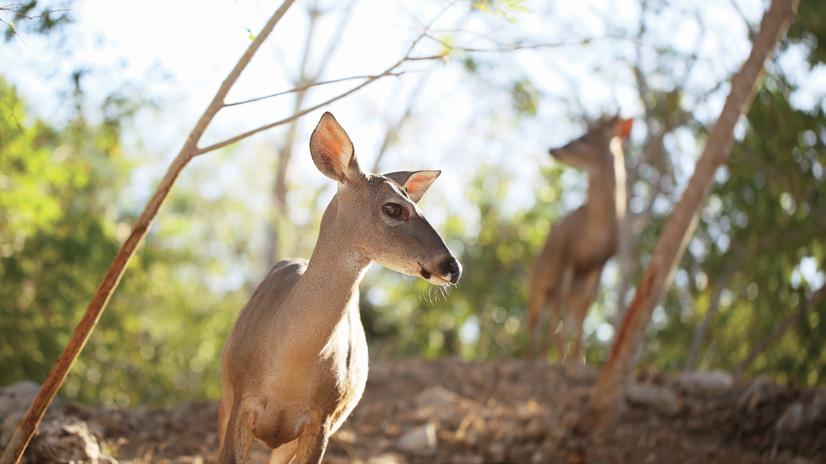


Next morning, while the sun is still ascending the morning sky, I hop on my bike with the chattering of the Yucatán jay shaking off sleep to visit Chablé Yucatán’s spa. The facility is composed of a main building and 14 private treatment rooms clustered around a cenote, or natural sinkhole. Mexico’s 3,000 cenotes, which the Maya believed were portals to the underworld and are connected by a network of underground rivers, formed 66 million years ago when an asteroid smashed into the earth, fracturing the Yucatán’s limestone bedrock.
The greenish granite of the spa mimics the cenote’s natural colour and does a respectable job of helping the large building
Book your stay now

blend in among the cenote’s vegetation.
A tiny woman with gleaming black hair escorts me to the seashell structure where I listen to the Mayan blessing. At a table laden with plants and incense, she uses a smouldering bundle of herbs to invoke the four elements. I ease my body into a saltwater flotation tank, and drift, weightless, on my back for 30 minutes. Afterward, in a teak treatment room overlooking the cenote, I am sugar-scrubbed, bathed, and massaged into noodlelike submission. By the time I stand on the porch, nursing a mug of tea and watching fat raindrops ripple the water, I begin to think there might be something to this whole peace-and-relaxation thing.
Treat yourself to a stay in one of the 40 individually furnished guestrooms, featuring private plunge pools and pamper yourself with a visit to the spa, which offers massages, body treatments, and facials. If you’re looking for recreational opportunities, you’ll find an outdoor pool and an outdoor tennis court.
That evening I settle in at Ki’ol with a bowl of sikil pak, a piquant pumpkinseed dip, and a plate of hibiscus flower enchiladas topped with pickled onions and salsa verde. Afterward, I make a lazy circuit around the property. The air is filled with the croaking courtship of insects and the scent of flowers. I spread my arms wide, as if mimicking the electric-green fireflies on the lawn in front of the Cigar Bar. I’m not sure how long I stayed like that.
My time at Chablé Yucatán had taught me that true restoration isn’t found in checking things off a list, but in surrendering to the simplicity of a place that had invited me to breathe, unwind, and simply be.

Open the door to a suite aboard our world famous ships. A unique sanctuary where you can relax and entertain with the most bespoke dining and personalised service at sea.
Welcome to The Cunard Grill Suites.
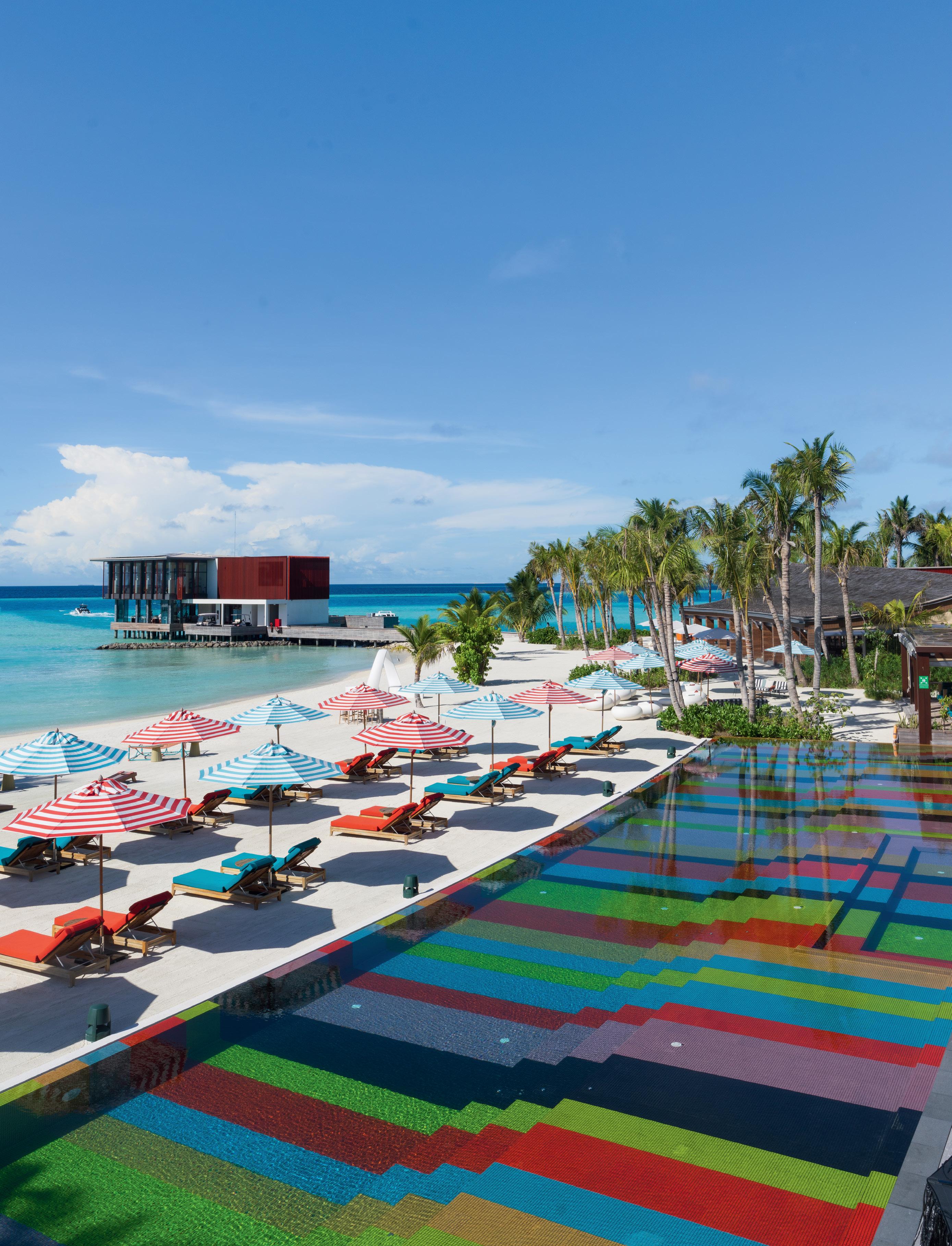

Te Maldives typically means “one island, one resort” but a new luxury ofering is taking a diferent tack. Paul Chai checks in to SO/ Maldives, a dapper new resort that takes it cues from the fashion world and encourages guests to see and be seen.

The hermit crab may well be the spirit animal of the Maldives. The over-the-top, over-the-water resorts that adorn these idyllic atolls, with their waterslides, rope hammocks and rock-star interiors, are designed for cocooning. This archipelagic state has travellers jetting halfway around the world to experience just a few hundred metres of alabaster sand peeping out of the Indian Ocean, but it is the villas where people spend most of their time.
And I get it, if I could strap my SO/ Maldives Beach Pool Villa to my back and carry it with me, I would. The oblong space is painted wedding-dress white with a bed big enough to pitch a marquee. The bathroom has a freestanding granite vanity for two, an oversized bath with a woven rainbow-coloured “sun hat” suspended overhead as well as a torrential rain shower. Hung in the walk-in dressing area is my exceptional Kassatex robe from New York, winner of an international robe-off where the resort flew in gowns from all over the world before settling on one.
My private garden, where the real hermit crabs are carving out sandy patterns with their shells, has a blue-striped plunge pool, lounges covered with sun umbrellas and a winding path out to the beach through tropical shrubbery.
As cocoons go it is very inviting, but I am more of a social butterfly and that plays to the strengths of this new resort from the Ennismore group. SO/ Maldives, set on Emboodhoo Lagoon on Kaafu Atoll, takes its inspiration from the world of fashion with the arrival dock dubbed “the runway”; it is part of the wider CROSSROADS development with a marina and neighbouring resorts and part of its appeal is its proximity to the capital of Male.
You can be whooshing open the solid wooden door of your villa less than half an hour after you step off your international flight, and you can jump between islands or even back to Male for a guided tour. This is the Maldives for those who don’t think the Maldives is for them.
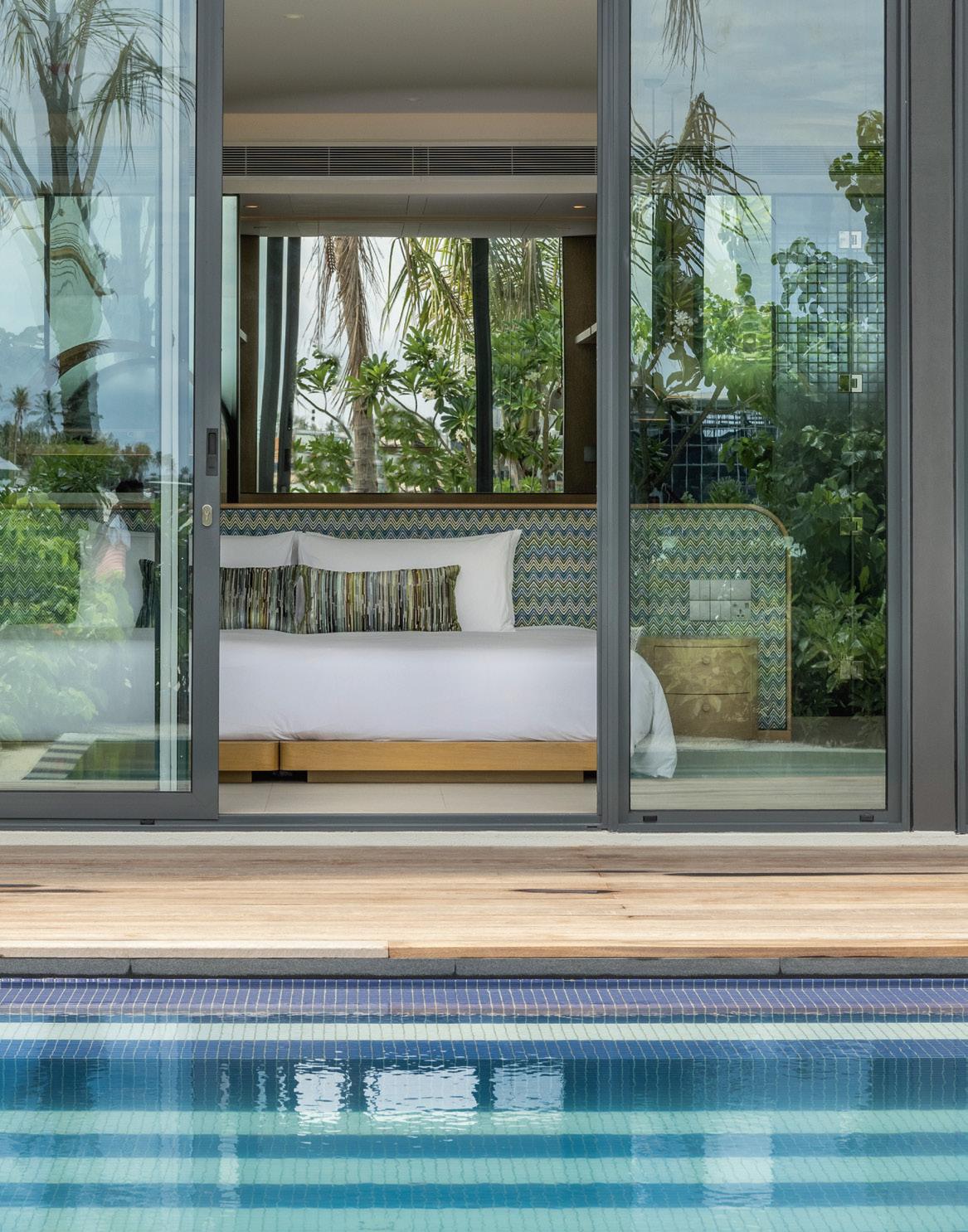
Reimagining the arrival dock as a runway ends up being a power move. Because SO/ Maldives wants to encourage you to have a more active vacation, you find yourself strutting up and down the wooden walkway more than you would at the average resort.
Our first excursion is to the nearby CROSSROADS Marina (‘fit: tropical shirt, Khmer scarf and straw sunhat), imagined as a day trip spot for the surrounding resorts. Our speedboat skips past the colourful overwater villas of Hard Rock resort and the more traditional offerings of Sai resort to tie up at the dock and we walk immediately into the Hard Rock Café in the marina with a long wooden bridge across the resort that also takes its name. Inside the wooden building is a tiled floor echoing Maldivian arts and crafts sharing the same space as a classic Tiesco guitar signed by Joey and Marky Ramone, names you don’t usually associate with a Maldivian getaway; the space has a stage and hosts live bands on the regular.
Back out on the marina we duck into The Beach Club with a swim-up pool bar and beach access that is popular with travellers who have to check out early and have daylight to burn before a late-night flight. Next door is the Ministry of Crab from Sri Lankan celebrity chef Dharshan Munidasa, lunch is over but when I am caught reading the menu I am quickly dragged inside to see the fresh crabs flown in from Sri Lanka in sizes that run from small to “Crabzilla”. You could easily spend a couple of days exploring the marina on a longer stay and there is even a nightclub open ‘til late.
The next day, my SO/Maldives runway excursion is to jump on a more traditional wooden boat for a Bubbly Sunset and Dolphin Cruise (‘fit: basic fashion-designer black t-shirt and shorts; lots of sunscreen). A few of us


clamber up to the flat roof of the boat and help with the dolphin spotting, but we also get a look at the collection of islands that make up CROSSROADS. We sail through several shades of Maldivian blue water and come close to returning to Male before we spot a pod of spinner dolphins doing just as their name suggests, in and out of the dark-blue waves. Like being on safari, our spotter radios another boat and the two vessels head towards the pod. Rather than be shy of human interaction, the sea mammals head towards our craft, leaping in and out of the water so close to the boat they should probably buy a ticket. Bubbles are popped, glasses are filled and we return to the resort buzzing.
Then there are my more regular appearances on the SO/ runway for cocktail hour when the walkway is lit with red neon (‘fit: tailored short-sleeve shirt and dress pants and a keen thirst from a day of activities). The evening event brings together guests who dress for the occasion with flowing resort-wear florals all the rage for women and a sea of linen for the men. The bike racks at the end of the runway are overflowing with the resort’s pale-blue cycles as guests lounge on large white couches with drinks like a Sapphire Lagoon or a Smoky Sunset.

For all its day excursions, SO/ Maldives also does a great job of bringing the human hermits out of their shells for the activities at the resort itself.
While the Pavilion may draw focus during cocktail hour, Lazuli Beach Club is the social focal point by day with its striking pool coloured like a vintage television test pattern. The club shares DNA with similar offerings in St Tropez or Bali with a casualbut-stylish vibe and DJ sets that feature a familiar, laidback Balearic beat. Couples can hide away on daybeds housed in nooks behind the pool or grab a bright red or blue set of sun lounges on the sand, while groups fill tables and booths around the bar for casual snacks like pizzas and burgers (the taramasalata, with pops of ocean trout pearls, is a crowd pleaser). Drinks come in all the technicolour hues of the test-pattern pool like the Gin, Dragon, Smash, that teams Bombay Sapphire and dragon fruit for a perversely purple tipple.
Next door at The Citronelle Club, the more formal resort diner lets its hair down
some nights with an Aegean buffet that sees wooden food carts set up along the sand where guests can fill a plate with scallop ceviche, cured local reef fish or smoked rainbow trout and have a chat with fellow guests as tables are moved from inside out onto the beach, making for a more convivial atmosphere; the whole scene is lit by tiki torch light.
At a sunset barefoot wine tasting on our final day, we discover a table set outside next to the lapping waves with cheese platters and wine glasses and our host Elzbeth Du Plooy, sommelier and wine educator at Grape Expectations based in Male. Elzbeth trained in South Africa but has forged her sommelier career in notoriously wine-shy regions like the Middle East and now the Maldives but she resort-hops to share her love of good grapes.
Over the course of a couple of hours, we find ourselves chatting with a Peruvian attache and his Russian girlfriend over a glass of Duval-Le Roy Champagne then delving into a vermentino from Belvento in

Tuscany whose name means “cool breeze”. Elzbeth picked this particular white wine for the “peaches and salinity, so you can smell a little bit of ocean in your glass”.
Despite her hometown of Male being a dry argument, she enjoys her islandhopping lifestyle. “I love that I can be around a beautifully laid table with people from all around the world, chat about all things wine but also be able to share stories about life and people’s journeys whilst sipping on something delicious,” Elzbeth says.
“I especially love introducing guests to lesser-known regions or countries to allow them to explore differences in what they enjoy or don’t enjoy. I love that barefoot wine classes extend into life stories and getting to know the guests but also the guests getting to know one another.”
So social, so adventurous, so stylish, so convenient, SO/ Maldives is a resort that is ghosting the traditional notions of honeymoon heaven. And, if you do just want to lap up the luxury of your overwater villa with in-room dining, then so be it.


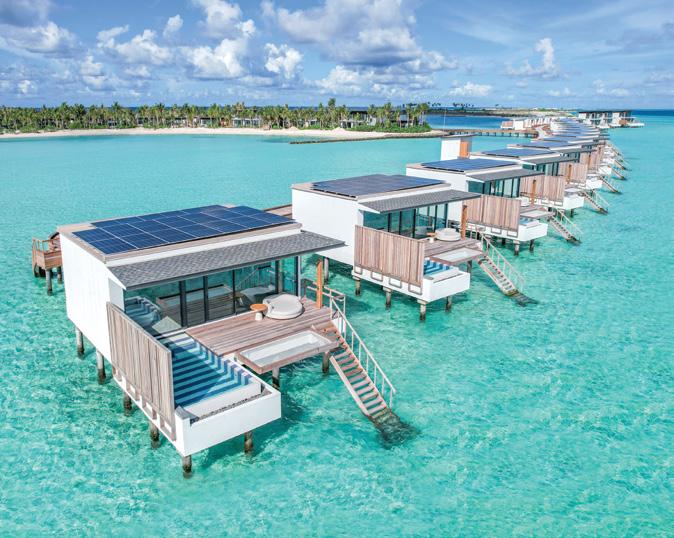

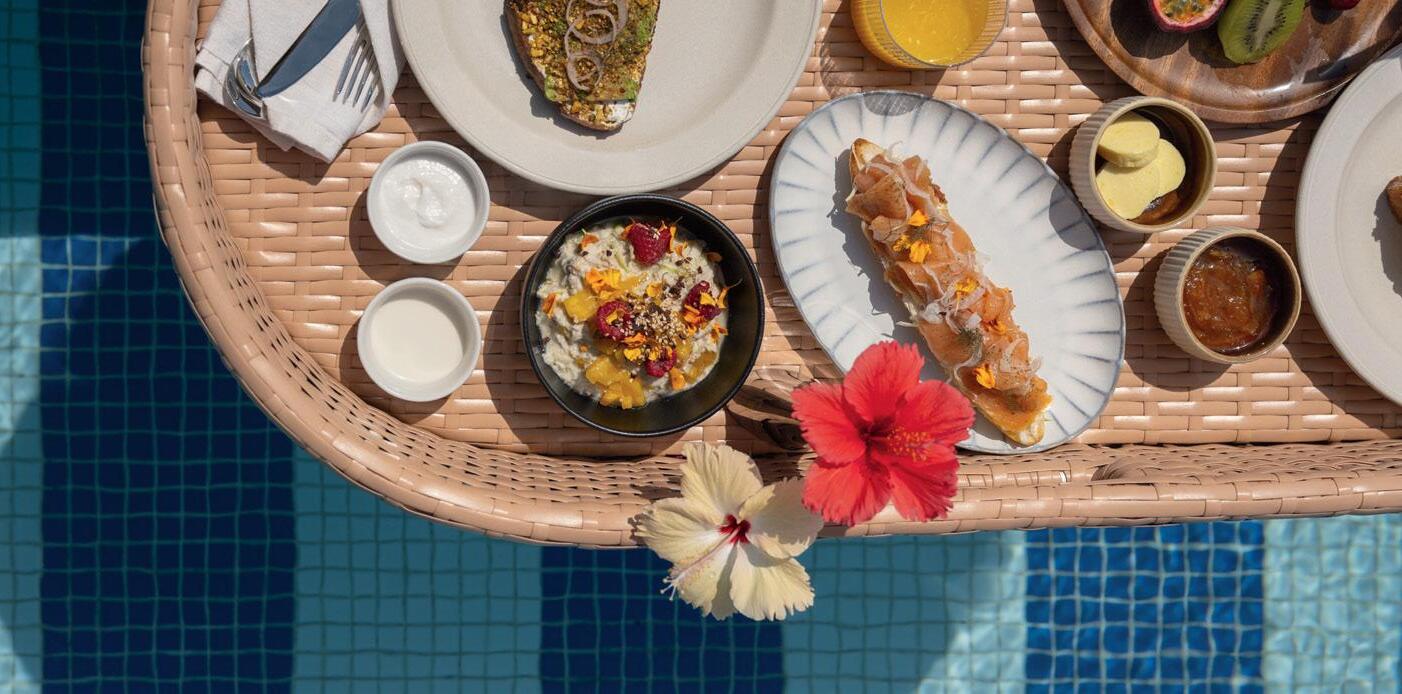

AirAsia Group flies up to 11 times weekly from Sydney and Melbourne direct to Kuala Lumpur, daily from Perth and during peak seasons from Gold Coast. Flights then head to Male from Kuala Lumpur five times a week.
Also, Thai AirAsia X flies four times weekly from Sydney direct to Bangkok. AirAsia Indonesia flies up to four times daily from Perth to Bali and four times weekly from Perth to Jakarta.
Air Asia’s new Premium Flatbeds are about the same cost as some economy fares on other airlines and they are super comfortable with full service in the Premium Flatbed section (though you pay for drinks and food).

Only 900 kilometers from the North Pole, Svalbard is home to vast glaciers, towering icebergs, windswept tundra and spectacular wildlife species, such as polar bears, walruses, Arctic birds and reindeer.
Quark Expeditions has the best trained team—which has explored the Arctic since 1991 and maintains the most diverse feet of small polar ships, including the technologically–advanced Ultramarine. Quark Expeditions also ofers the most of–ship excursions. After a day exploring Svalbard, Ultramarine guests can rejuvenate at Tundra Spa, relax in the sauna with foor–to–ceiling windows, or enjoy the fnest cuisine at Balena Restaurant or Bistro 487

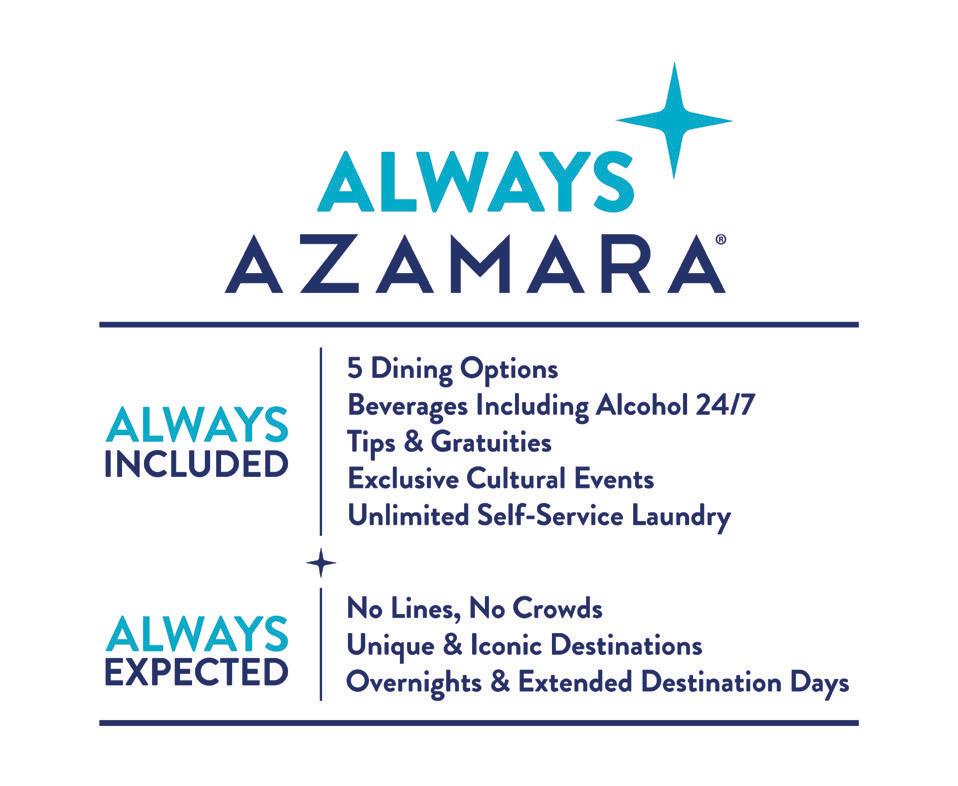

SINGER - SONGWRITER

“This Monster Brain toy was made for me by a fan in Cologne on my first ever European tour and it was inspired by my song of the same name. I think it is just crazy to know that there are fans on the other side of the world that would make something like this specific toy for a song that I released that connected with people in such a nice way. I got given the toy when I was in the middle of singing the song in Cologne and it was just a really special moment. It is a nice memento for me to have and I’ve kept it with me ever since.”
For new music and tour news keep an eye on instagram.com/miawray
